This document discusses the significance of psychological testing in employment contexts, highlighting how tests are used to assess job candidates' qualifications and predict their job performance. It emphasizes the importance of test validity and reliability to ensure fair and effective evaluation processes, noting the potential legal implications of poorly designed tests. Additionally, it addresses the growing trend of integrating various assessment methods within organizations for selection, promotion, and training purposes.
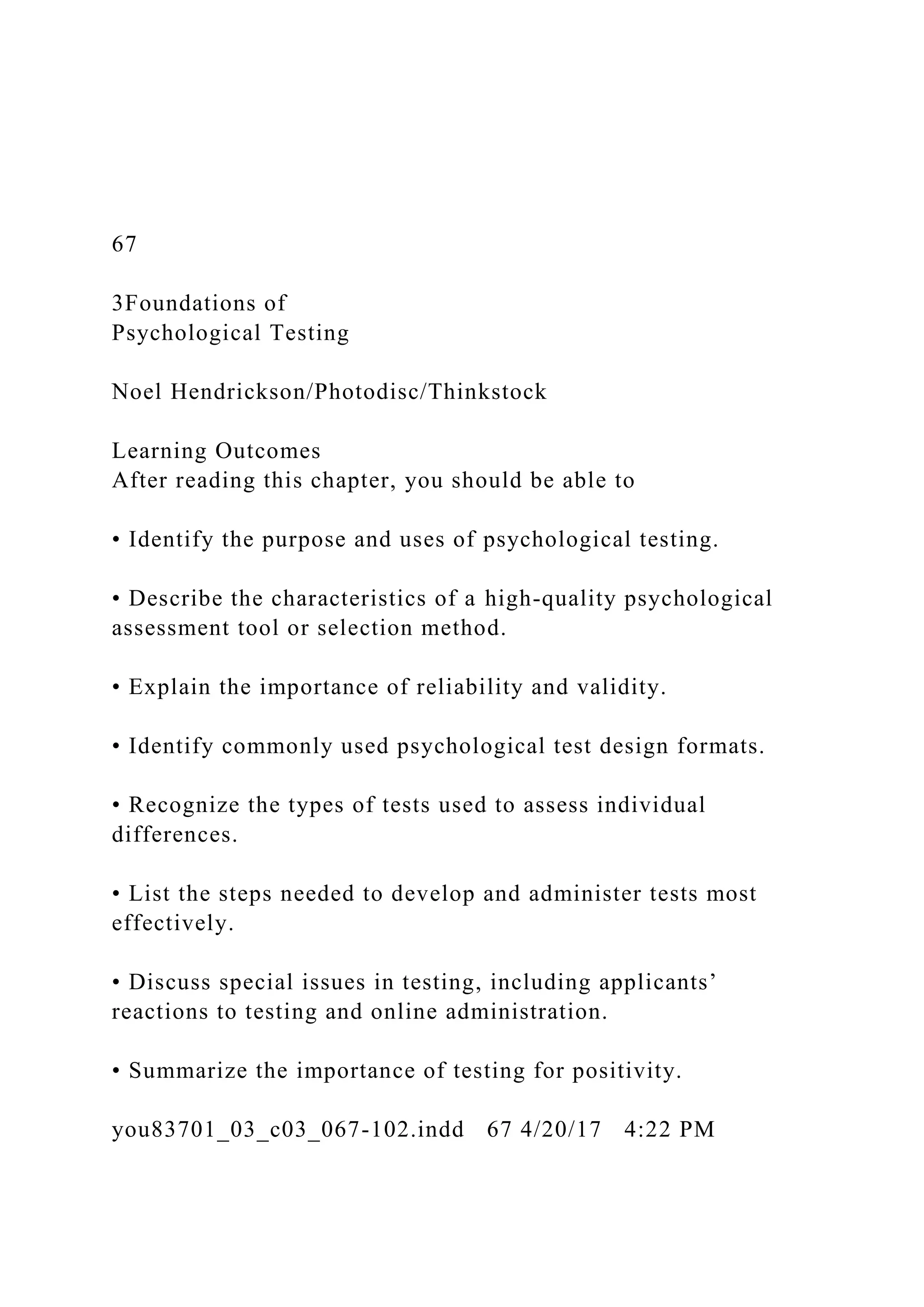

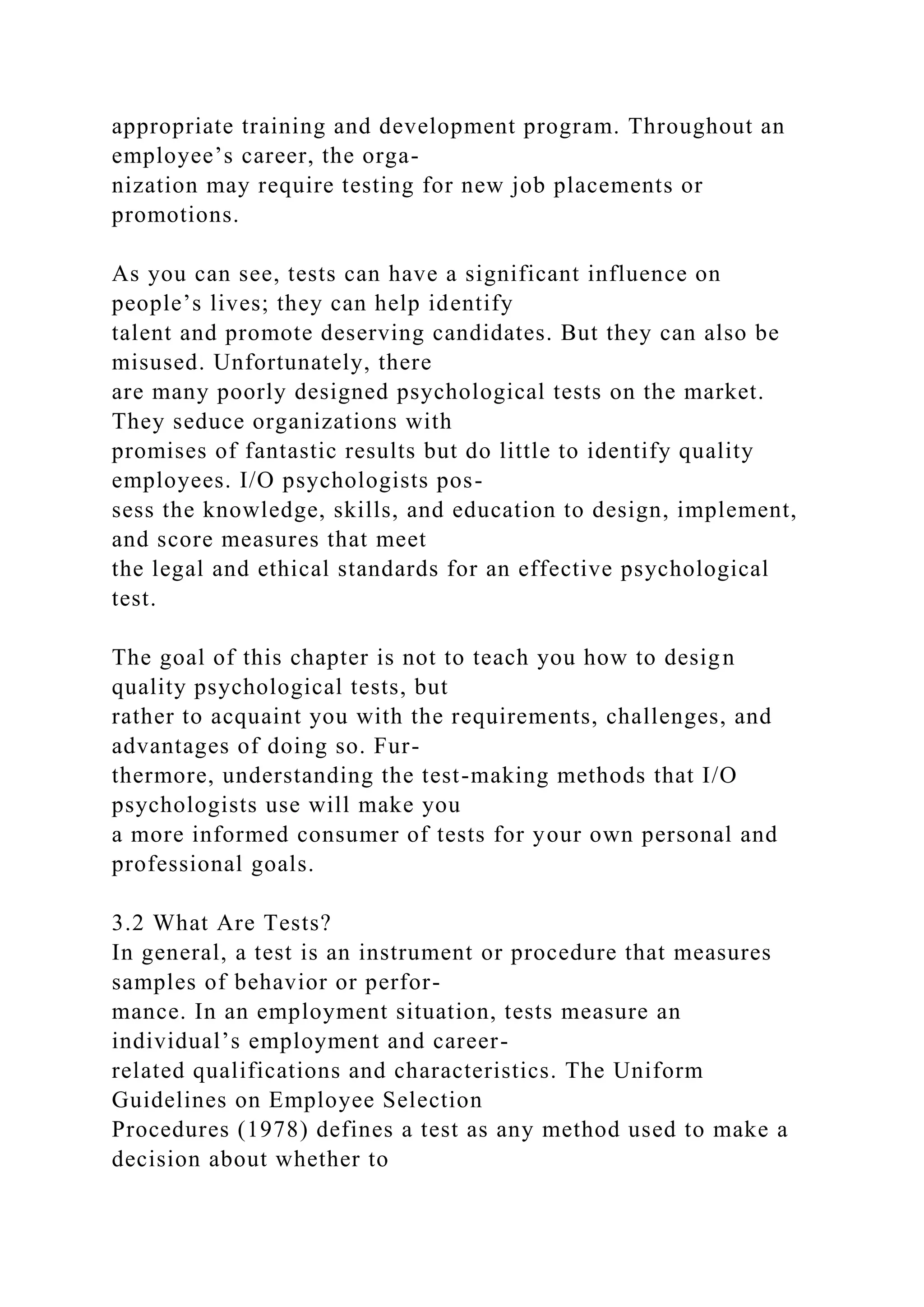

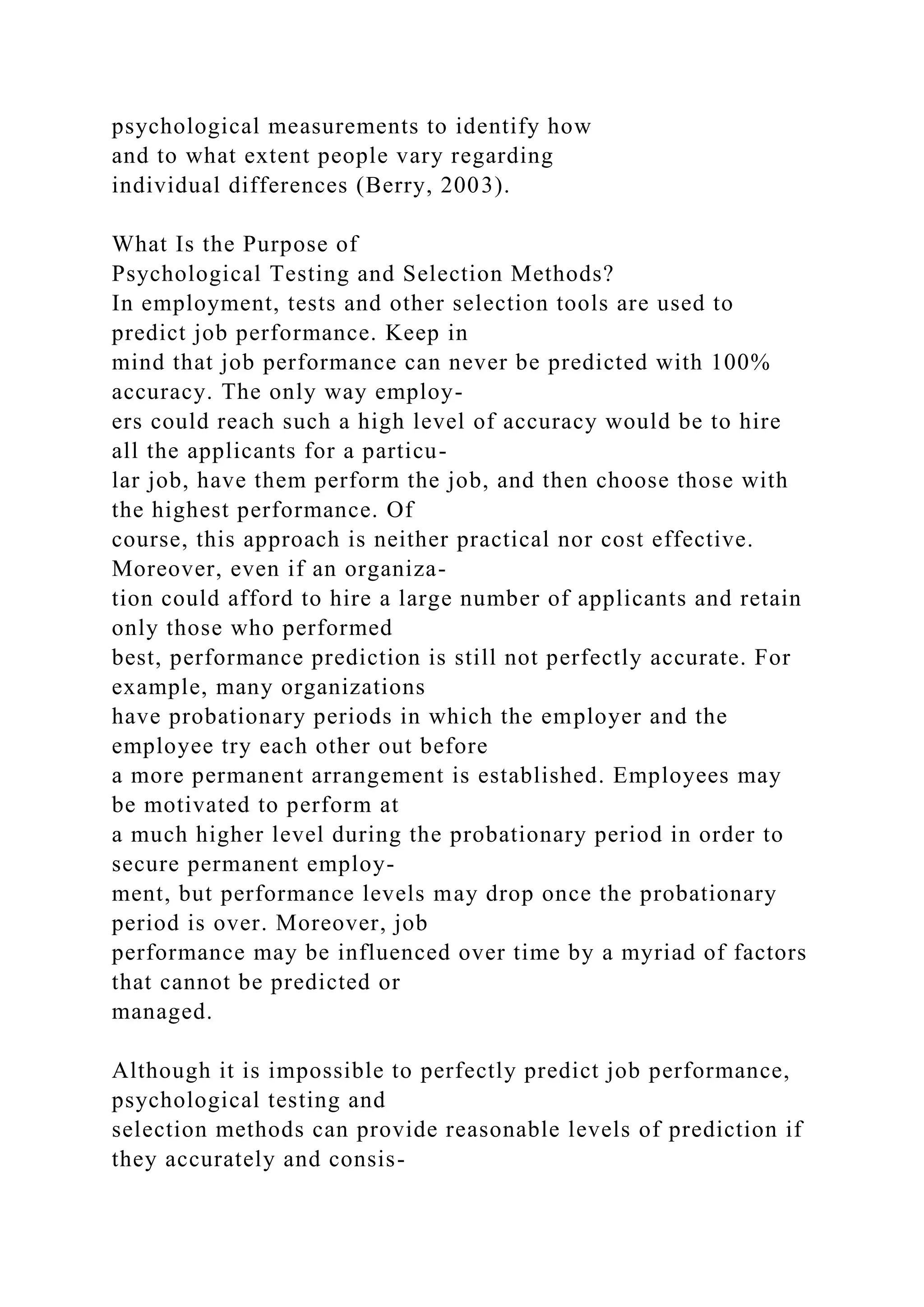

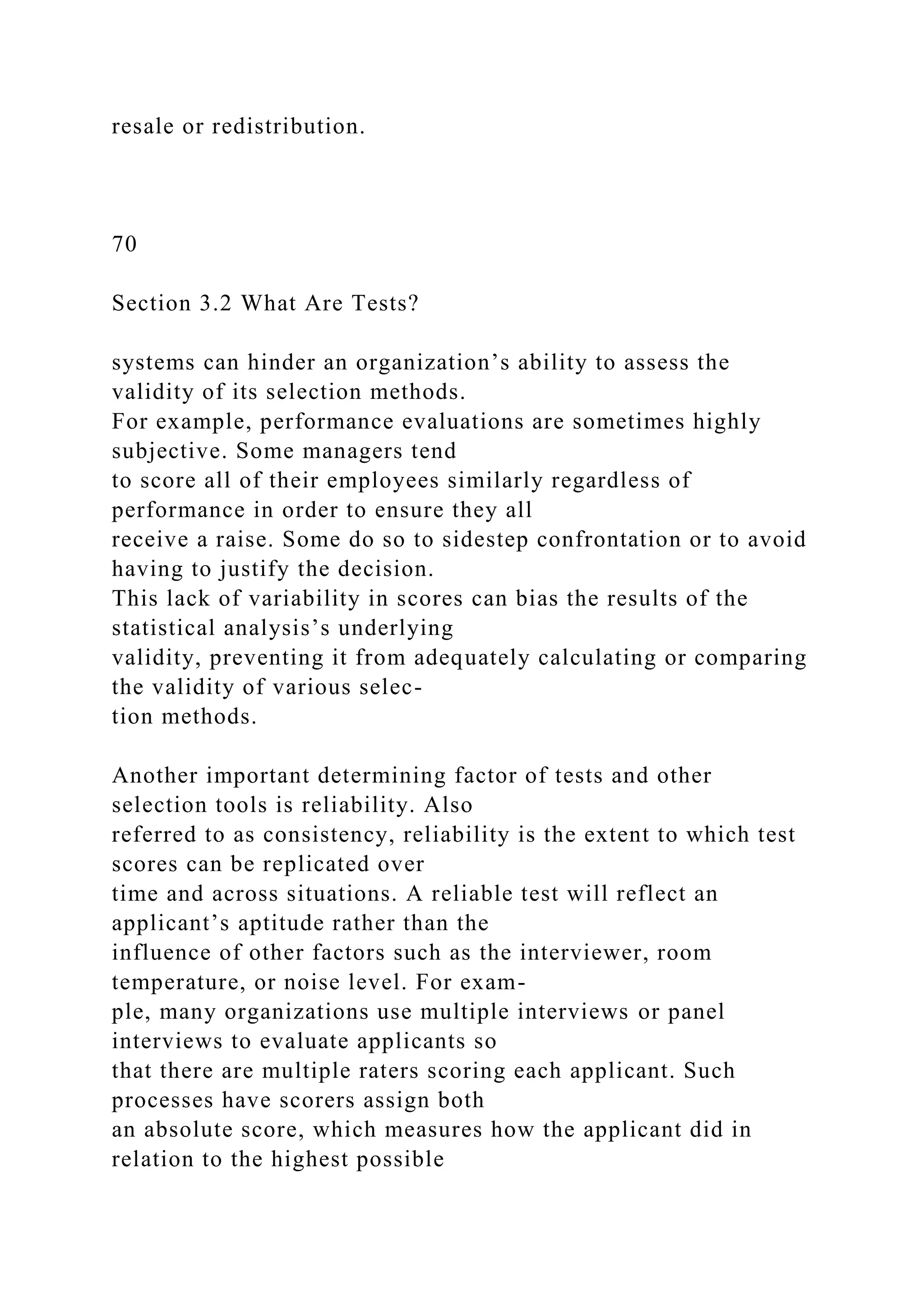

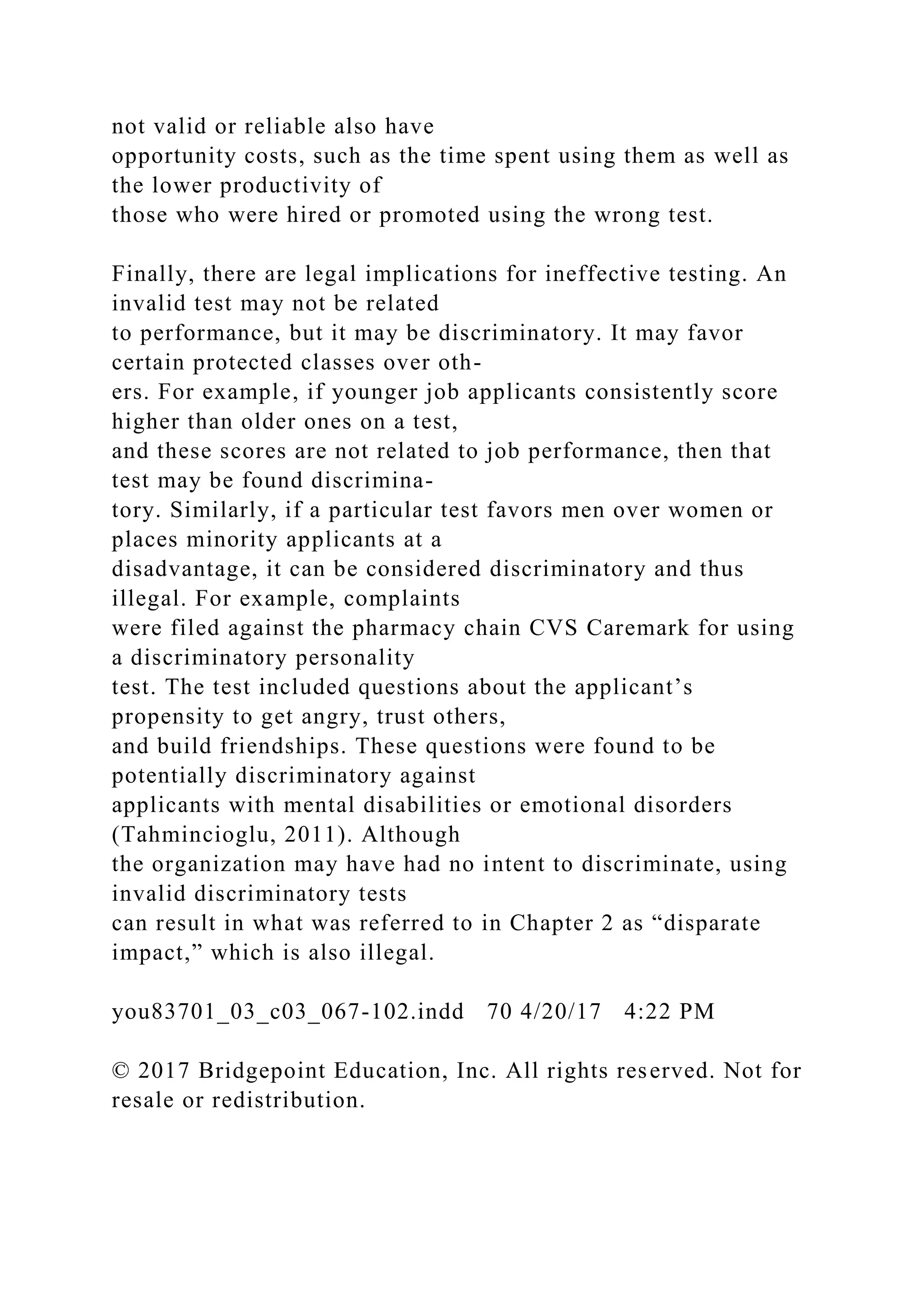
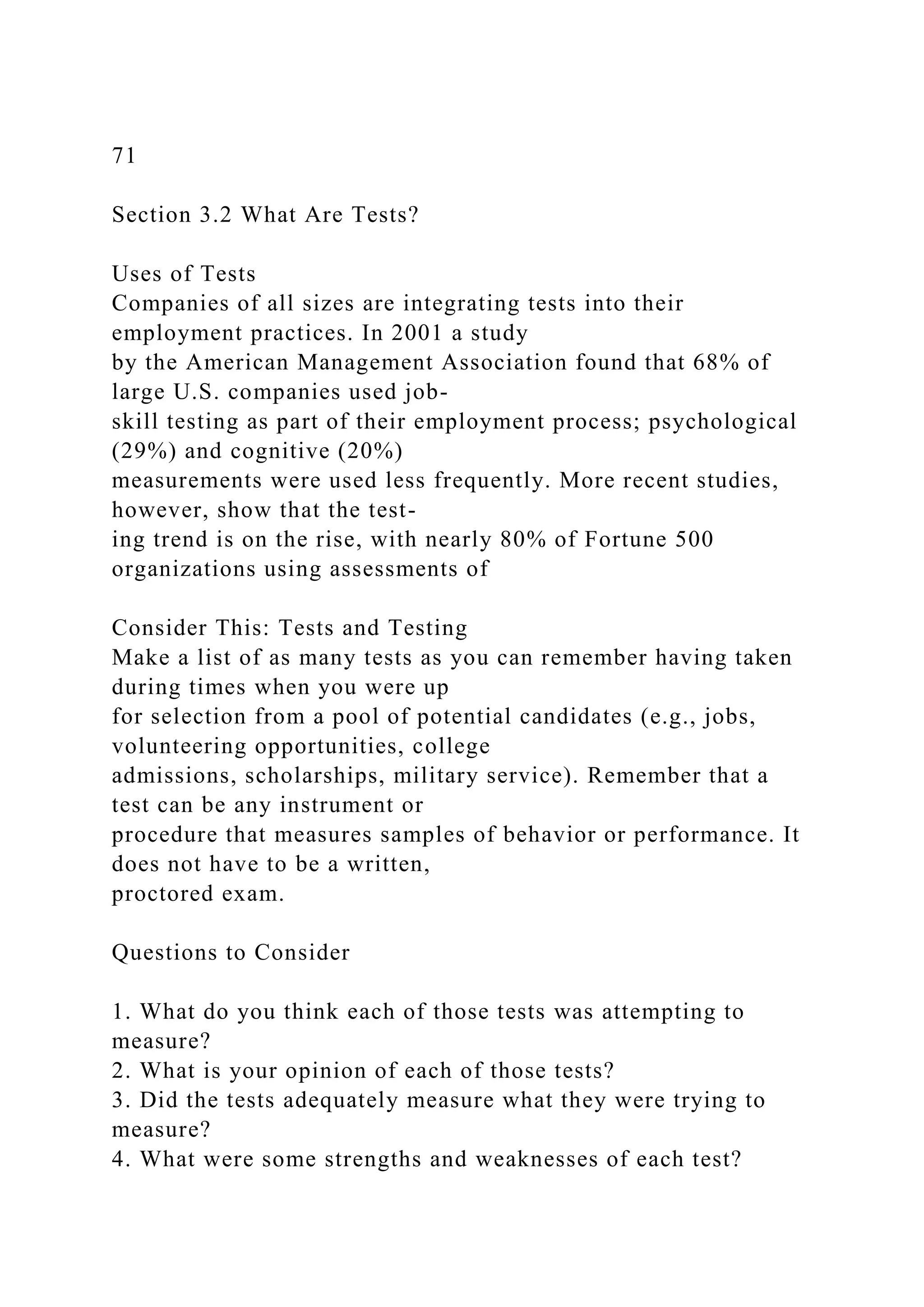
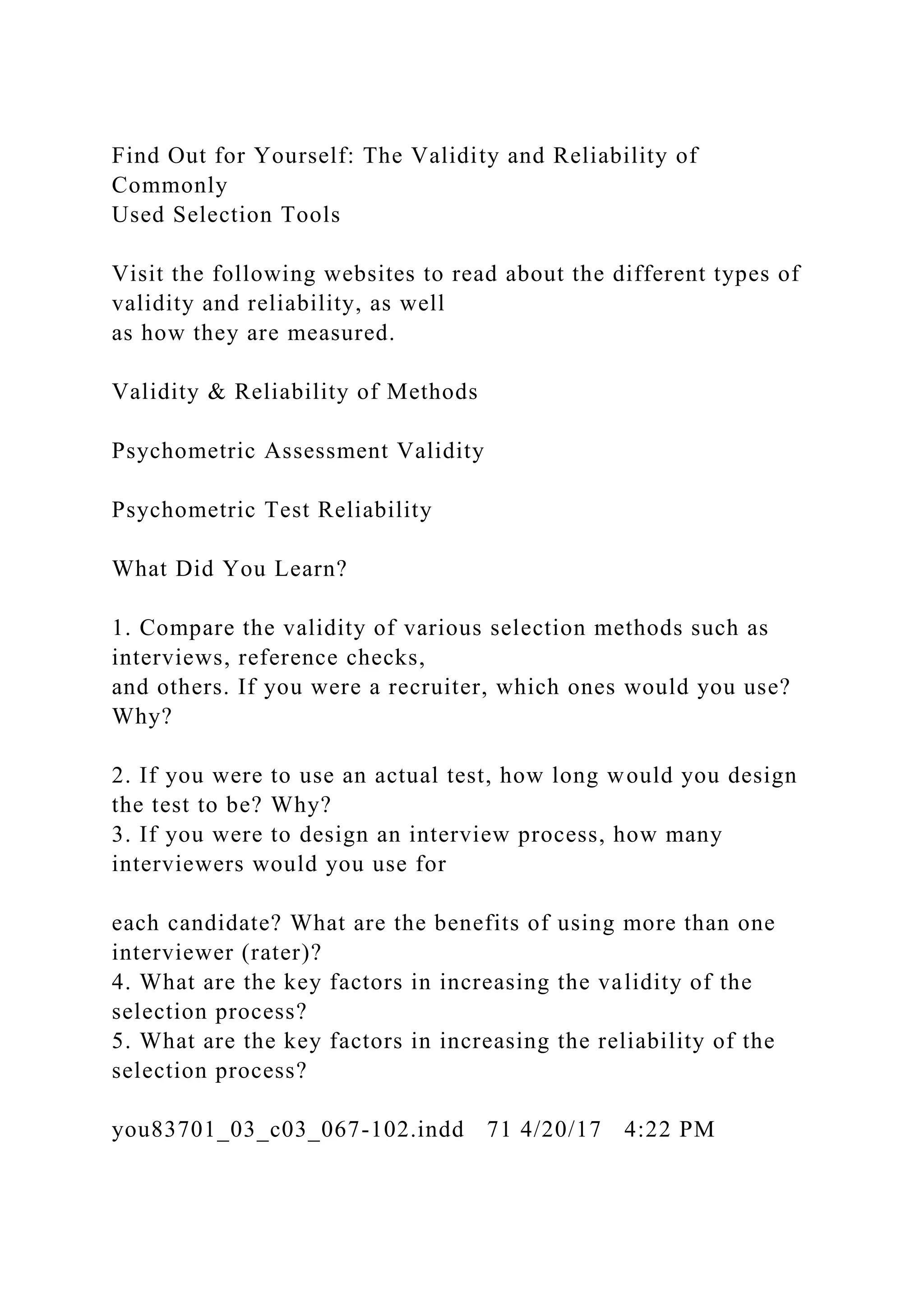
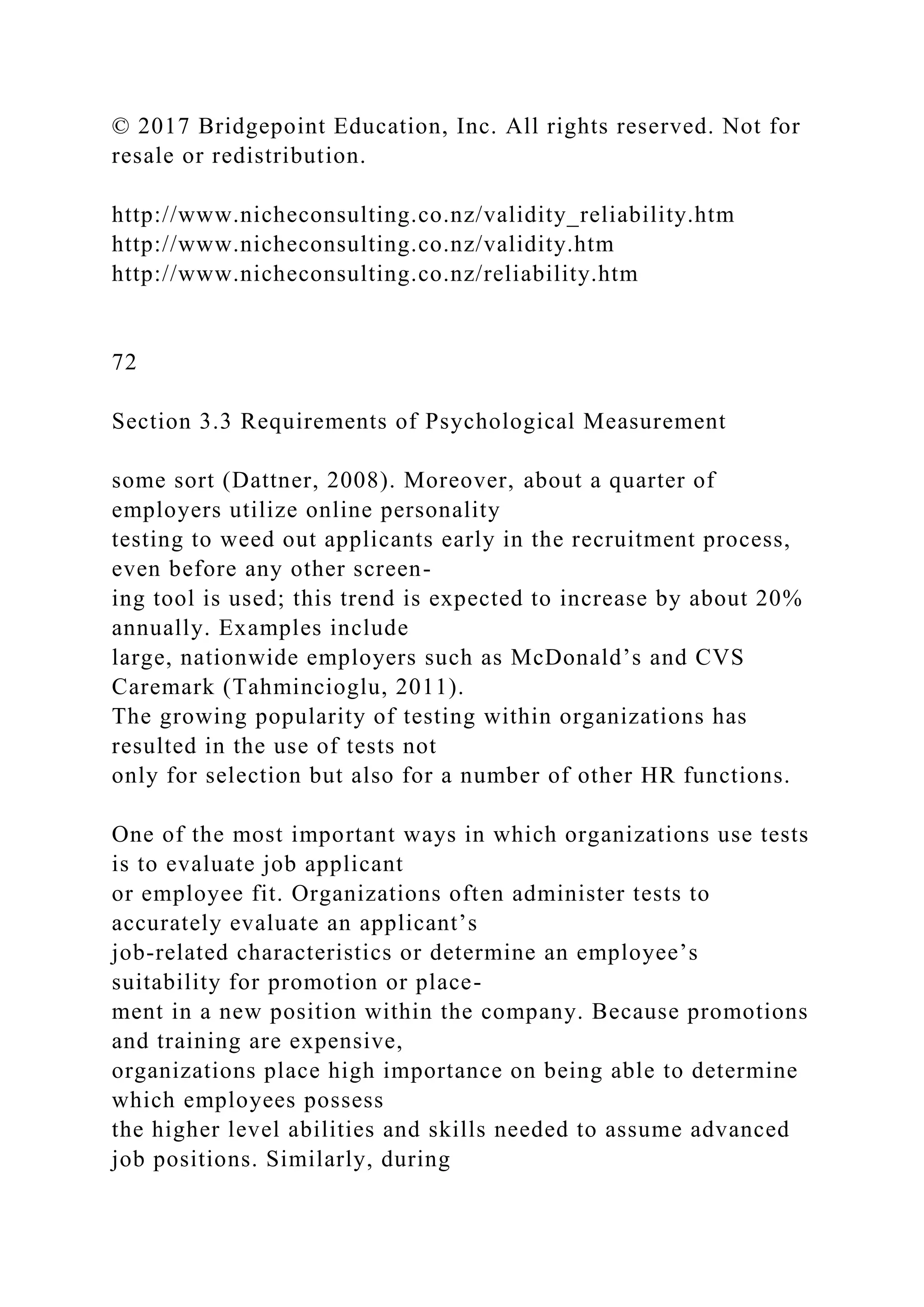
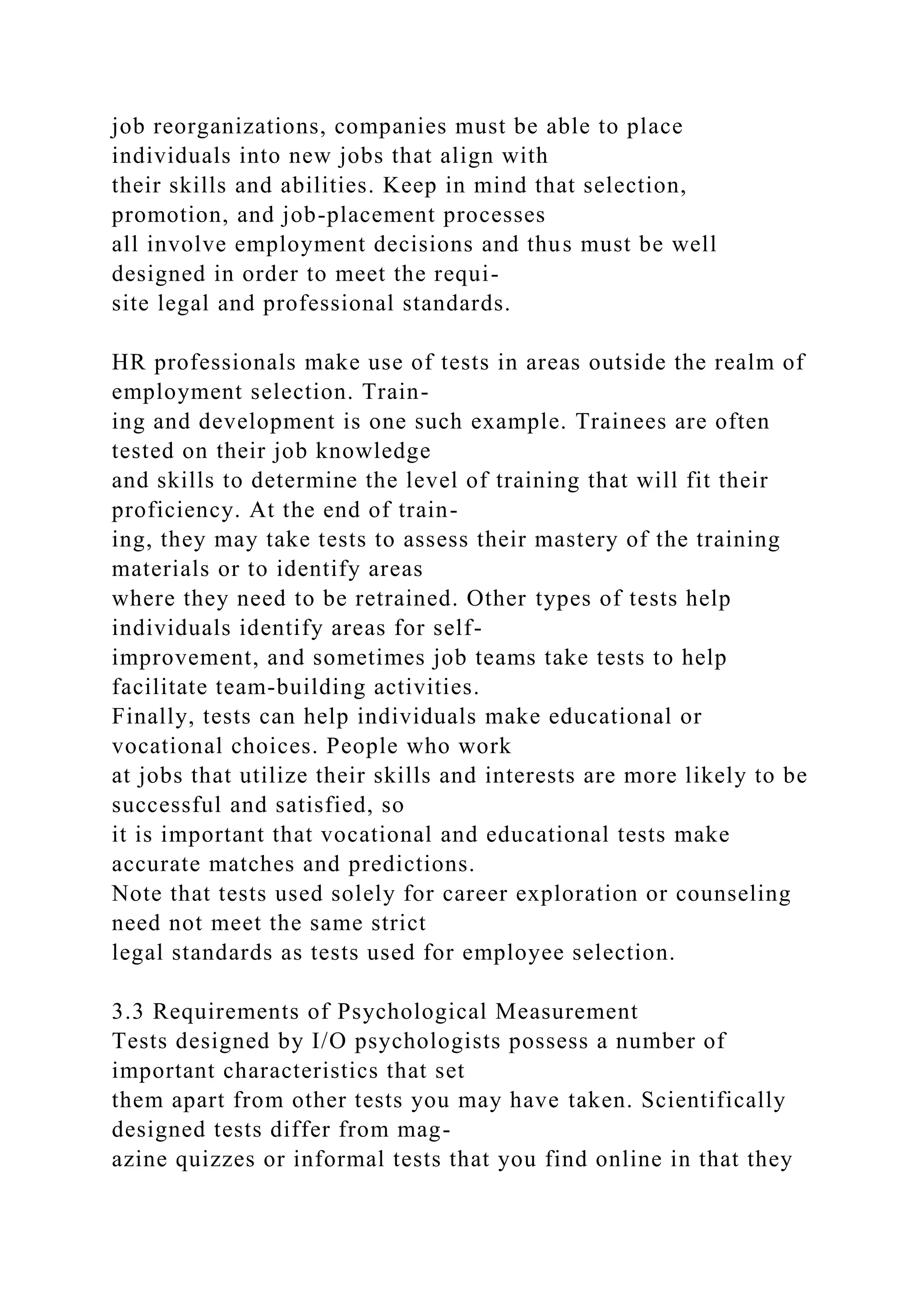
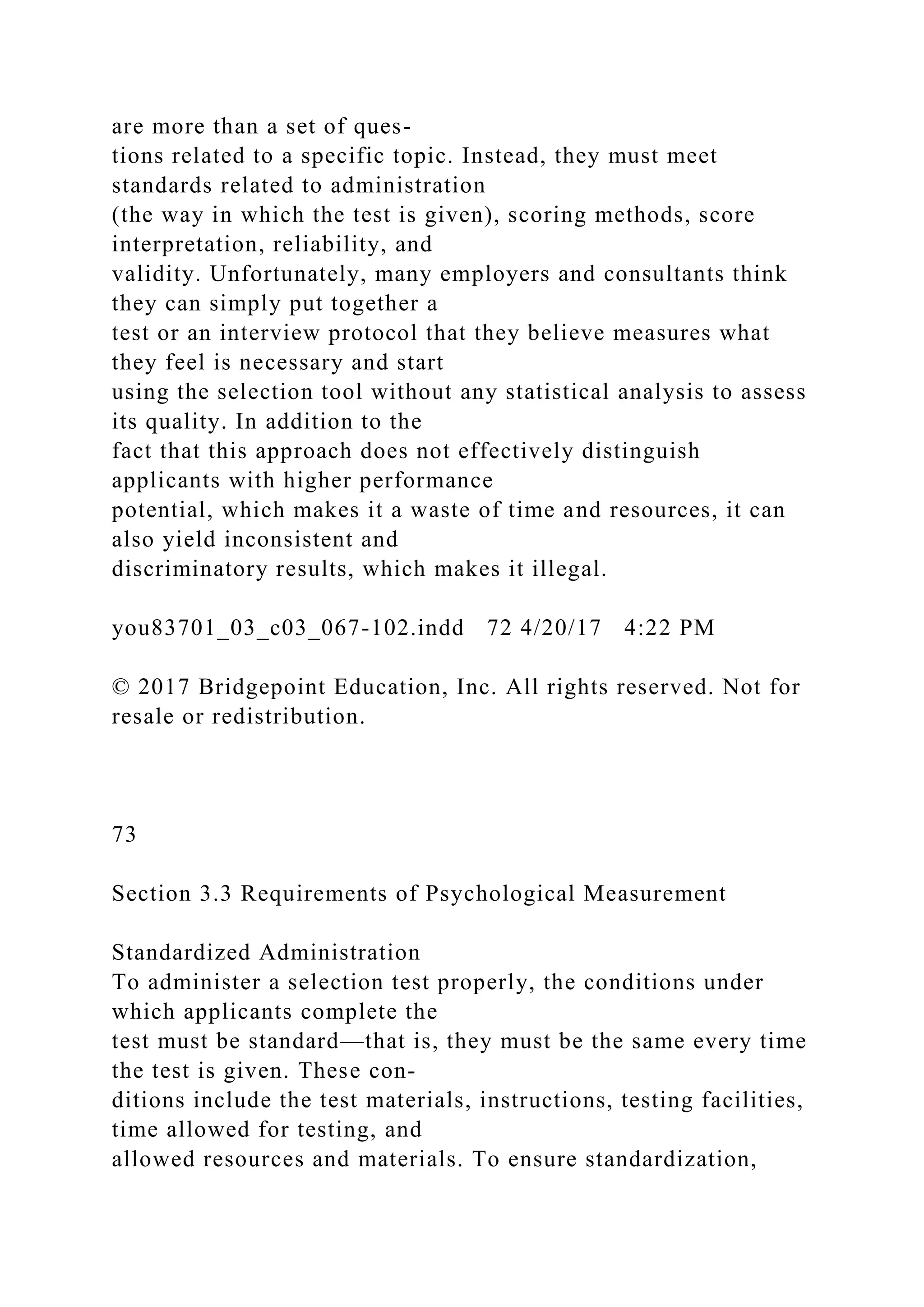
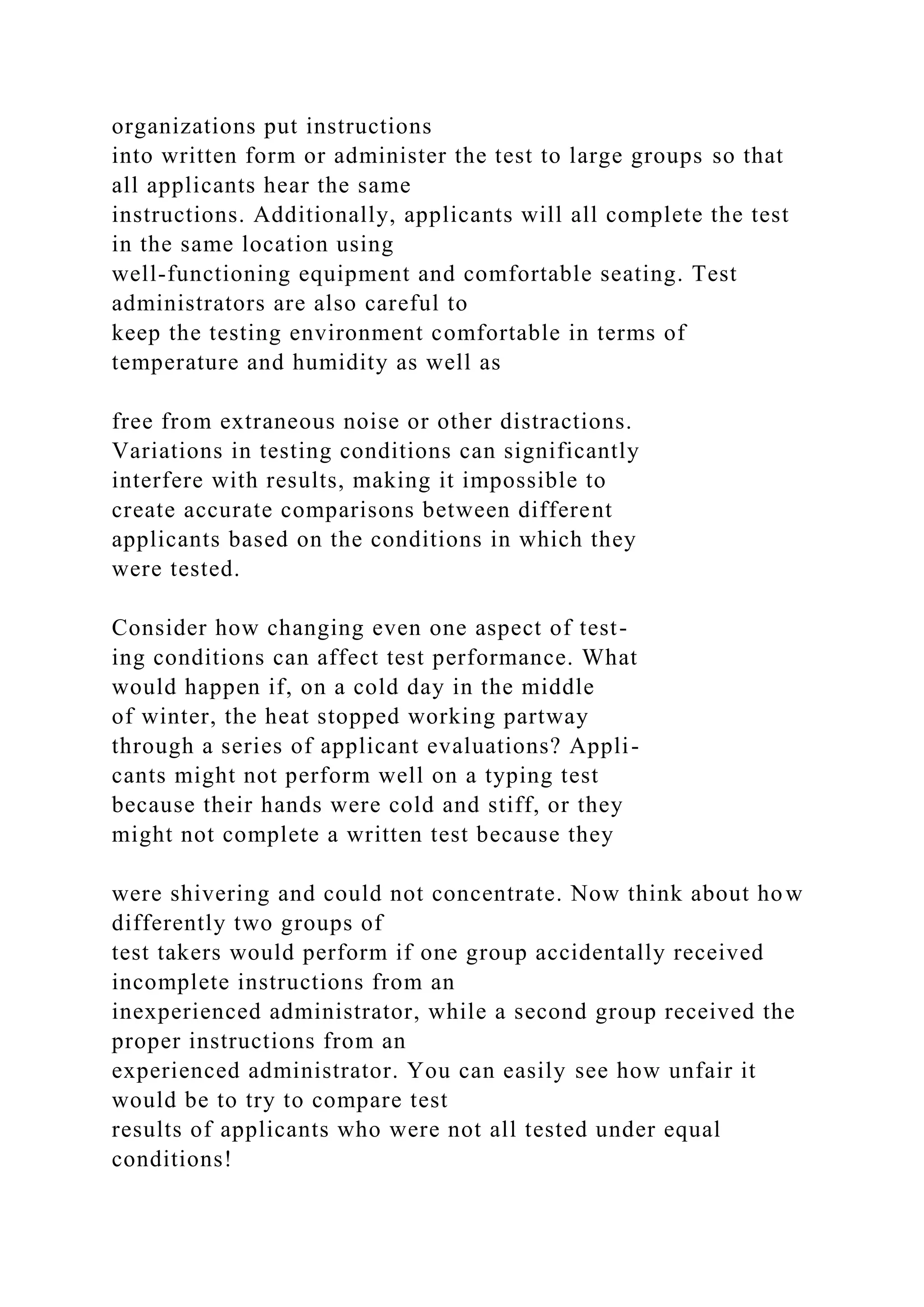
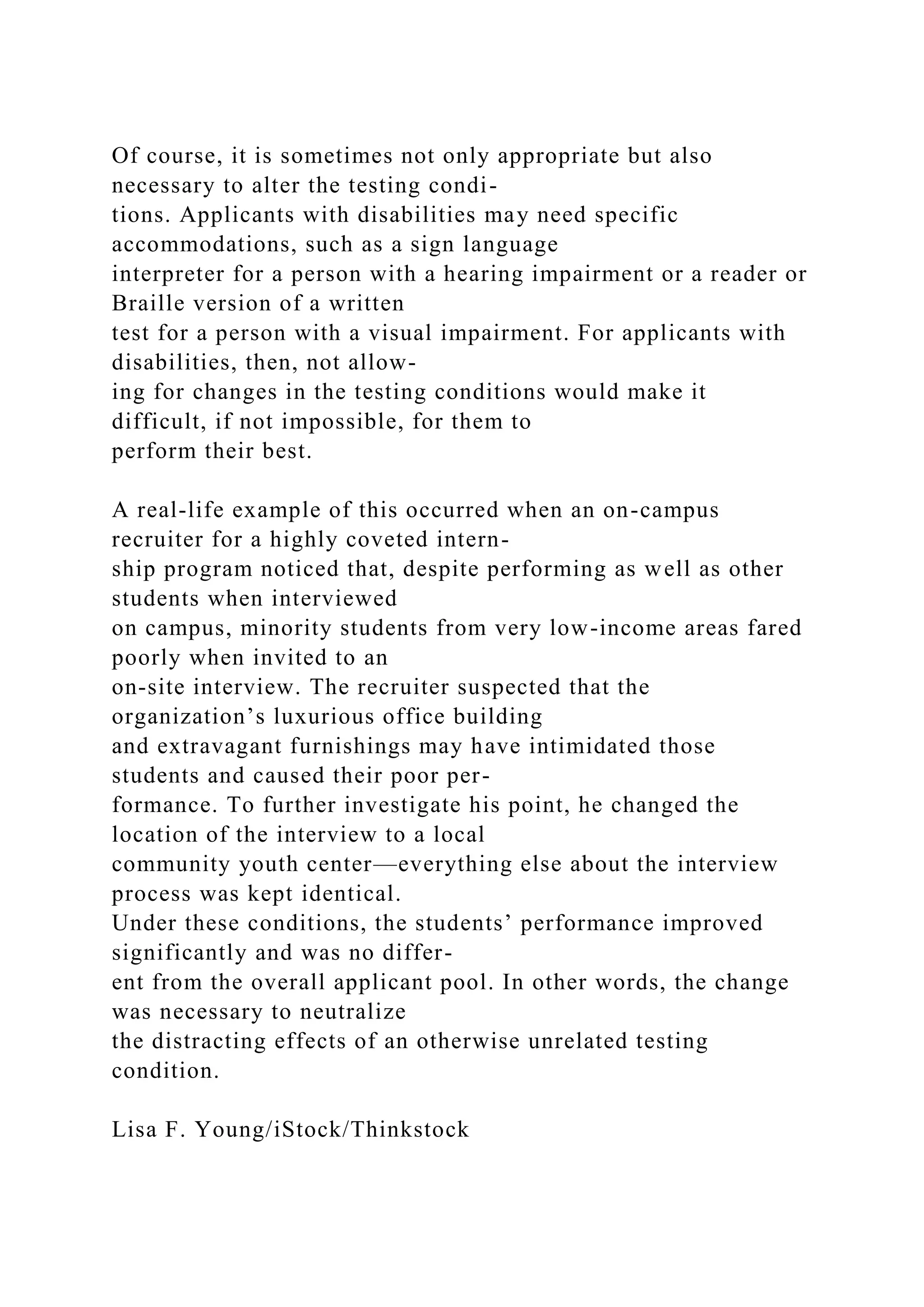

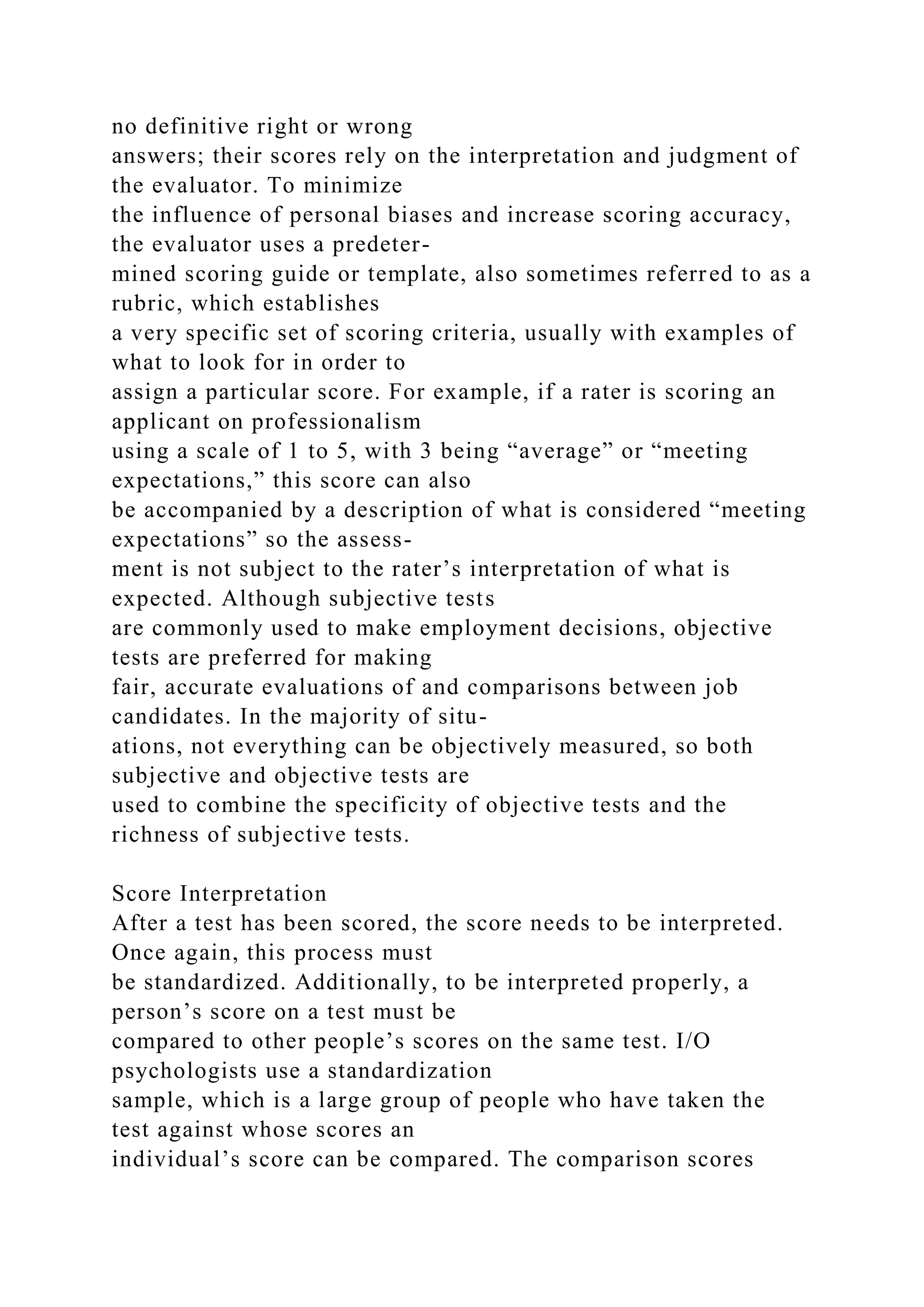
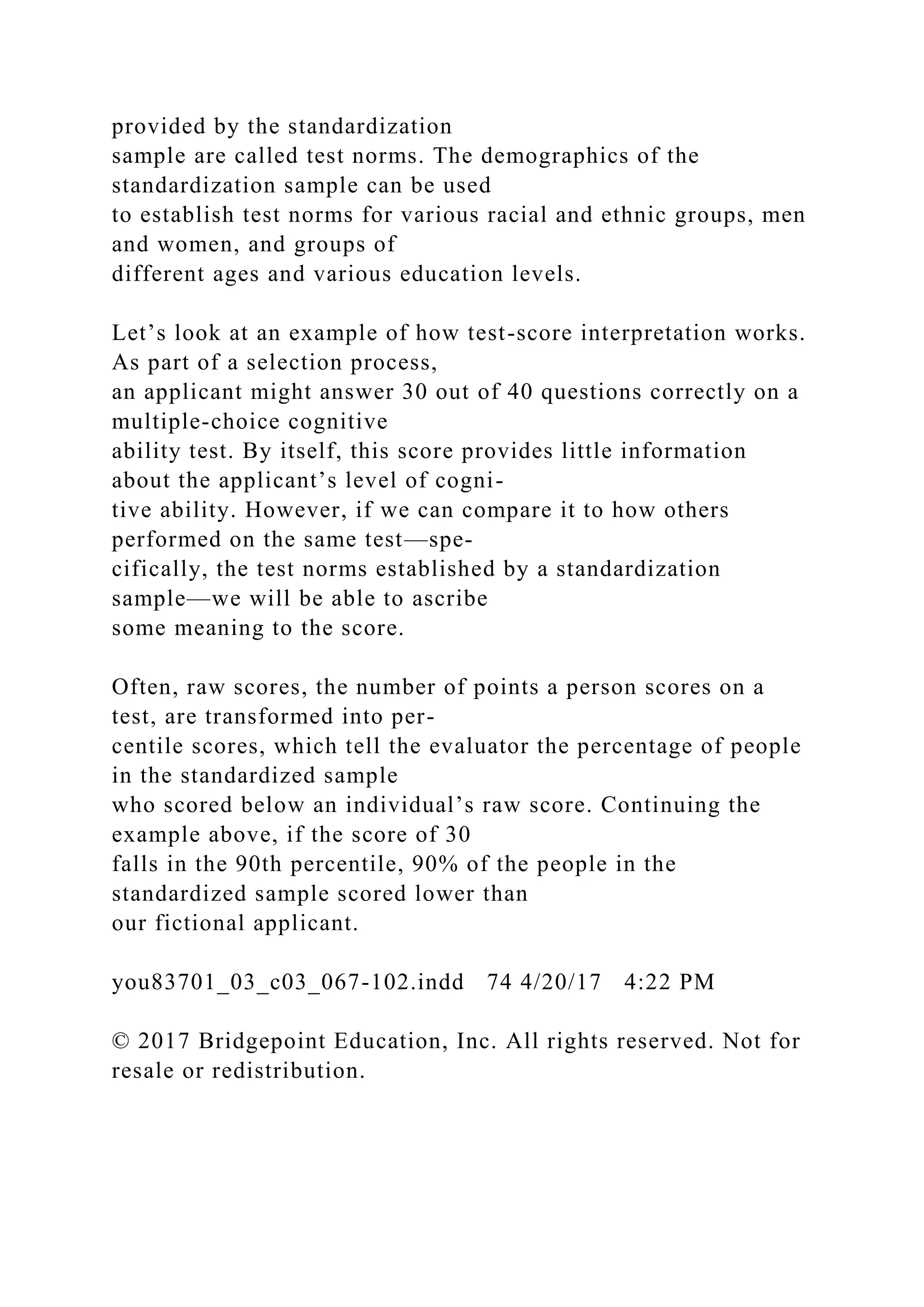
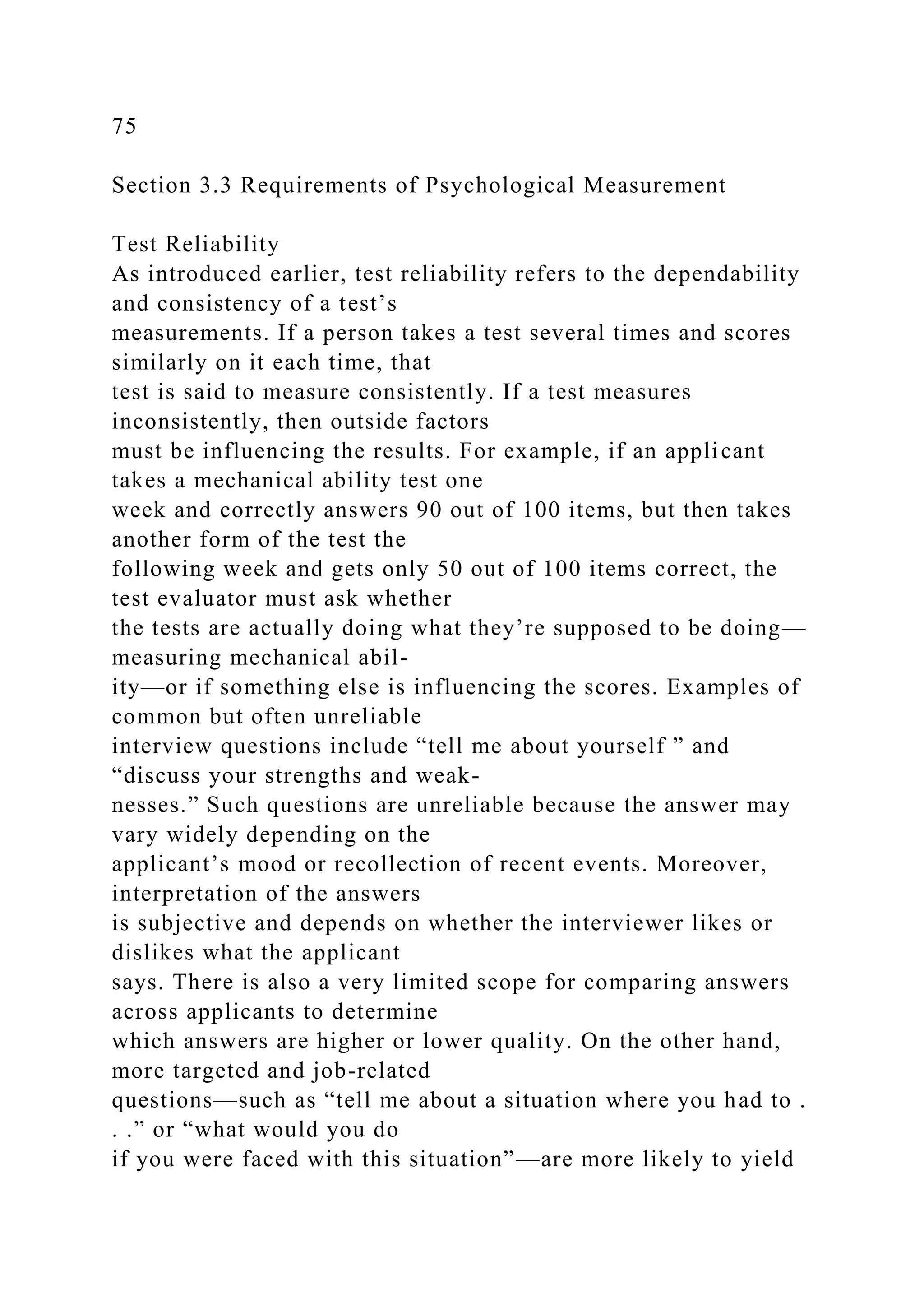
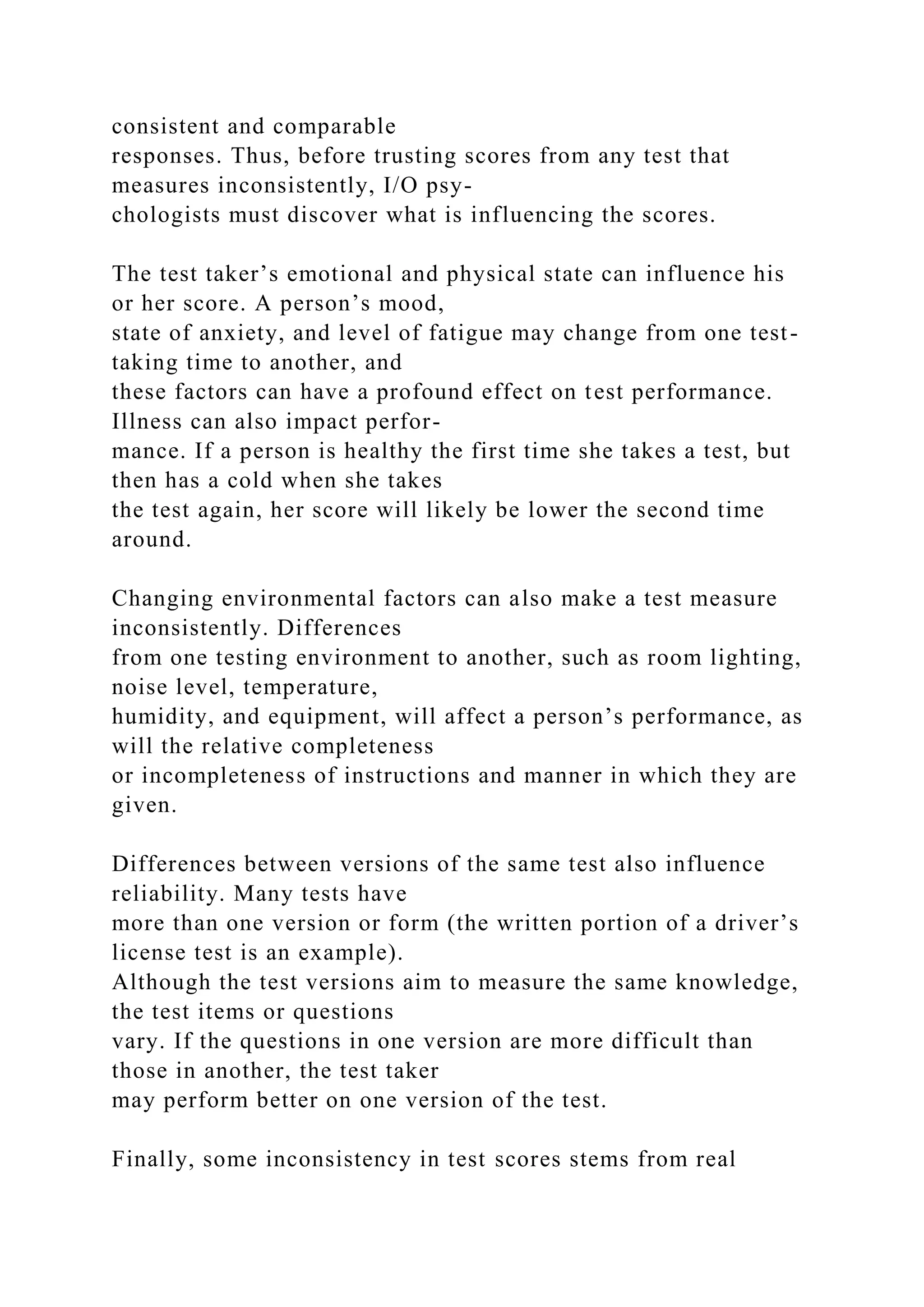
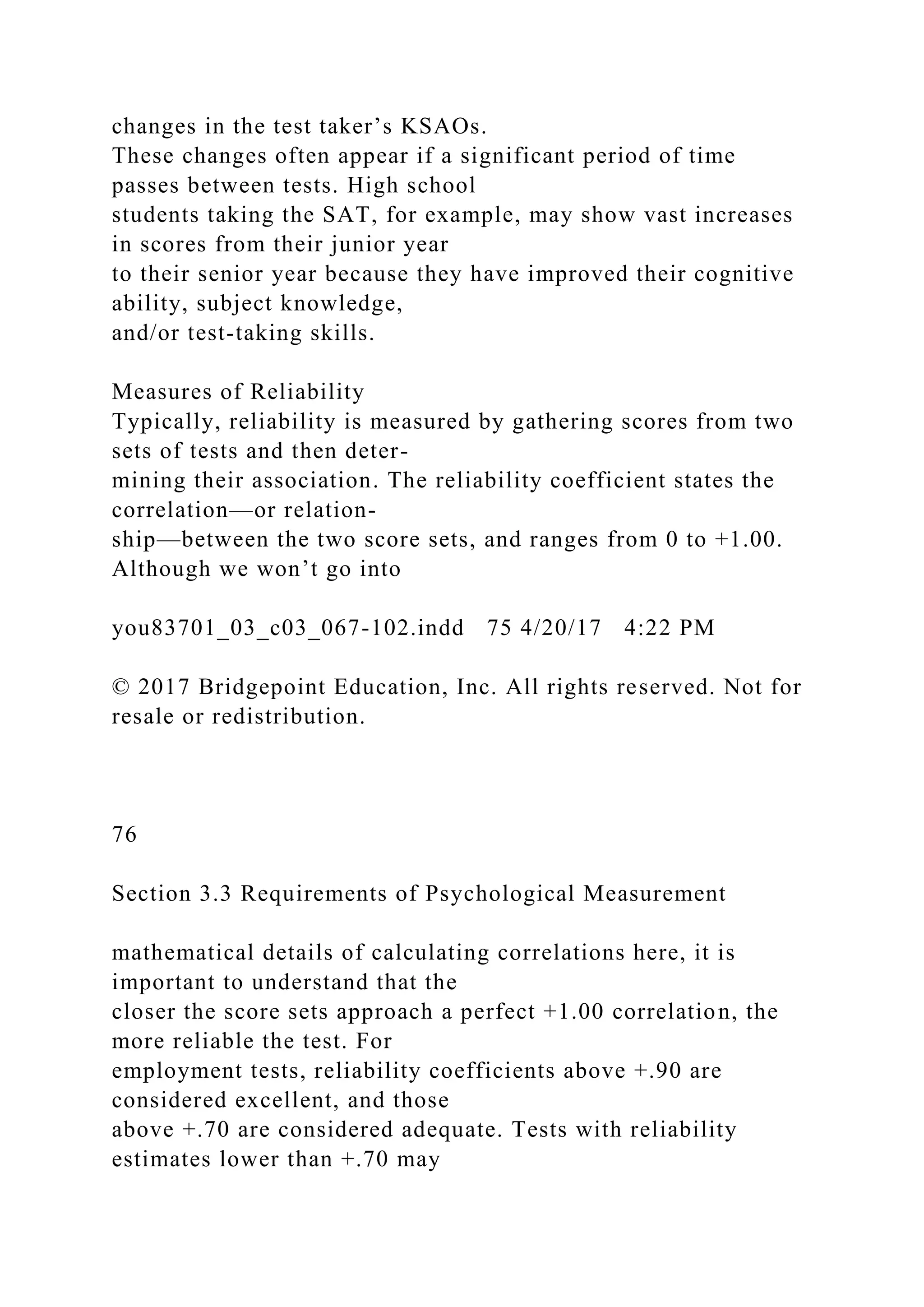
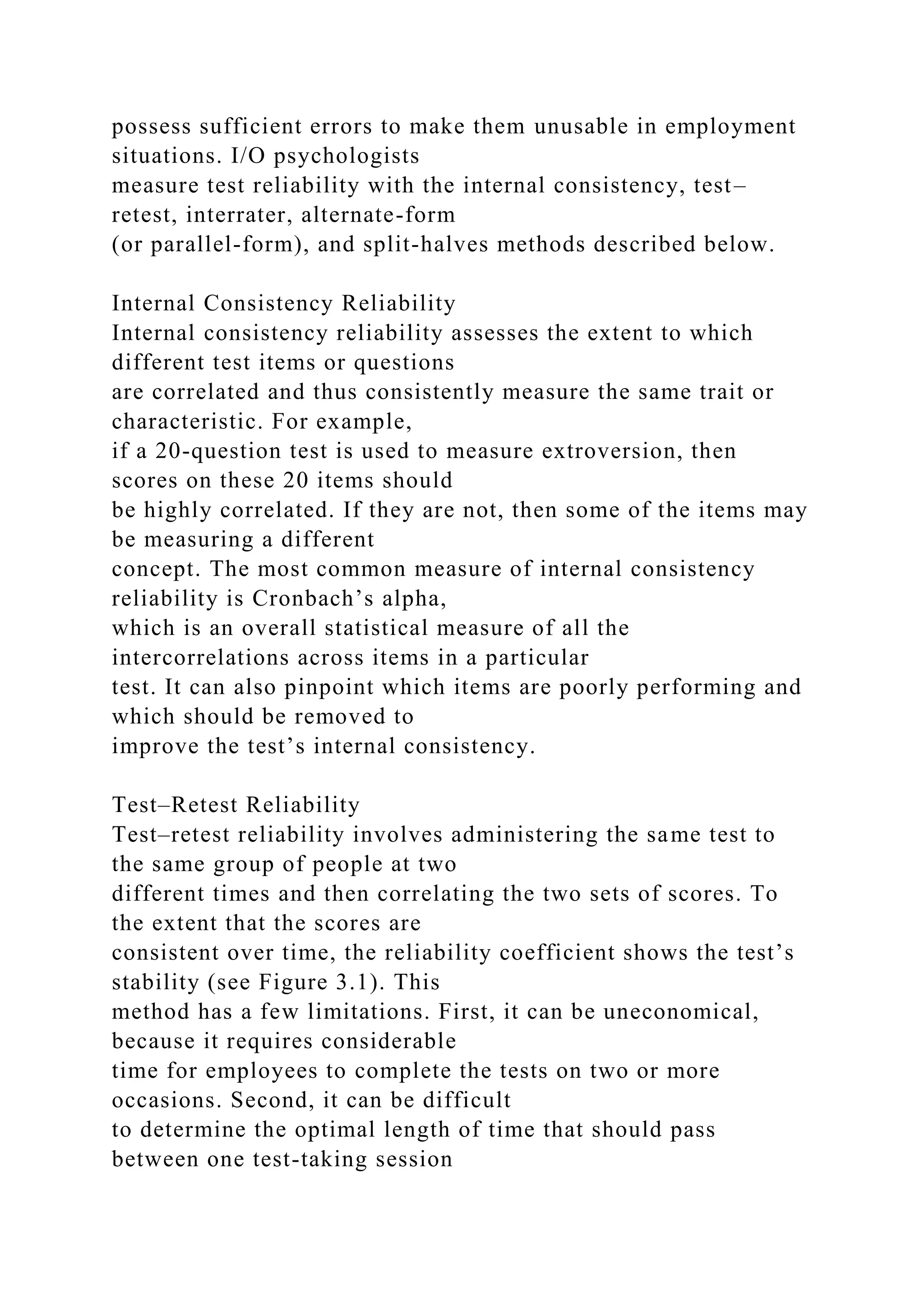
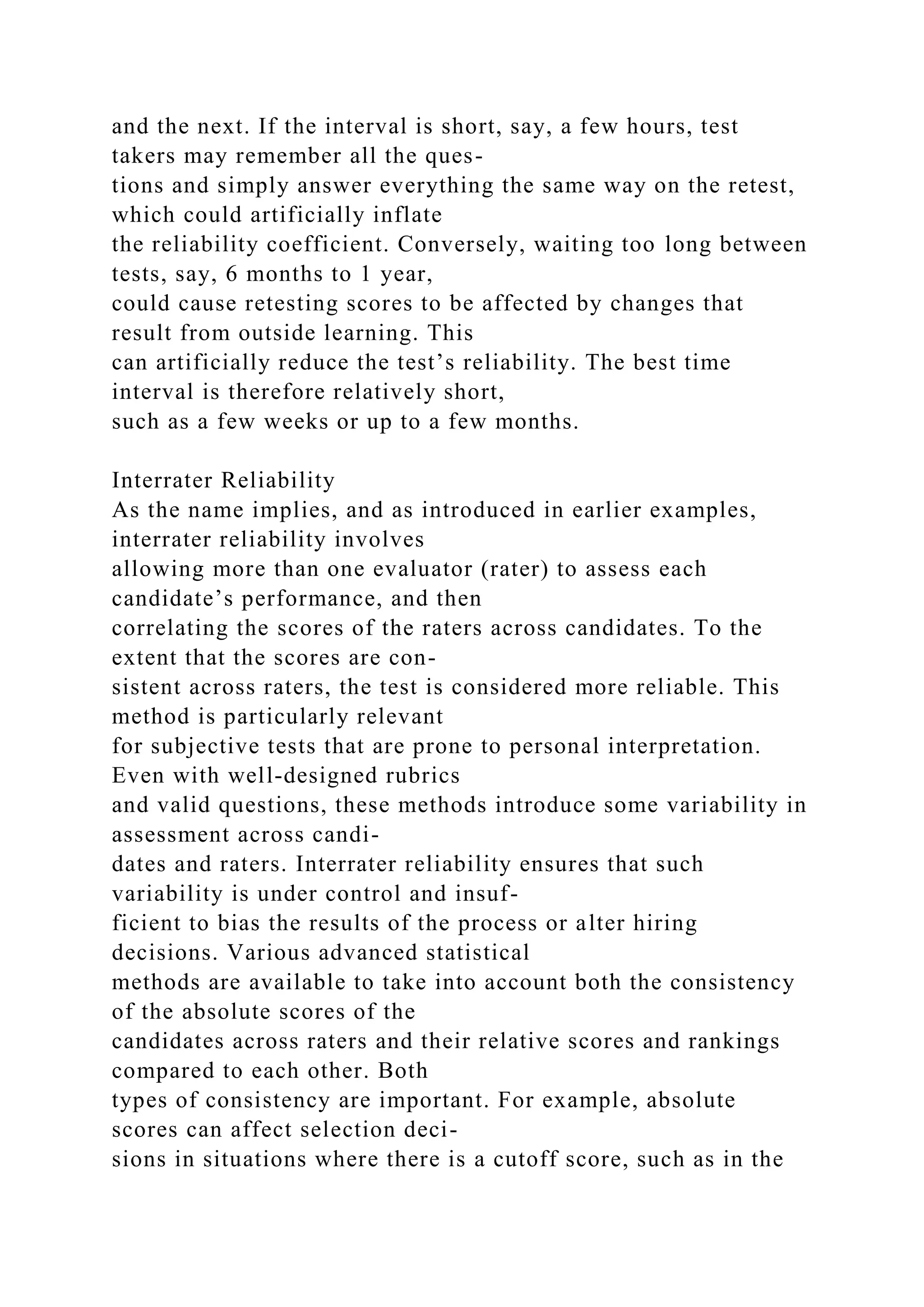
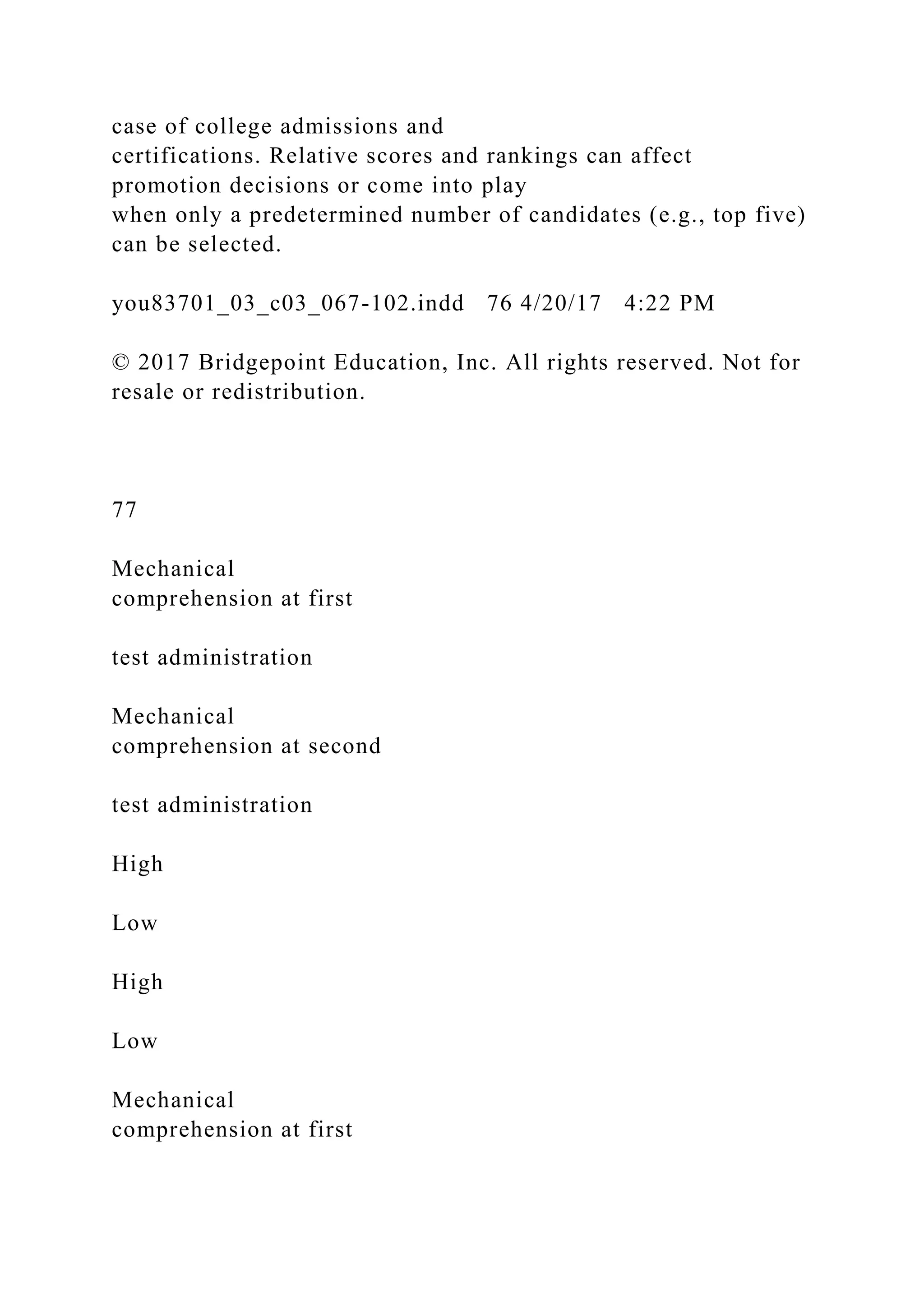

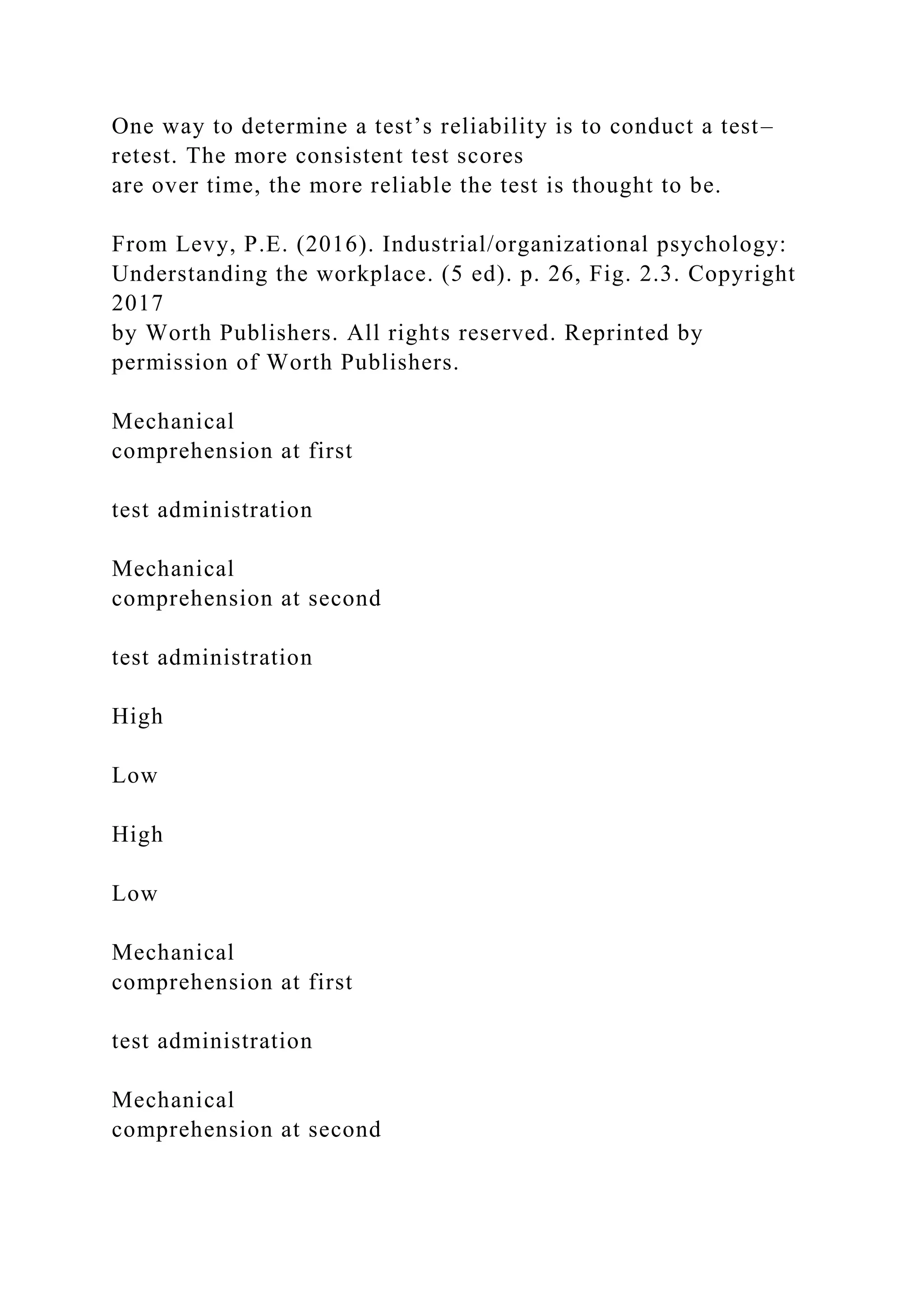
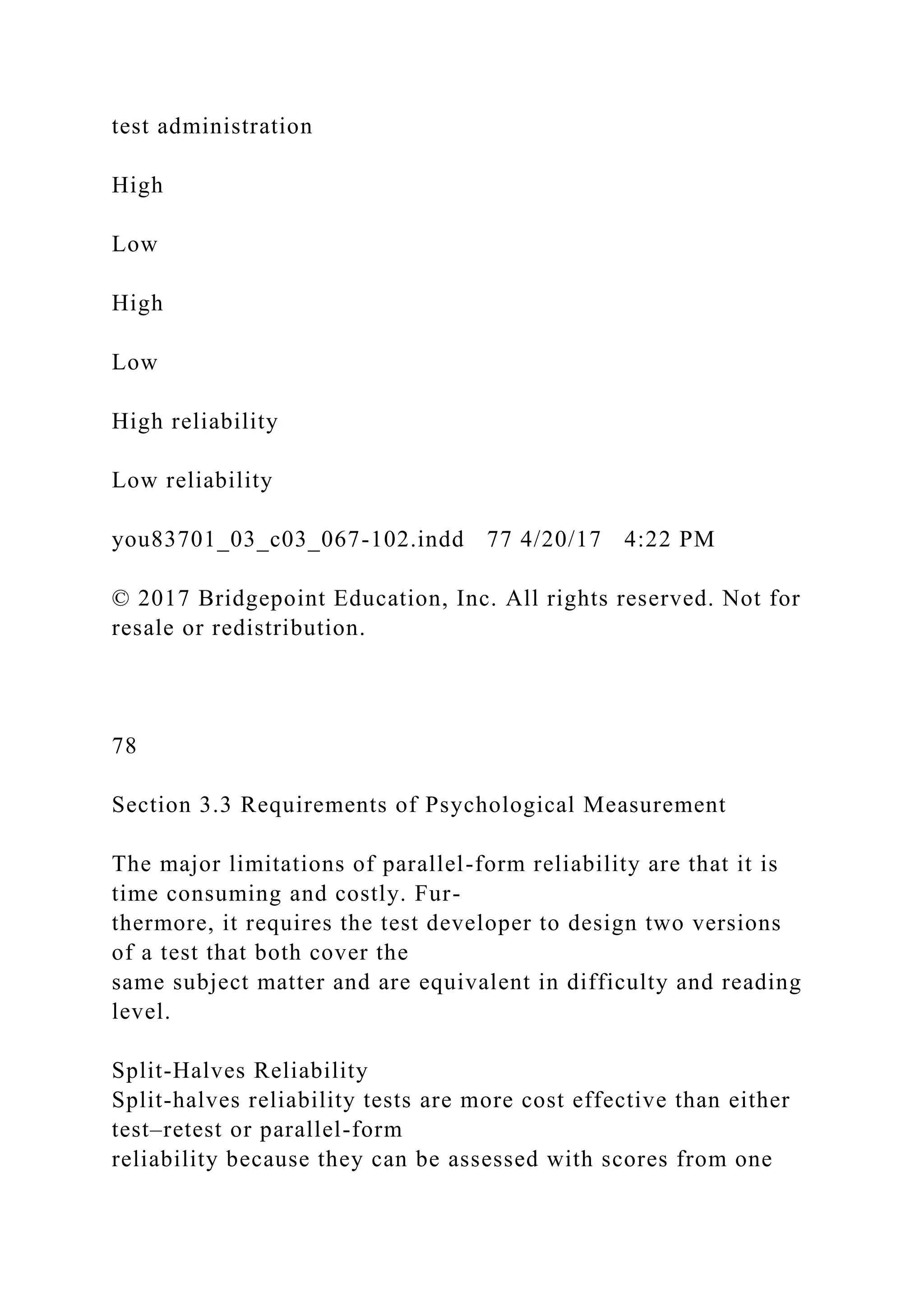
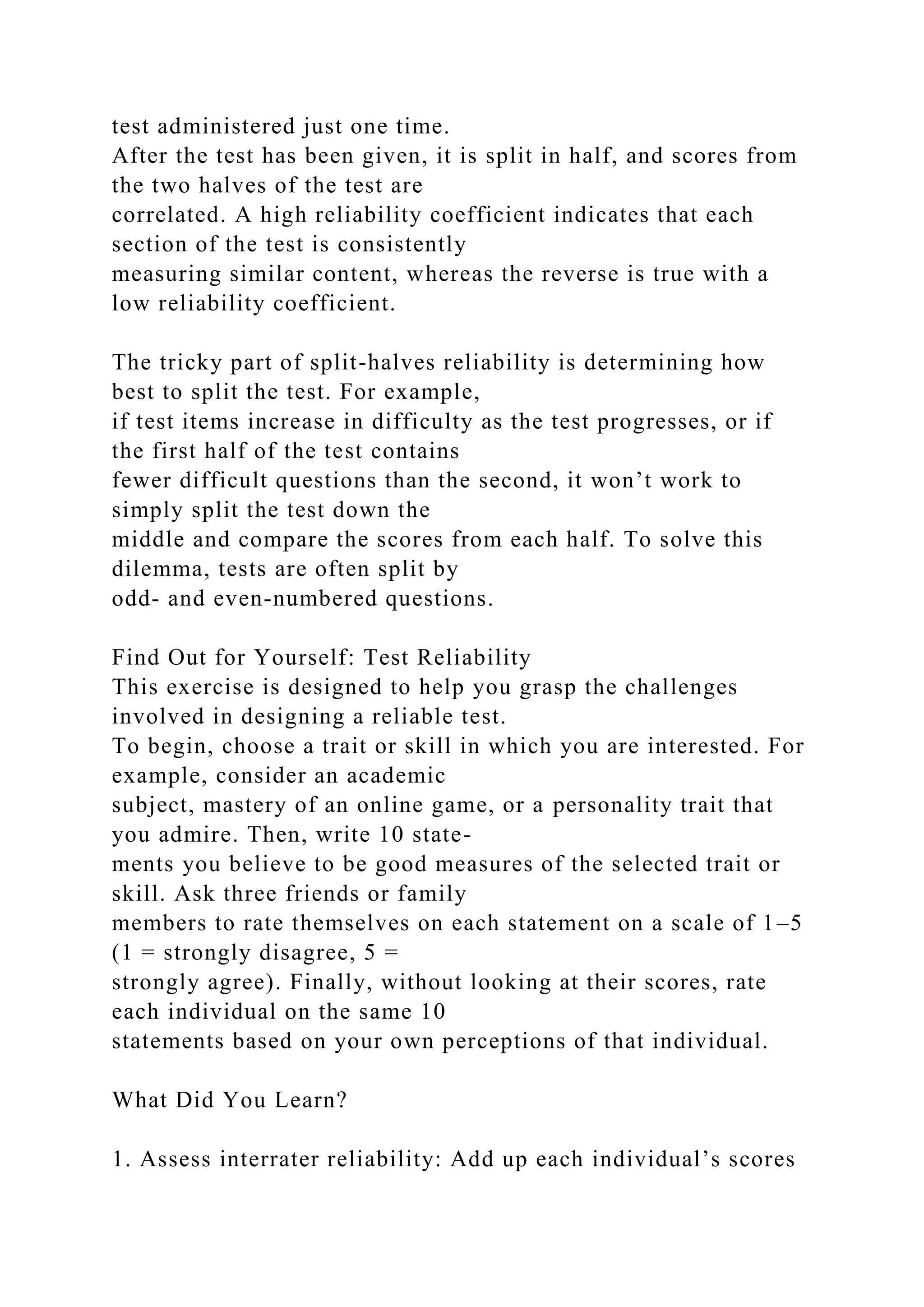
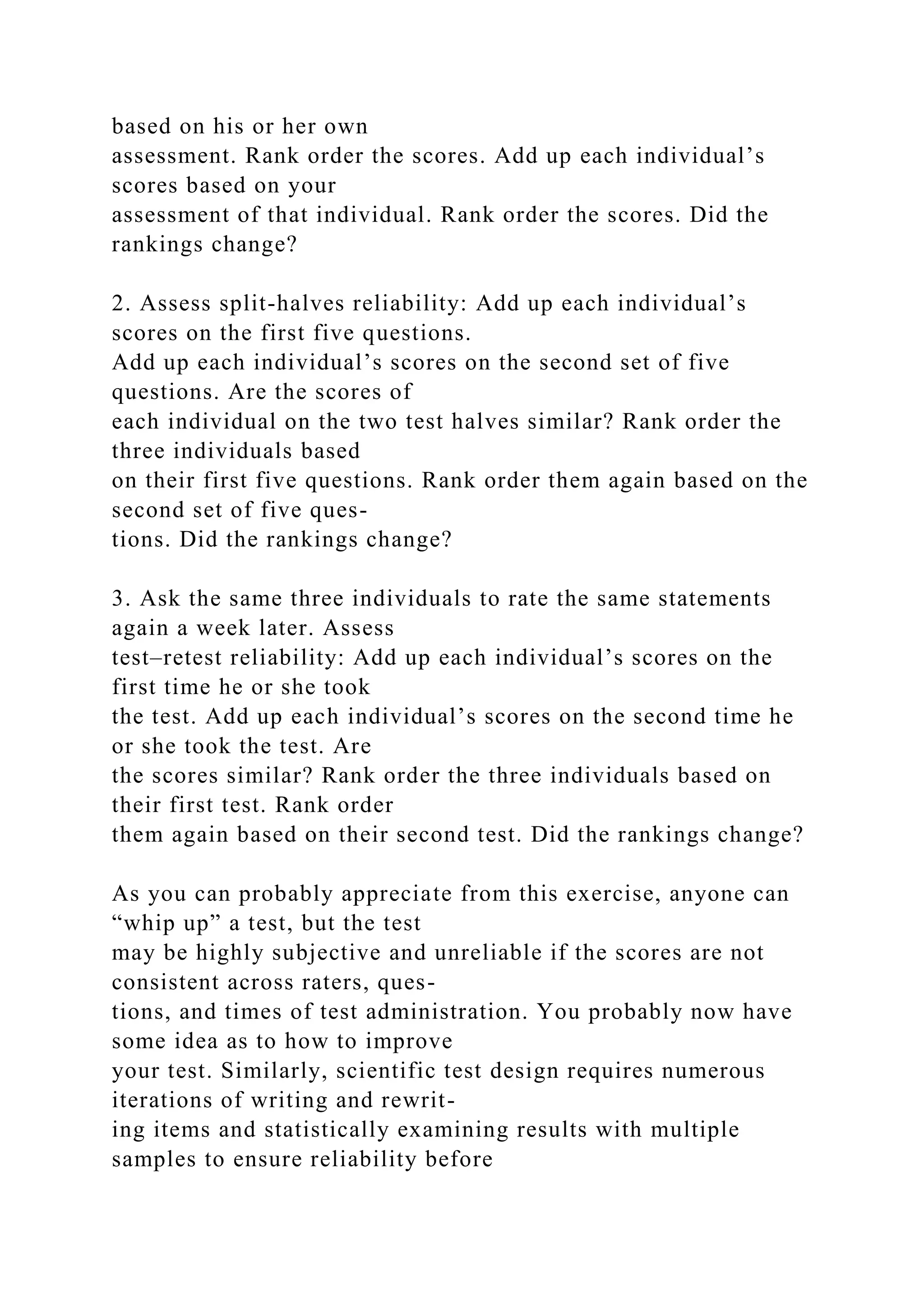
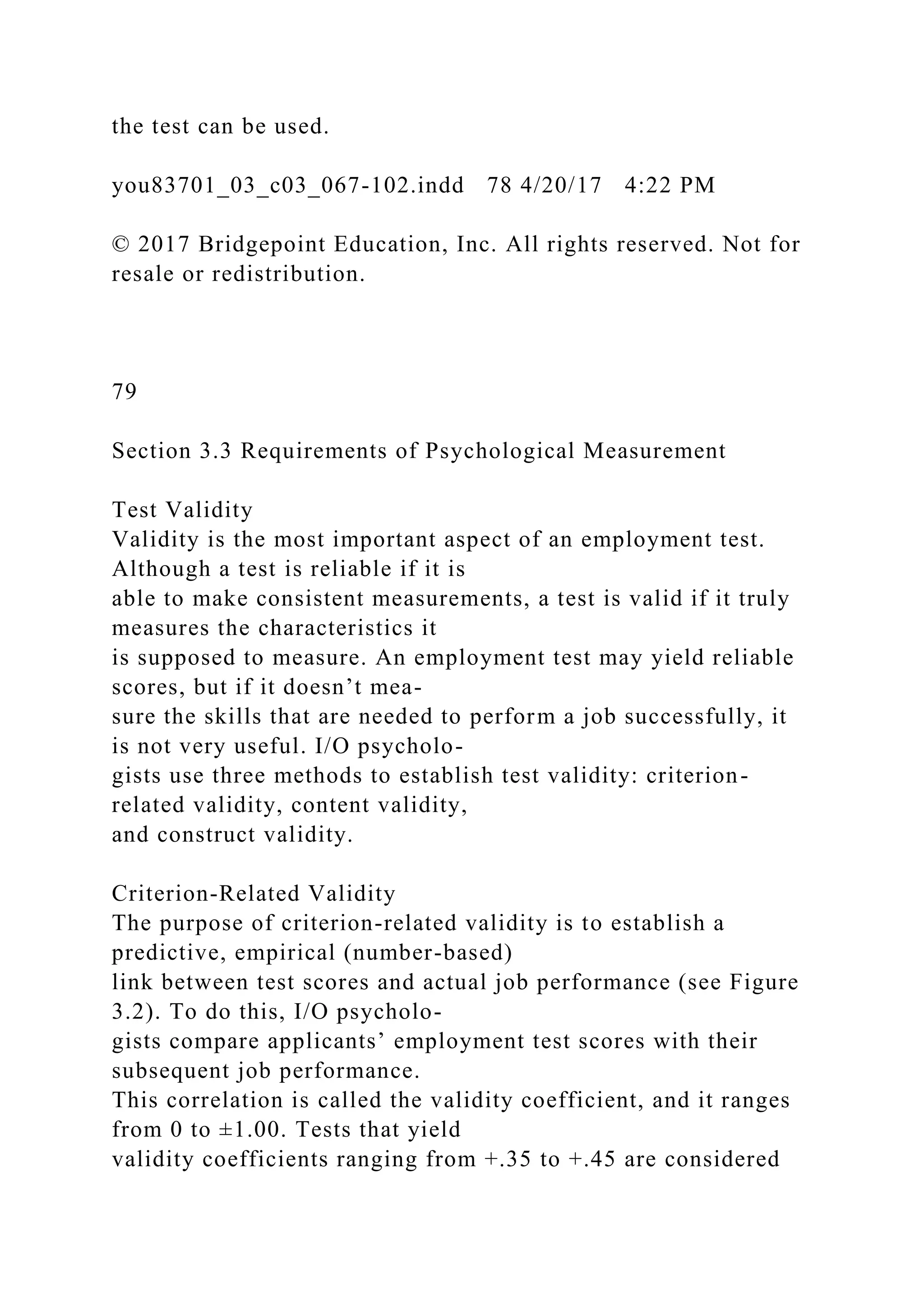
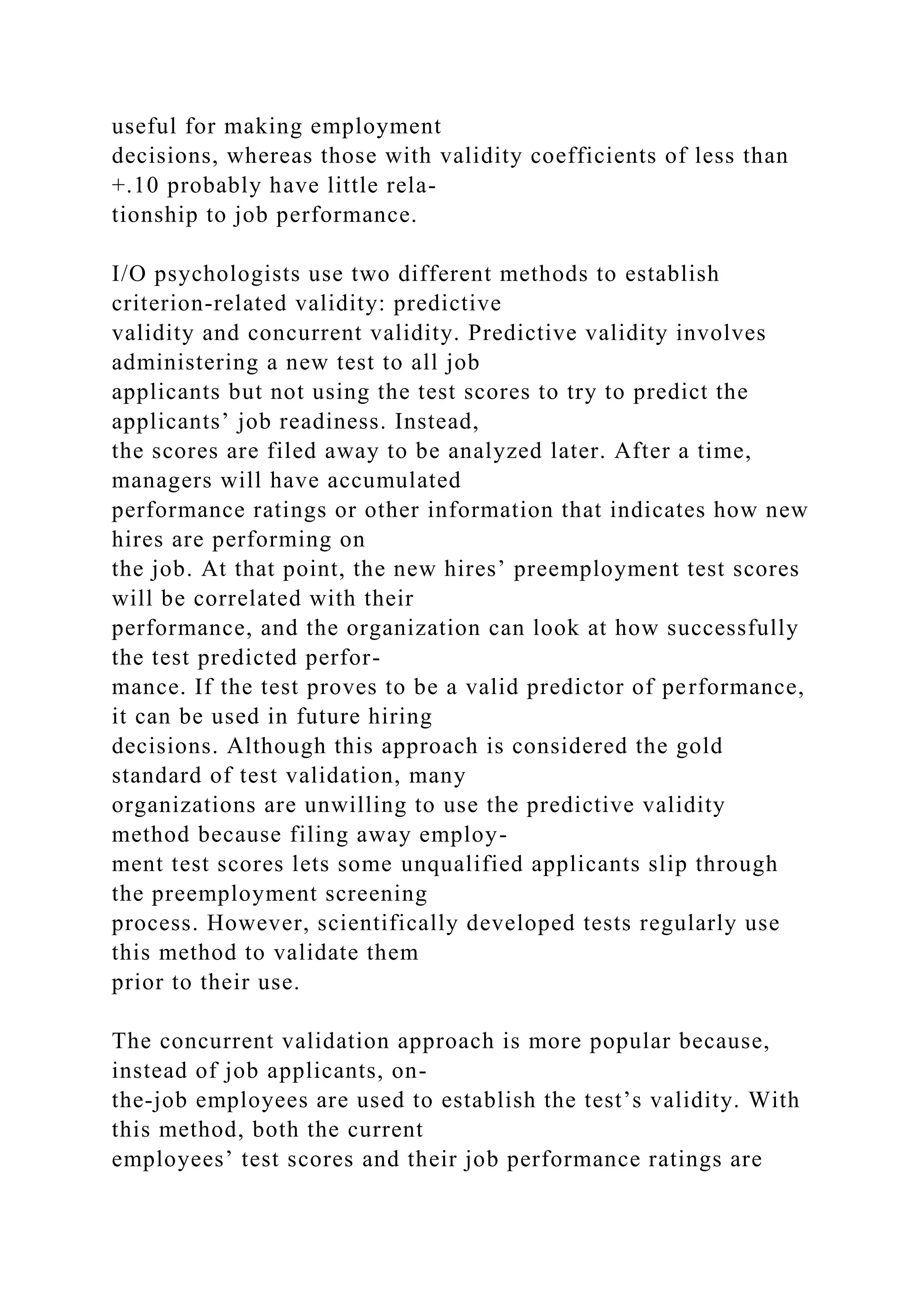
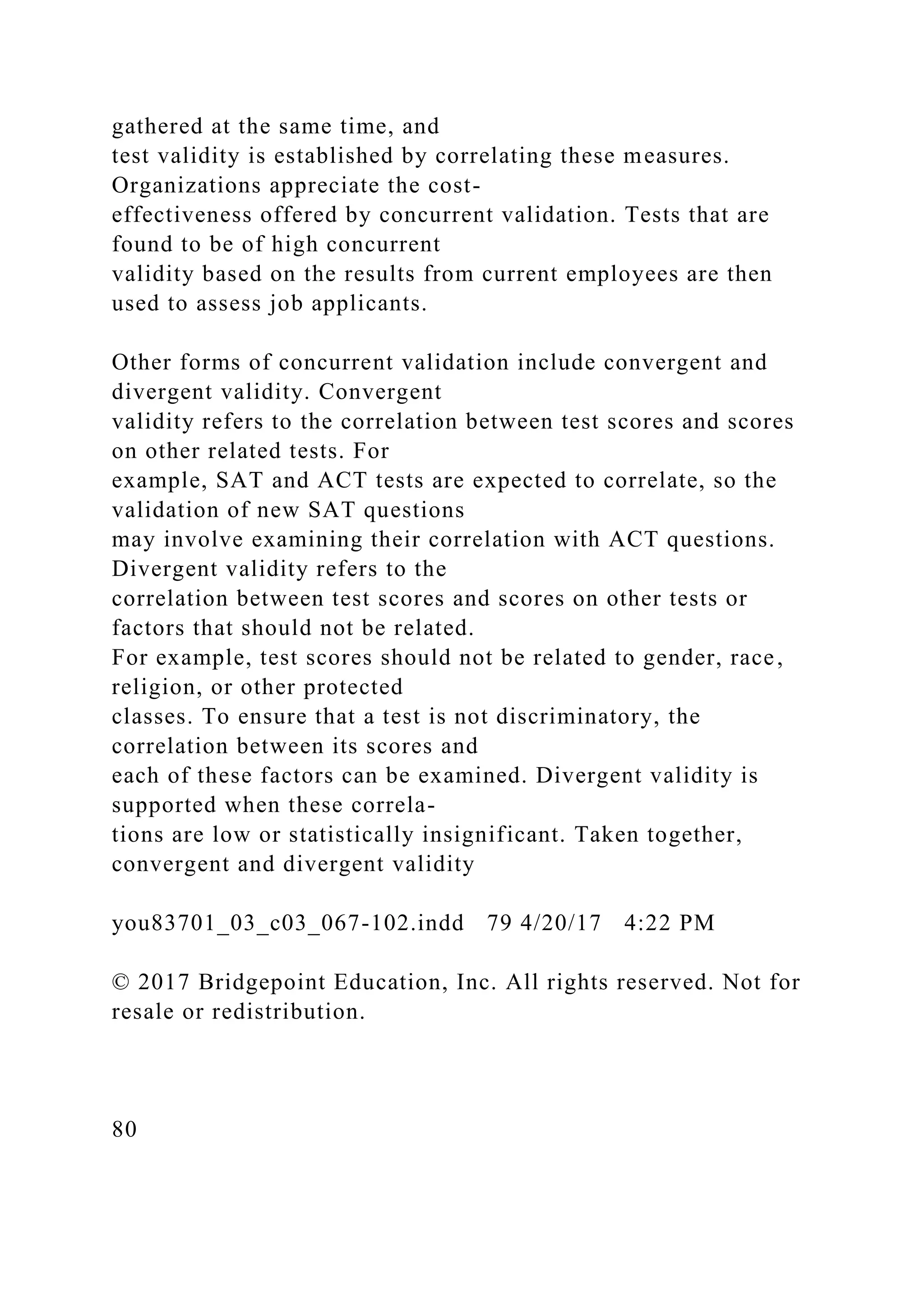
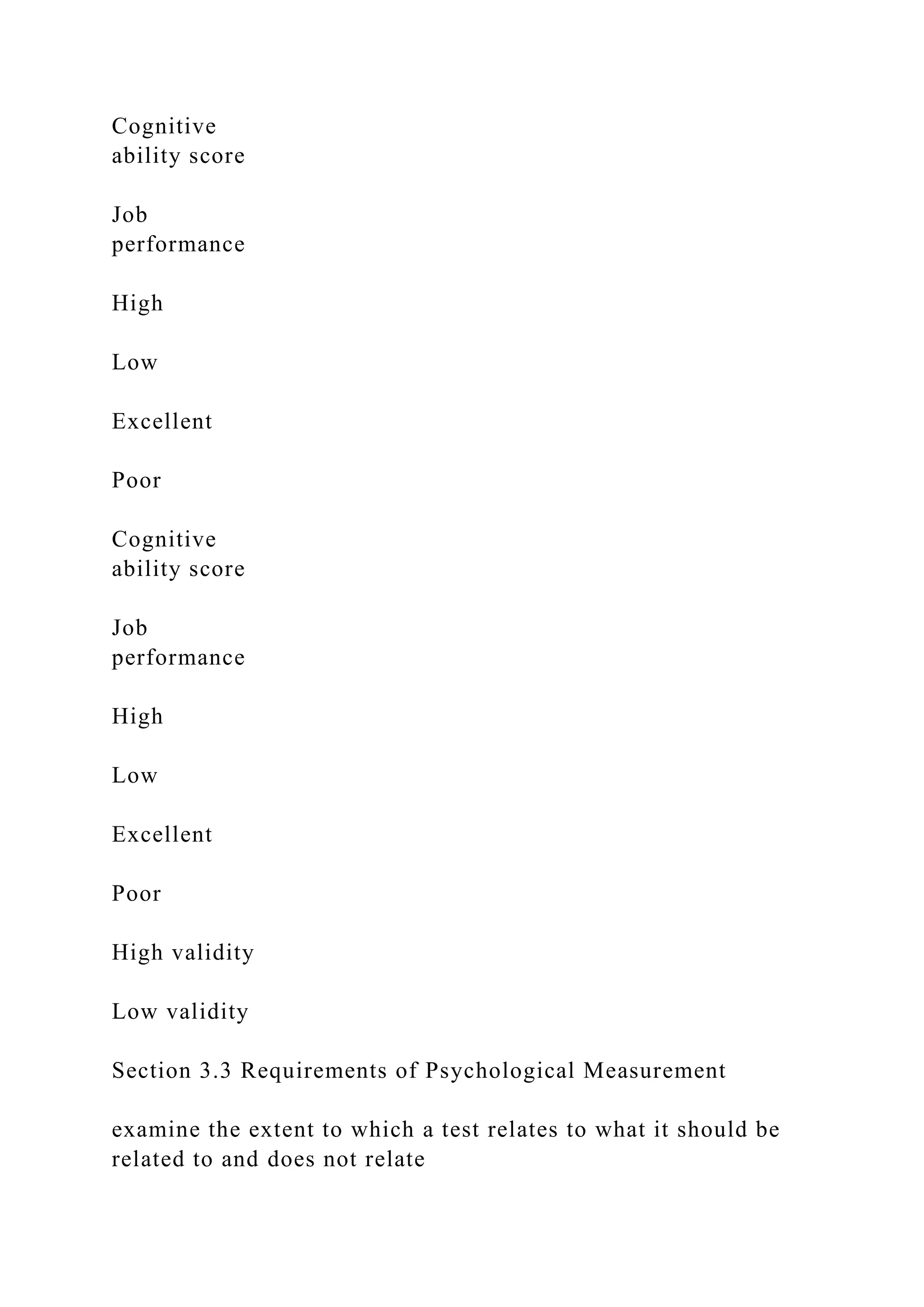
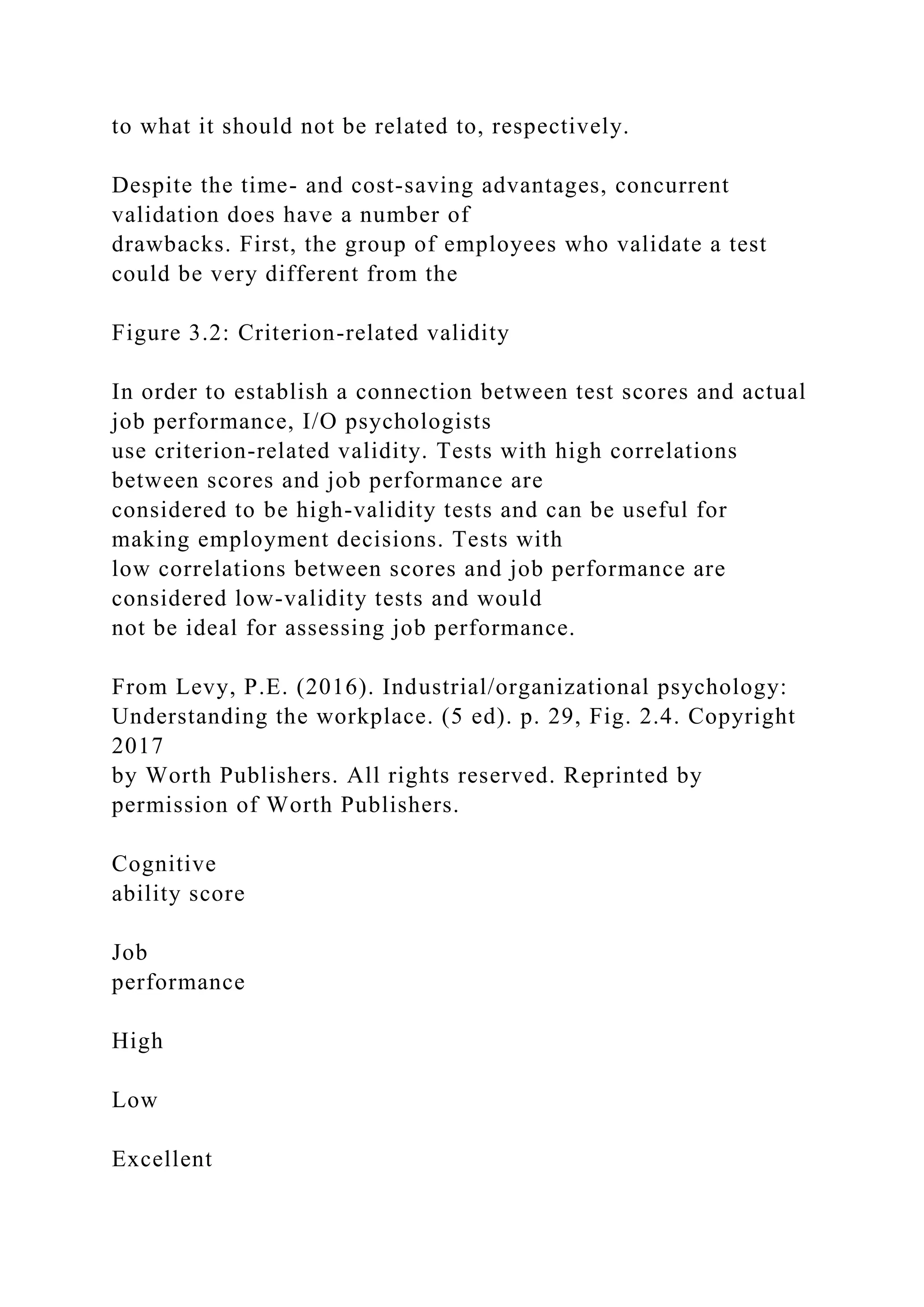
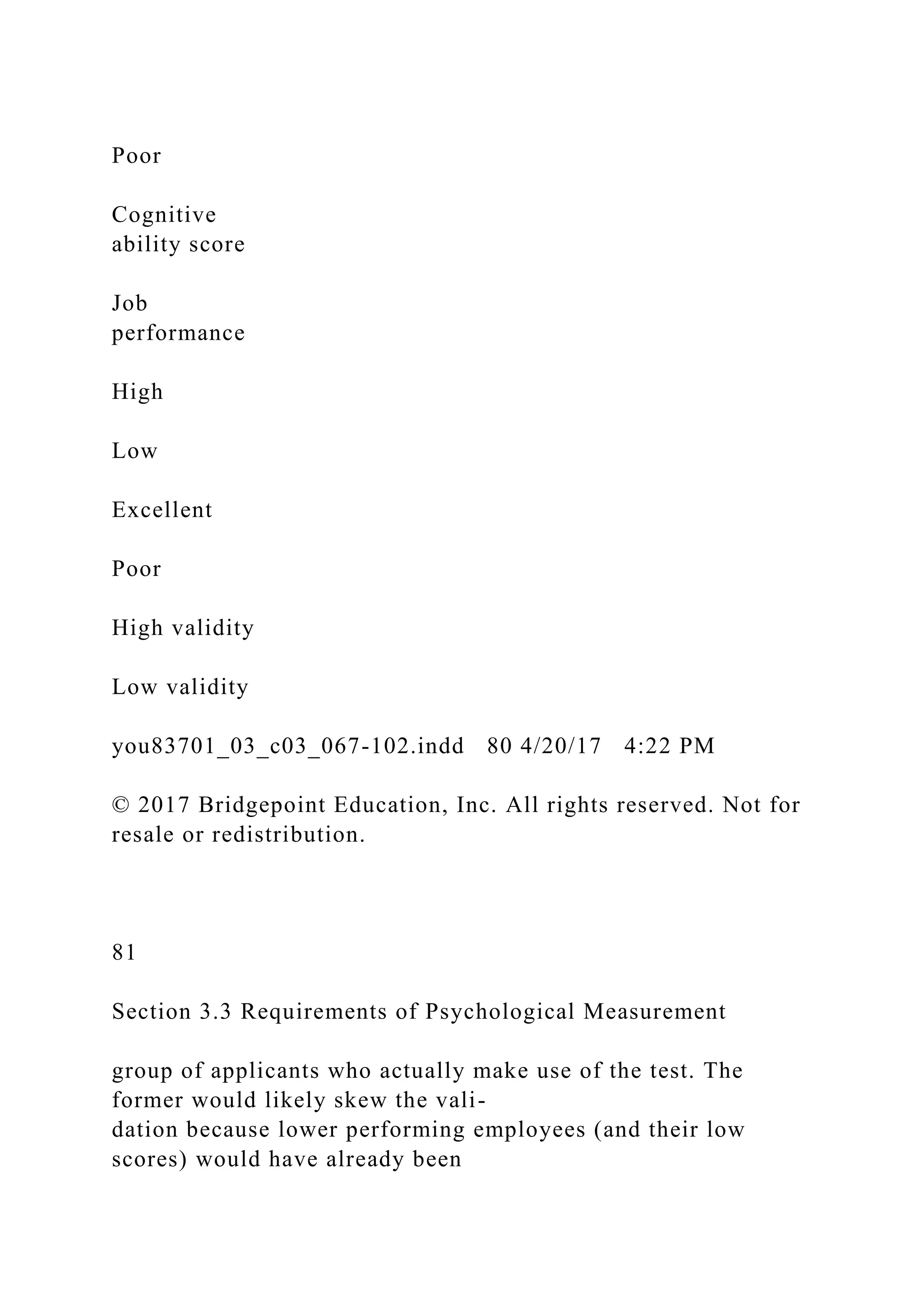
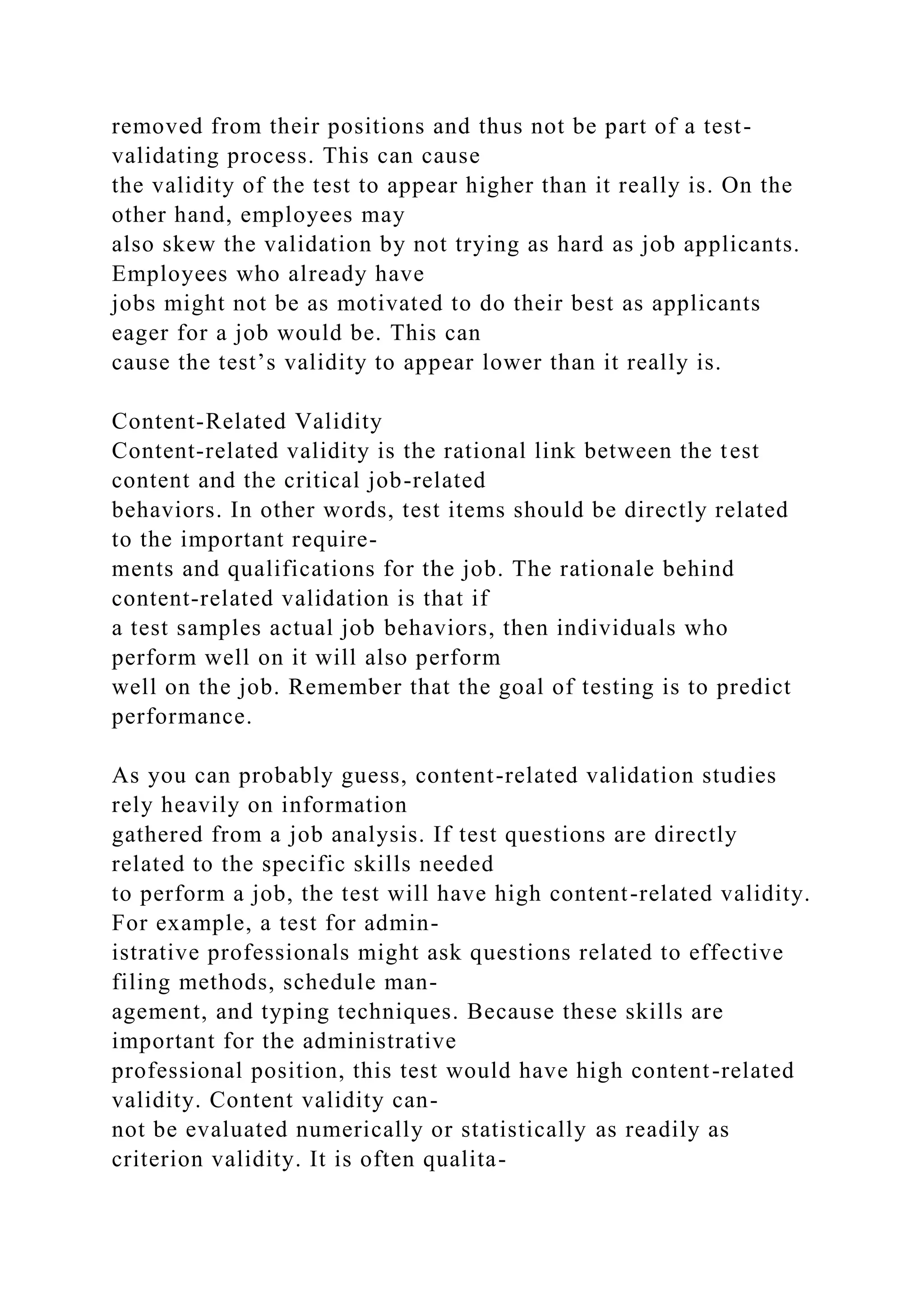
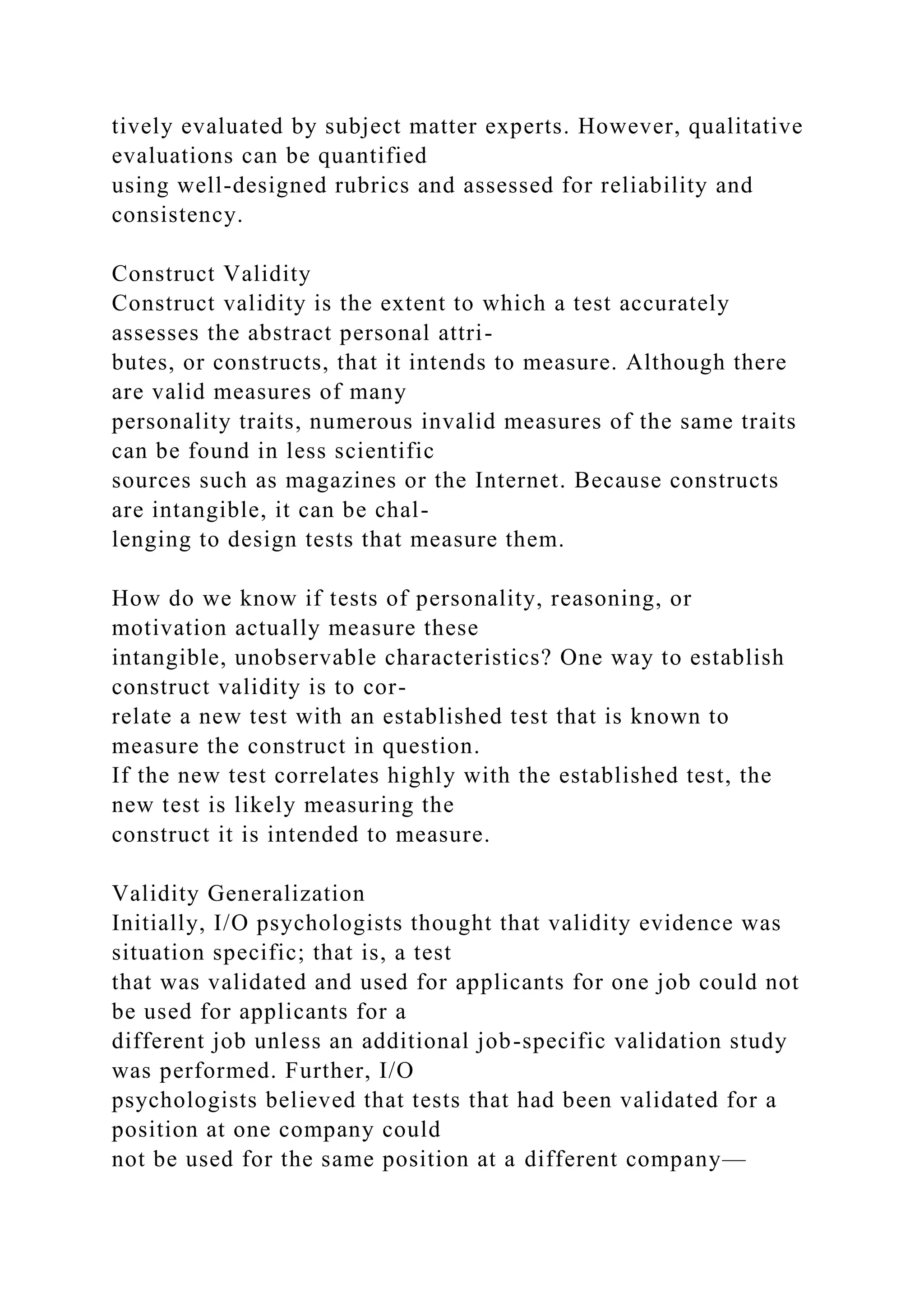
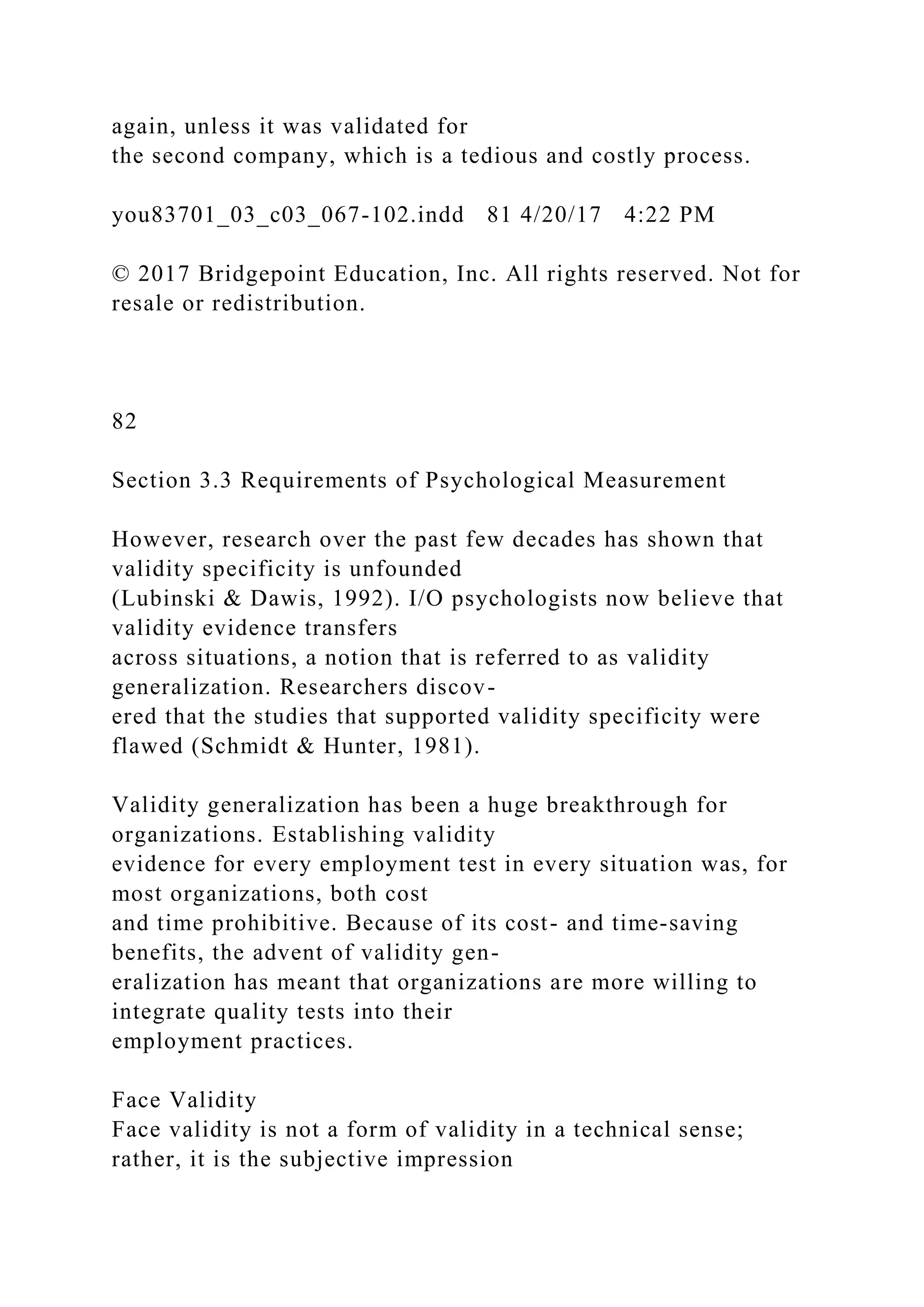
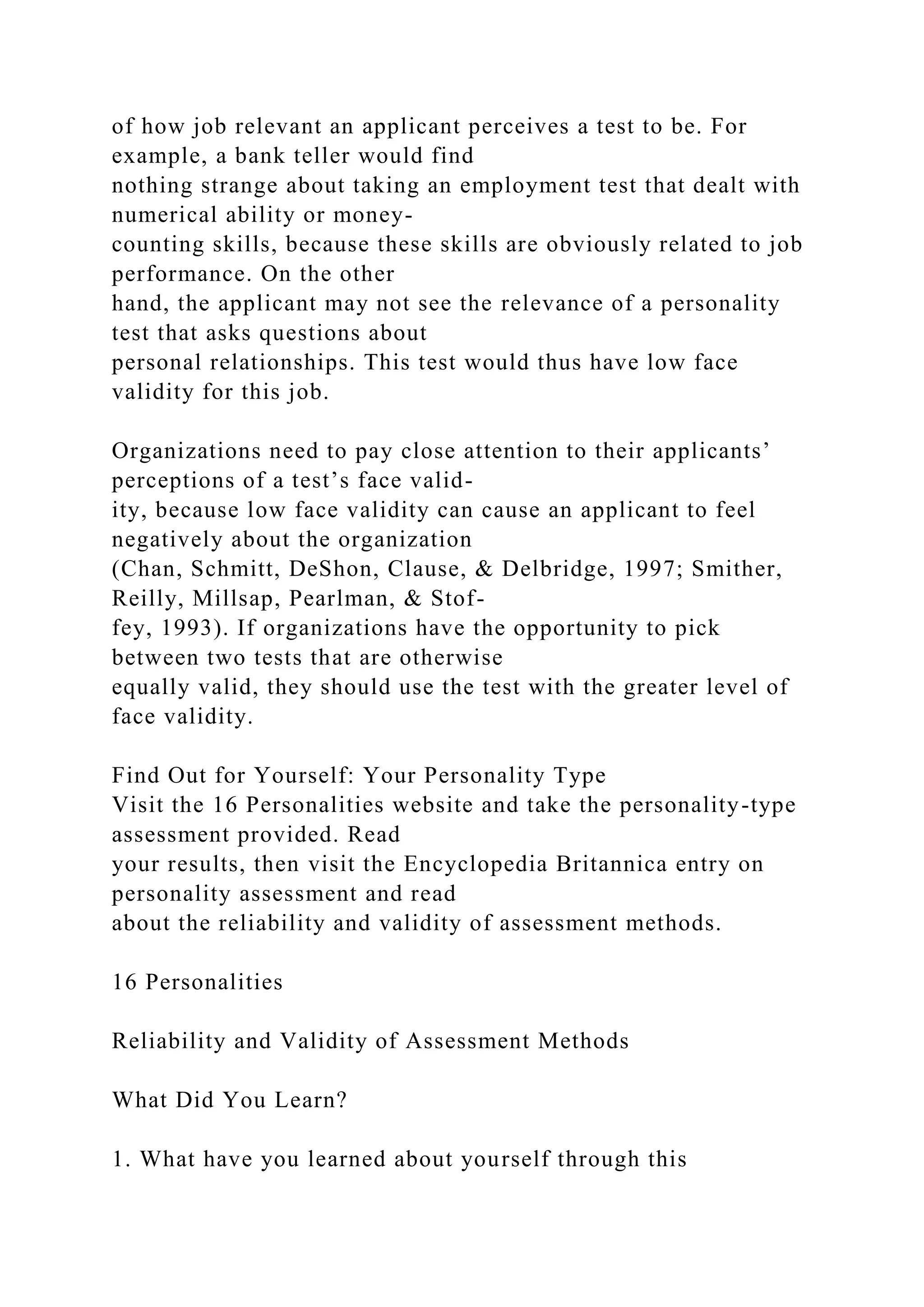
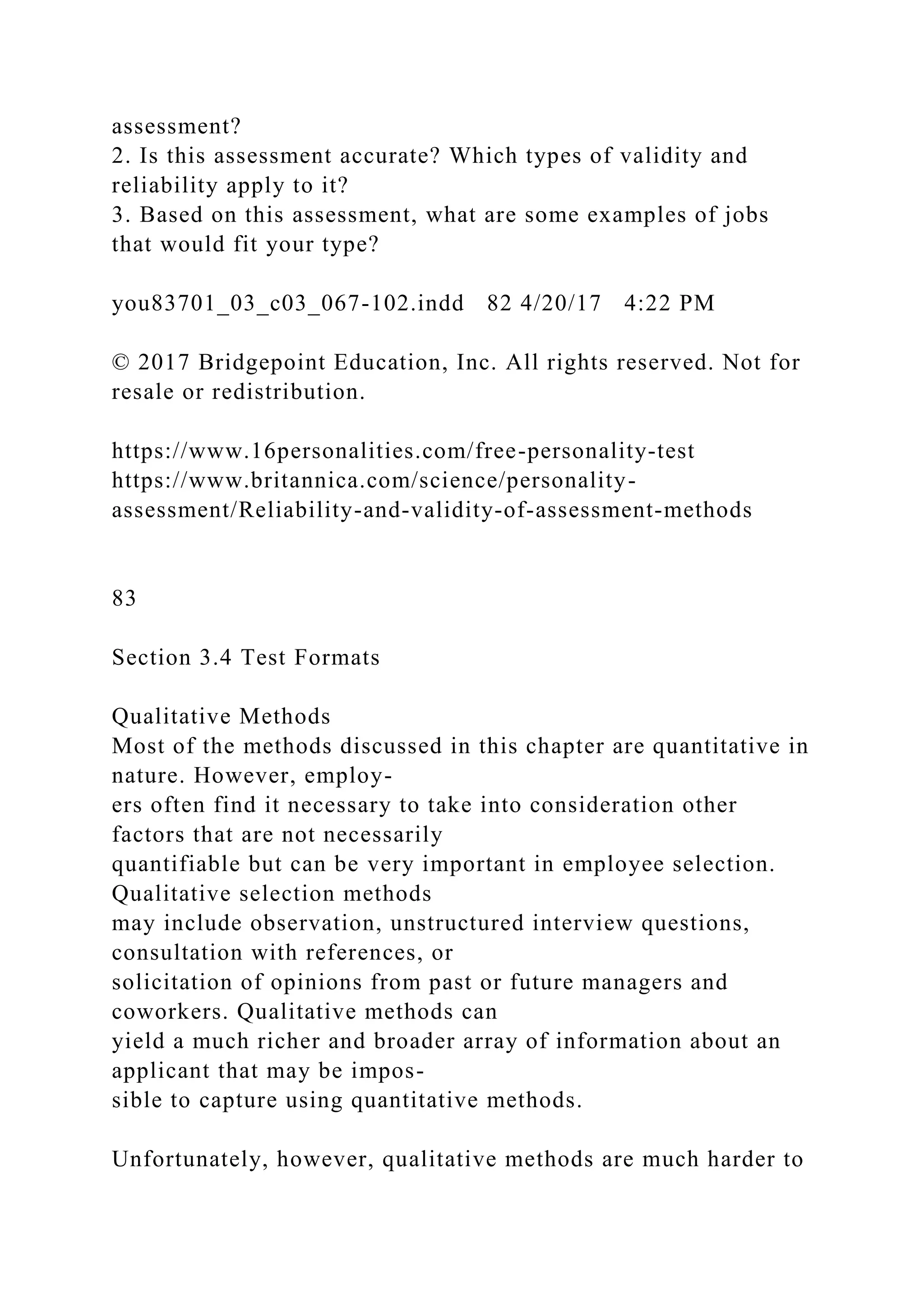
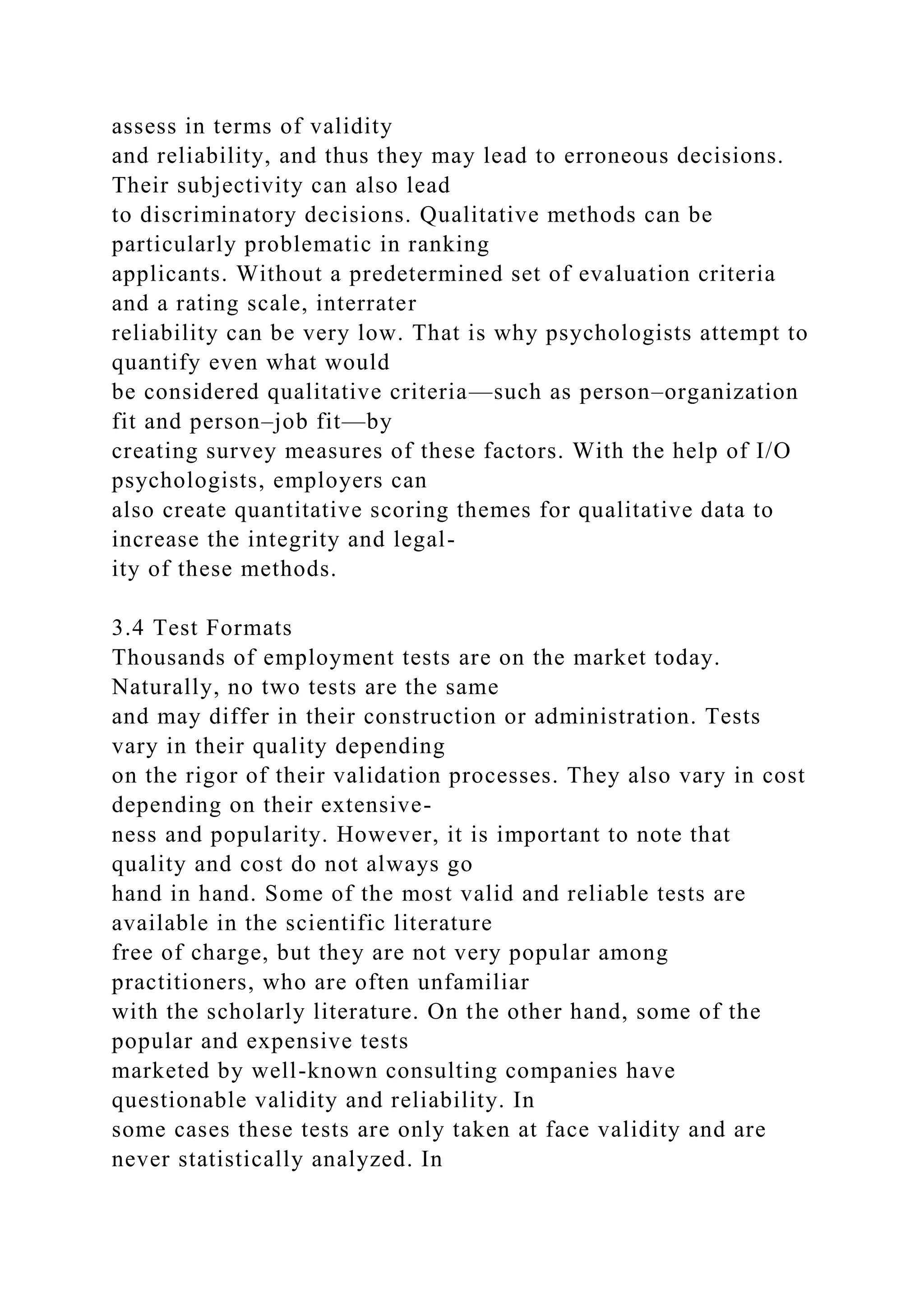
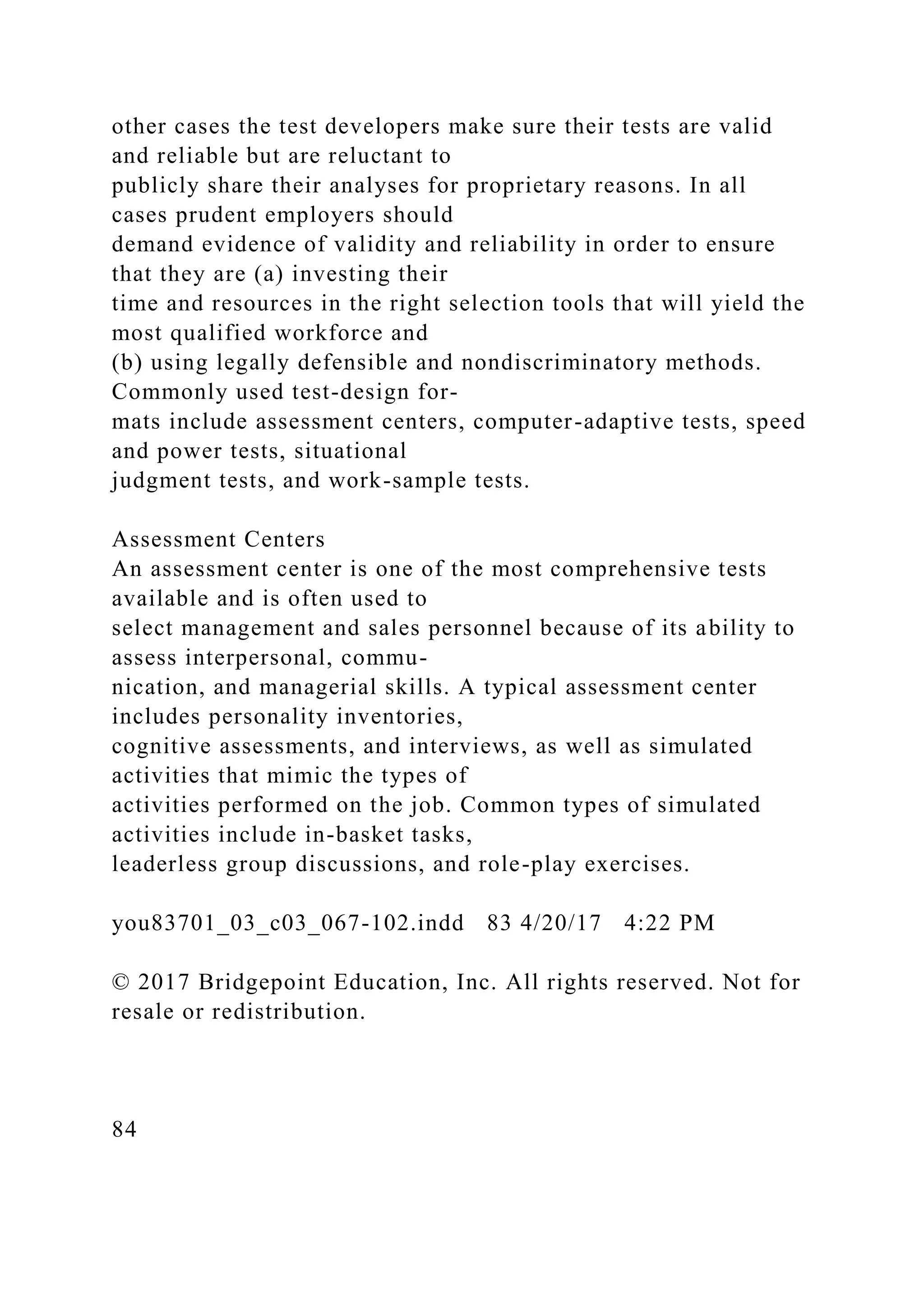

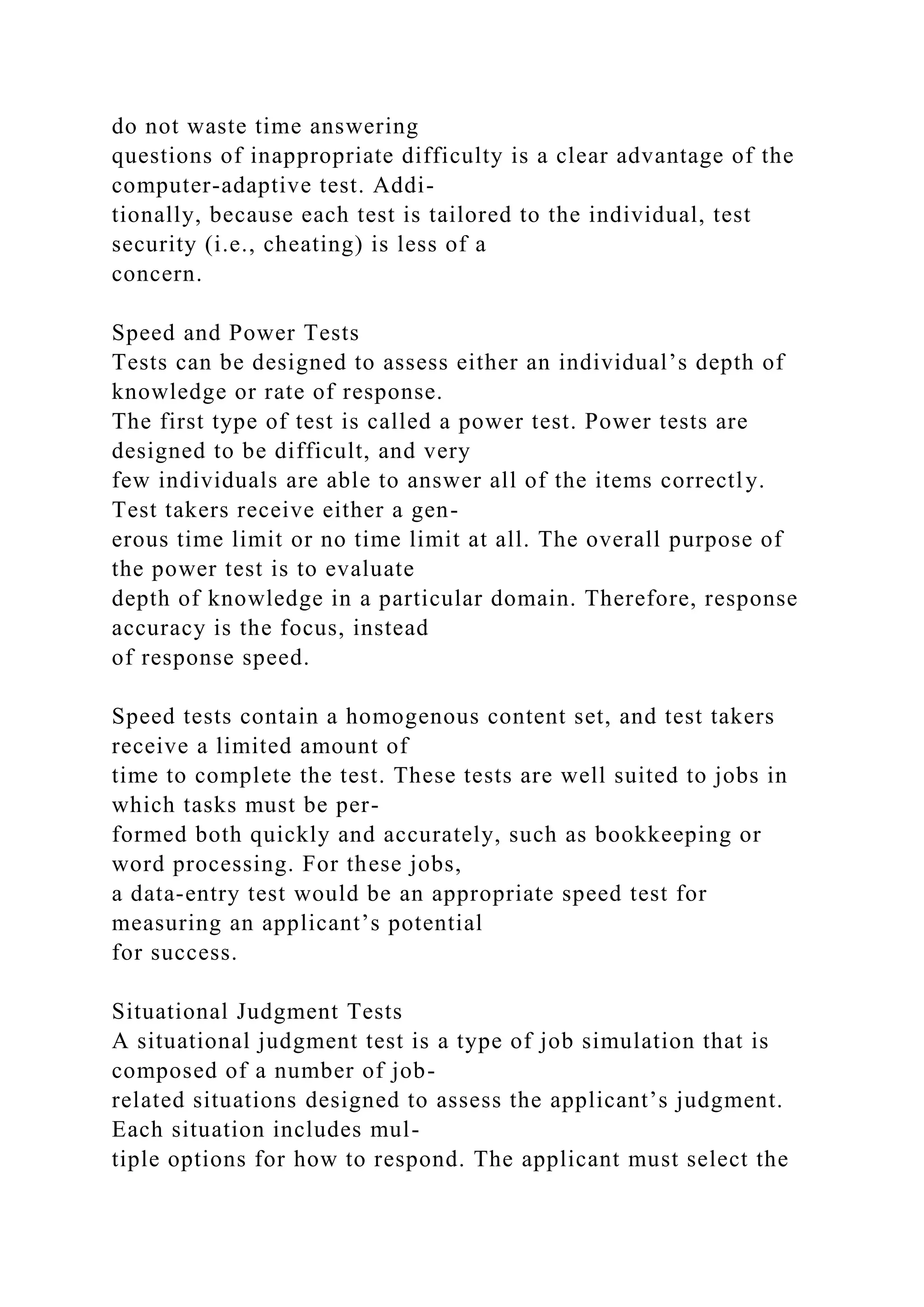
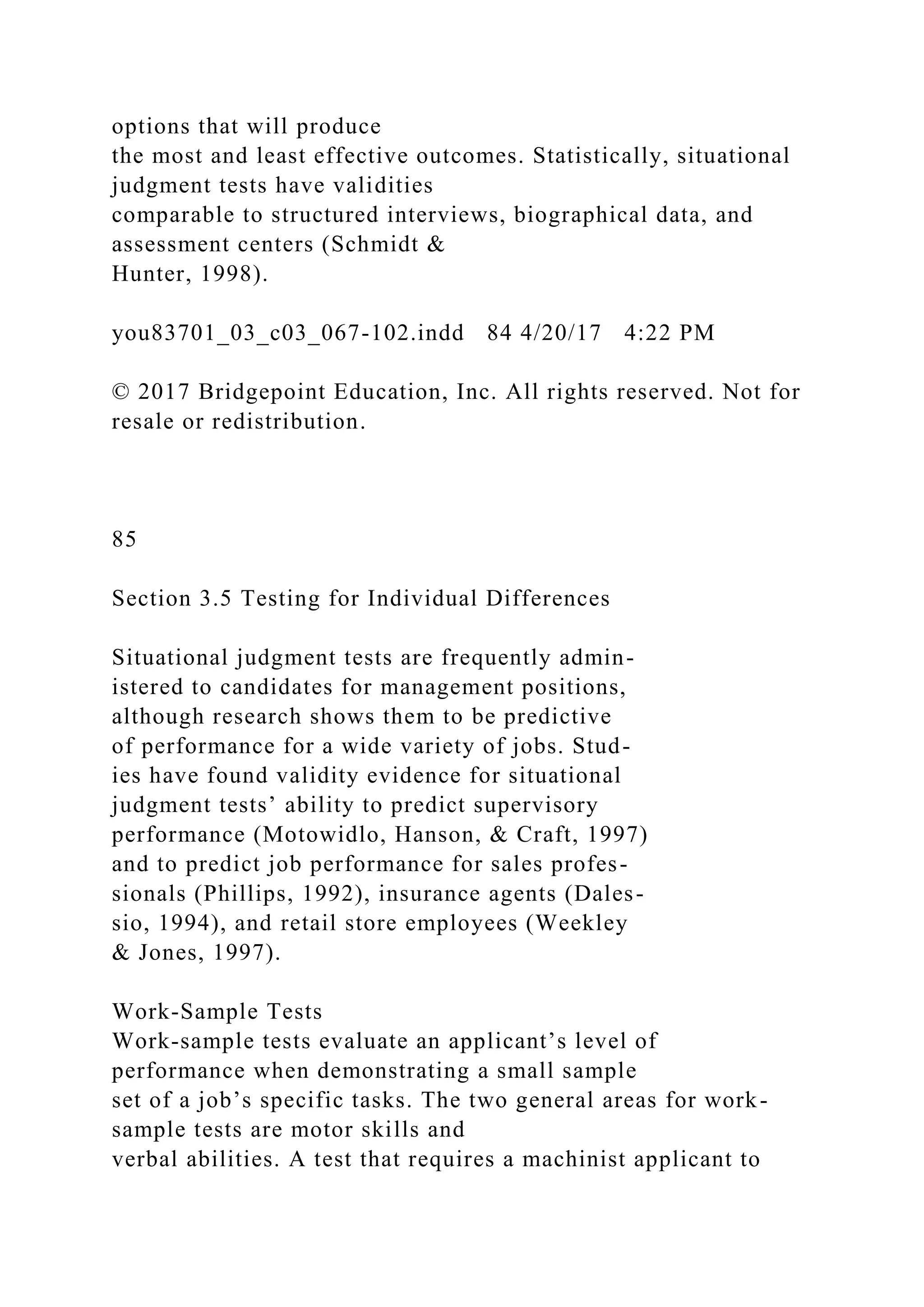
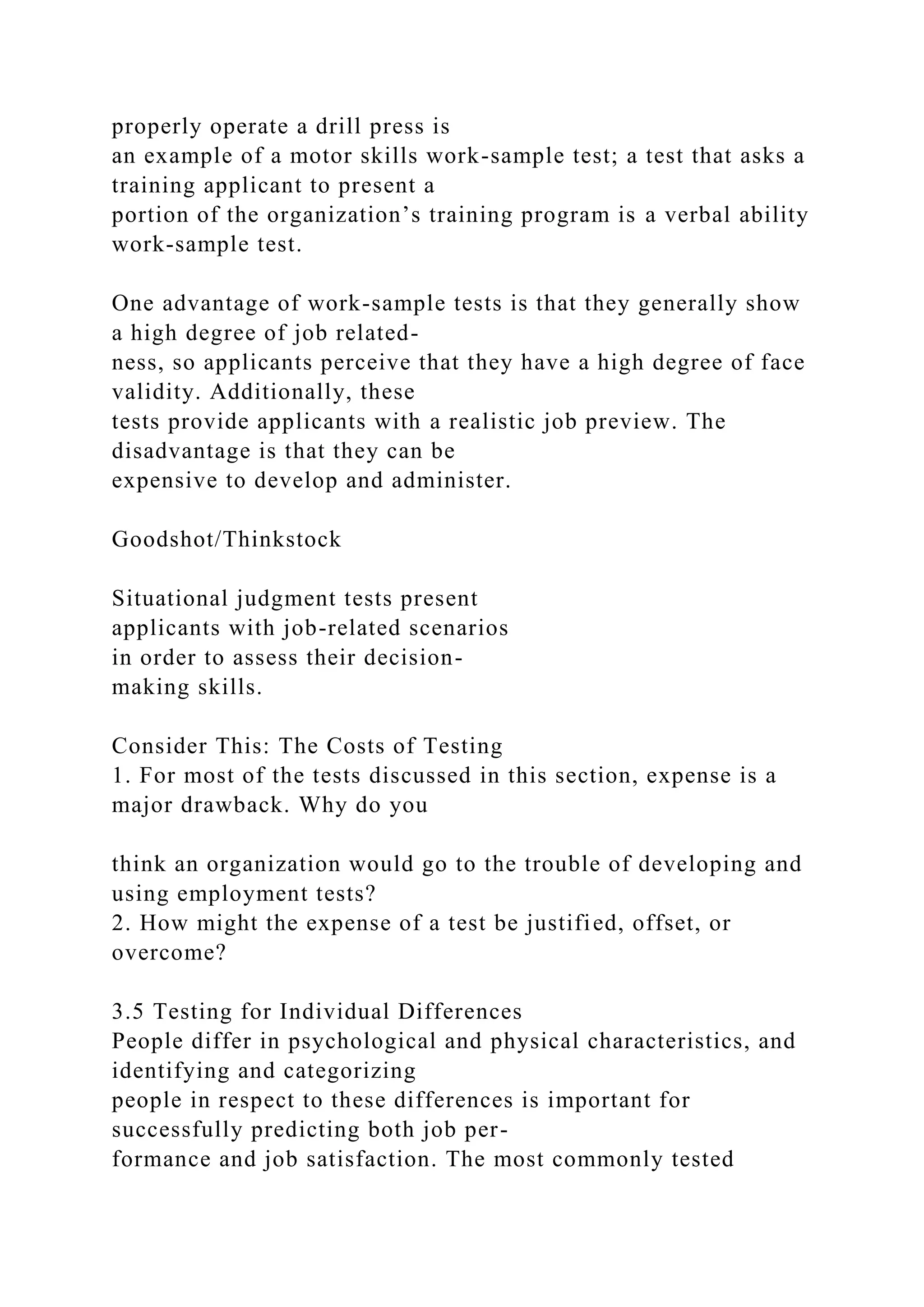

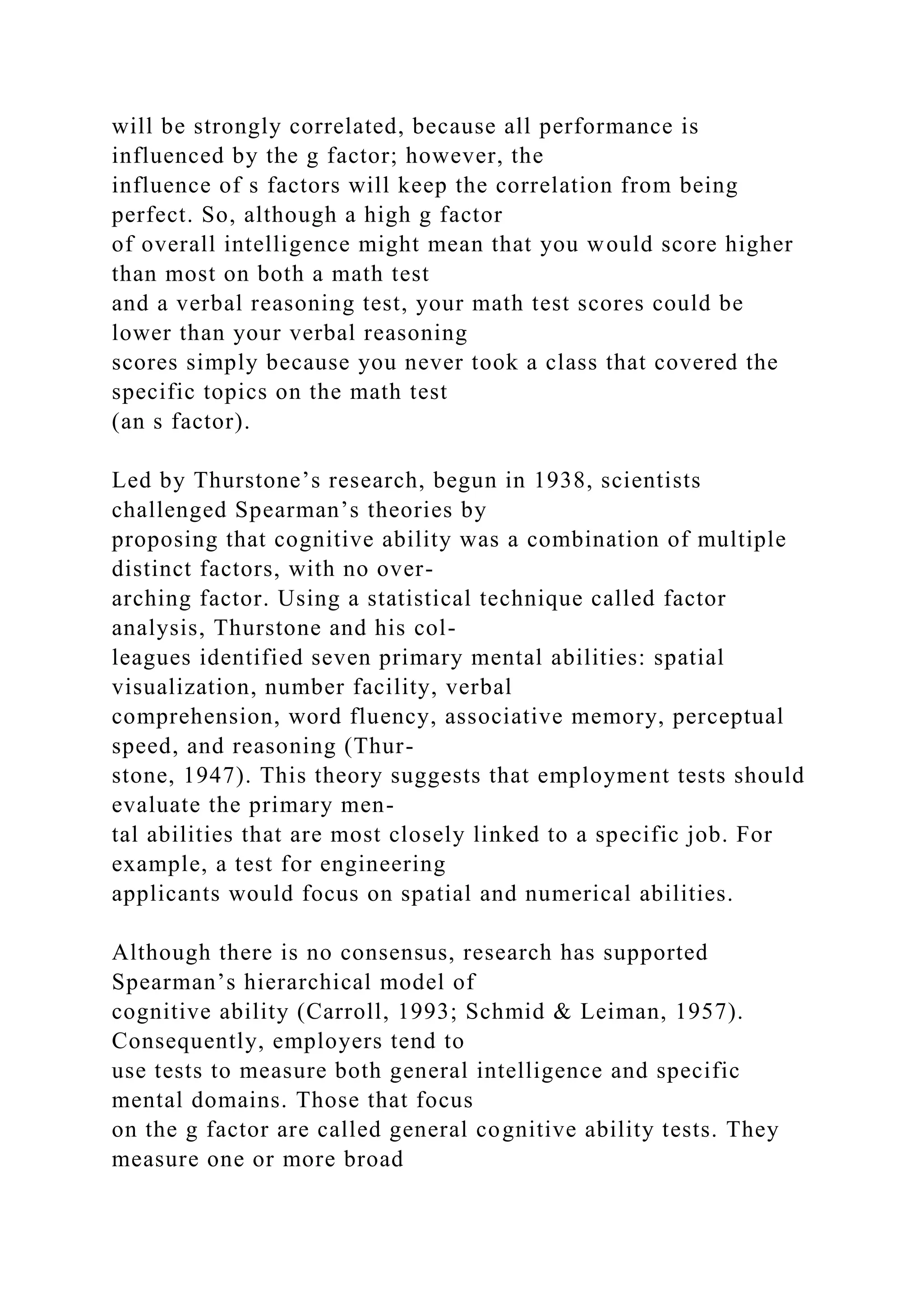
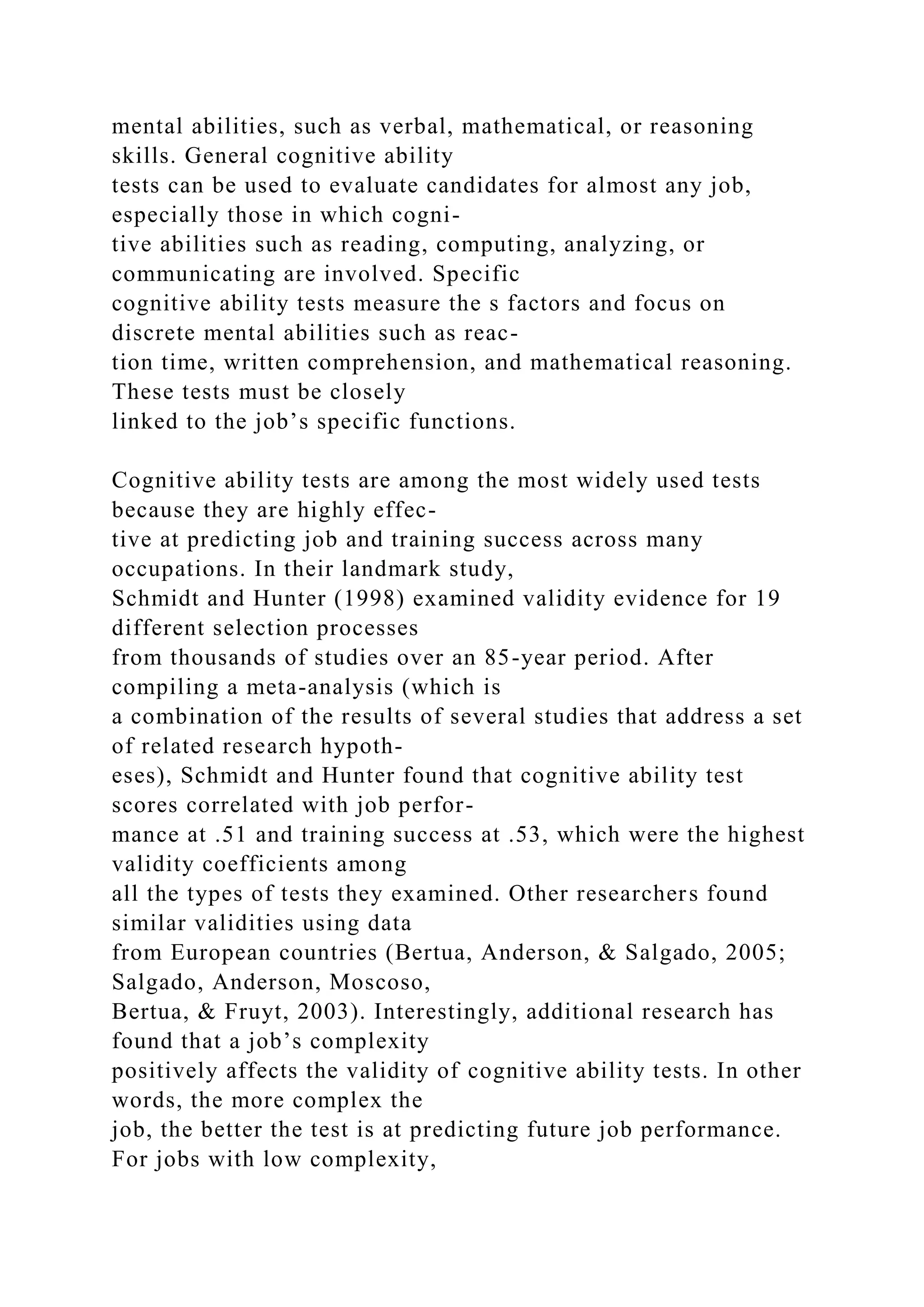
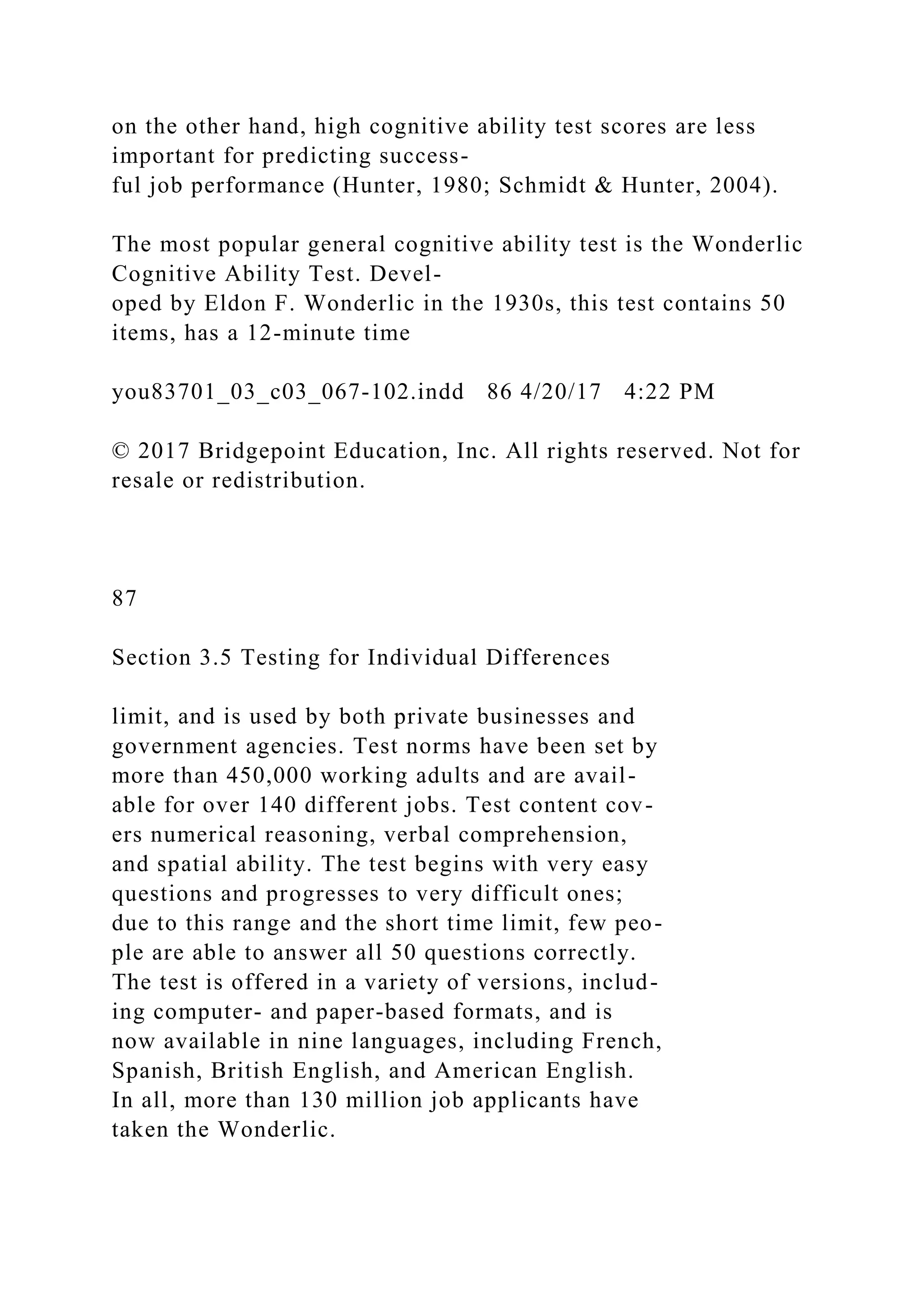
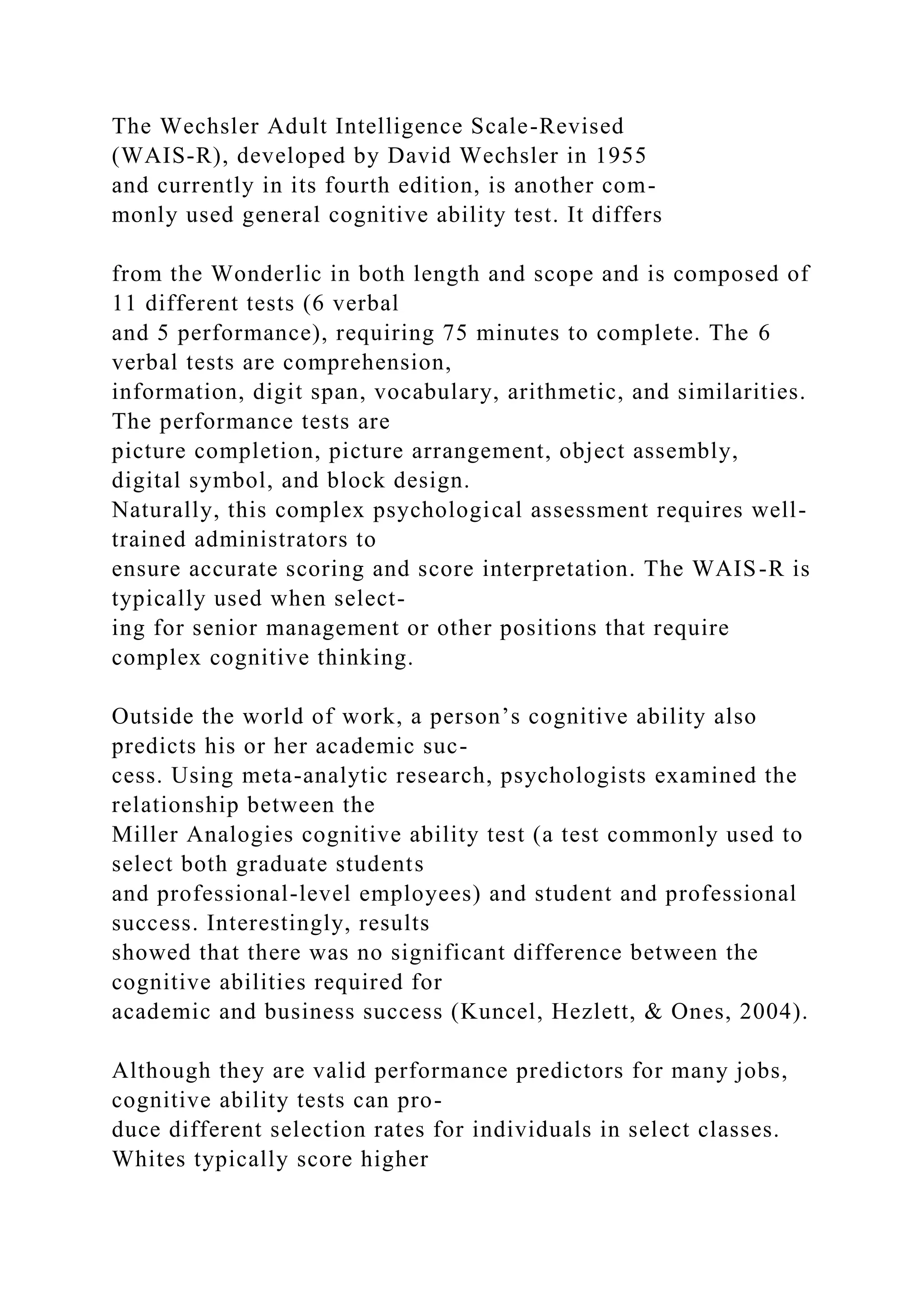
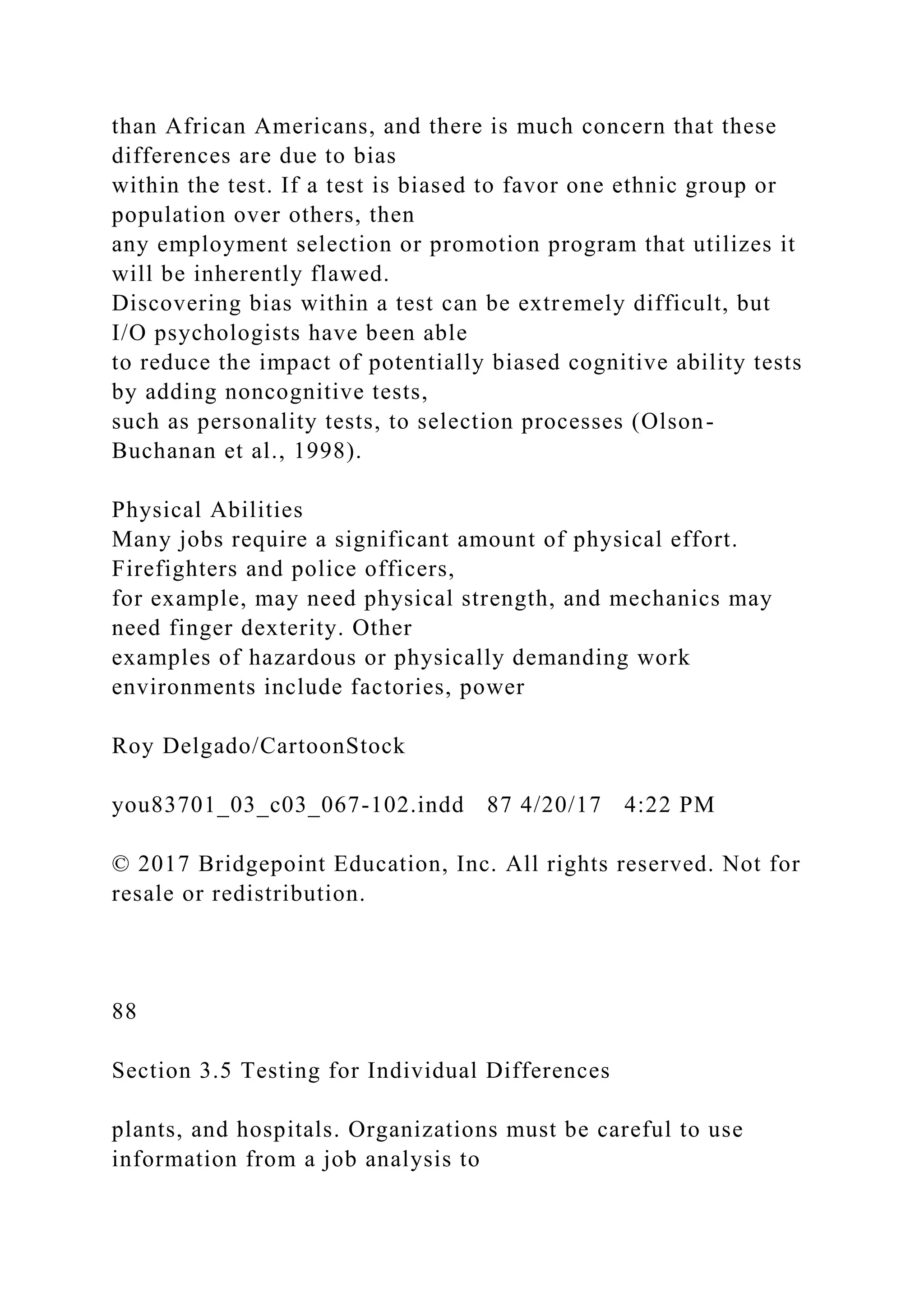
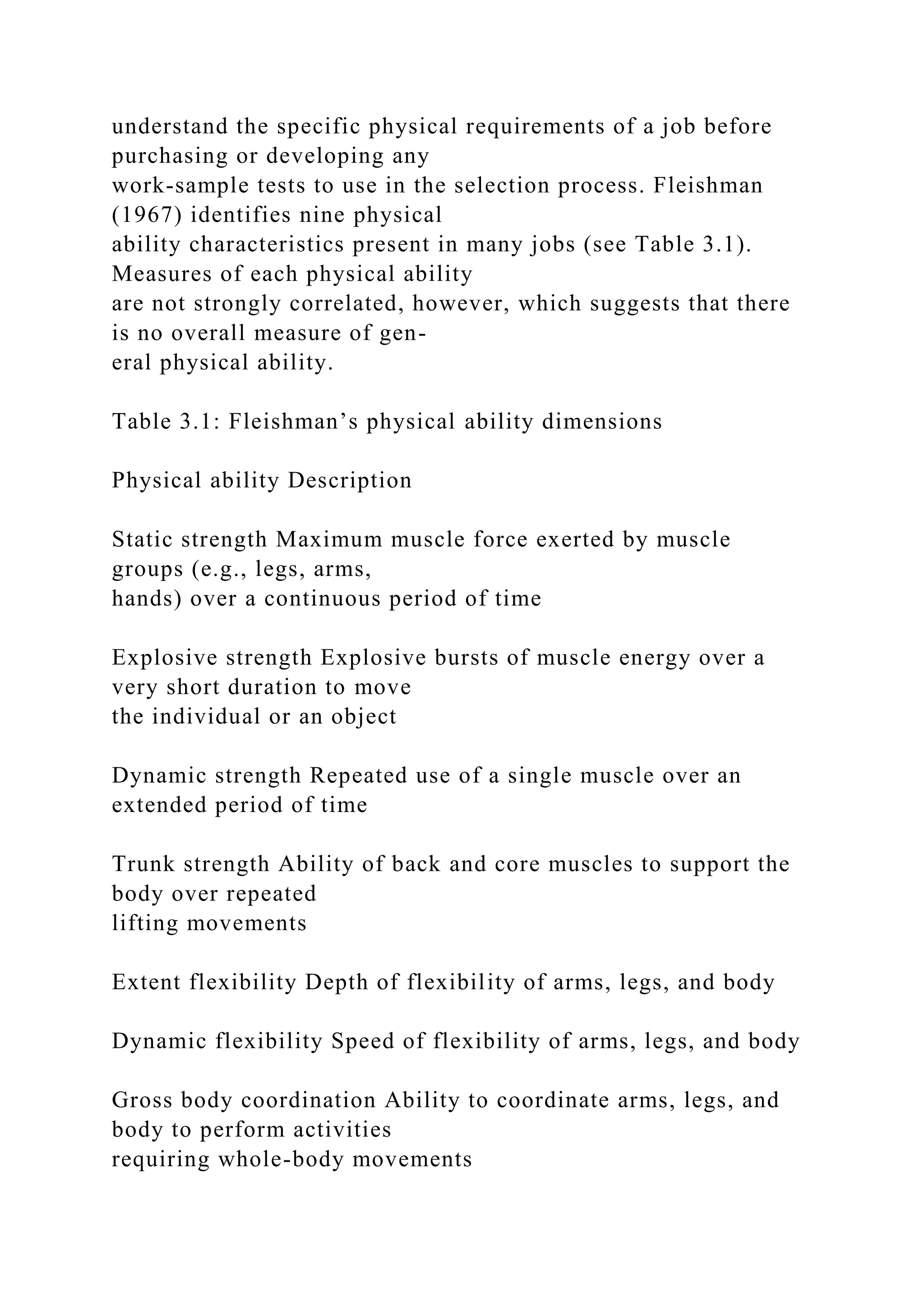

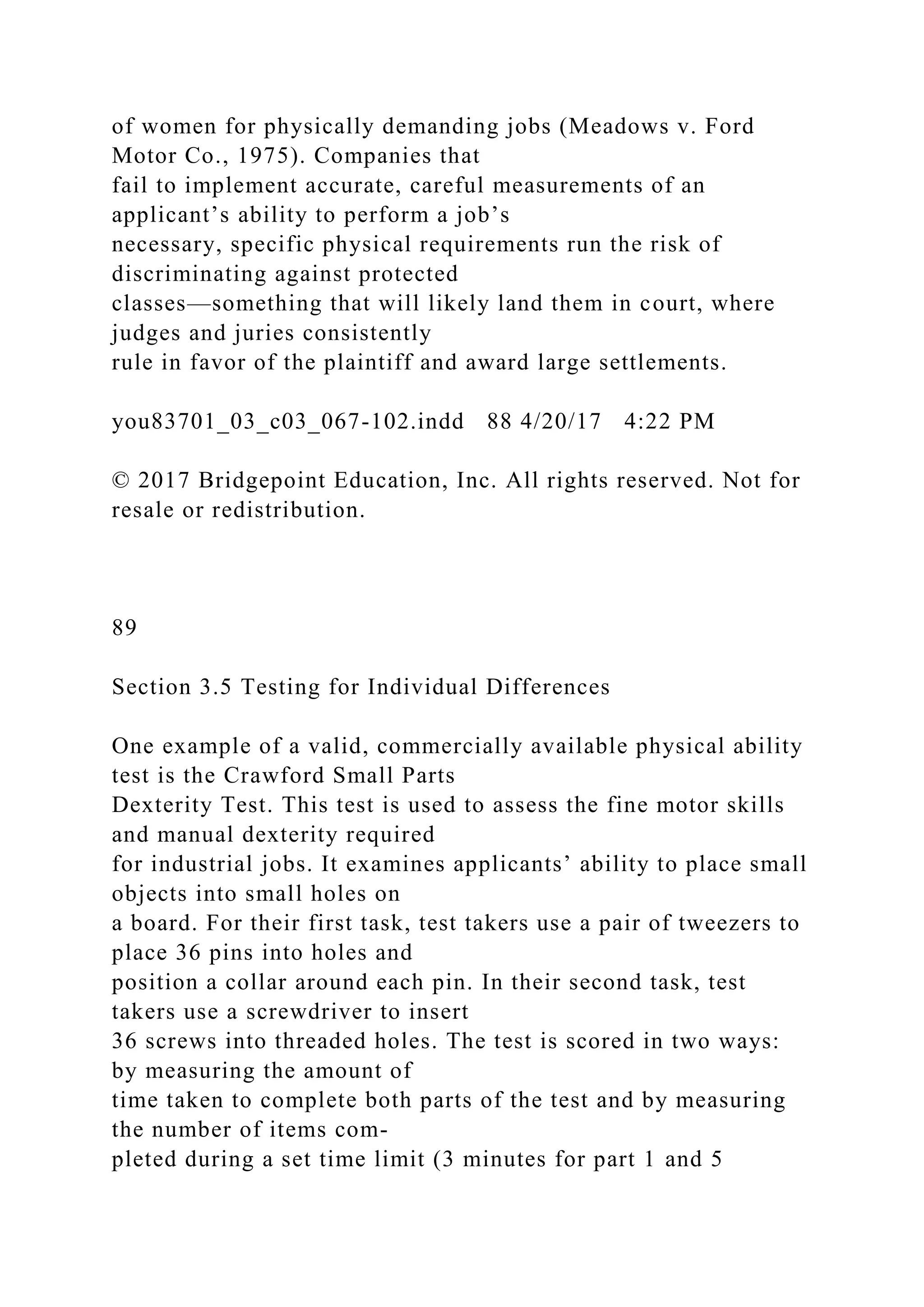

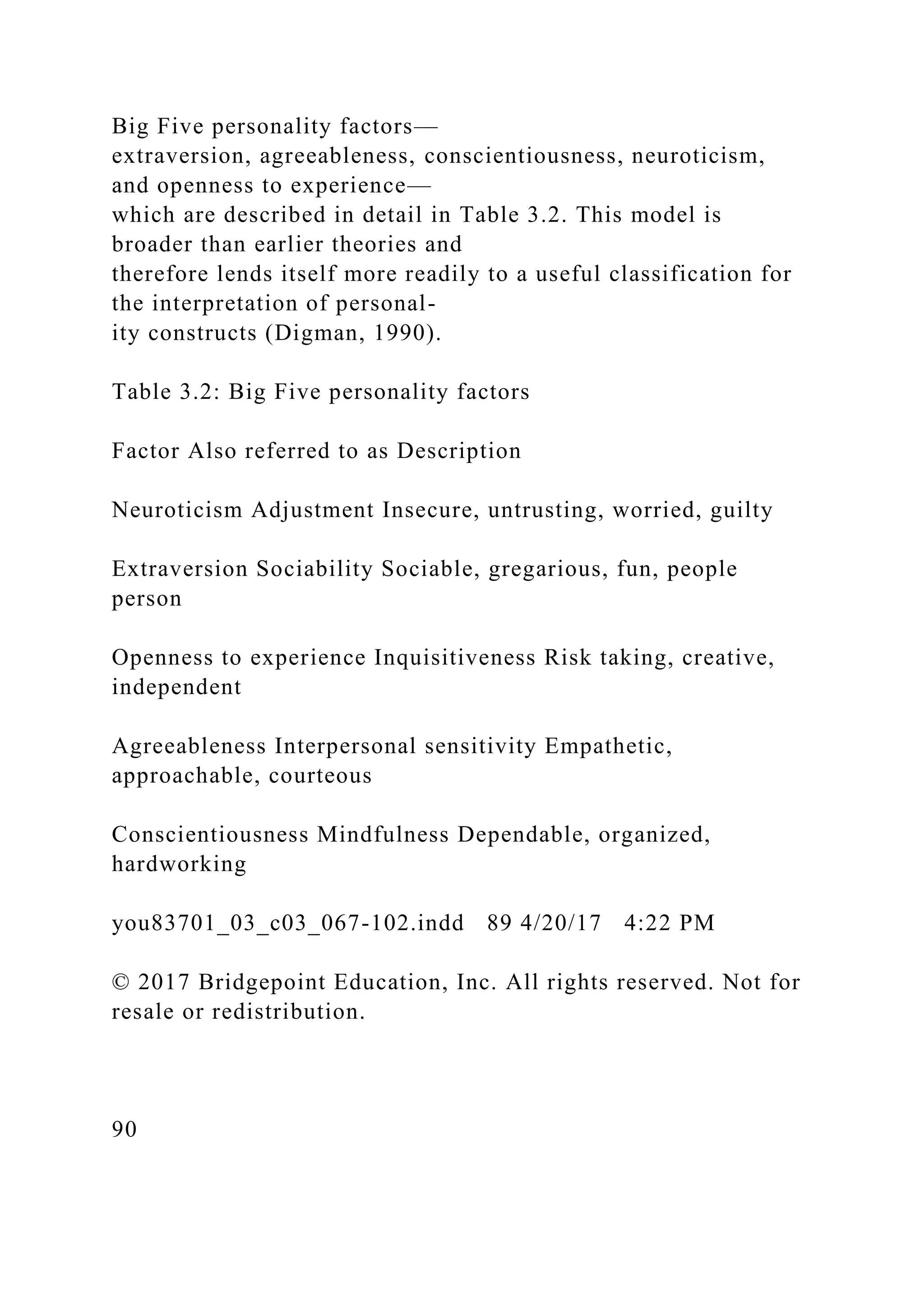
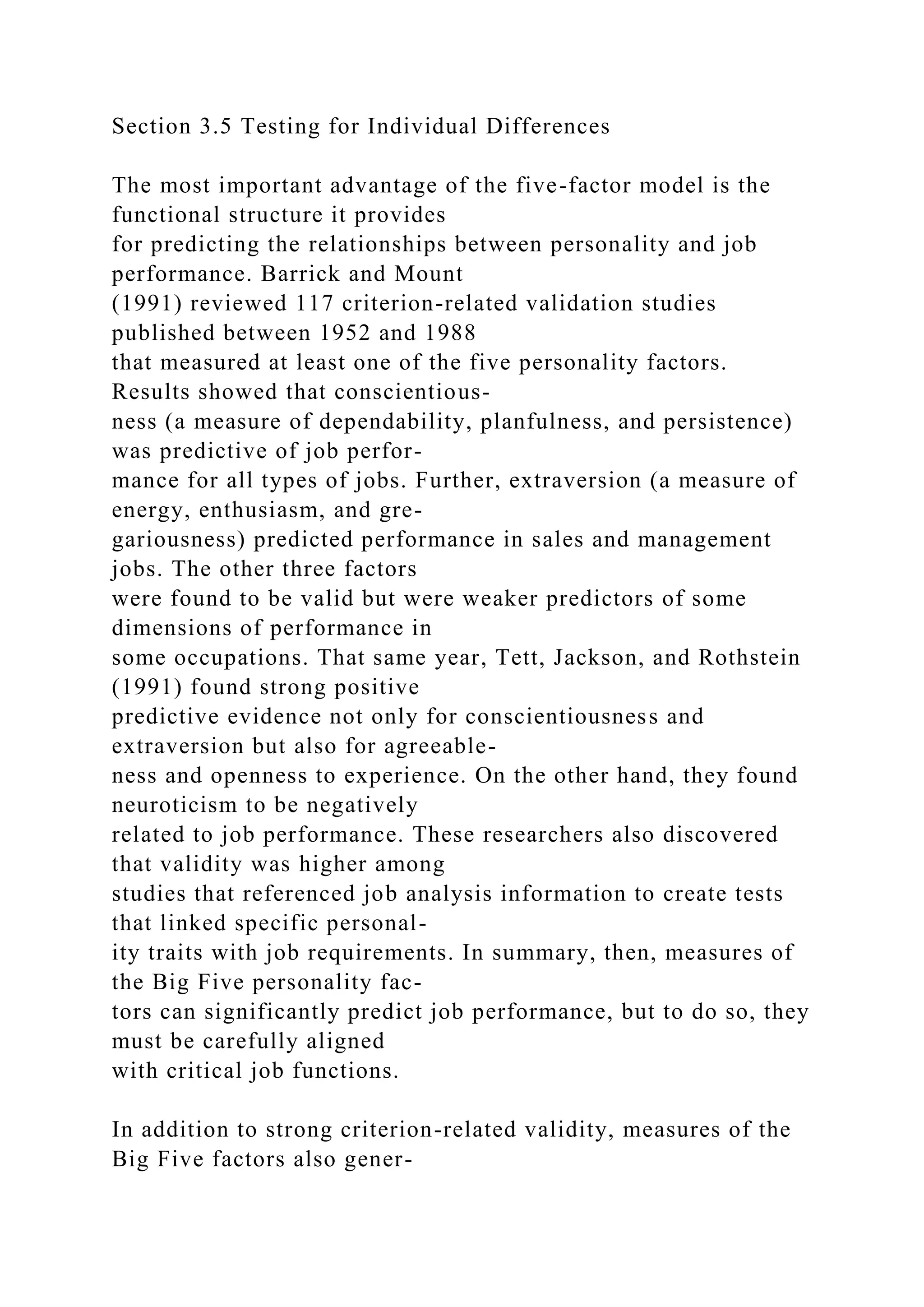

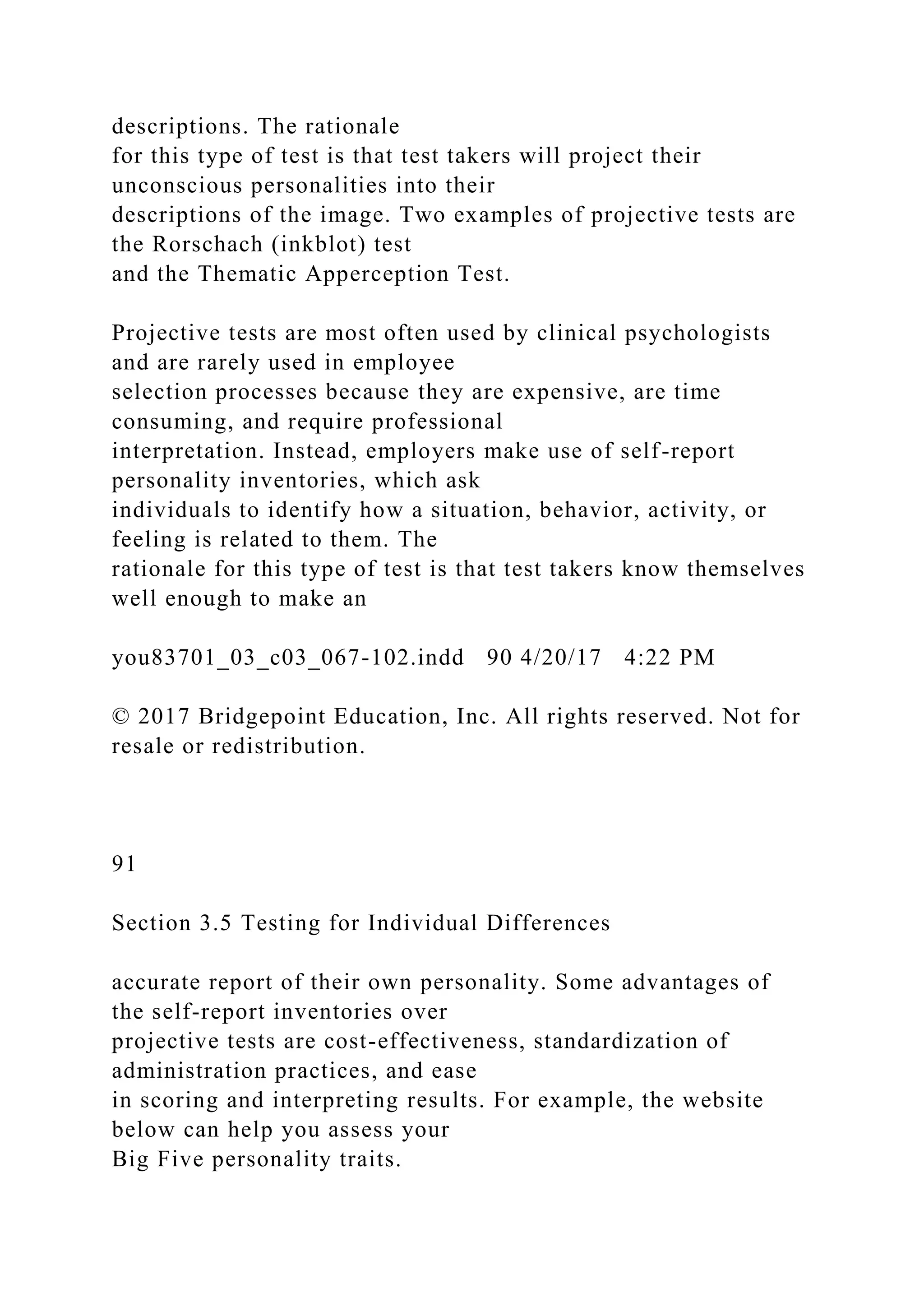
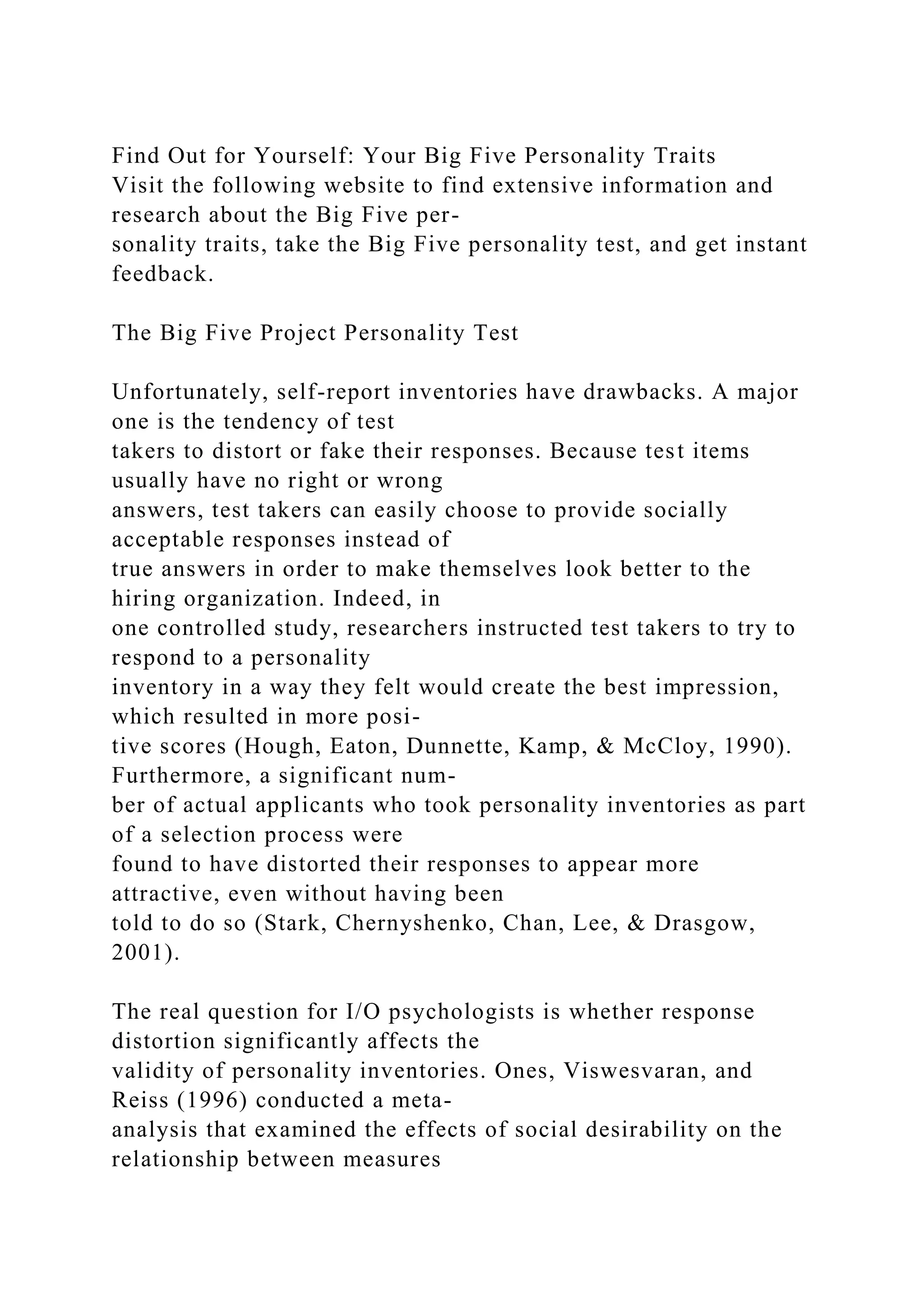

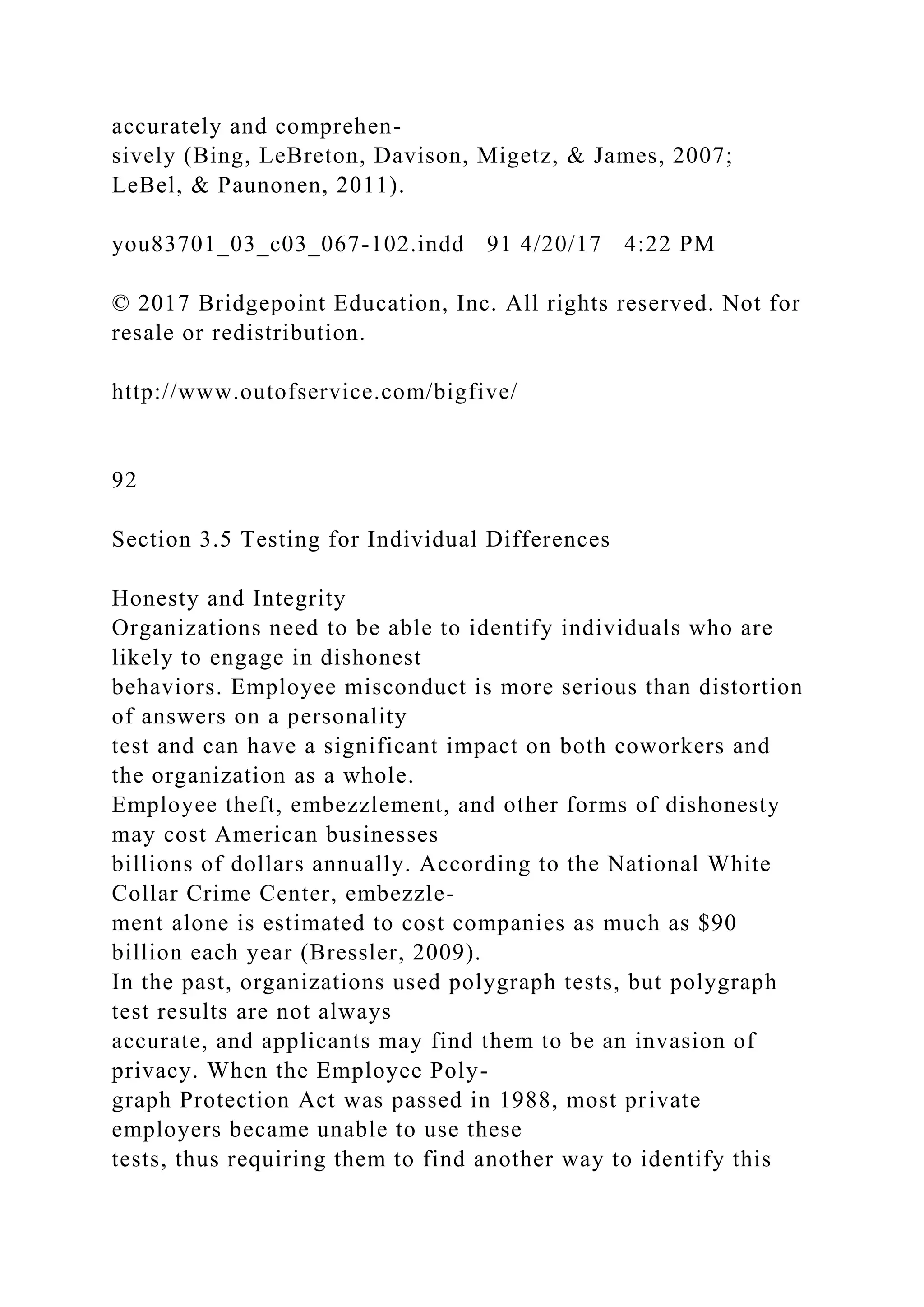


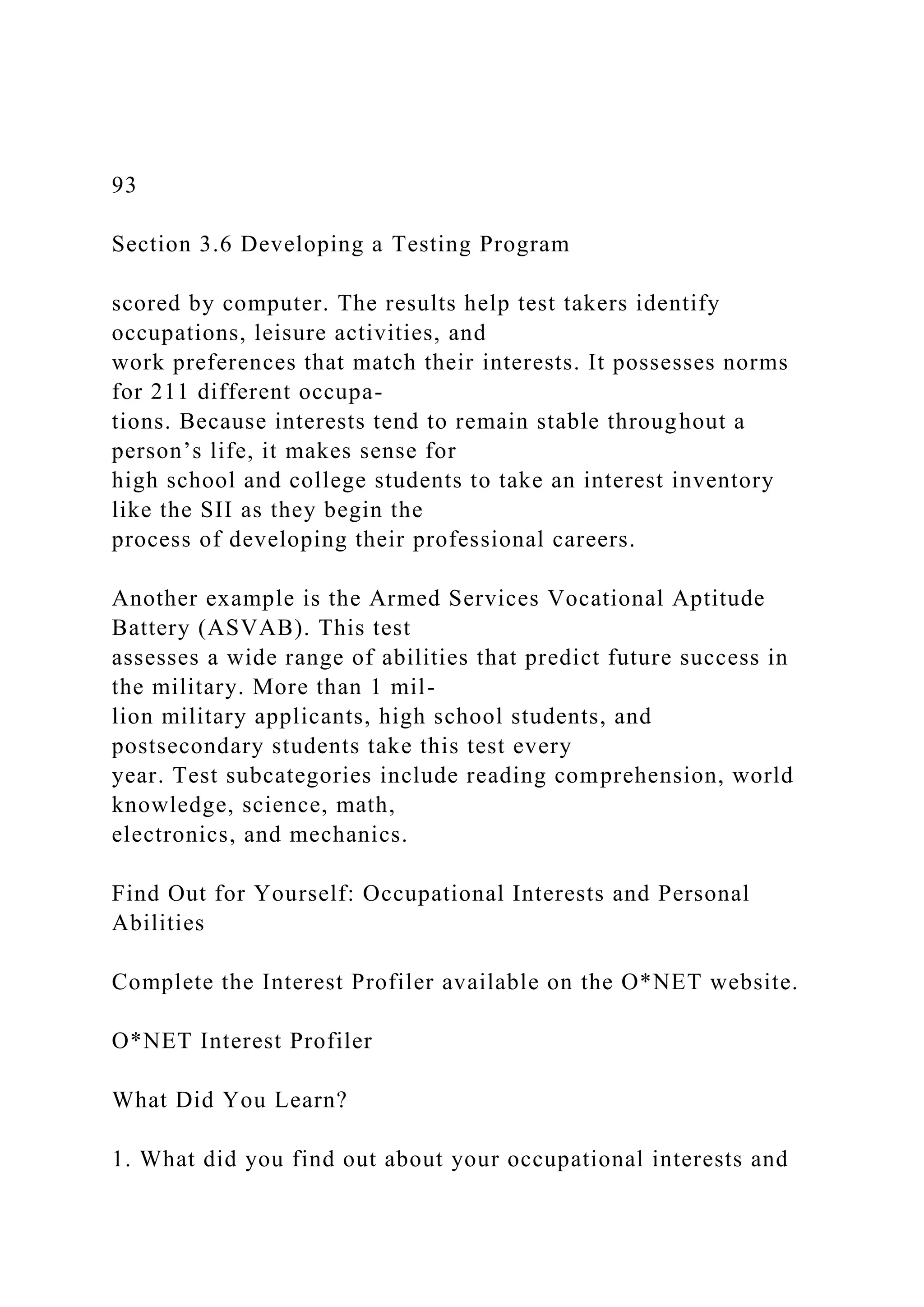
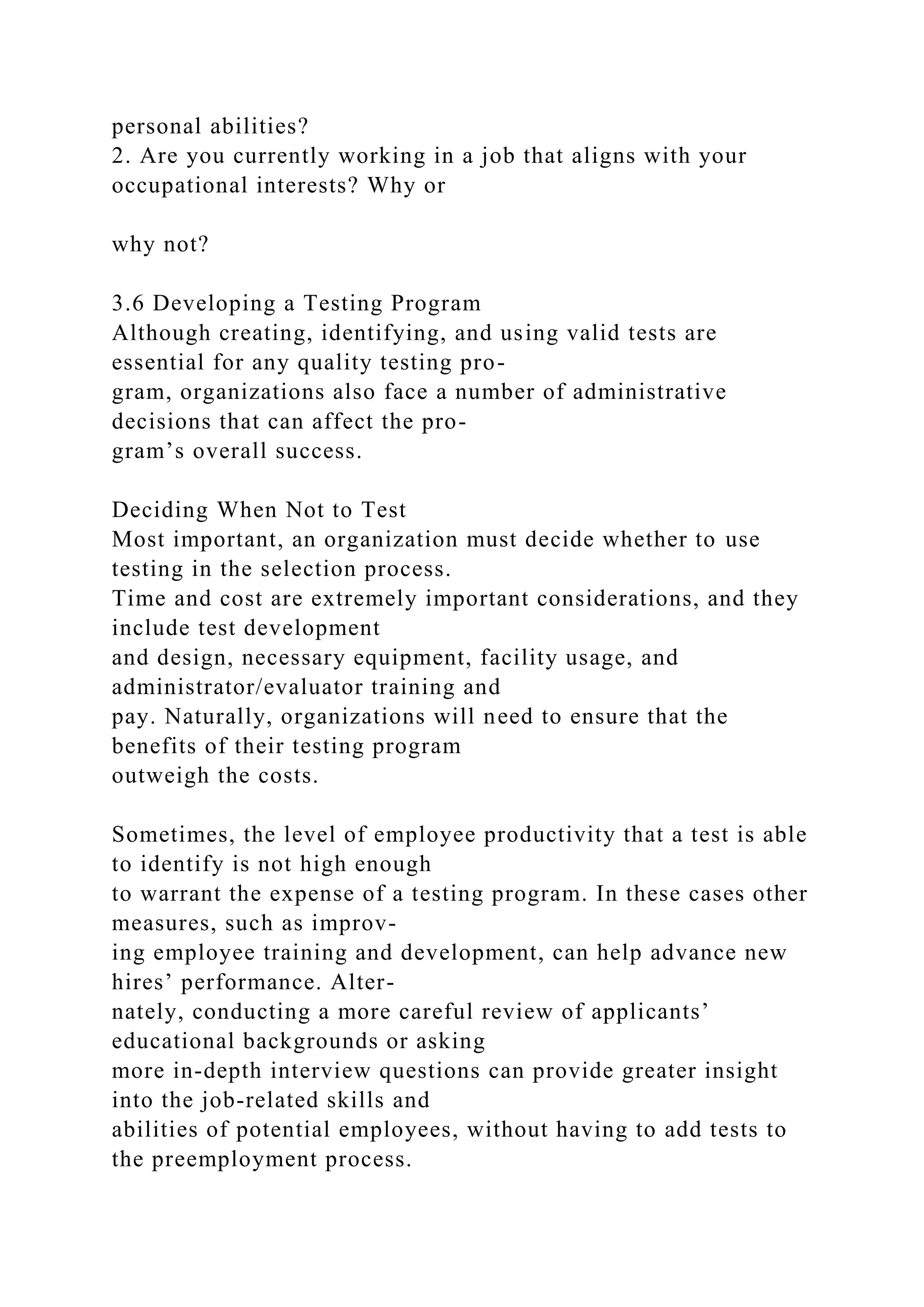


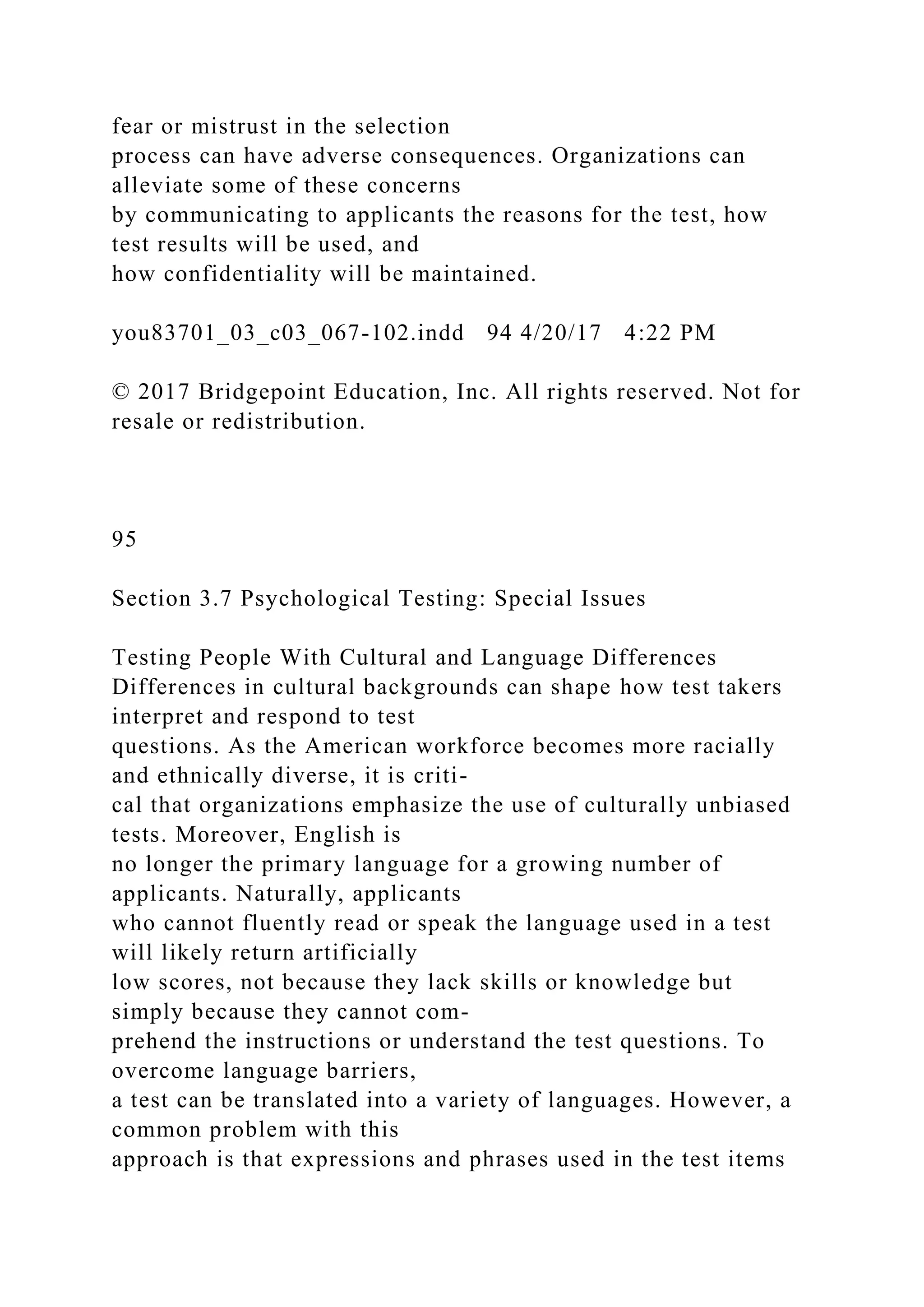
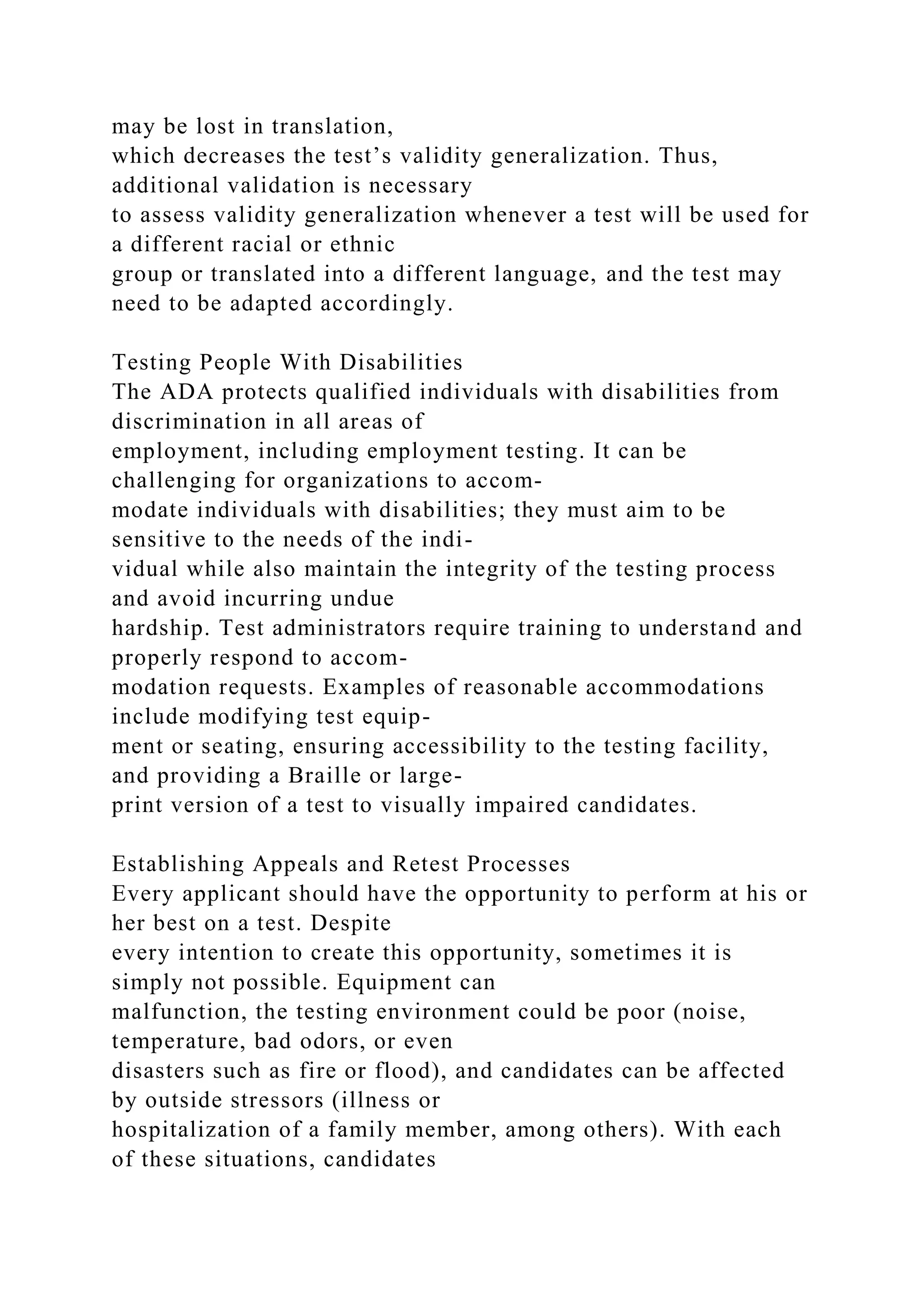
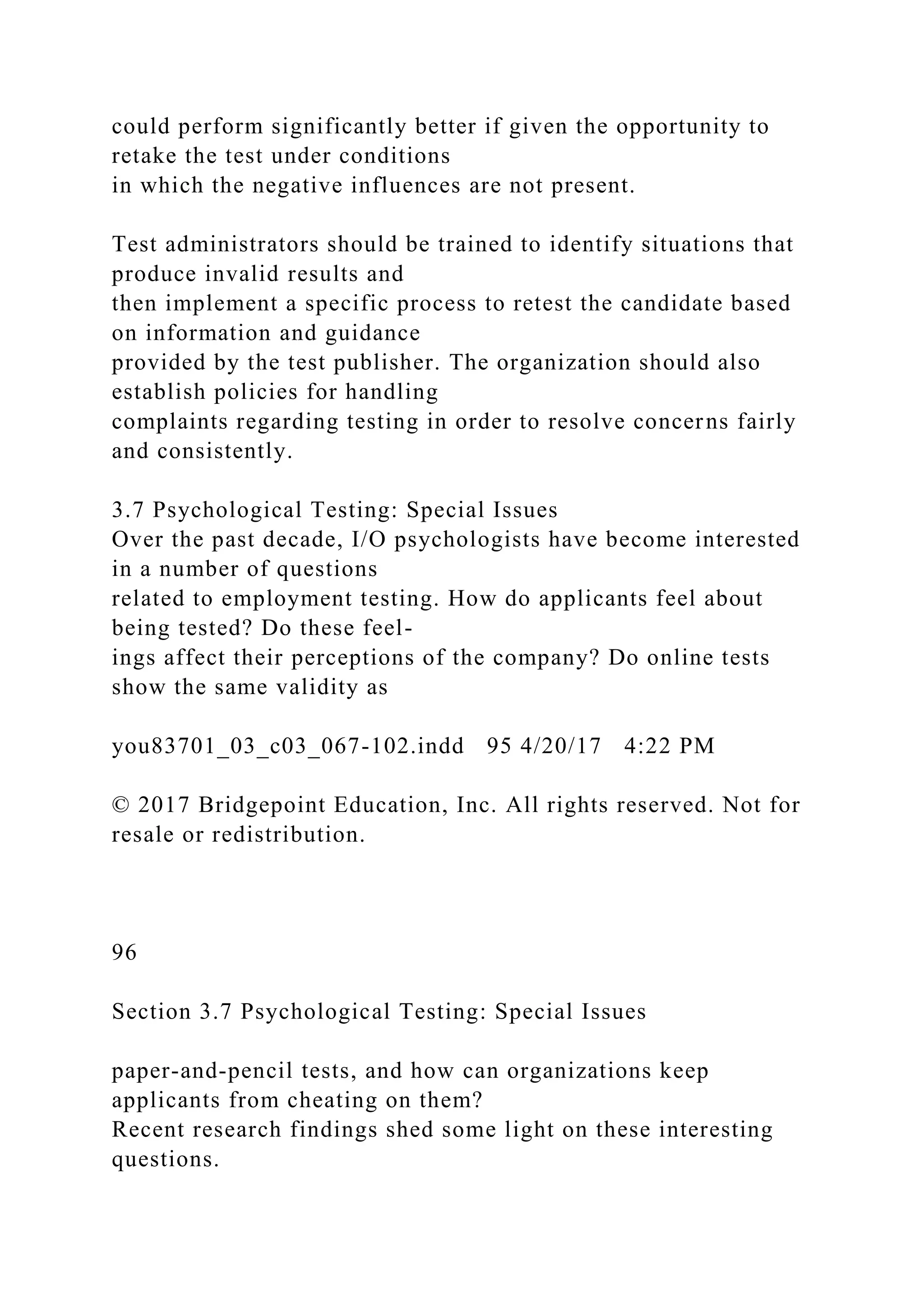
![Applicants’ Reactions to Tests
Most research about testing has focused on technical aspects—
content, type, statistical mea-
sures, scoring, and interpretation—and not on social aspects.
The fact is, no matter how use-
ful and important tests are, applicants generally do not like
taking them. According to a study
by Schmit and Ryan (1997), 1 out of 3 Americans have a
negative perception of employment
testing. Another study found that students, after completing a
number of different selection
measures as part of a simulated application process, preferred
hiring processes that excluded
testing (Rosse, Ringer, & Miller, 1996). Additional research has
shown that applicants’ nega-
tive perceptions about tests significantly affect their opinions
about the organization giving
the test. It is important for I/O psychologists to understand how
and why this occurs so they
can adopt testing procedures that are more agreeable to test
takers and that reflect a more
positive organizational image.
Typically, negative reactions to tests lower applicants’
perceptions of several organizational
outcome variables, including organizational attraction (how
much they like a company), job
acceptance intentions (whether they will accept a job offer),
recommendation intentions
(whether they will tell others to patronize or apply for a job at
the company), and purchasing
intentions (whether they will shop at or do business with the
company). A study conducted
in 2006 found that “[e]mployment tests provide organizations
with a serious dilemma [: . . .]](https://image.slidesharecdn.com/673foundationsofpsychologicaltestingnoelhendrick-221108012202-58ccfef5/75/673Foundations-of-Psychological-TestingNoel-Hendrick-docx-74-2048.jpg)
![how can [they] administer assessments in order to take
advantage of their predictive capa-
bilities without offending the applicants they are trying to
attract?” (Noon, 2006, p. 2). With
the increasing war for top-quality talent, organizations must
develop recruitment and selec-
tion tools that attract, rather than drive away, highly qualified
personnel.
What Can Be Done?
I/O psychologists have addressed this dilemma by identifying
several ways to improve testing
perceptions. One is to increase the test’s face validity. For
example, applicants typically view
cognitive ability tests negatively, but their reactions change if
the test items are rewritten
to reflect a business-situation perspective. Similarly,
organizations can use test formats that
already tend to be viewed positively, such as assessment centers
and work samples, because
they are easily relatable to the job (Smither et al., 1993).
Providing applicants with information about the test is another,
less costly way to improve
perceptions. Applicants can be told what a test is intended to
measure, why it is necessary,
who will see the results, and how these will be used (Ployhart &
Hayes, 2003). Doing so should
lead applicants to view both the organization and its treatment
of them during the selection
process more favorably (Gilliland, 1993). Noon’s 2006 study
investigated applicants’ reac-
tions to completing cognitive ability and personality tests as
part of the selection process for
a data-processing position. Half of the applicants received
detailed information explaining](https://image.slidesharecdn.com/673foundationsofpsychologicaltestingnoelhendrick-221108012202-58ccfef5/75/673Foundations-of-Psychological-TestingNoel-Hendrick-docx-75-2048.jpg)

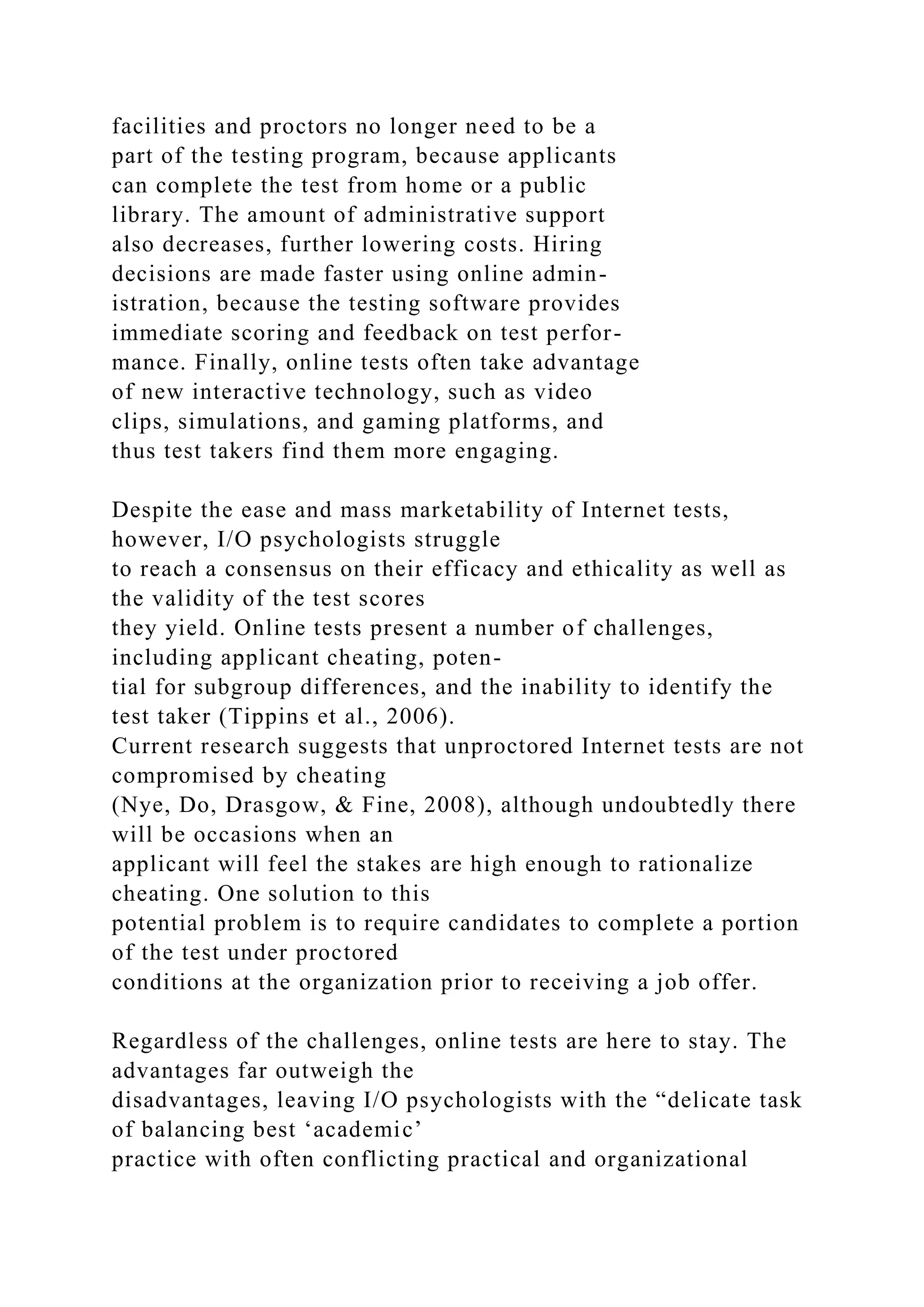
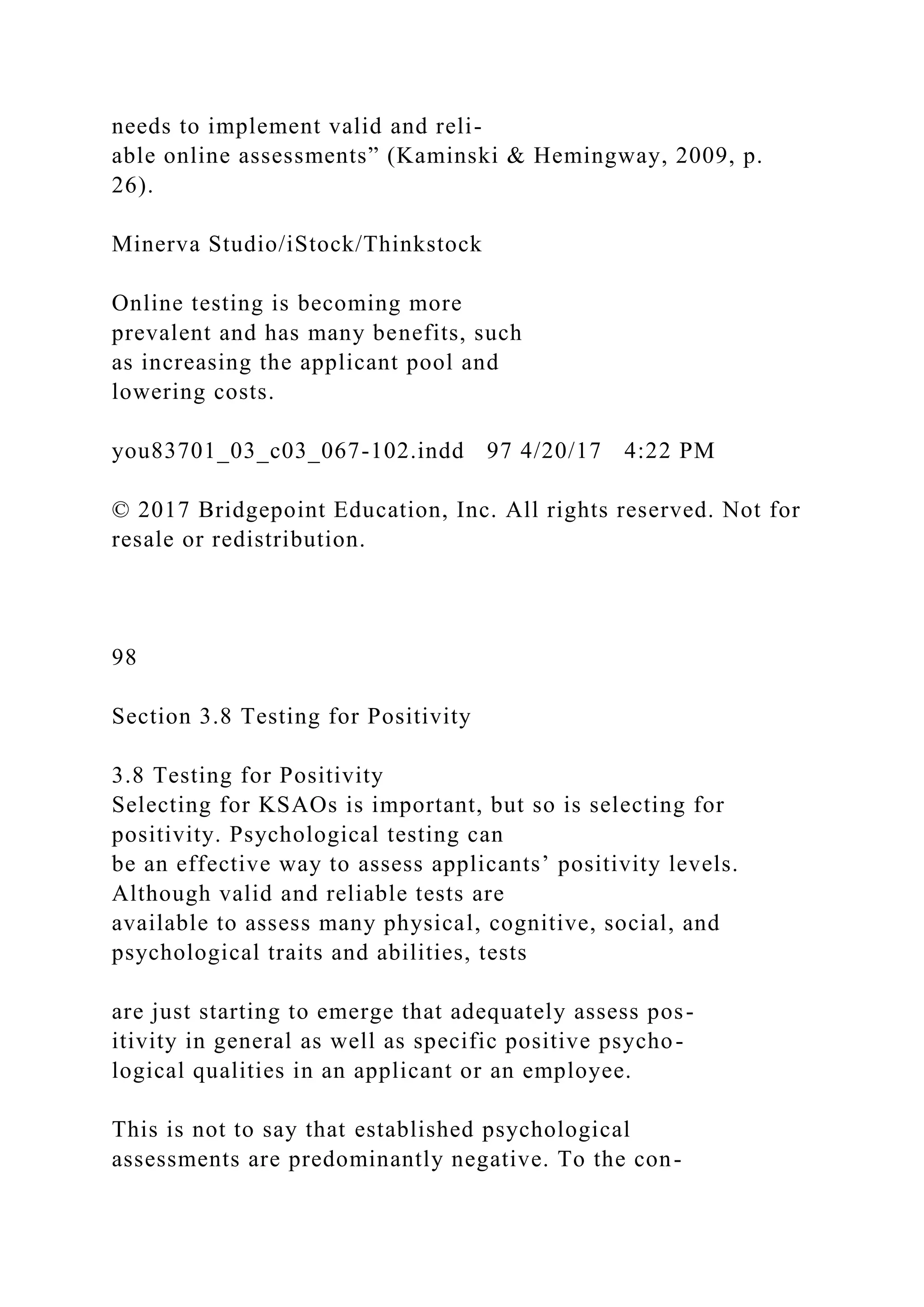

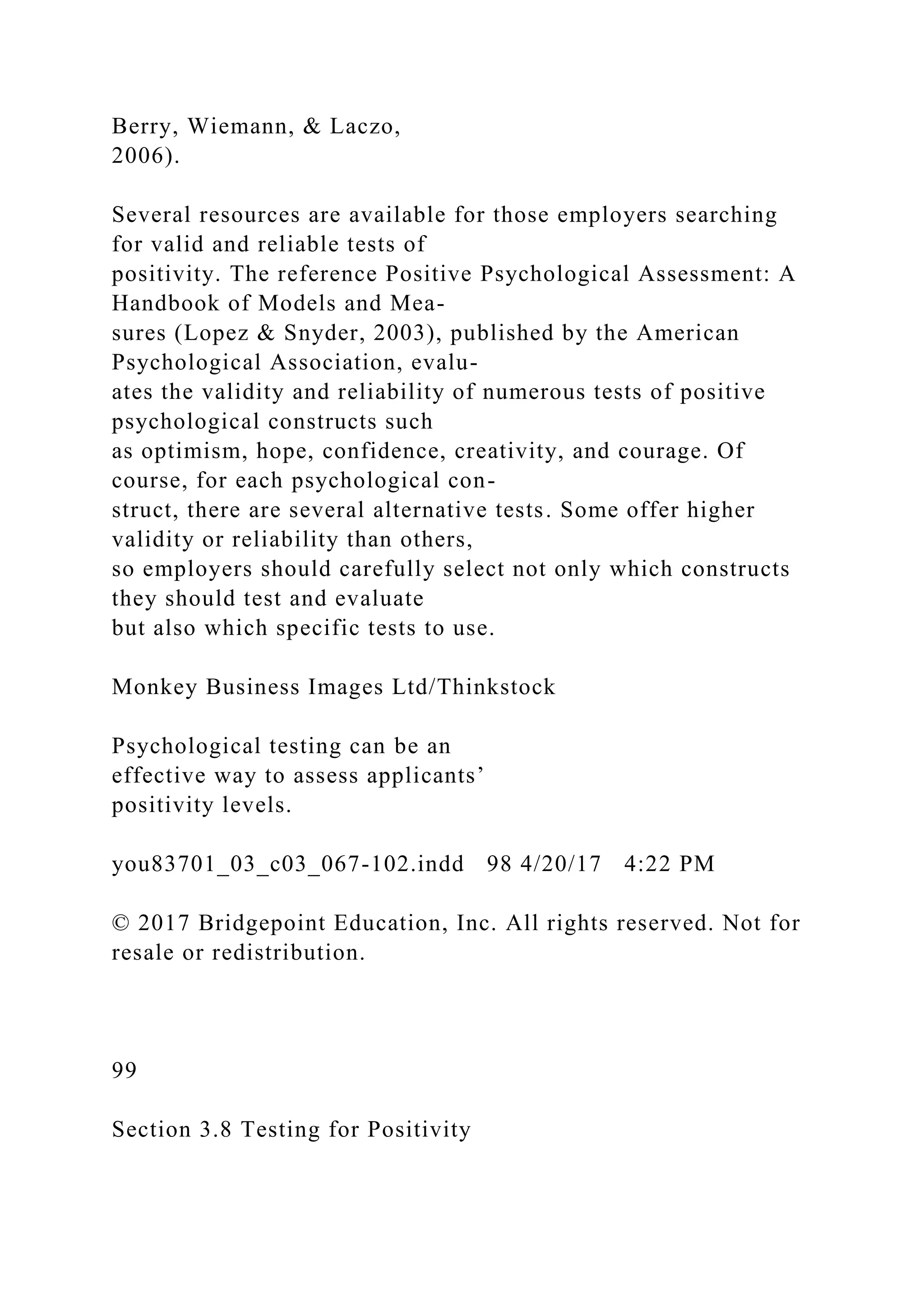
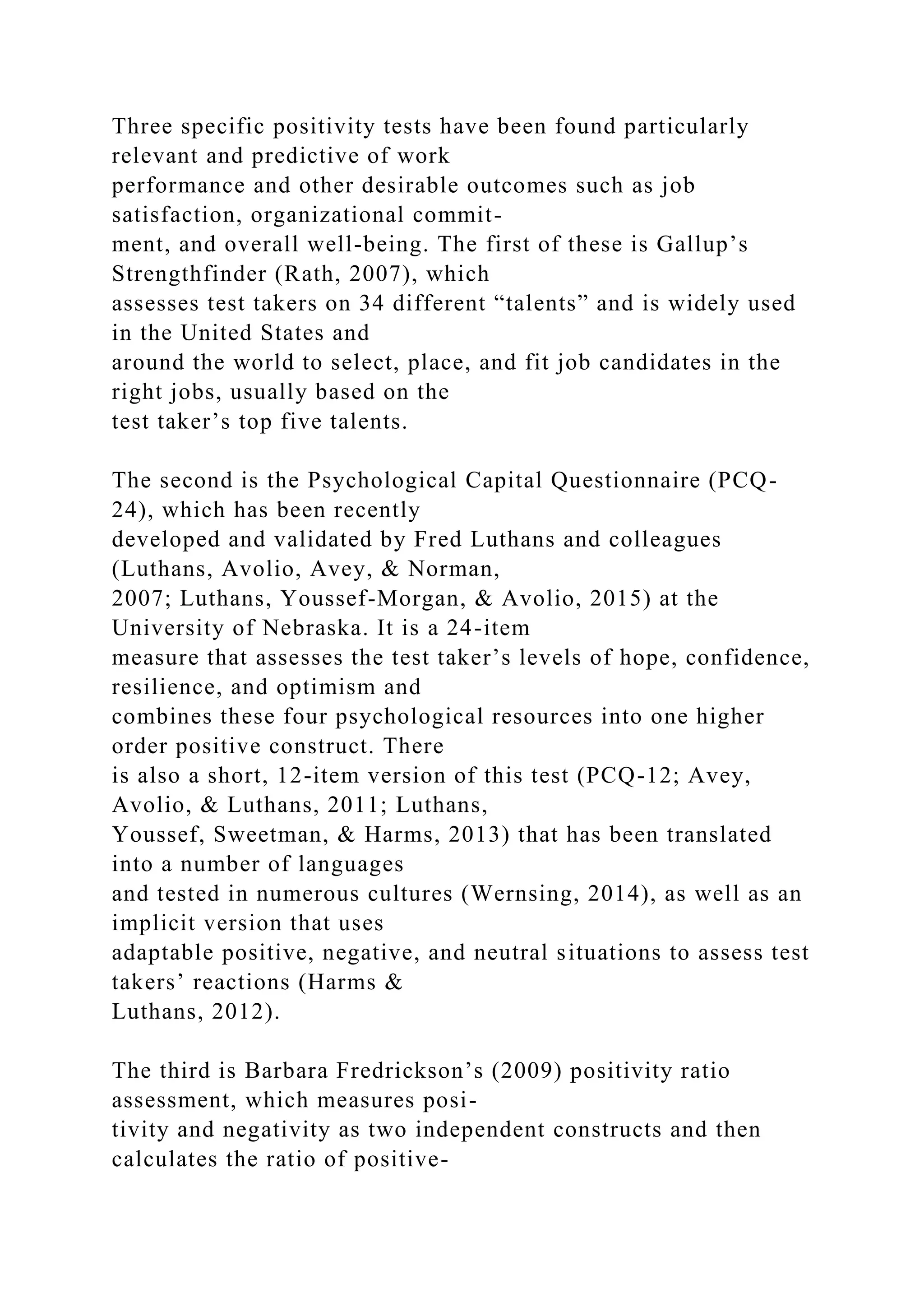
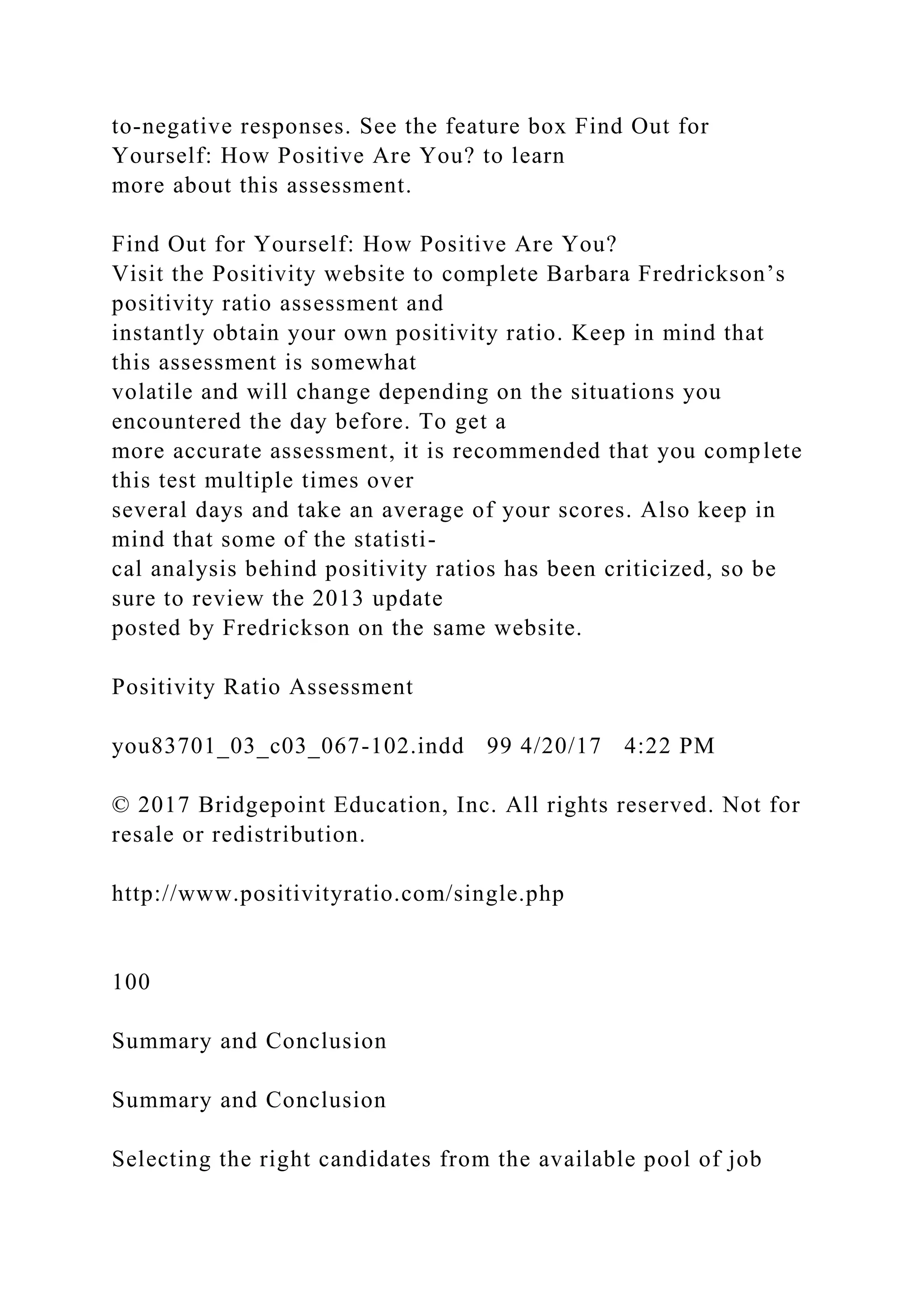

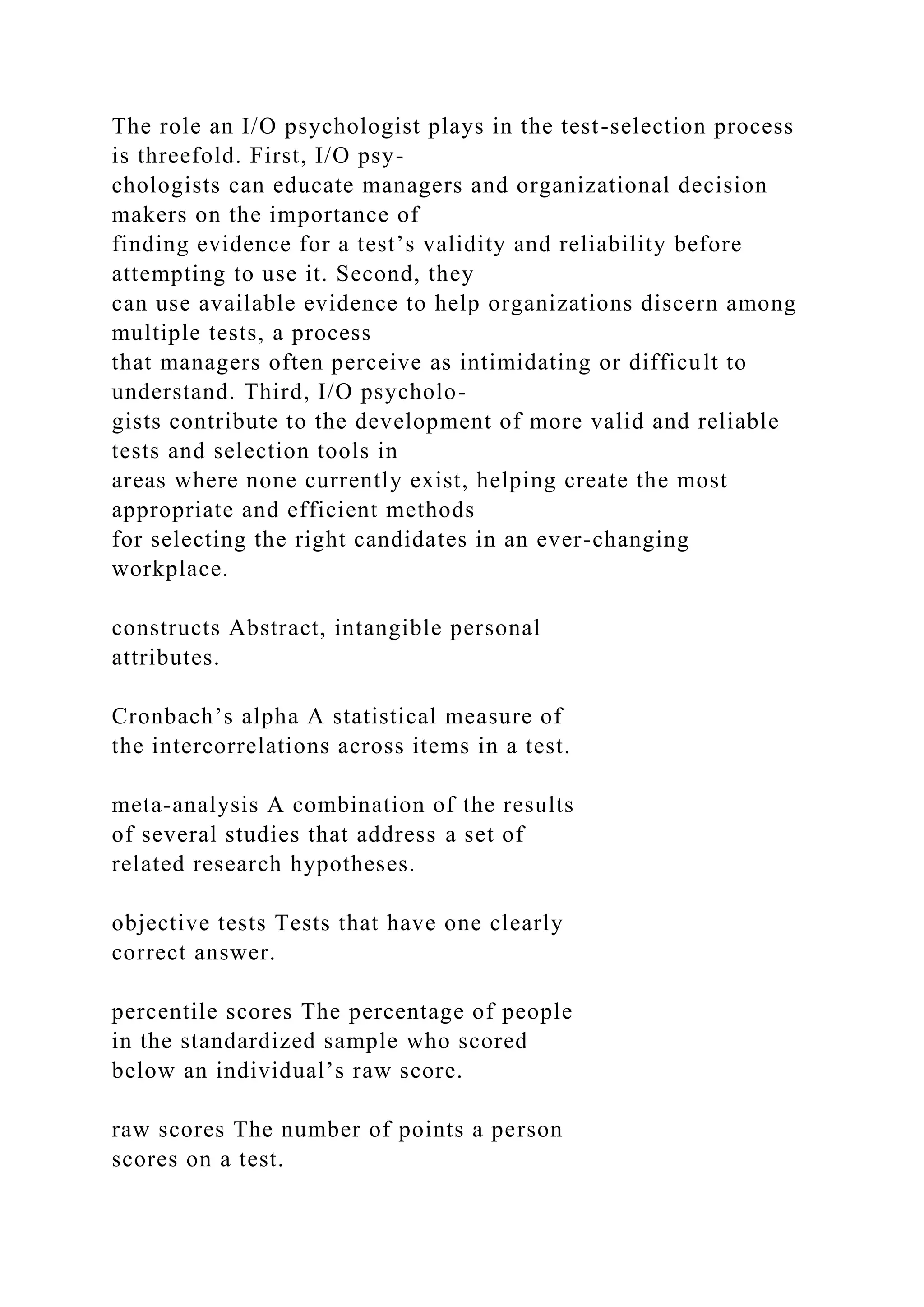
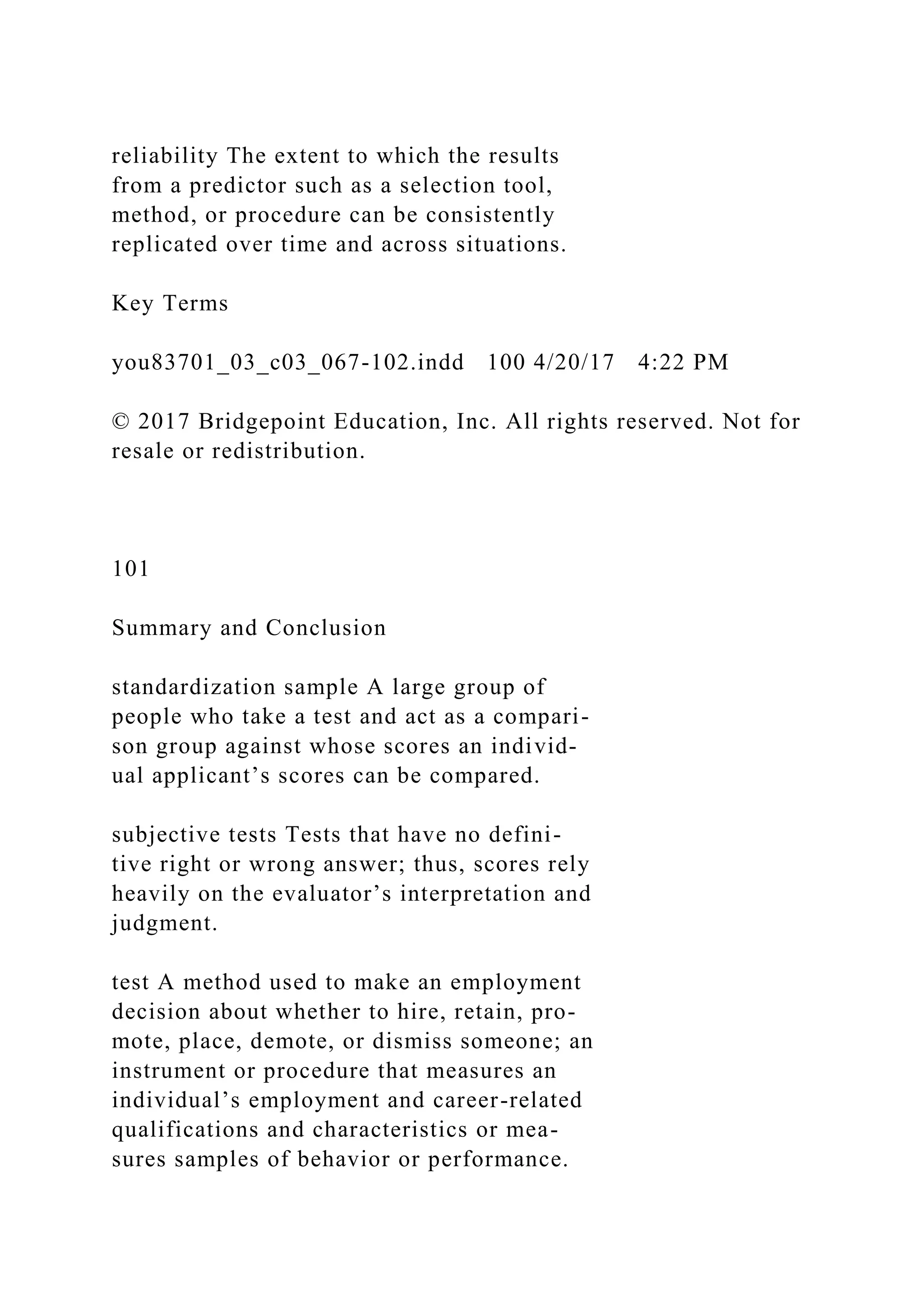
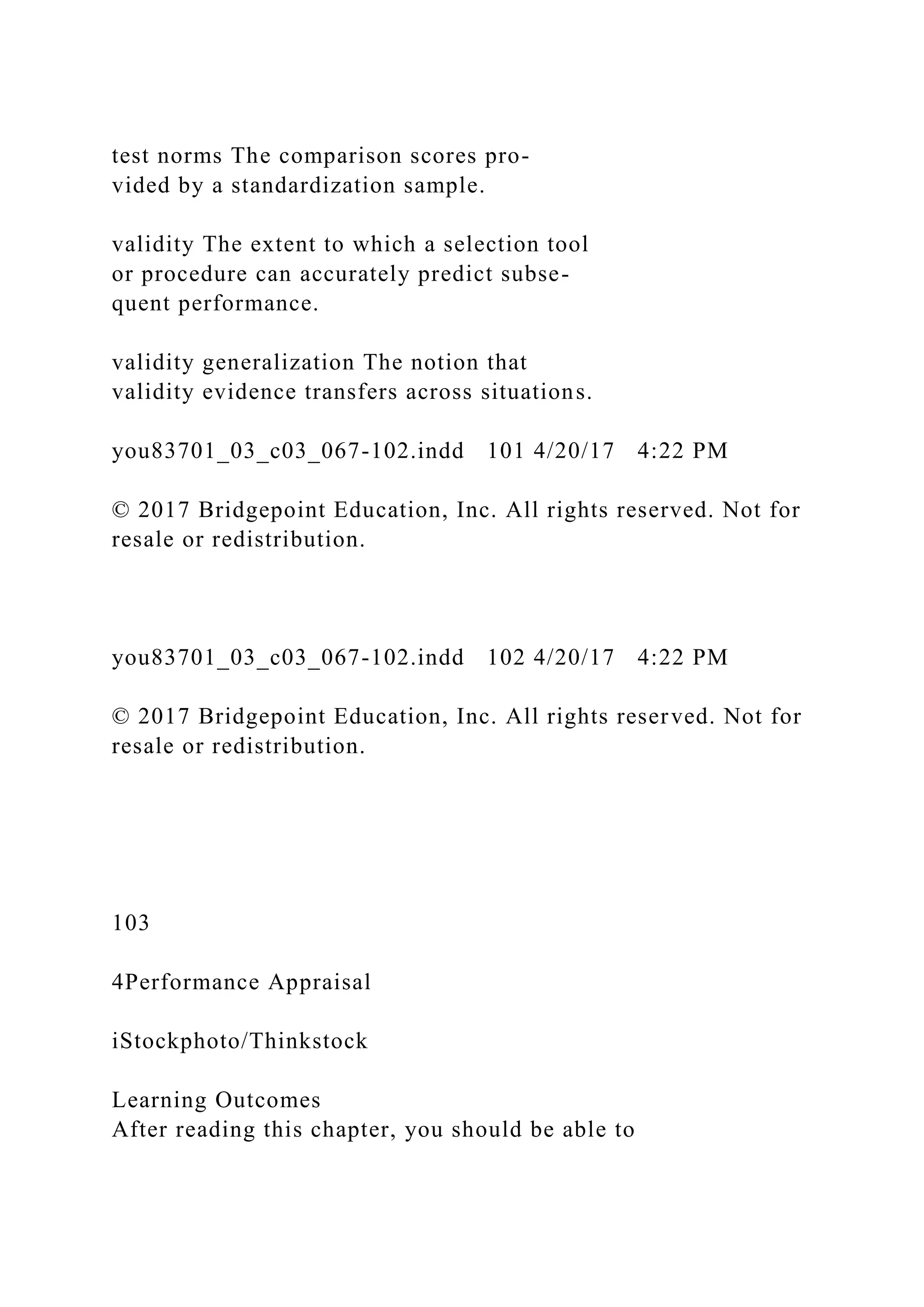
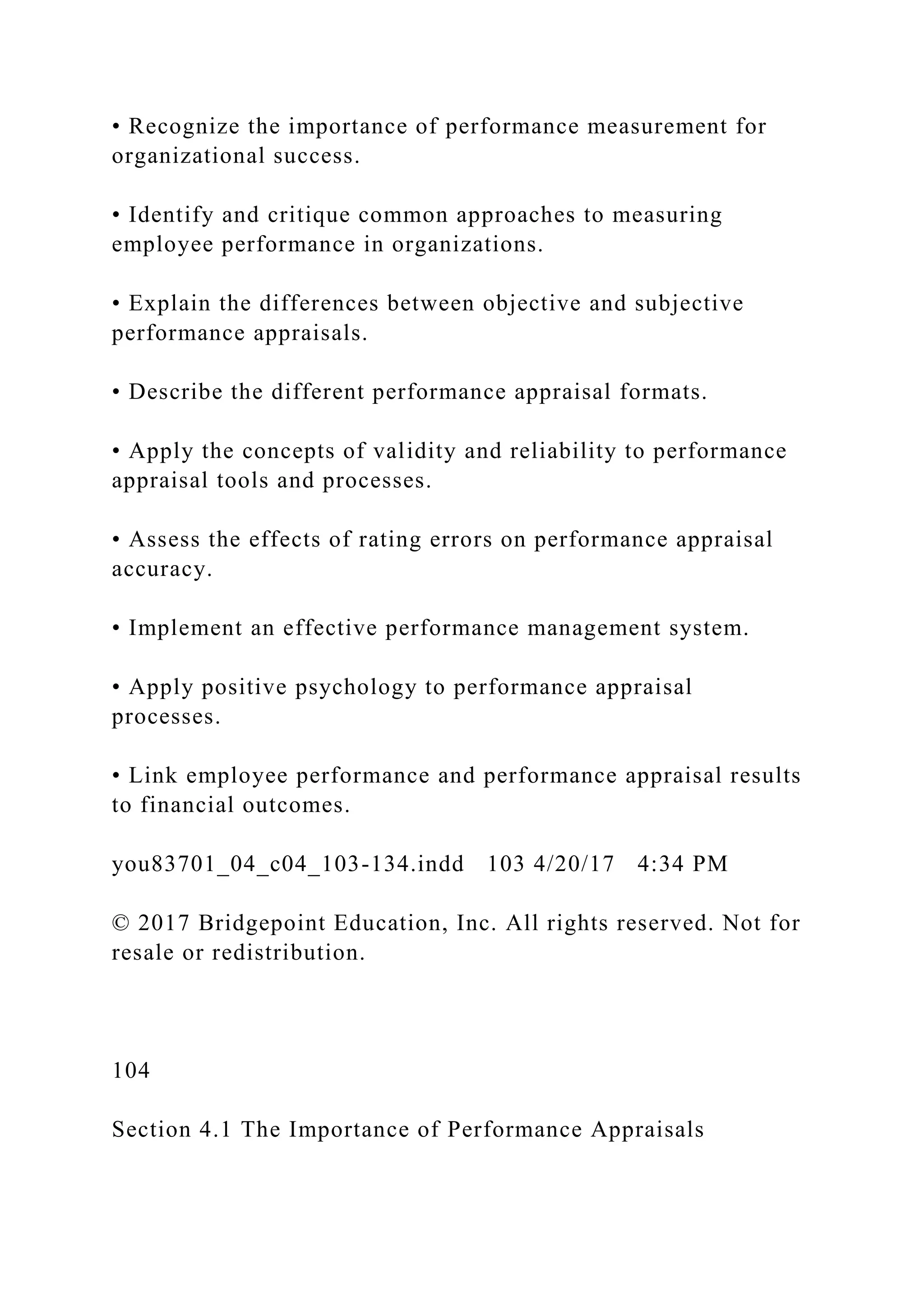

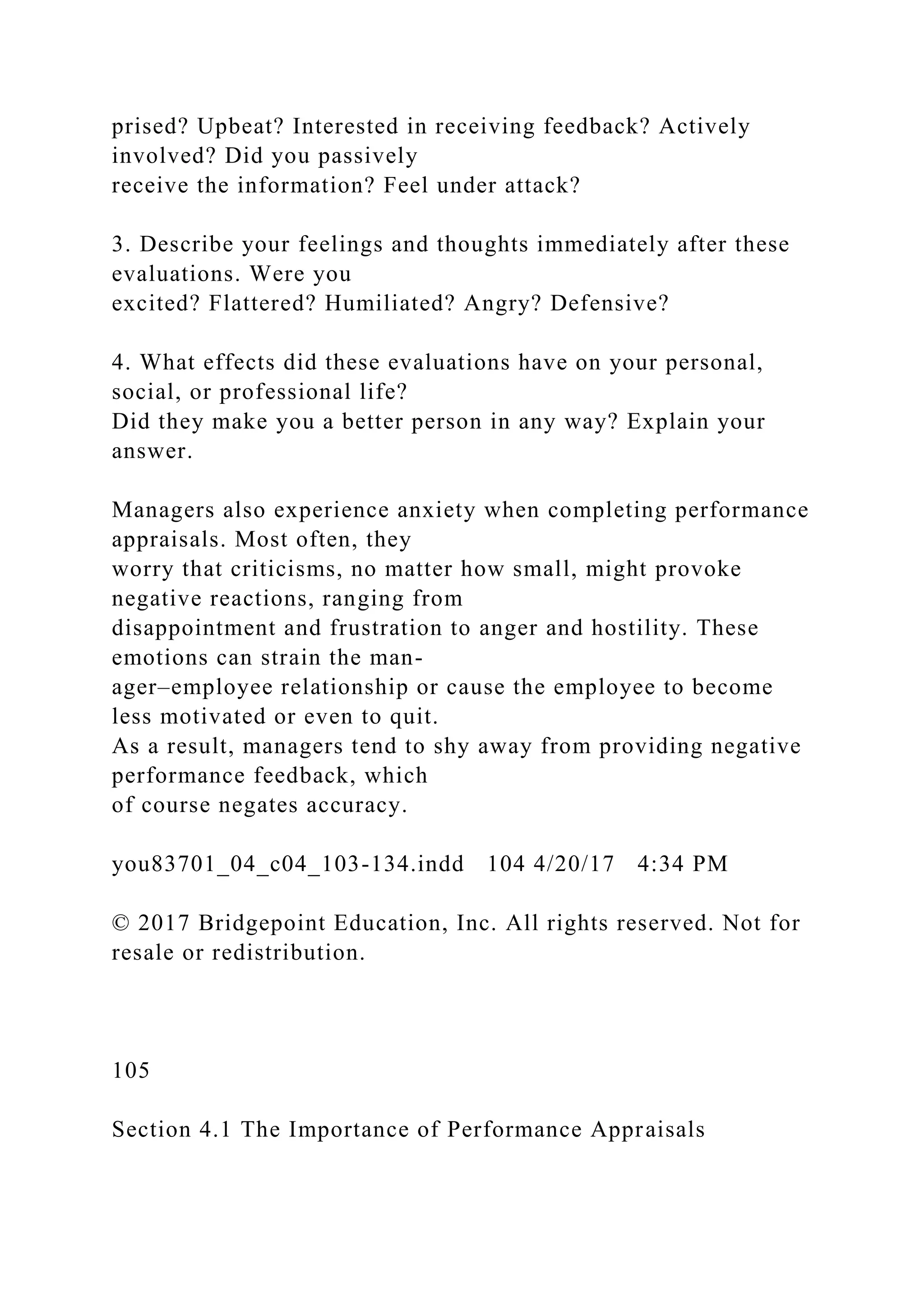

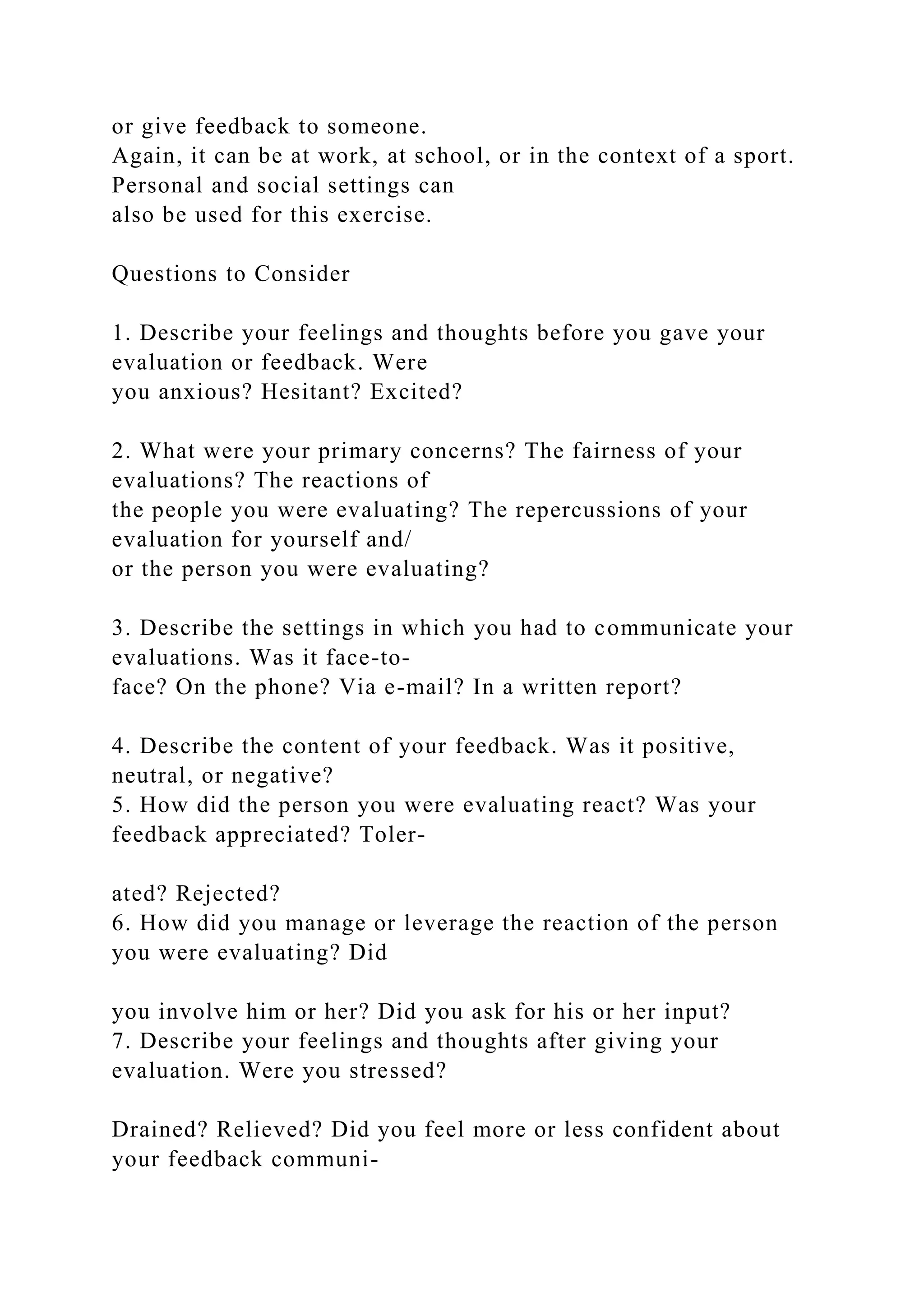

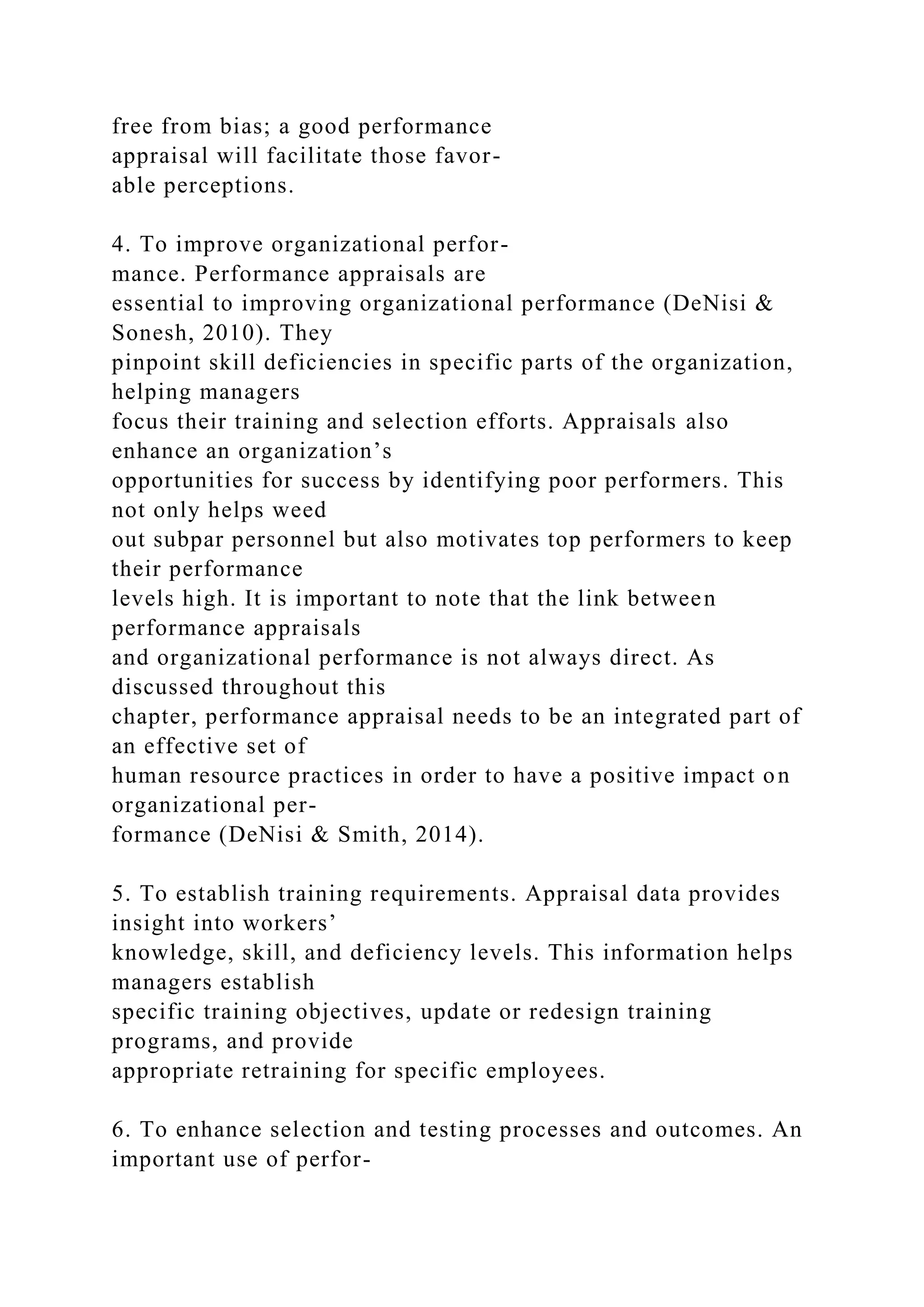
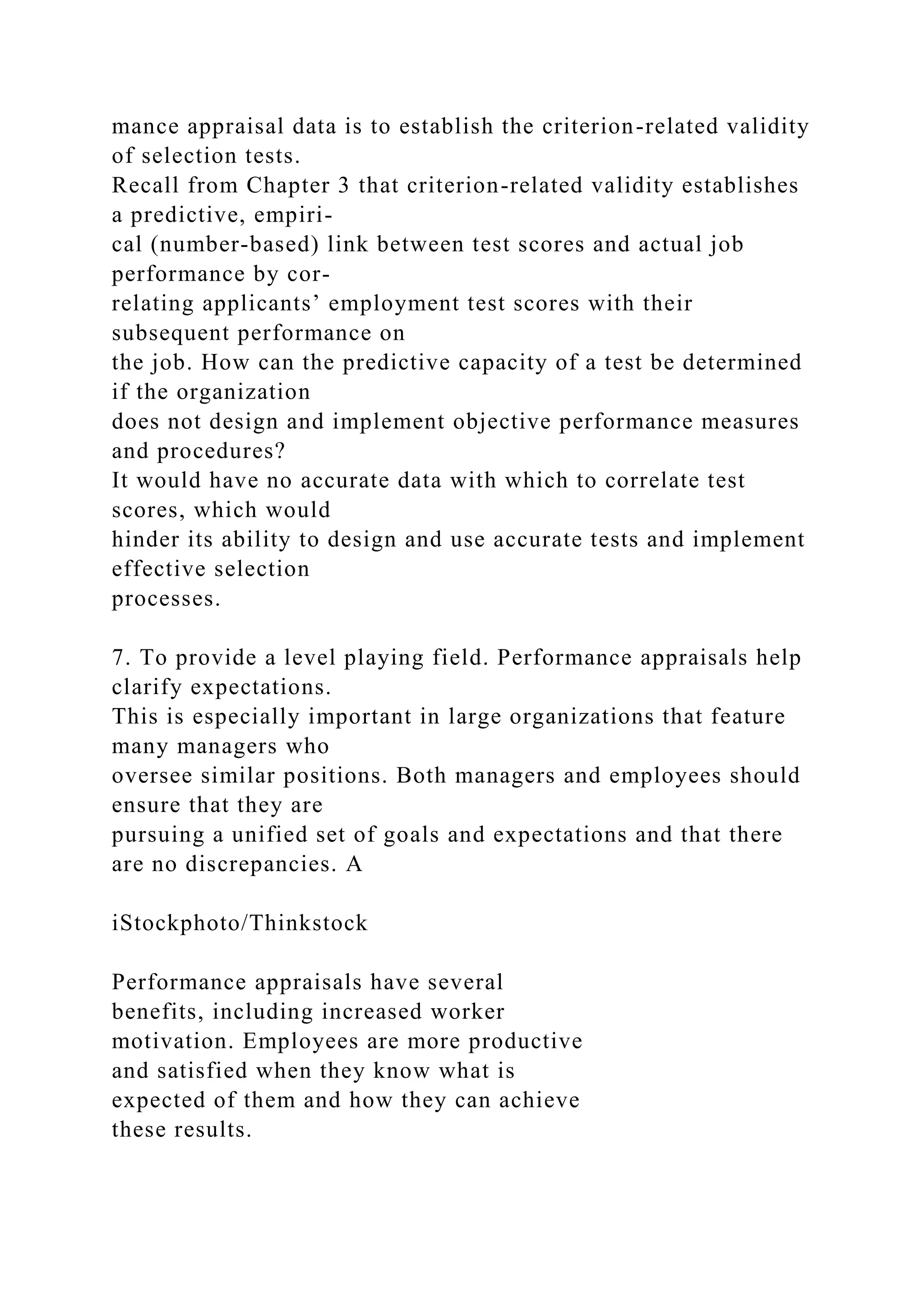
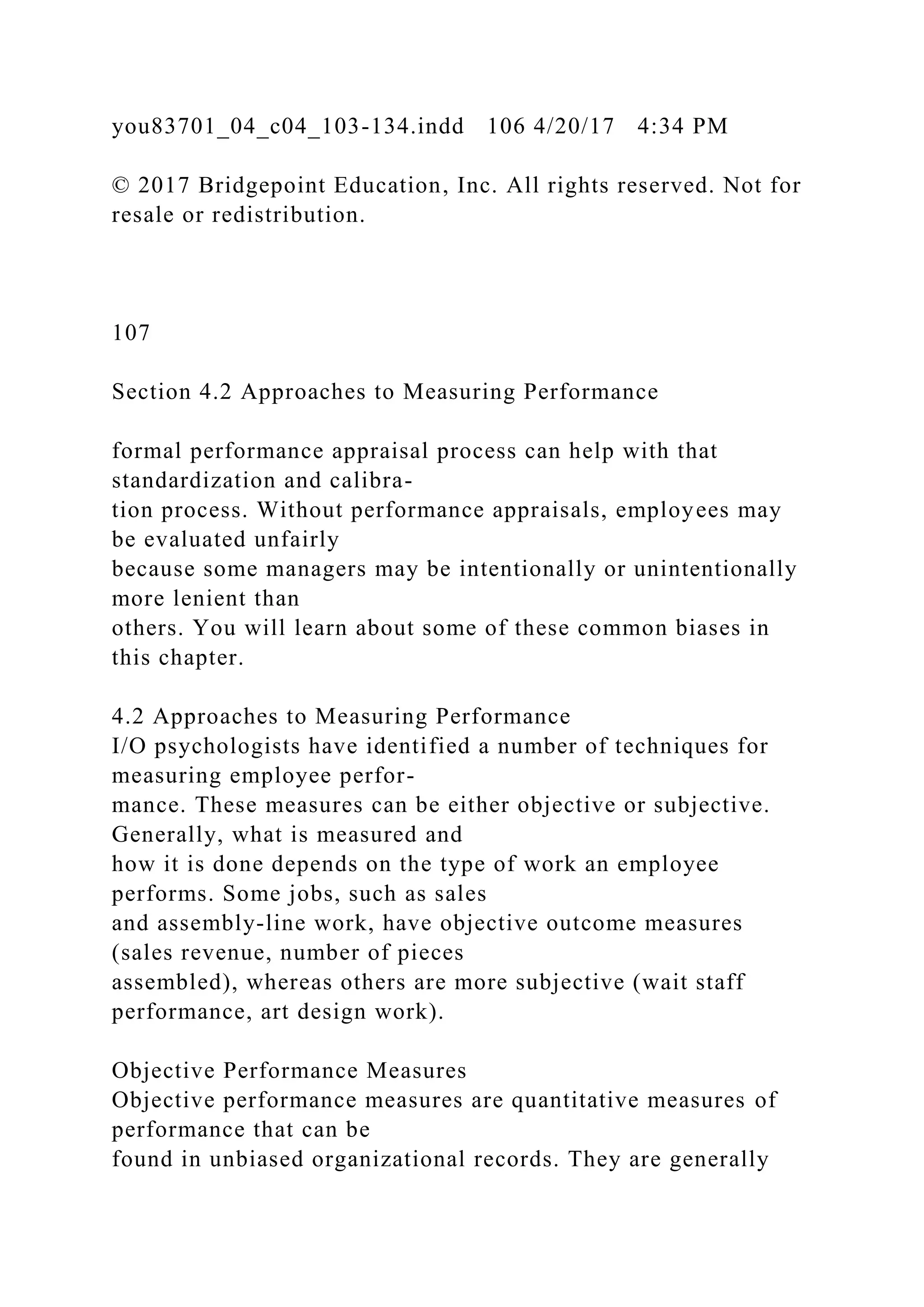
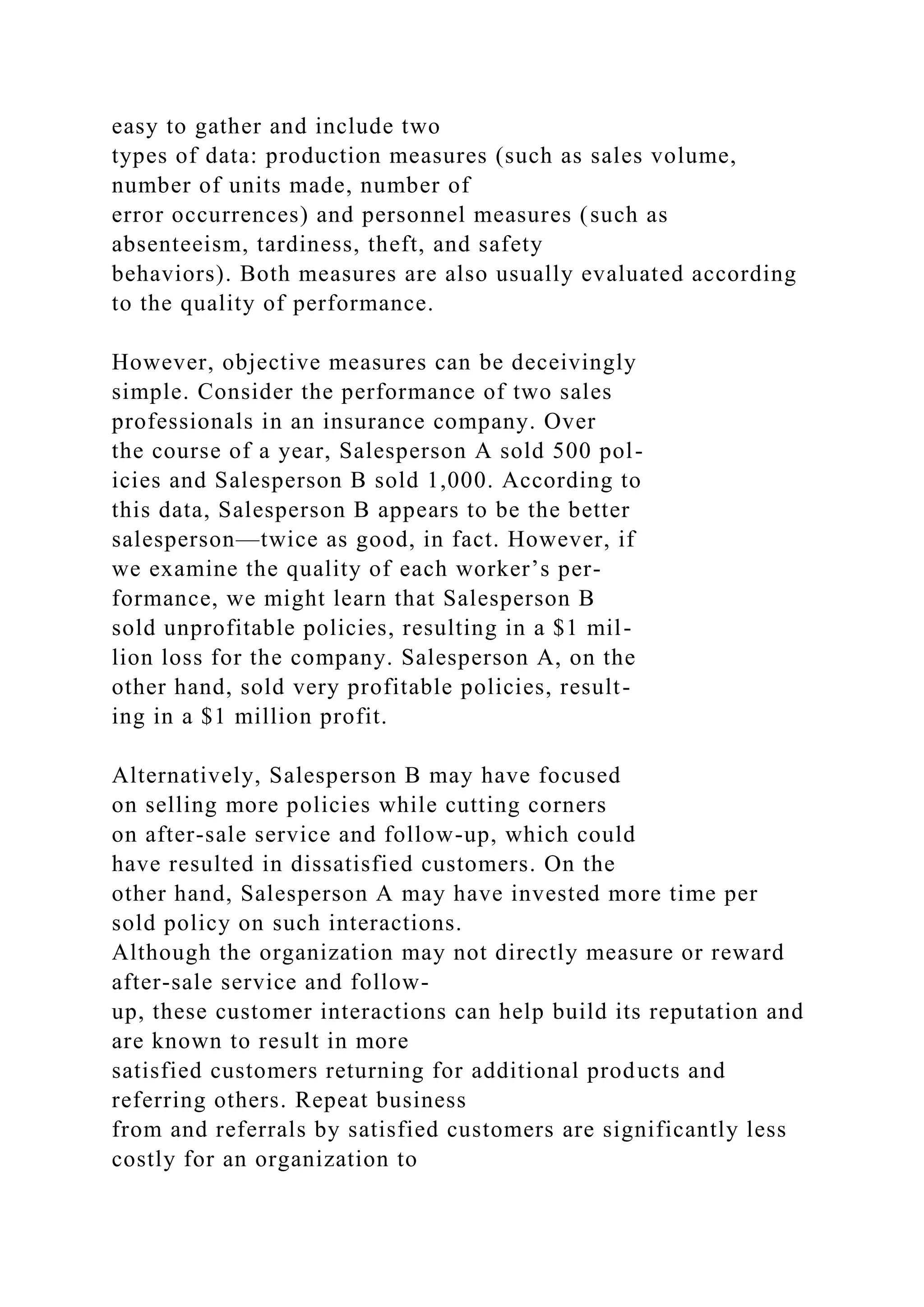
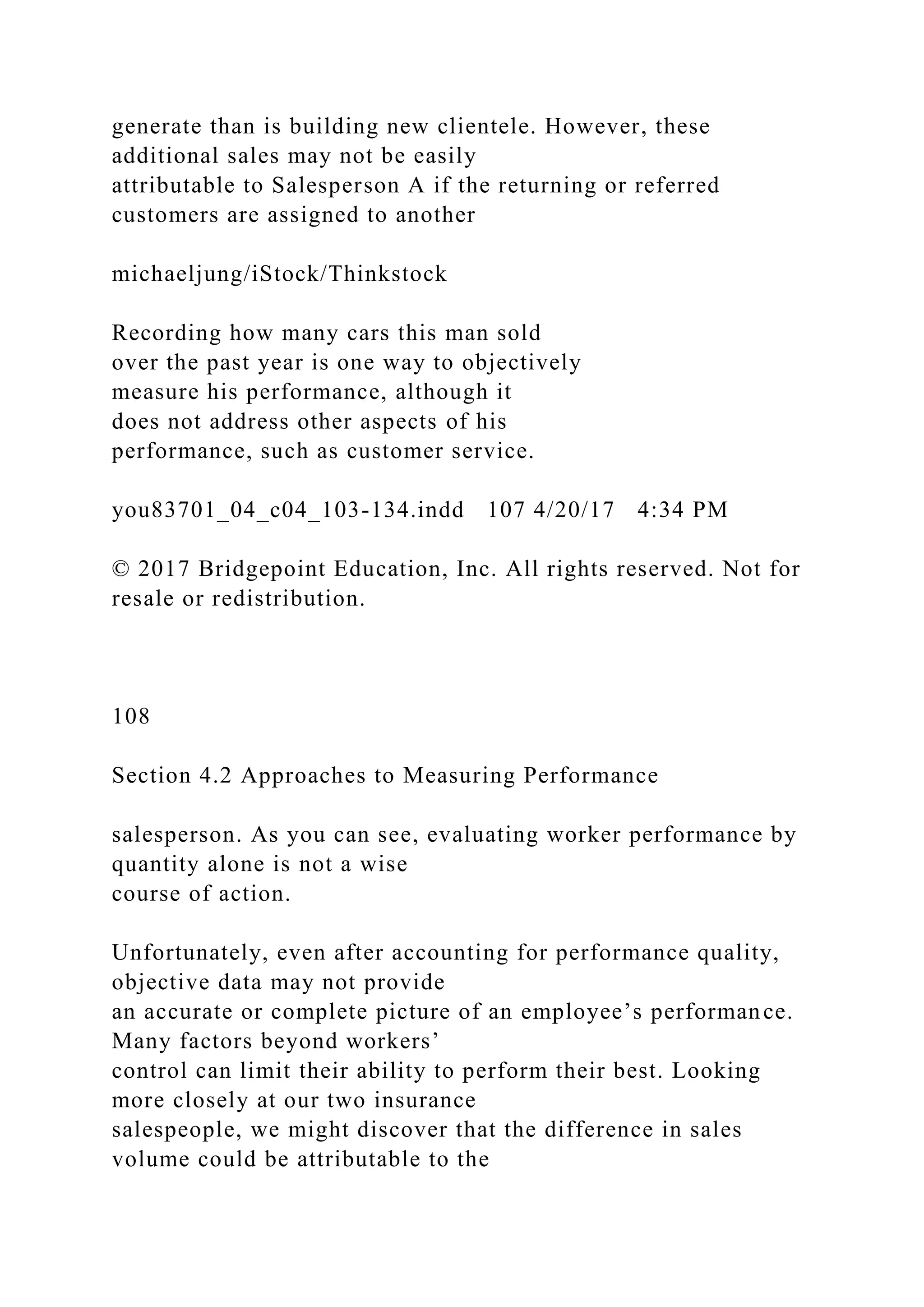
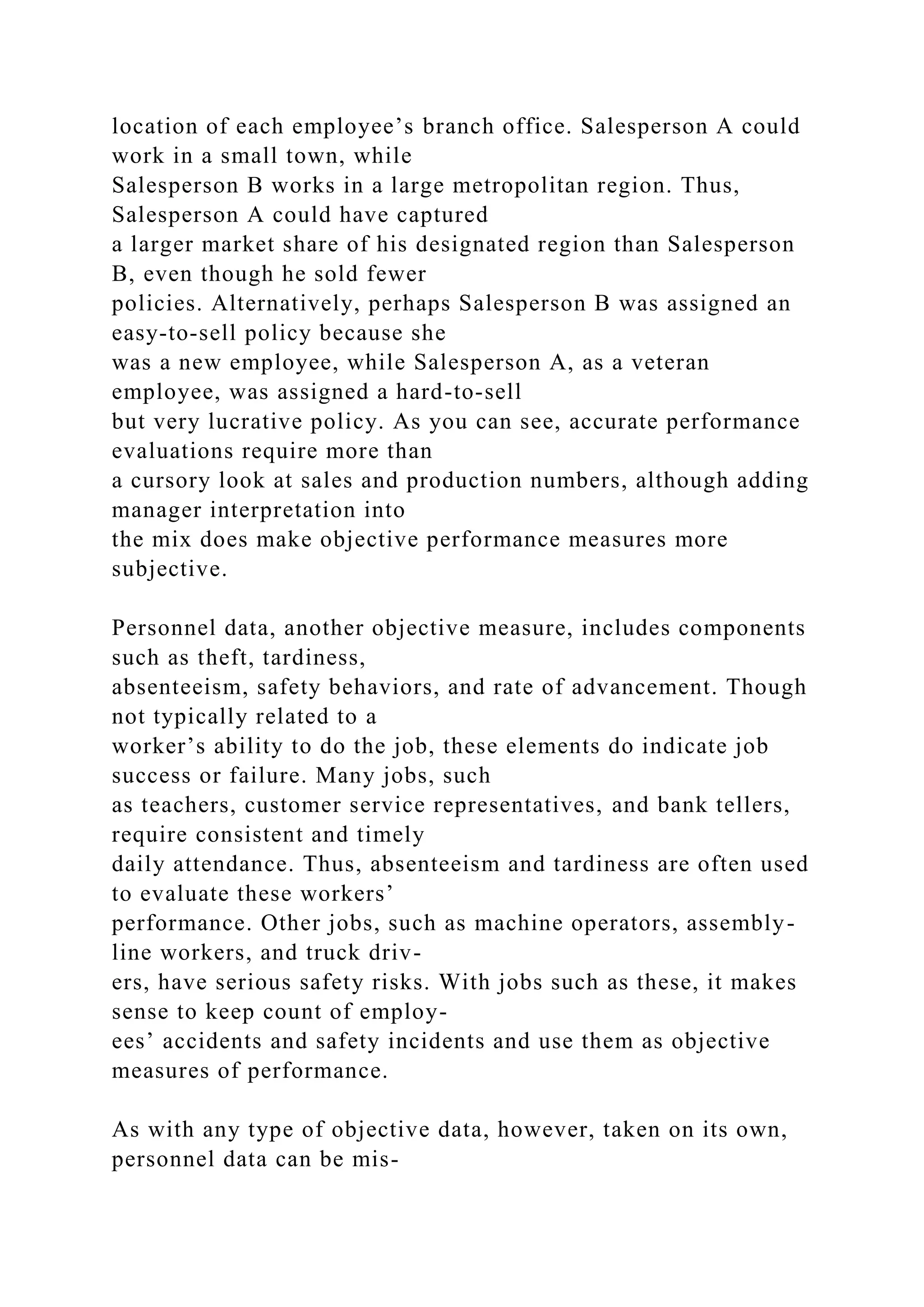
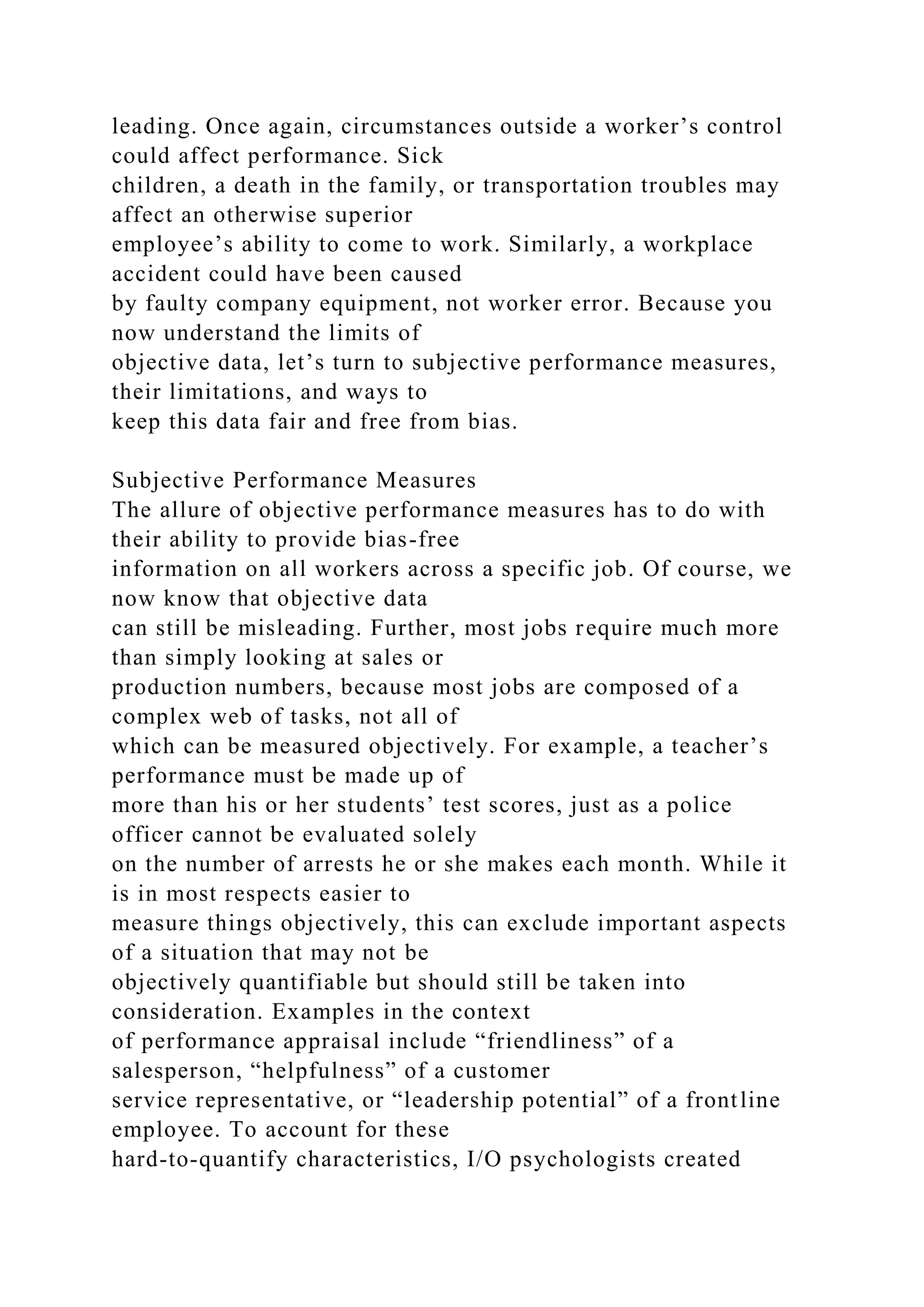
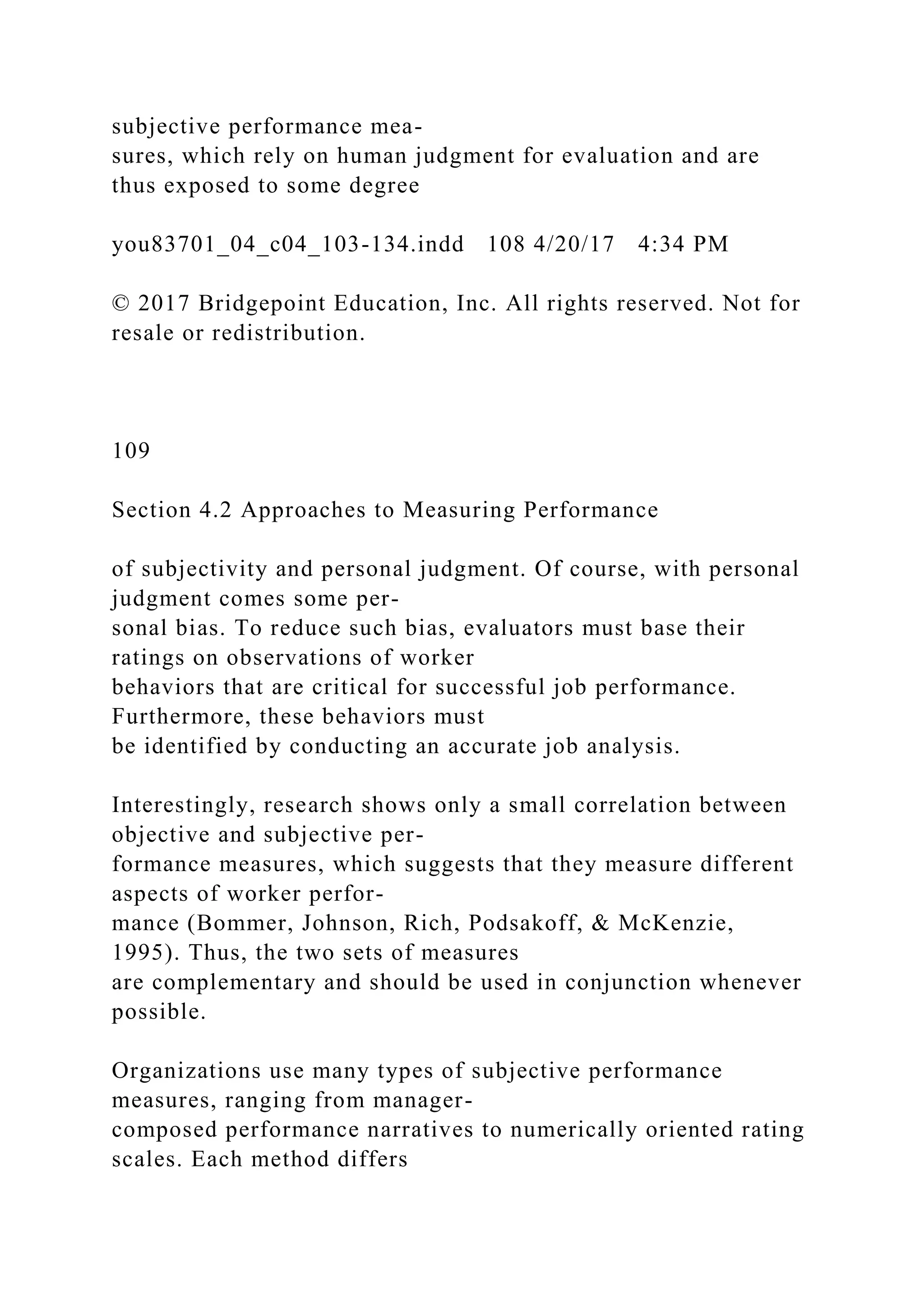
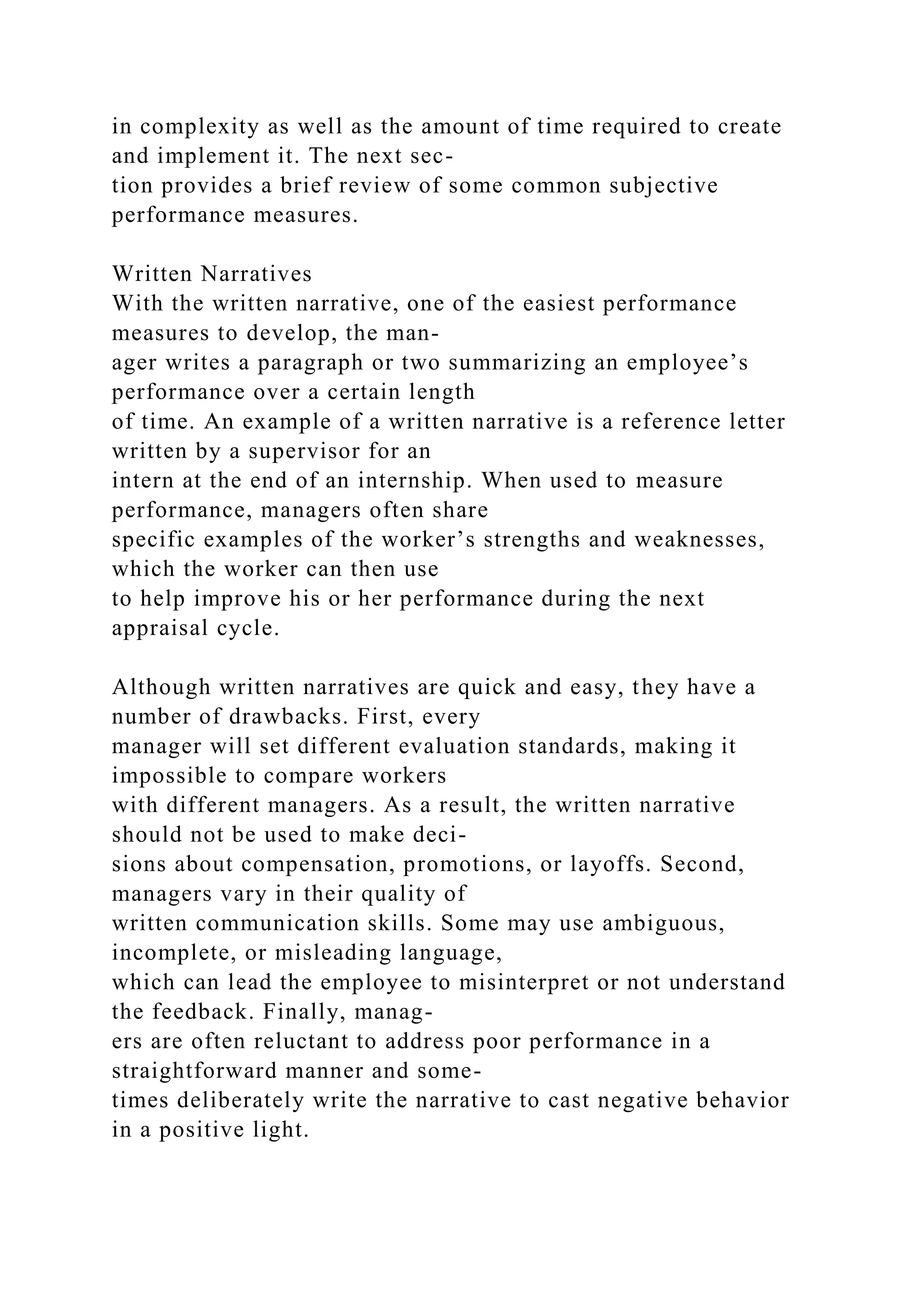
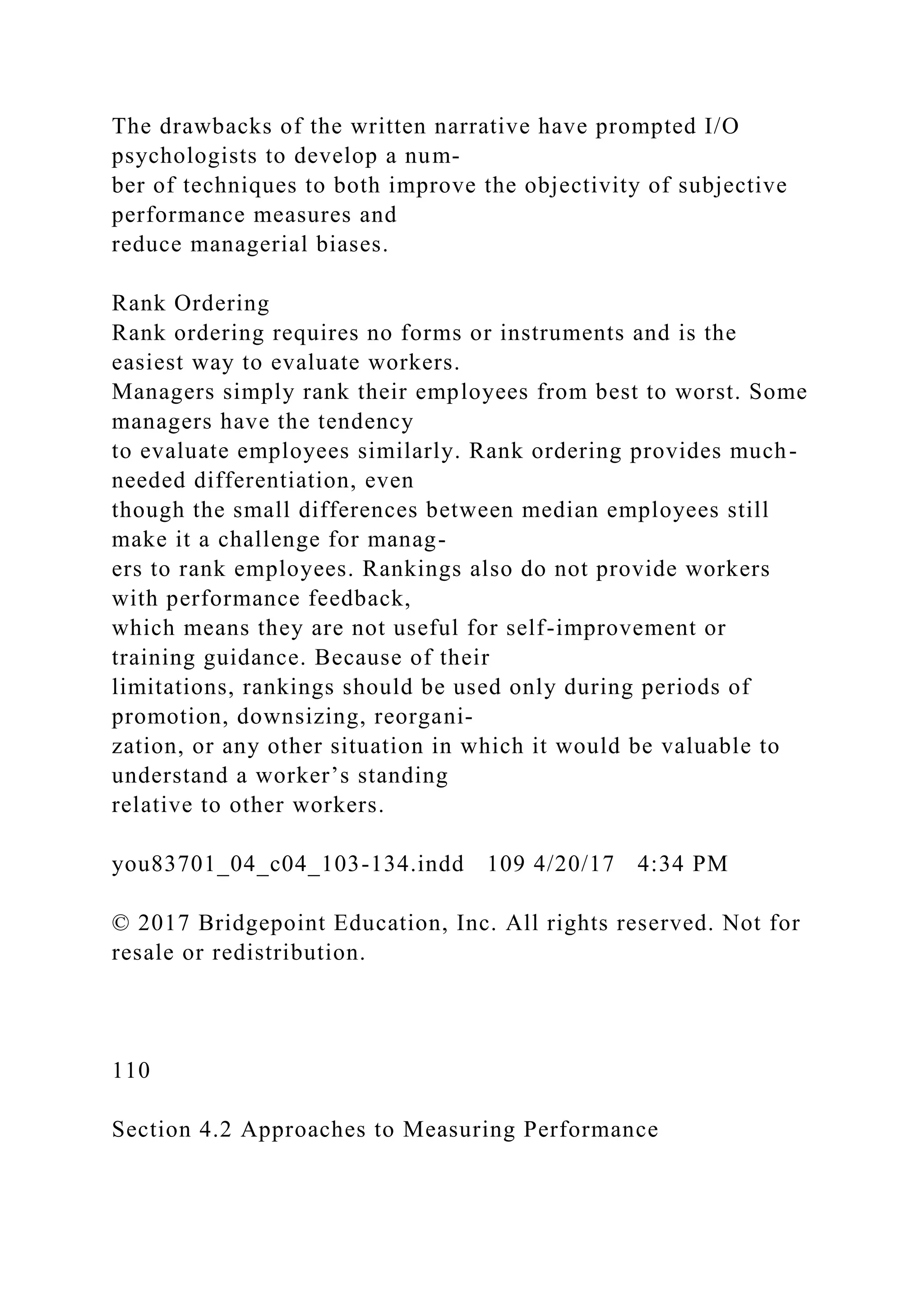
![Paired Comparison
As with rank ordering, the paired comparison technique requires
the manager to evaluate
a worker’s performance compared to the other workers on the
team. In a systematic fashion,
the manager compares one pair of workers at a time and then
judges which of the two dem-
onstrates superior performance. After comparing all the workers
in all possible pairings, the
manager then creates a rank ordering based on the number of
times each worker is the better
performer of a pair. For example, using the formula N(N -
1)/2)]N to determine the number
of discrete pairings in a group, a manager with 10 employees
would need to make 45 paired
comparisons. A manager with a team of 20 employees would
need to make 190 comparisons.
As you can see, the number of pairs goes up quite quickly as the
size of the team increases. For
this reason, paired comparisons are only advantageous for
smaller groups.
Like general rank orderings, paired comparisons do not provide
performance feedback. How-
ever, they are generally simpler to use because managers need
only compare one employee
pair at a time, instead of the entire work team. Organizational
leaders should keep in mind
that rankings are not standard across the entire workplace. The
lowest ranked member of a
high-performing team might, for example, actually perform
better than the highest ranked
member of a poorly performing team.
Forced Distribution
When an organization needs to evaluate a large number of](https://image.slidesharecdn.com/673foundationsofpsychologicaltestingnoelhendrick-221108012202-58ccfef5/75/673Foundations-of-Psychological-TestingNoel-Hendrick-docx-103-2048.jpg)
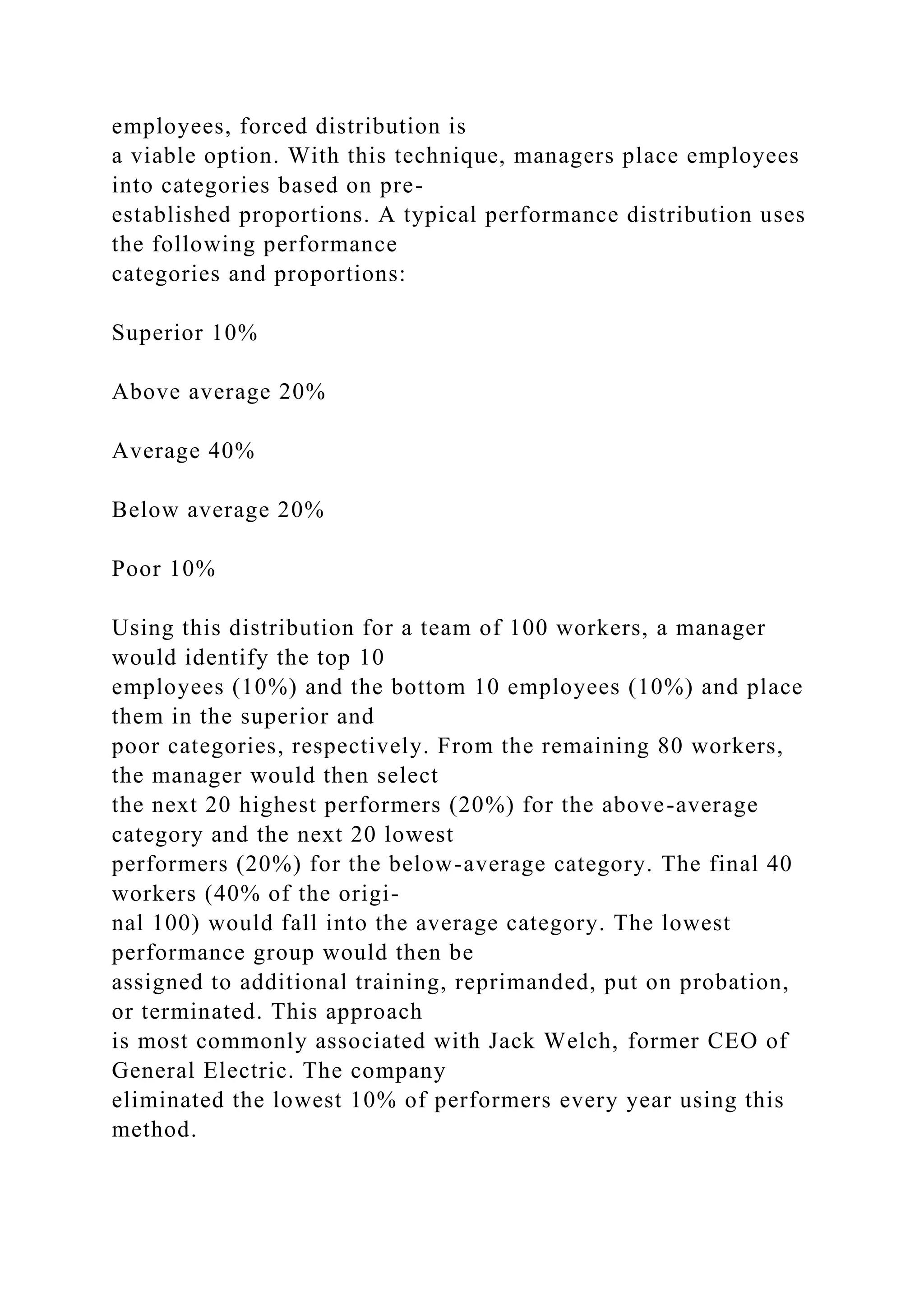
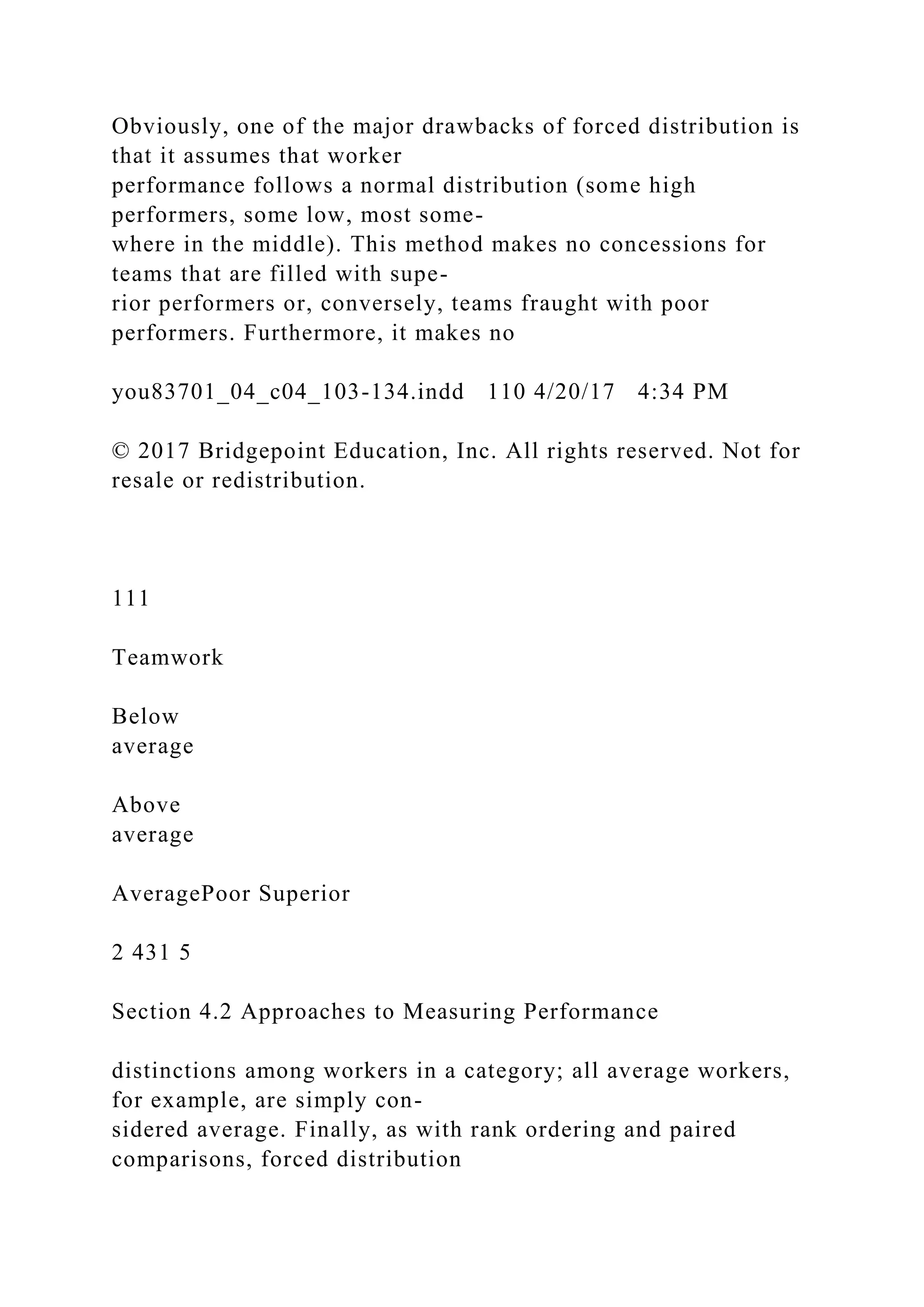

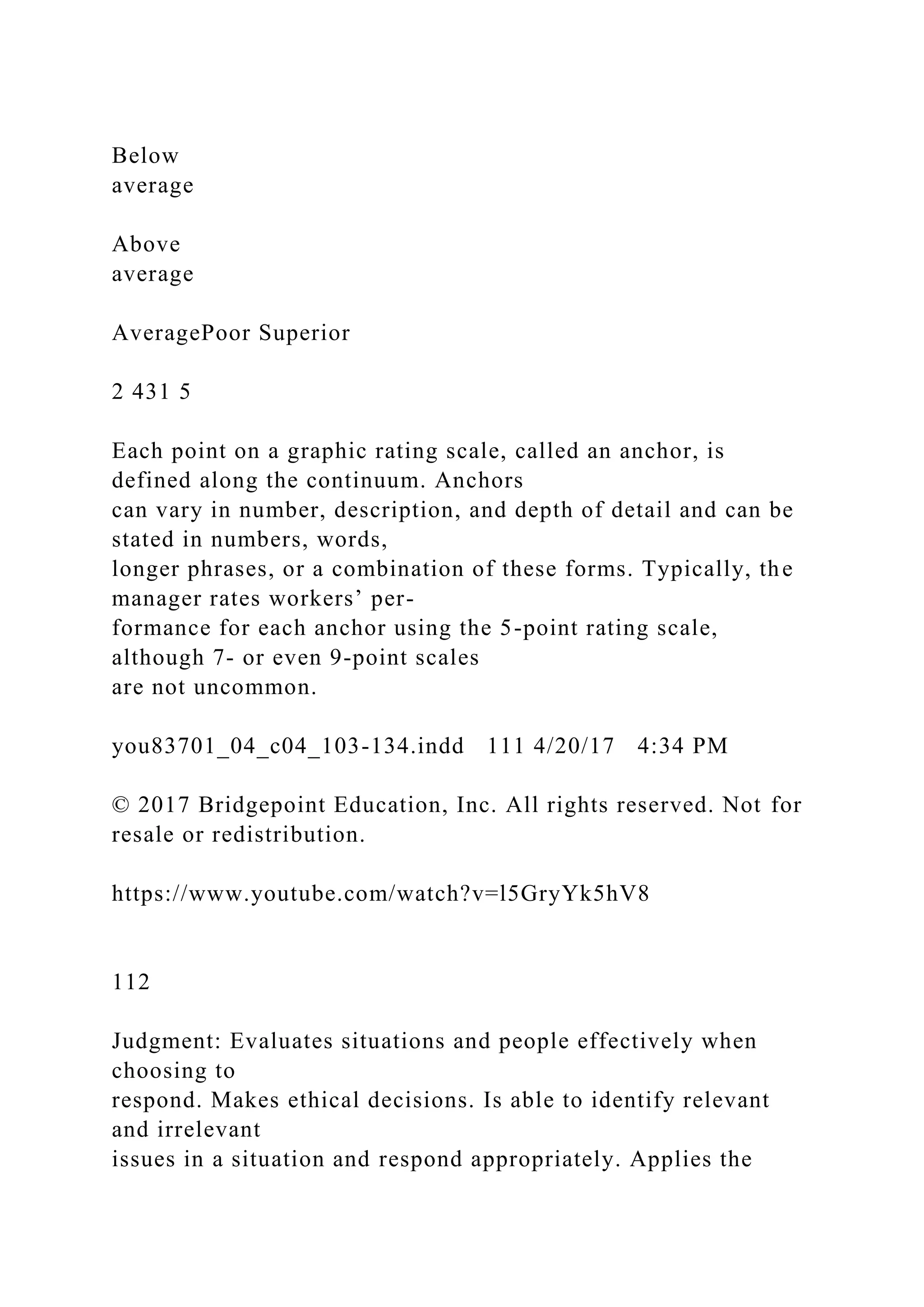
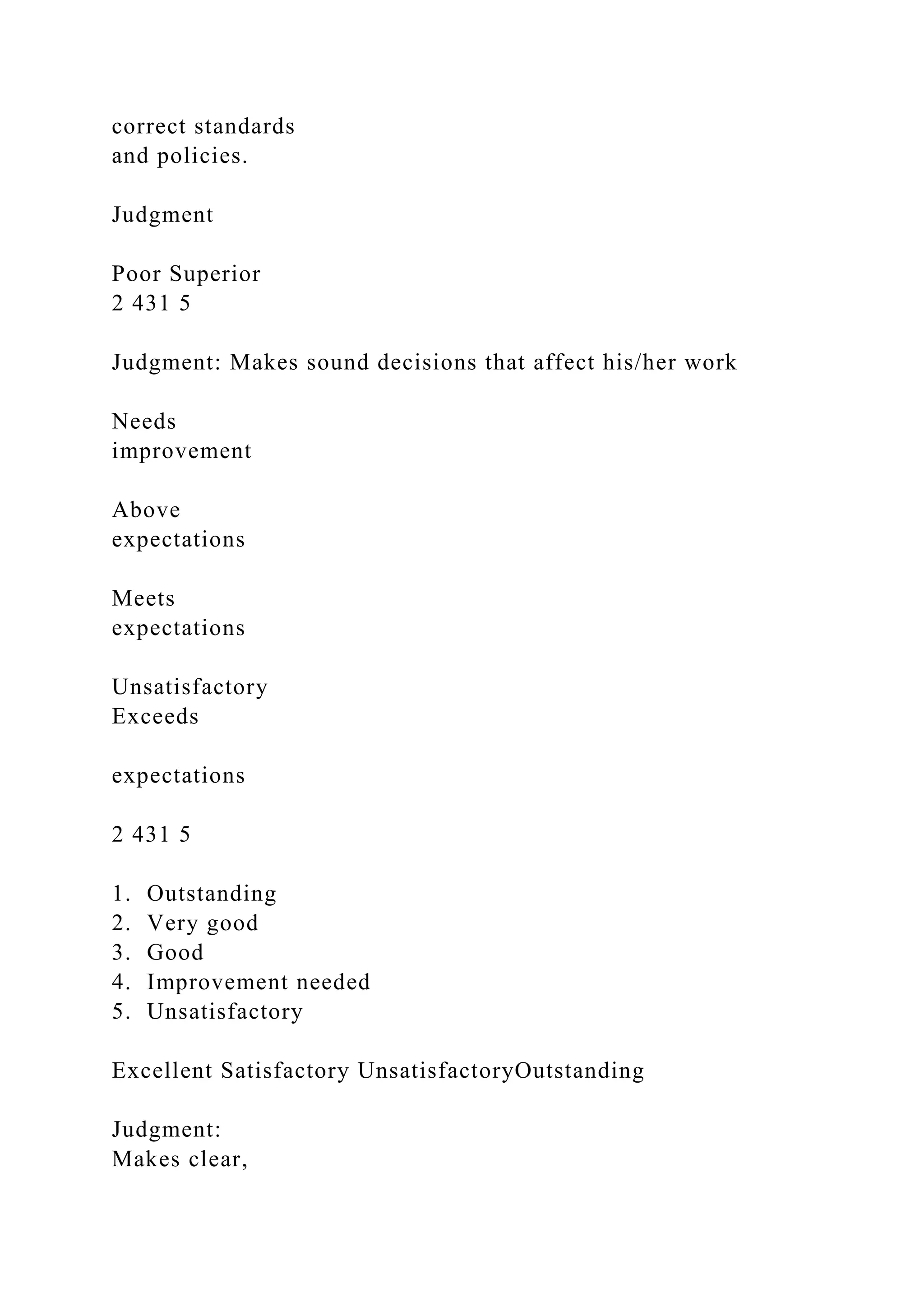
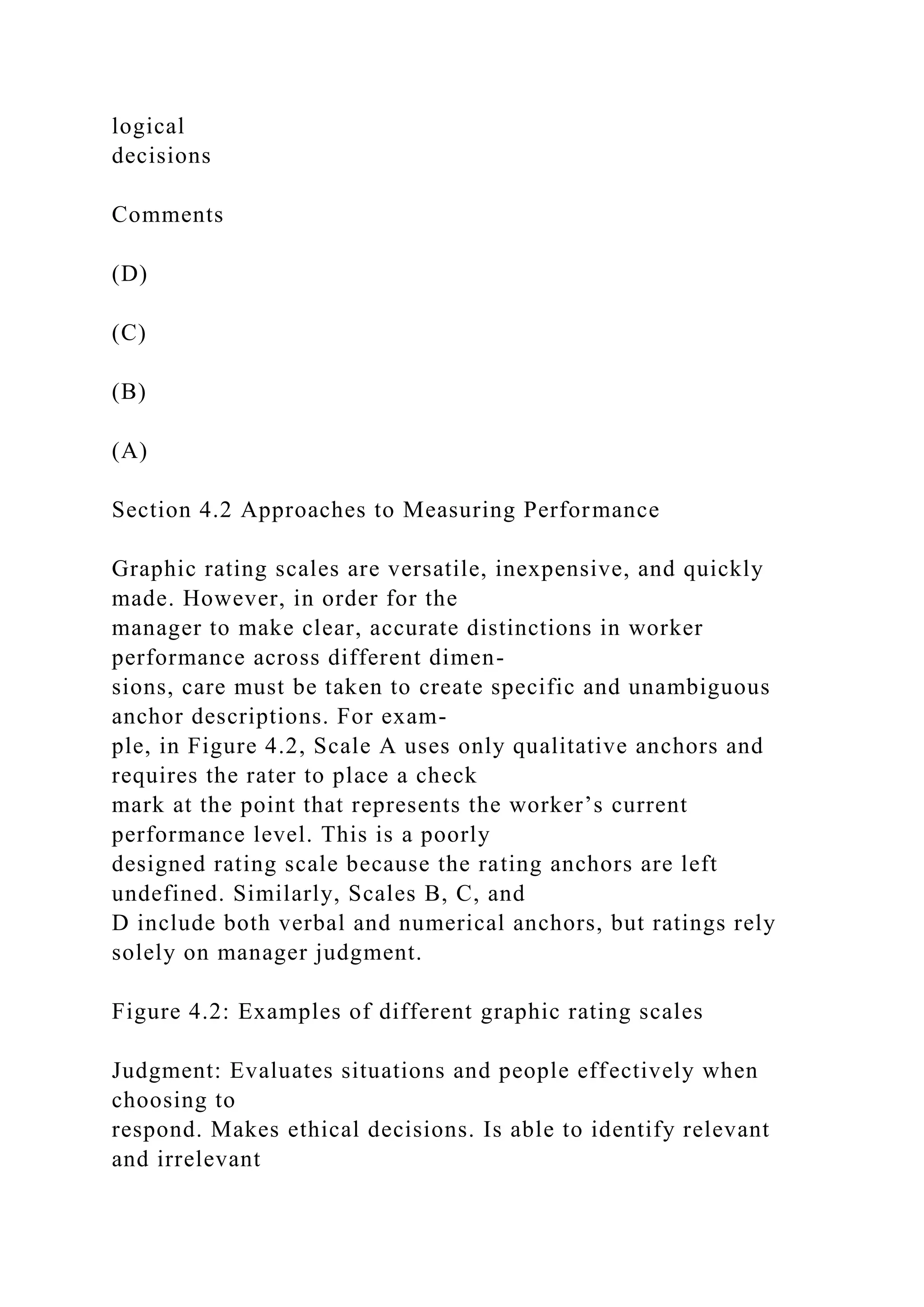
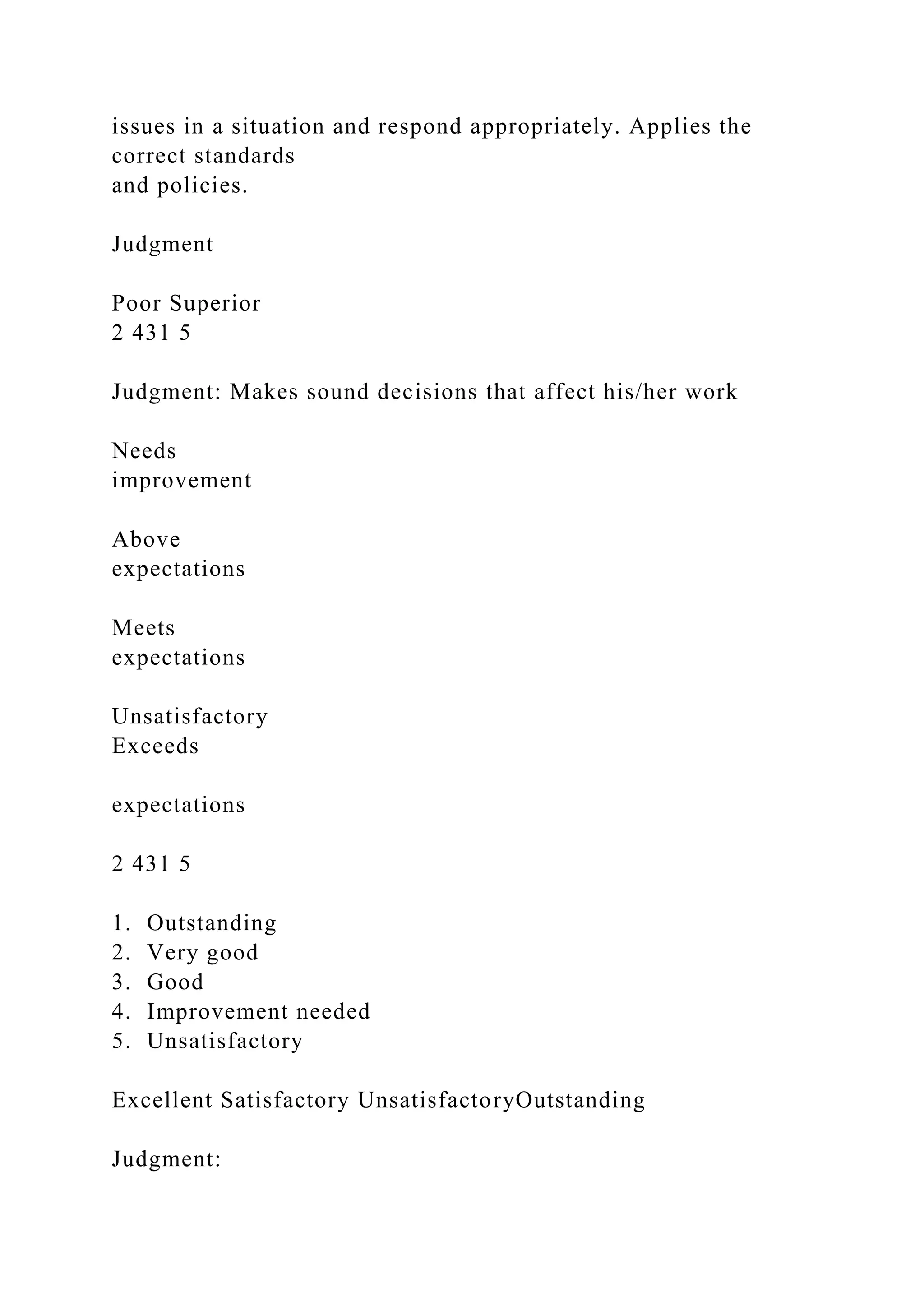
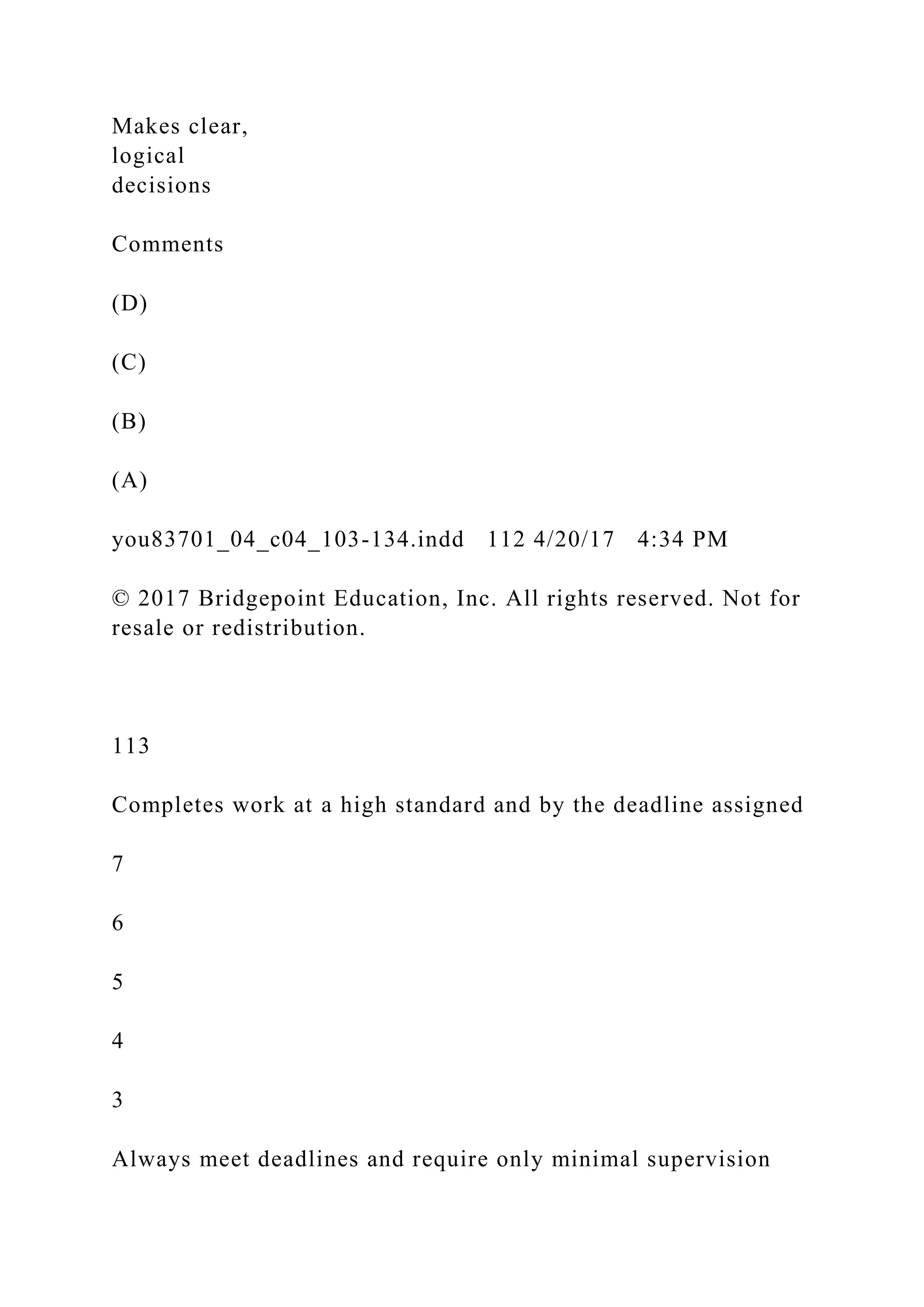
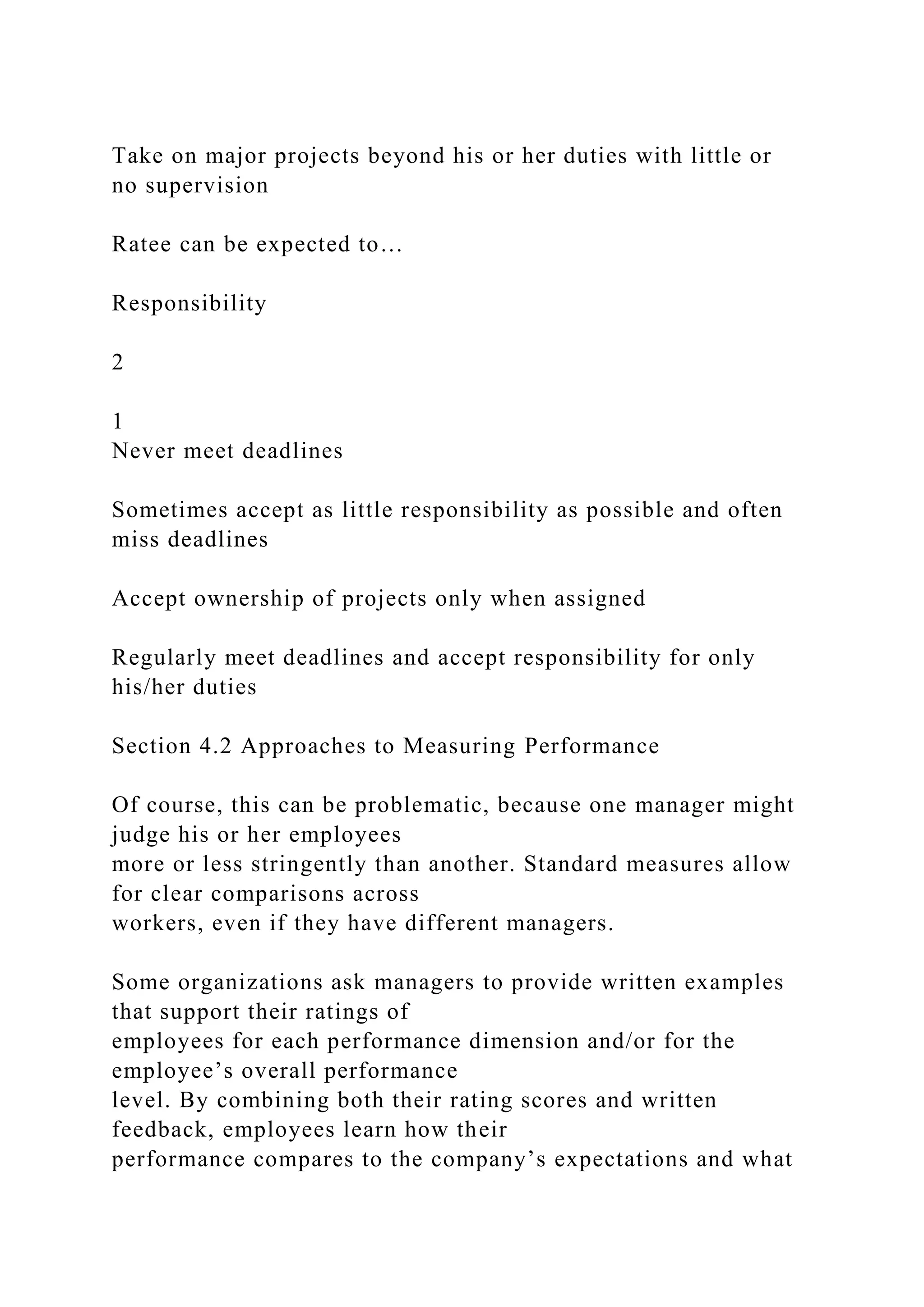
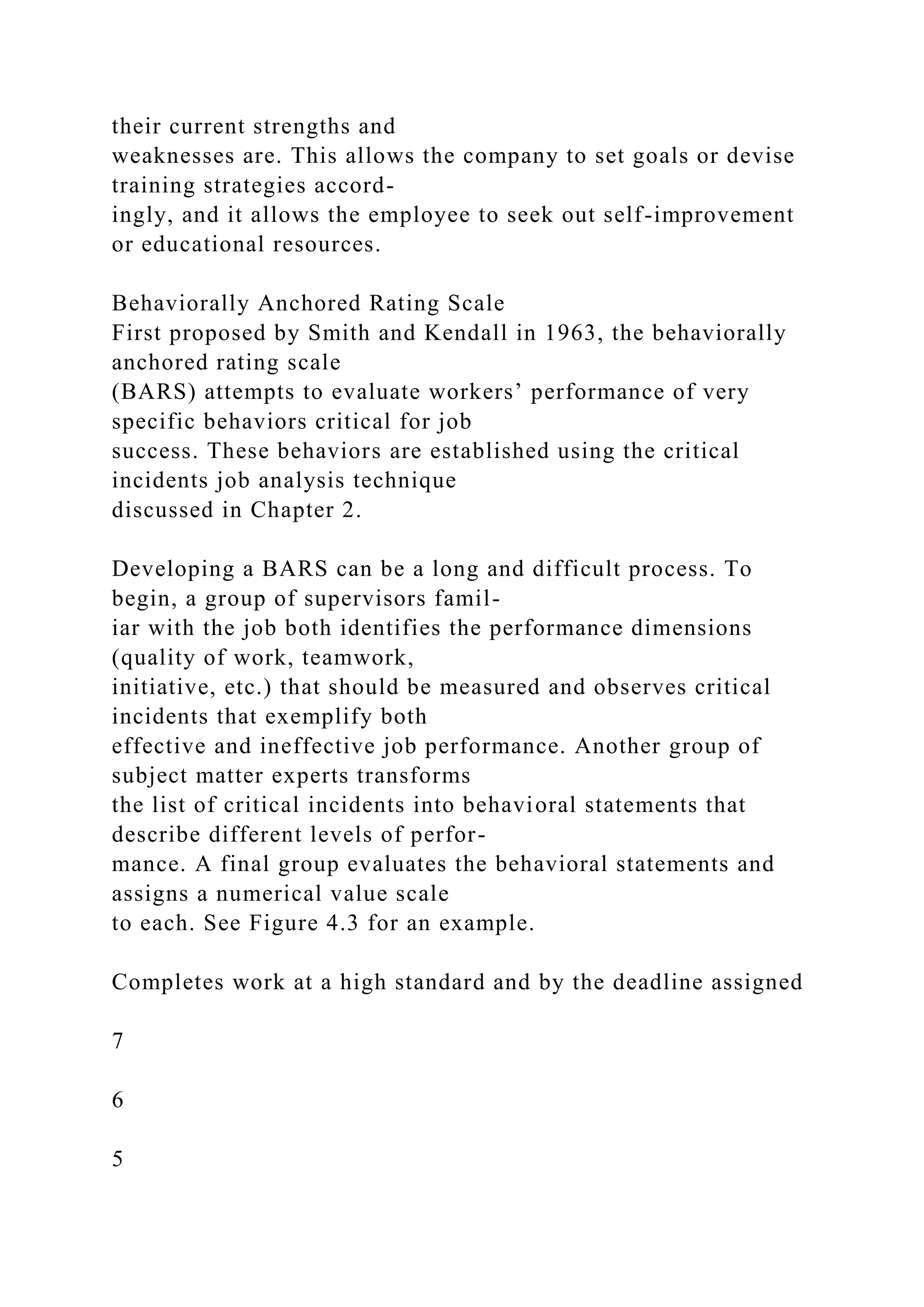

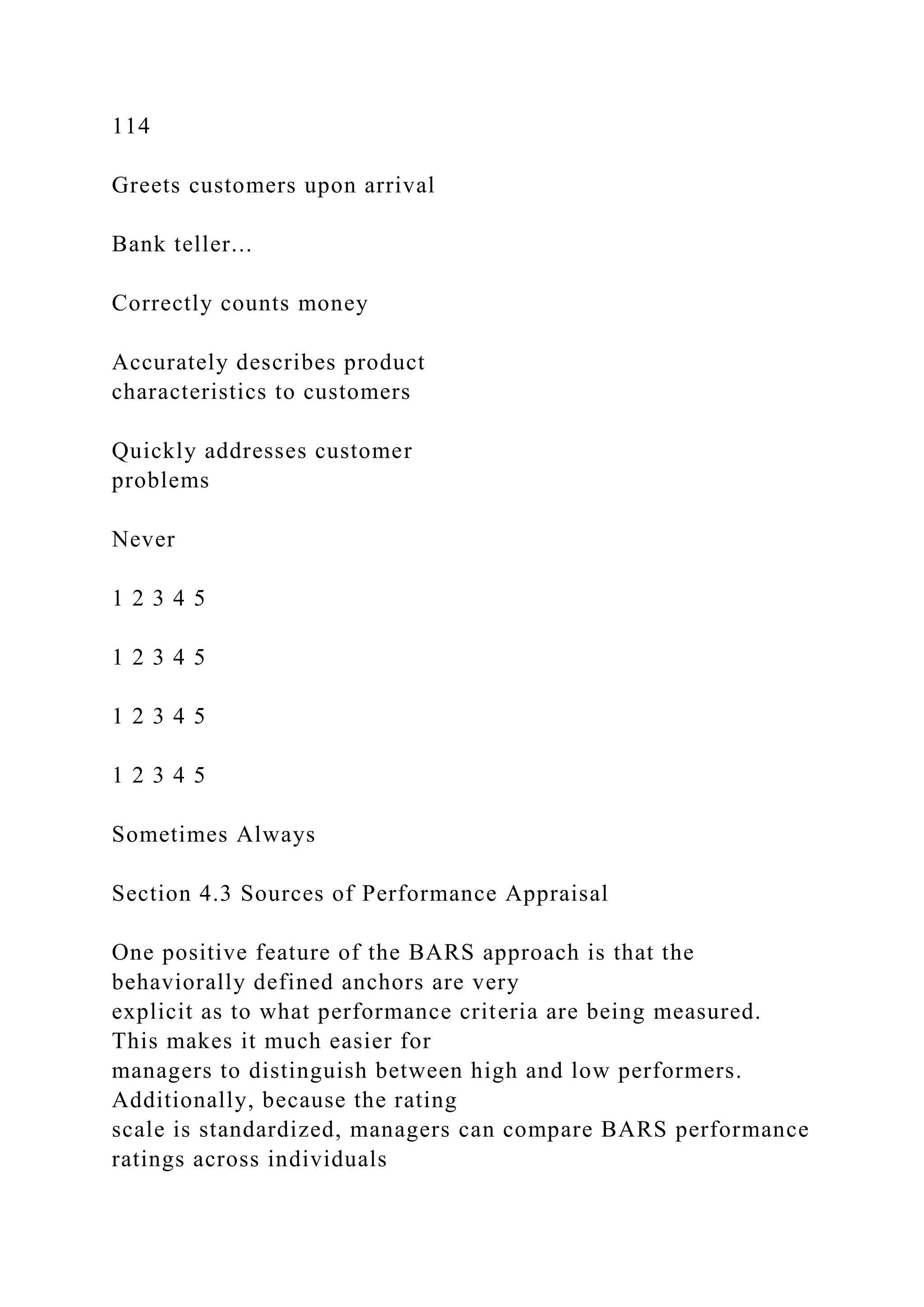
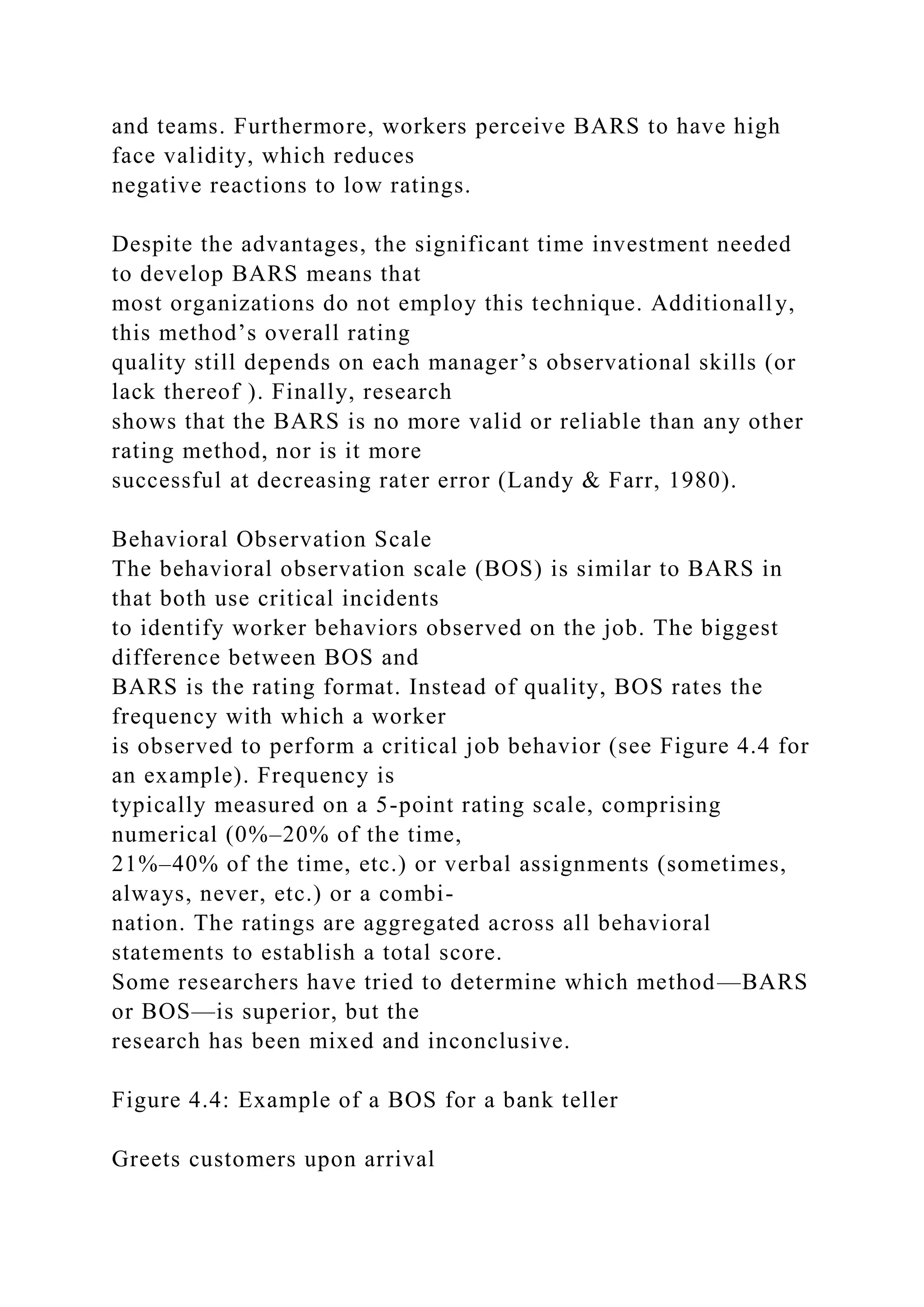
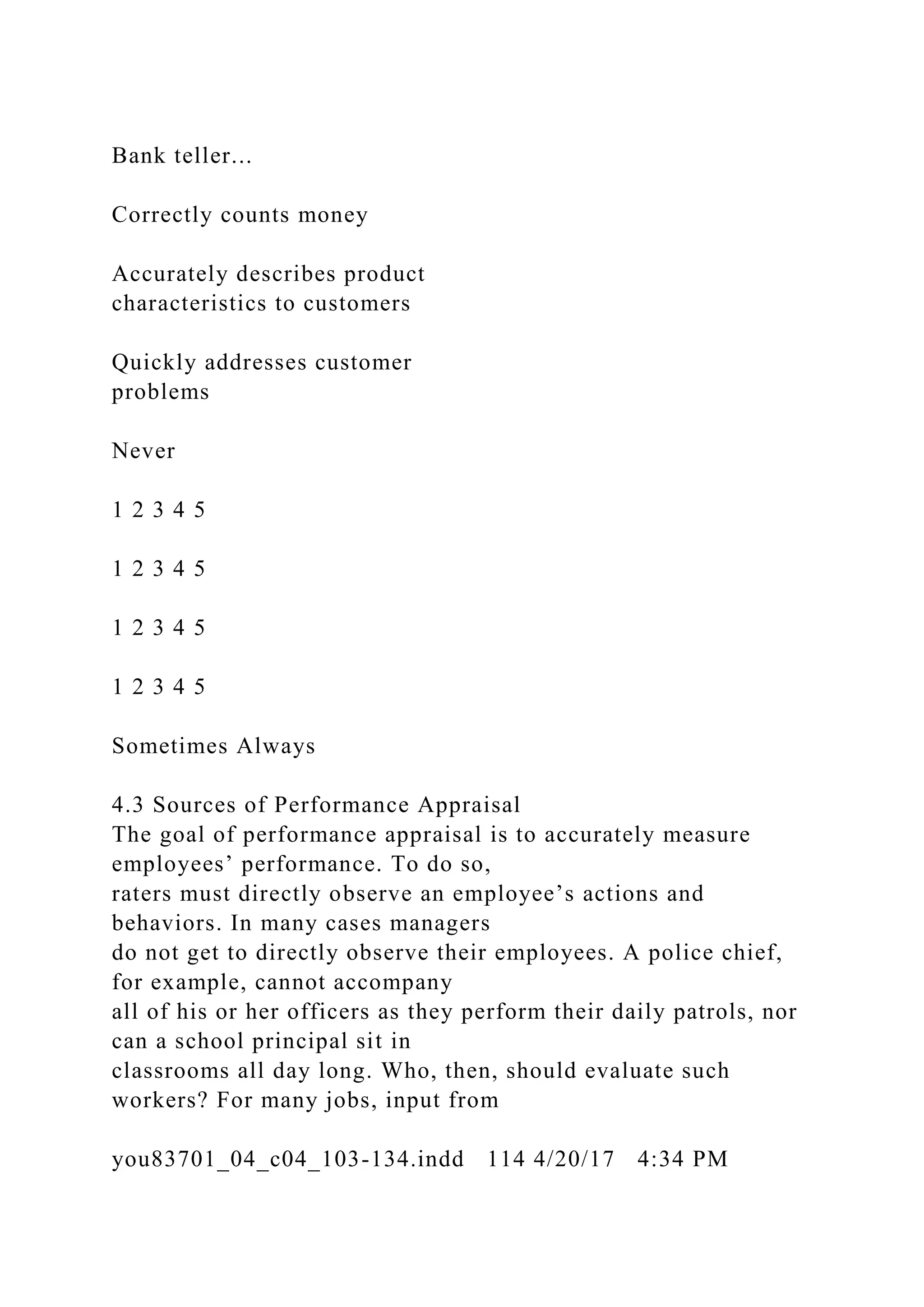
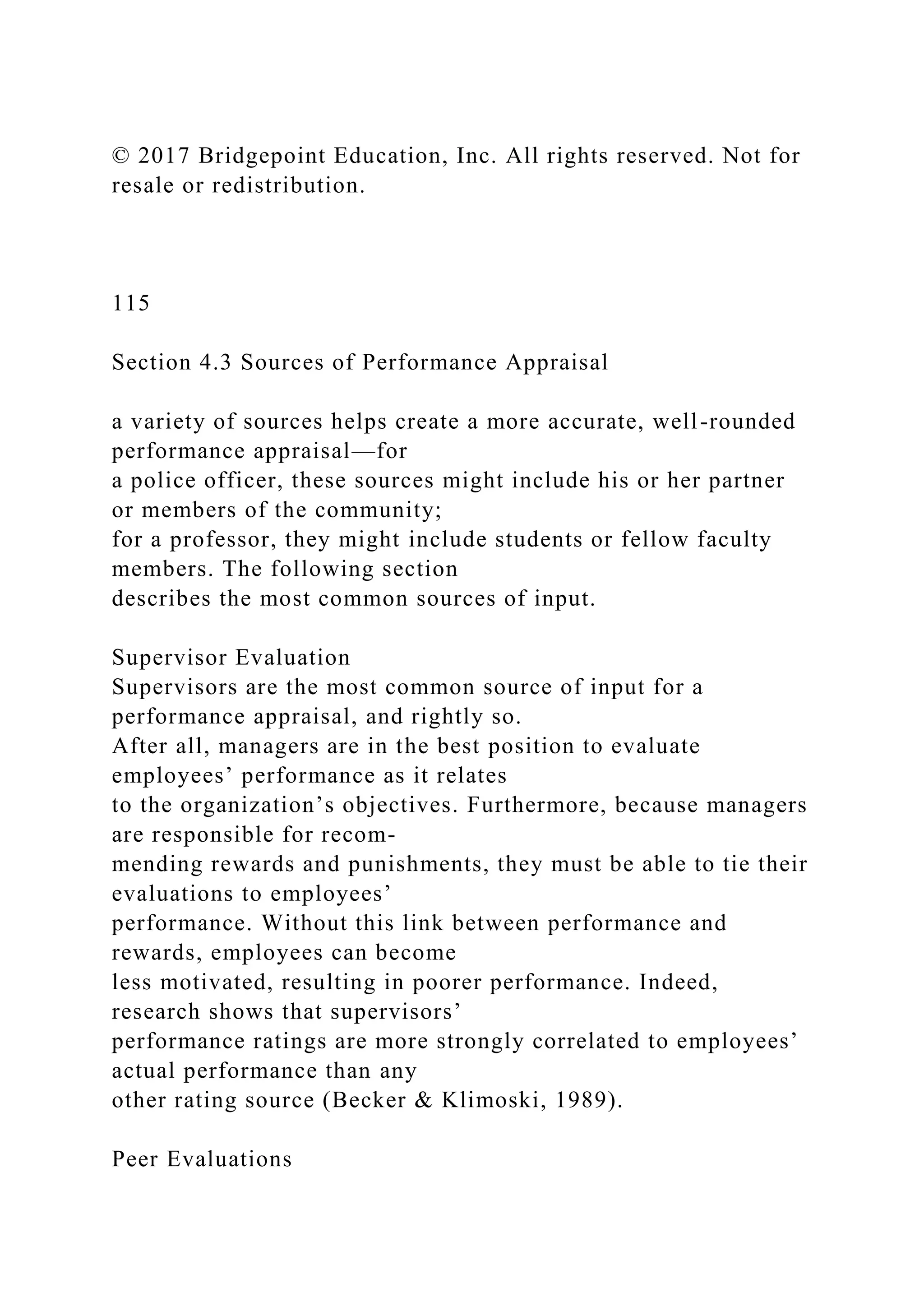

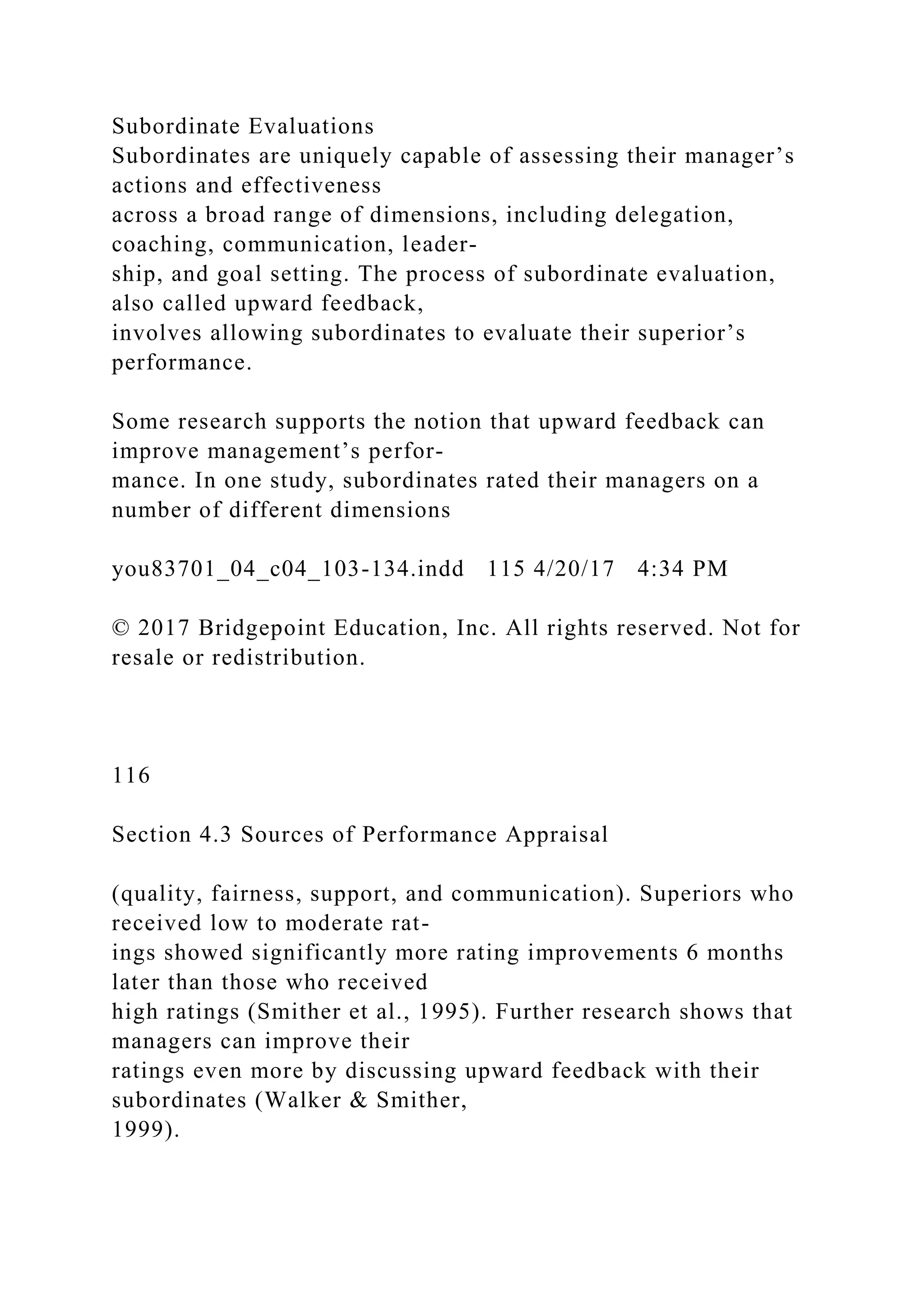
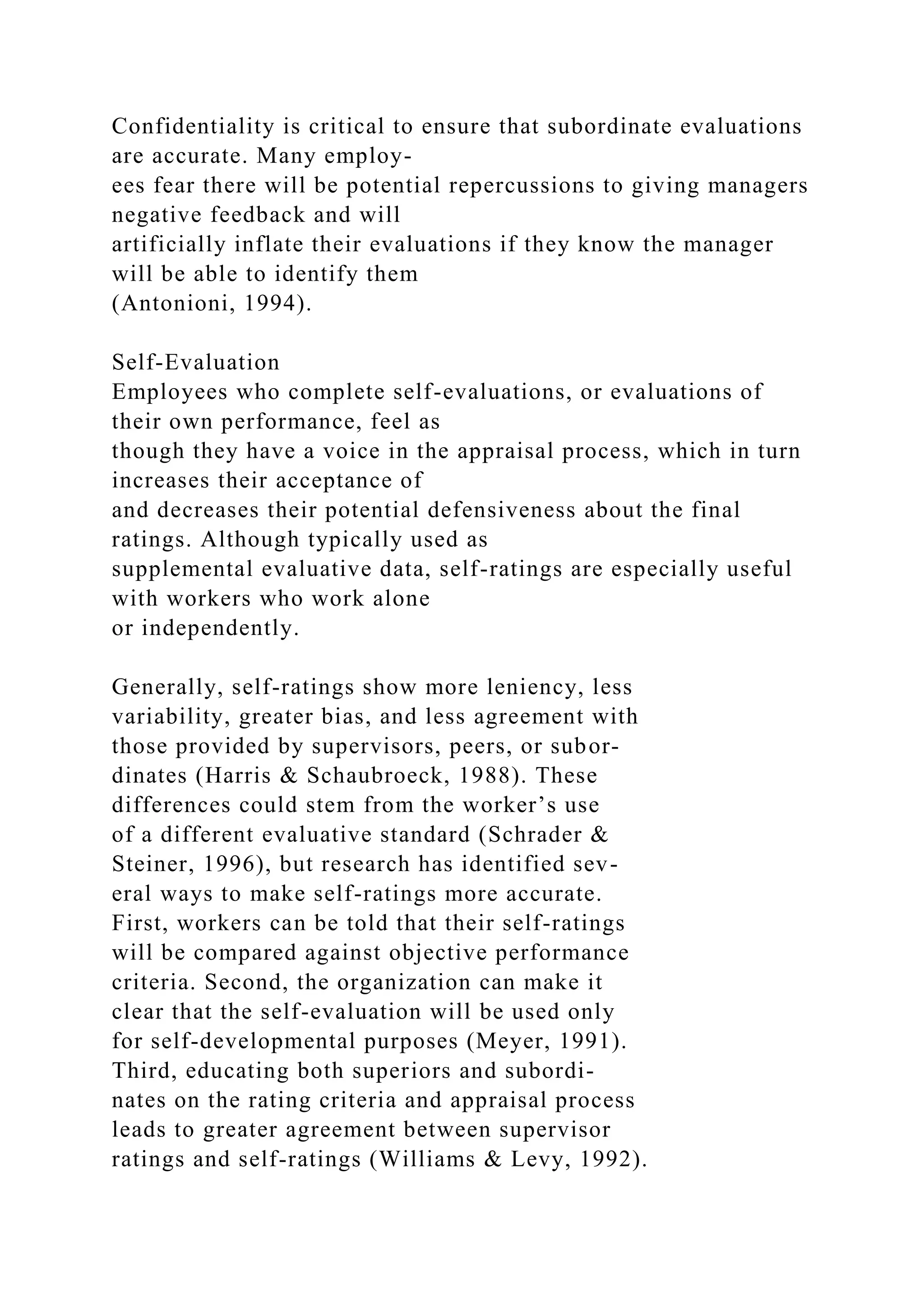

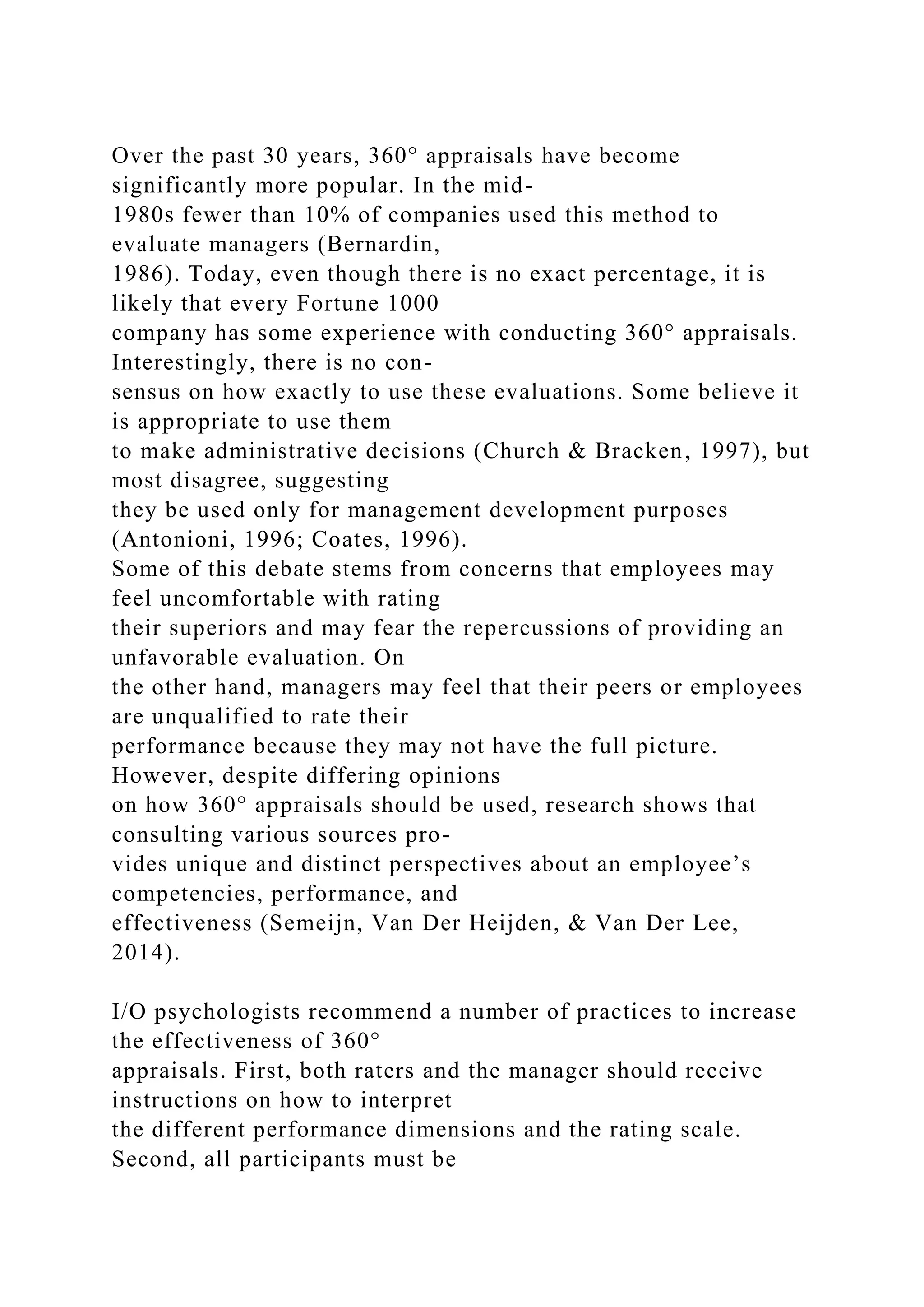

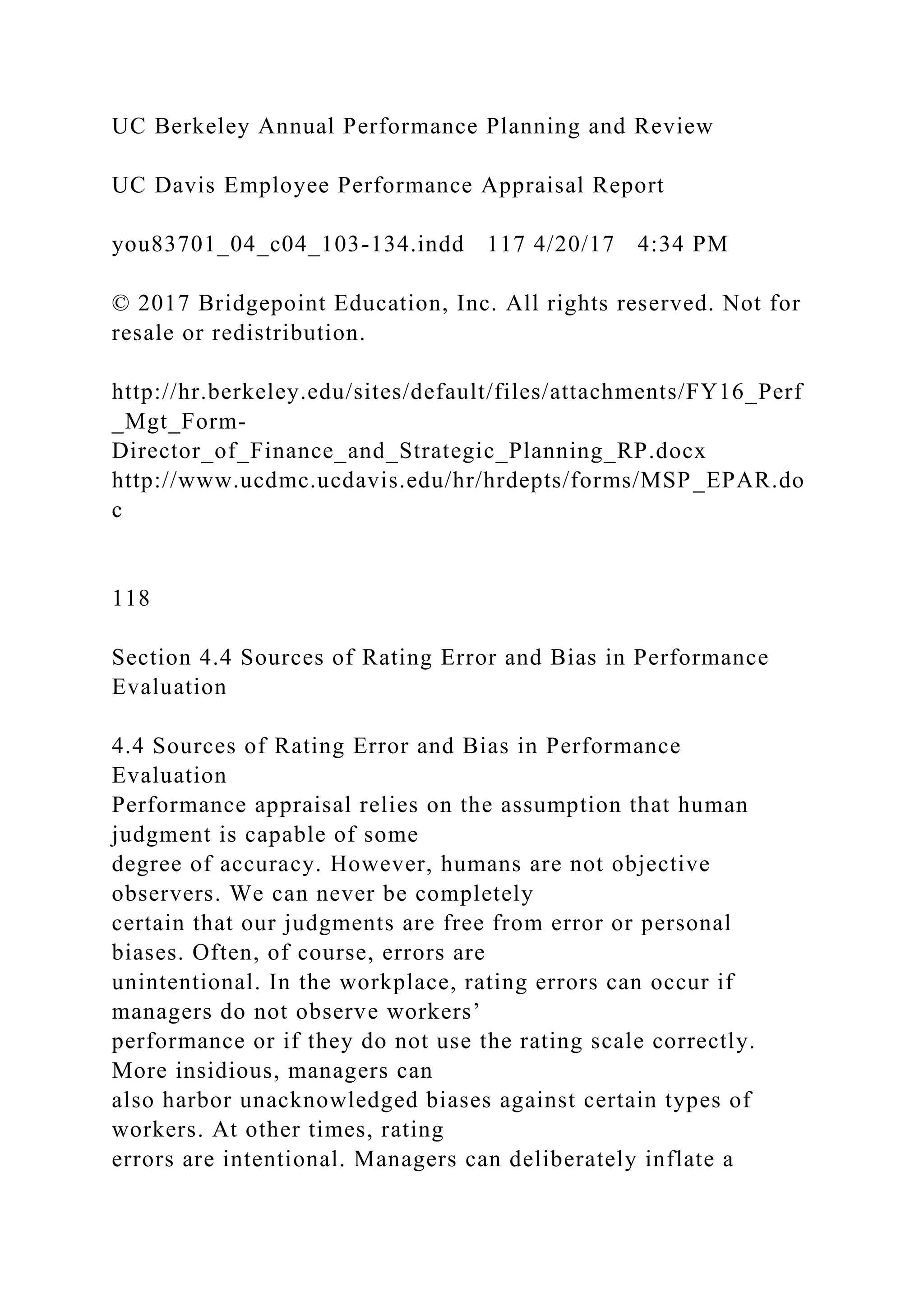
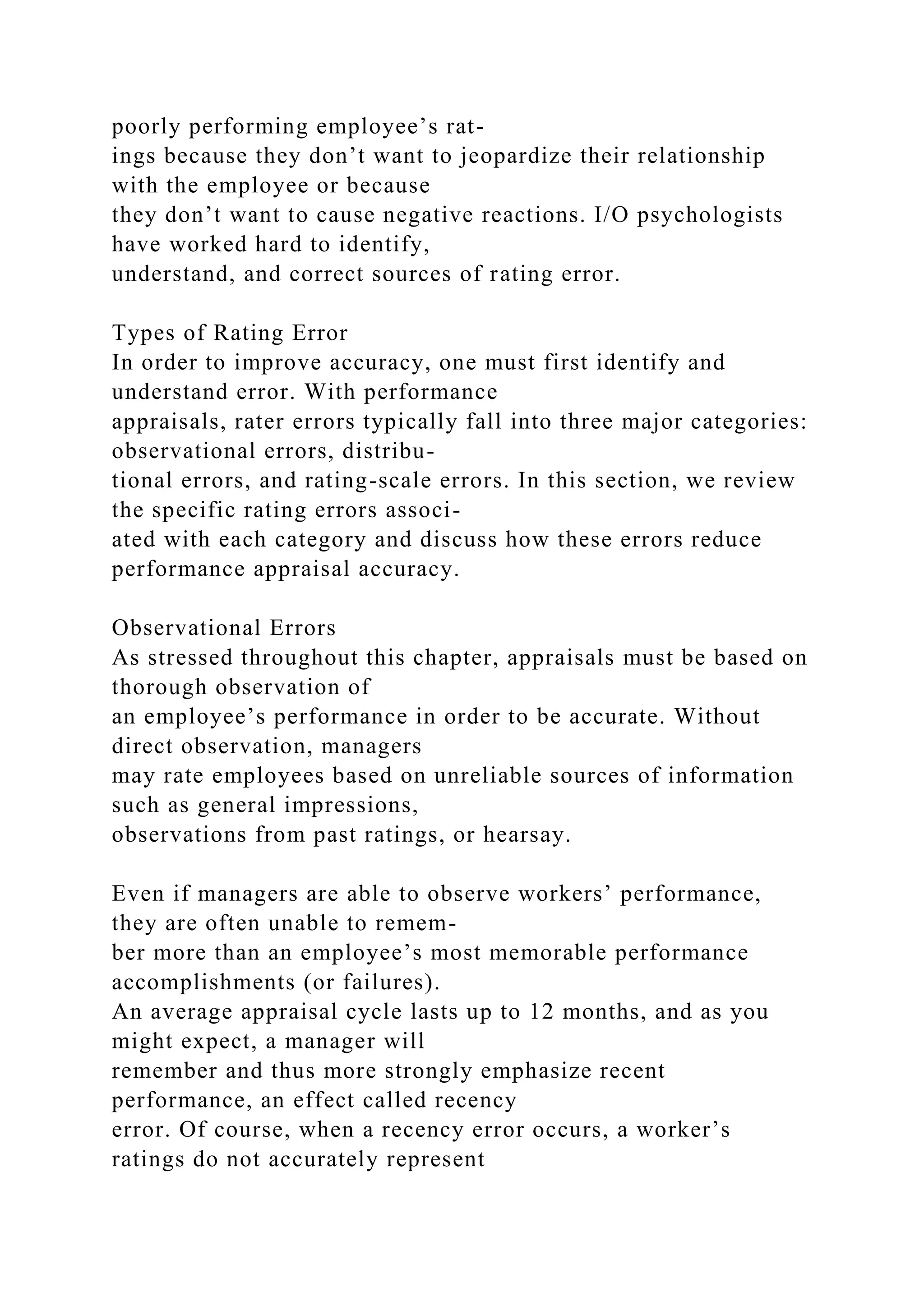
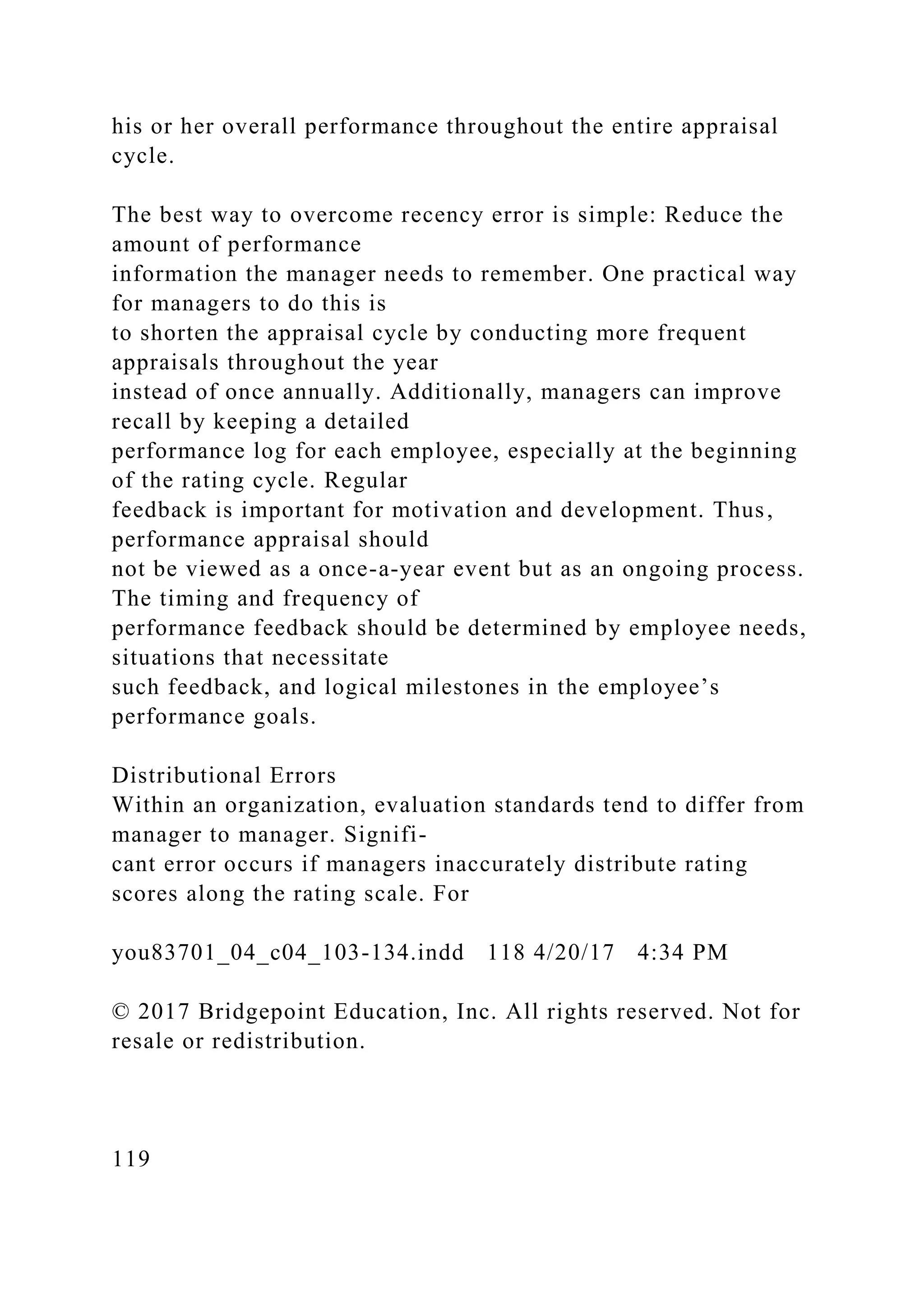
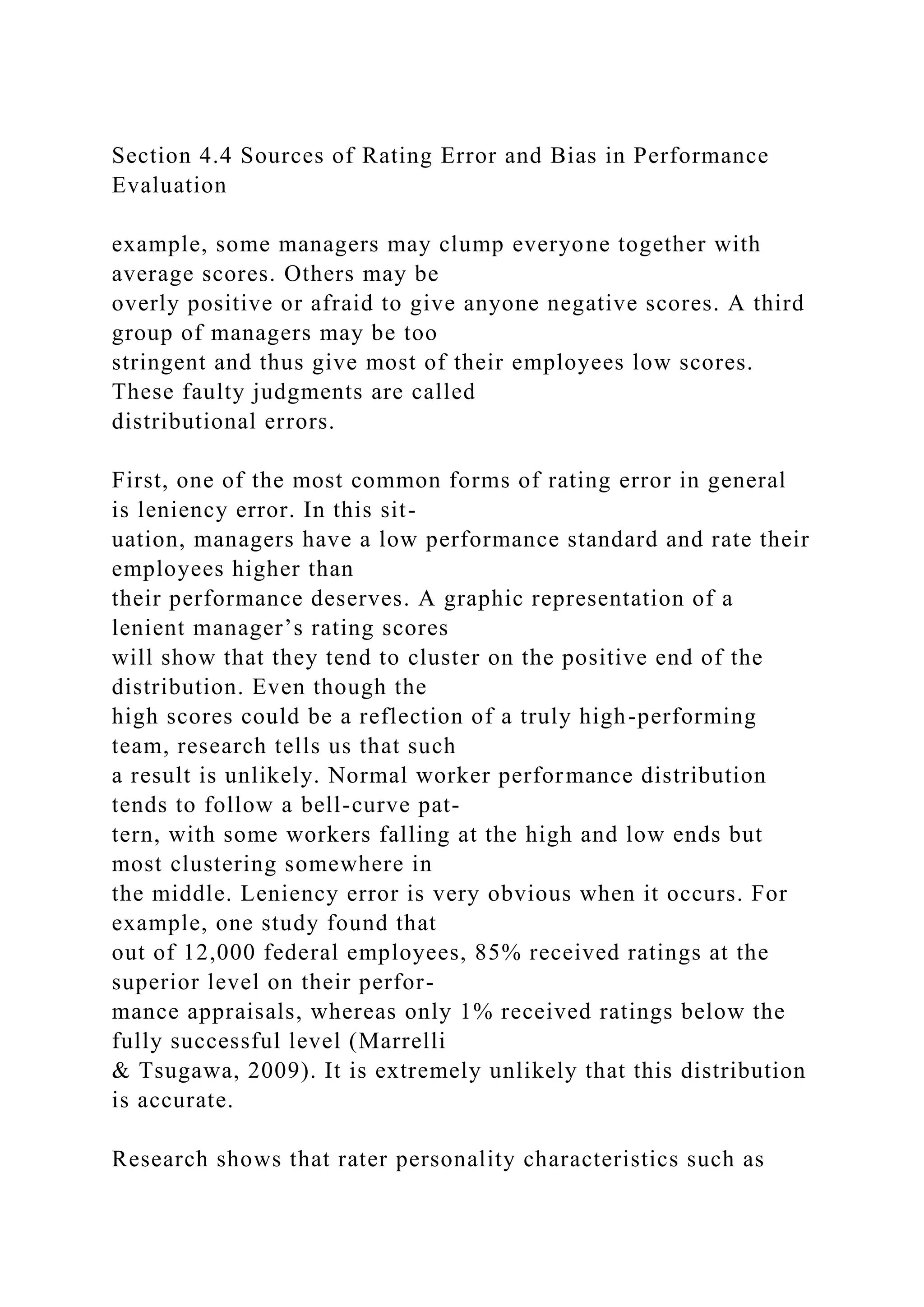
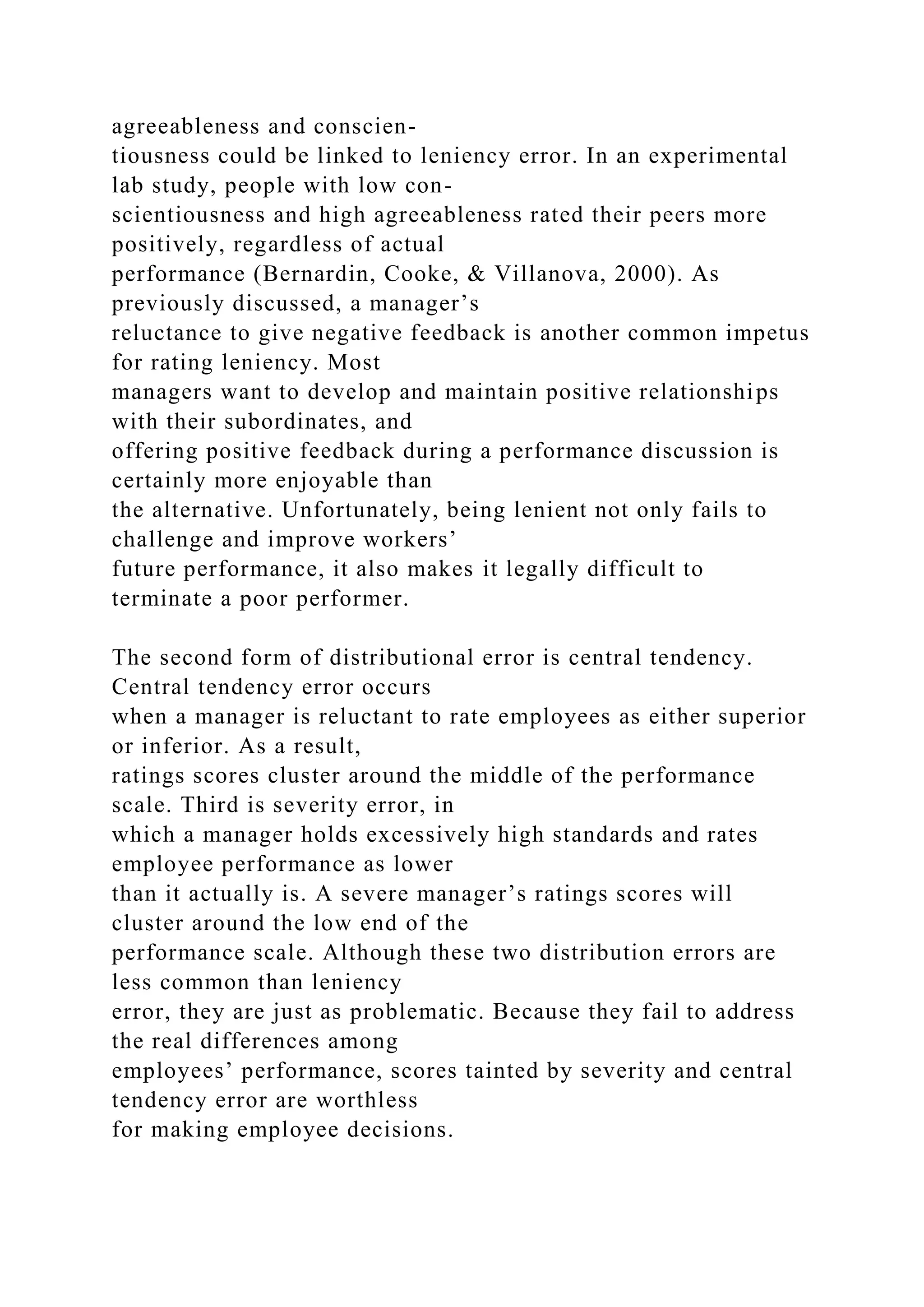
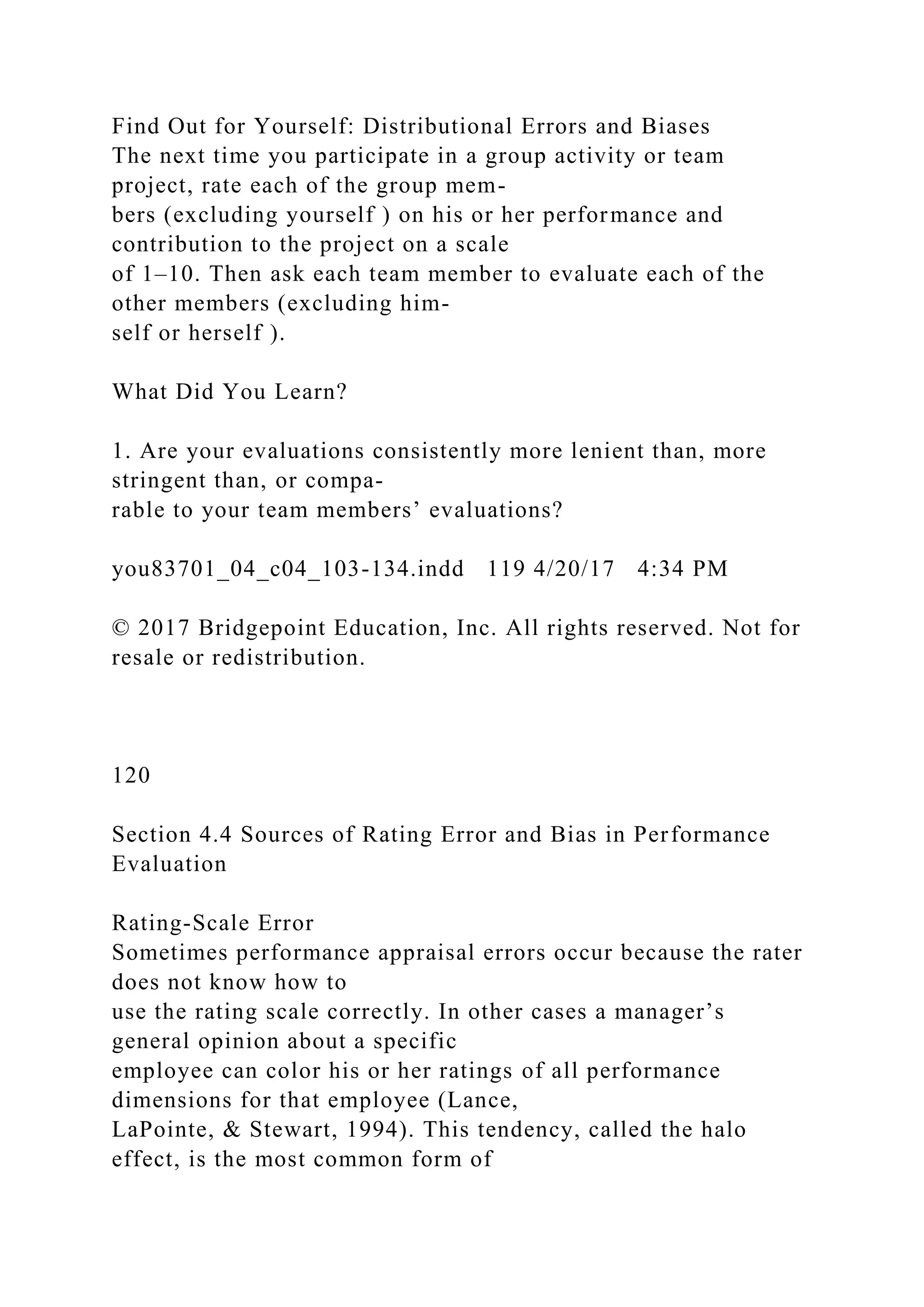
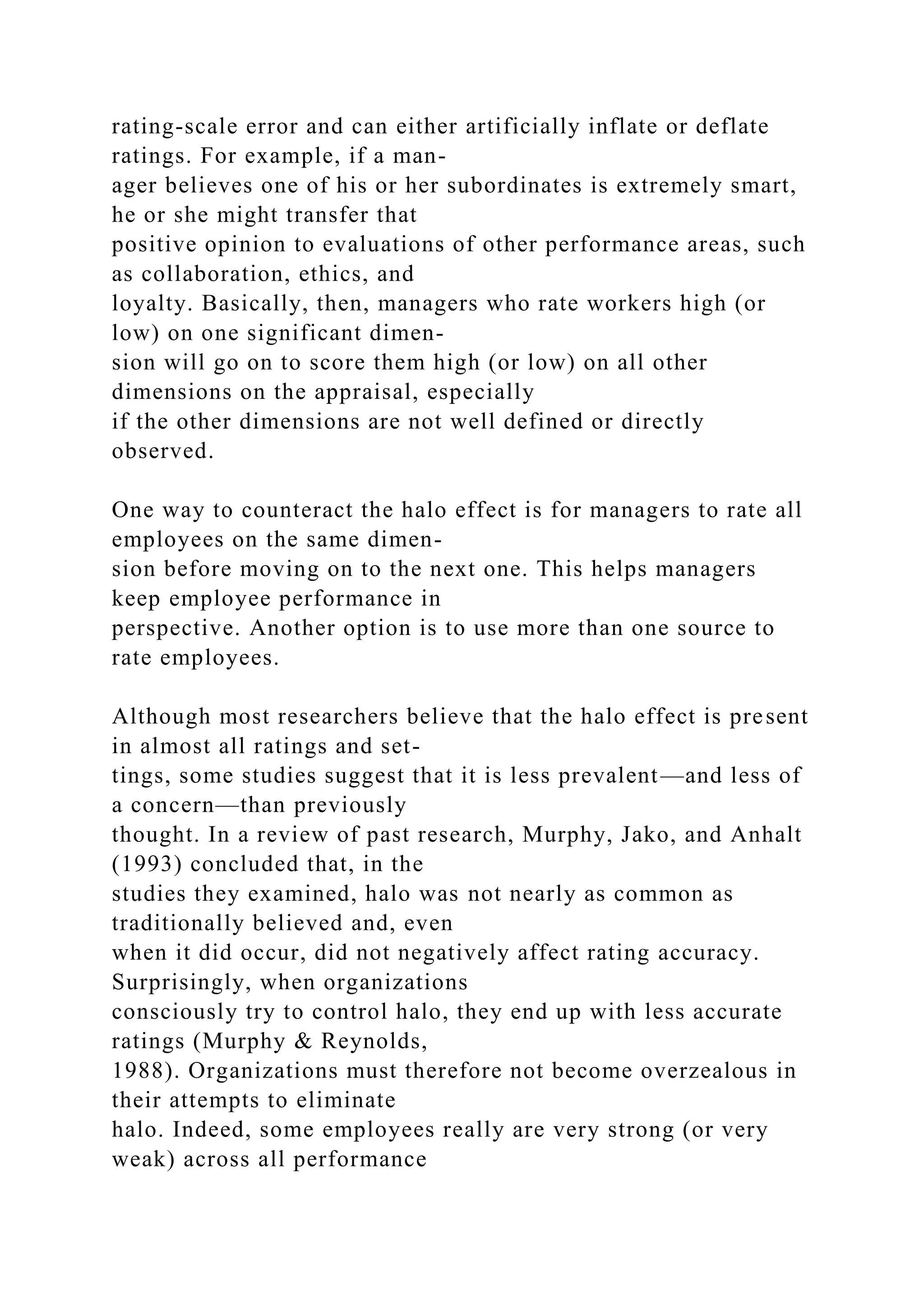

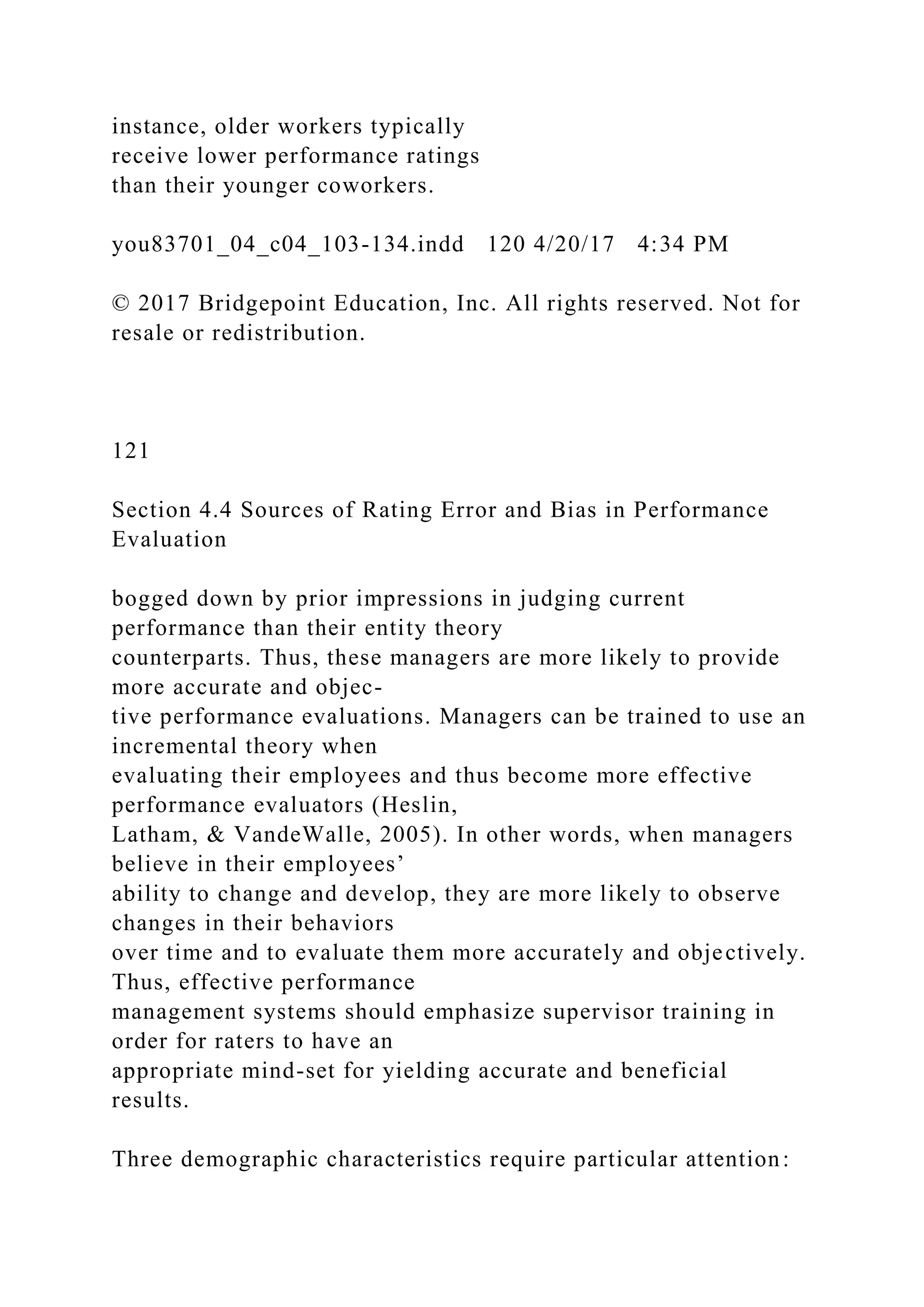
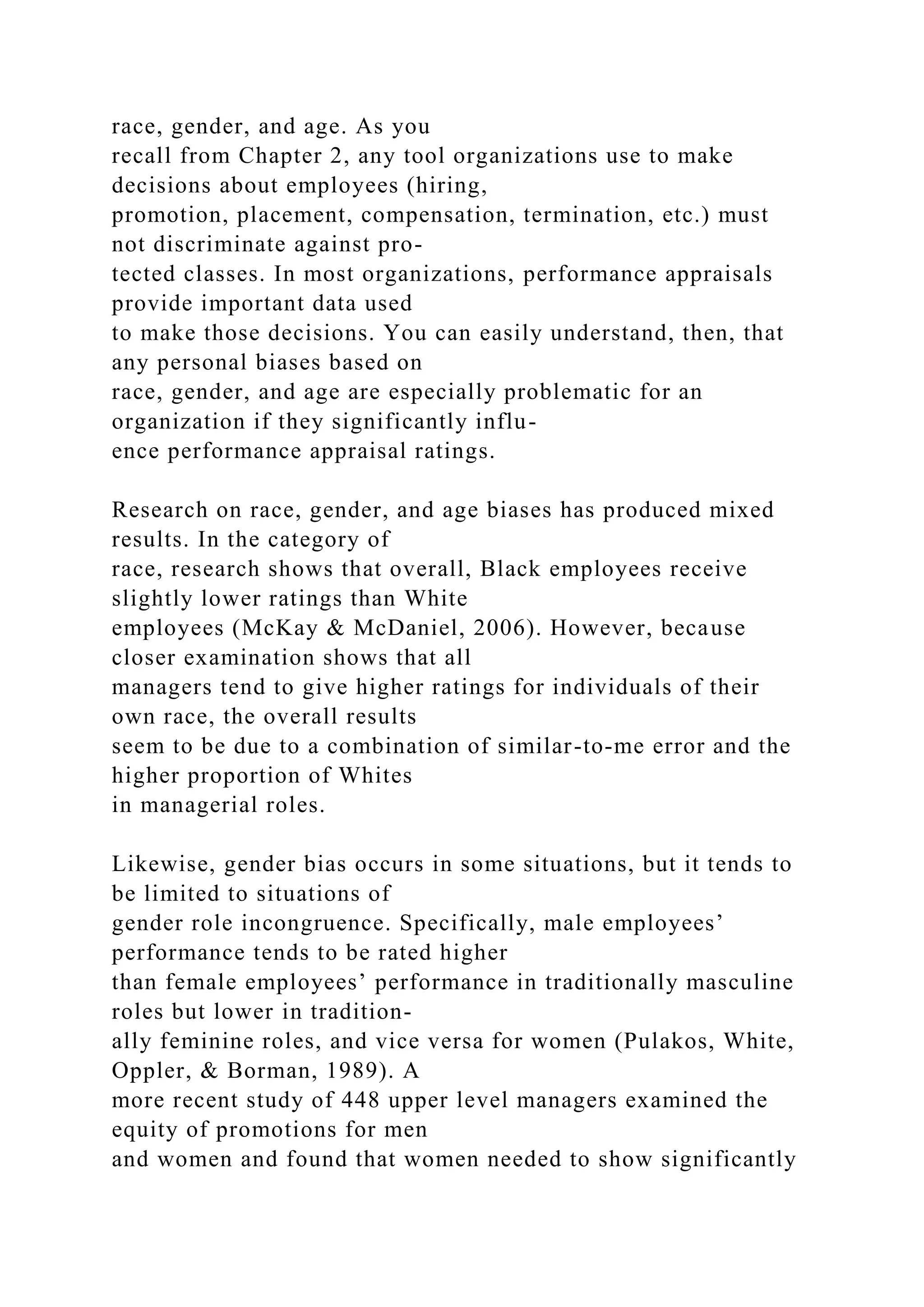
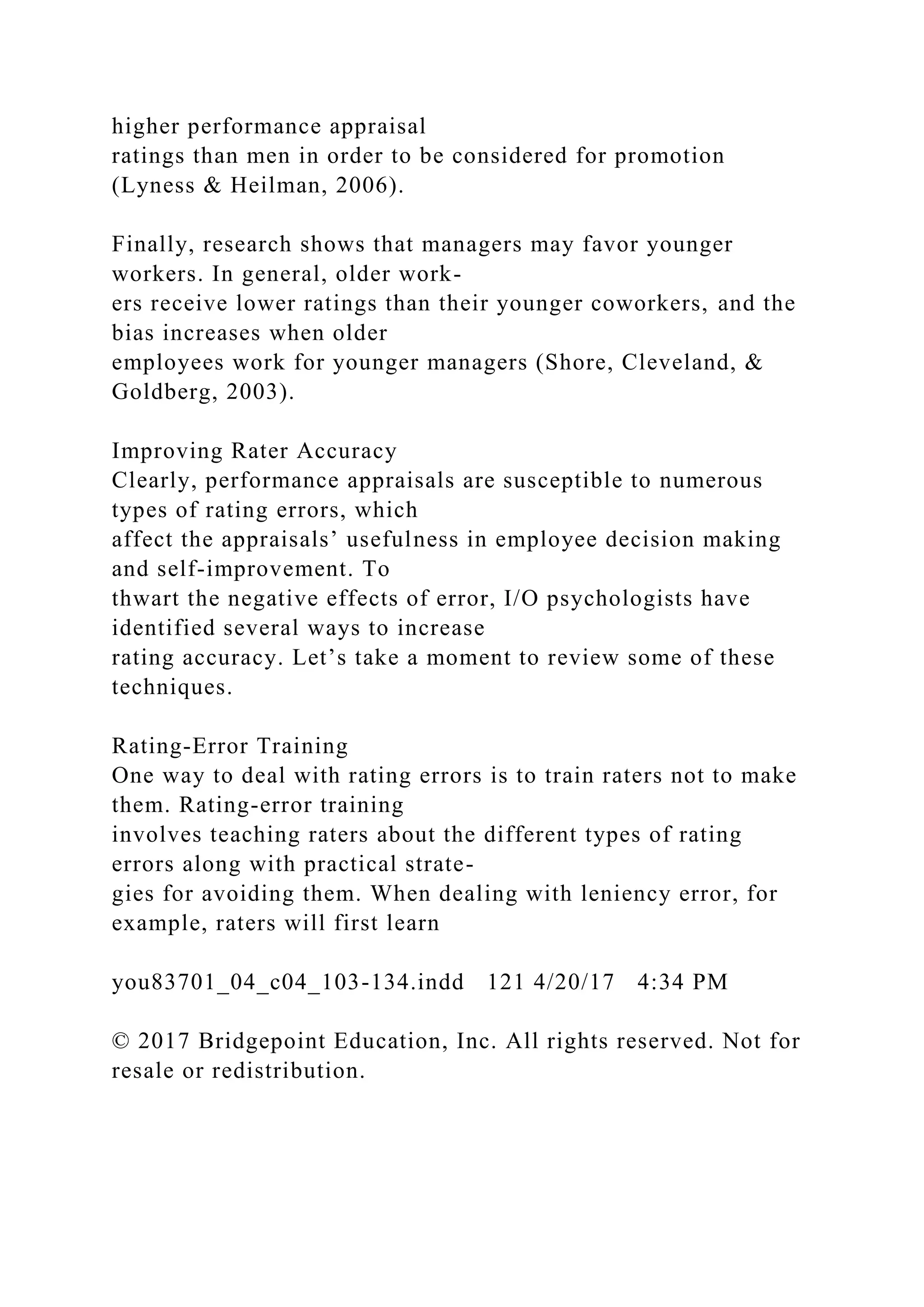
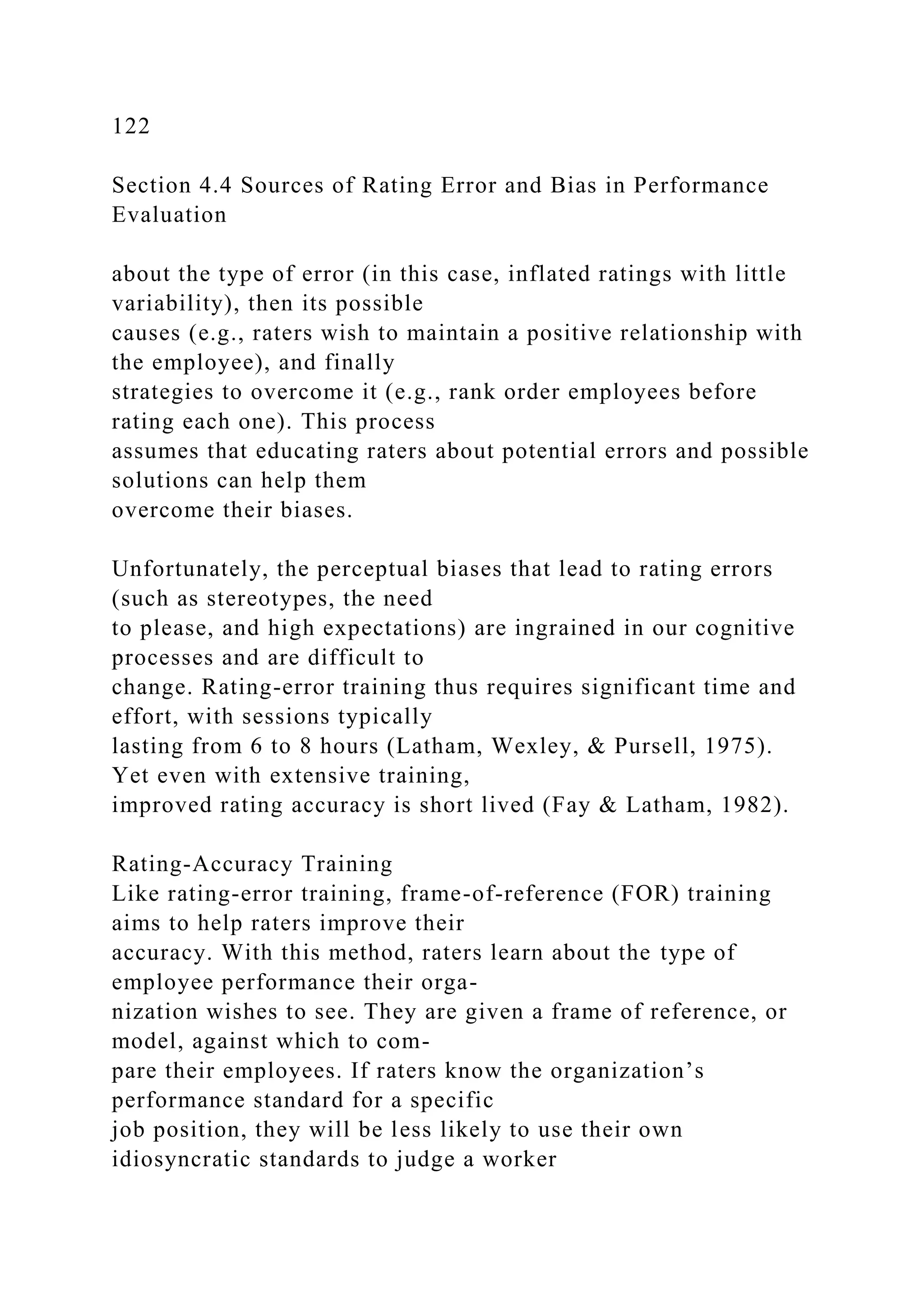
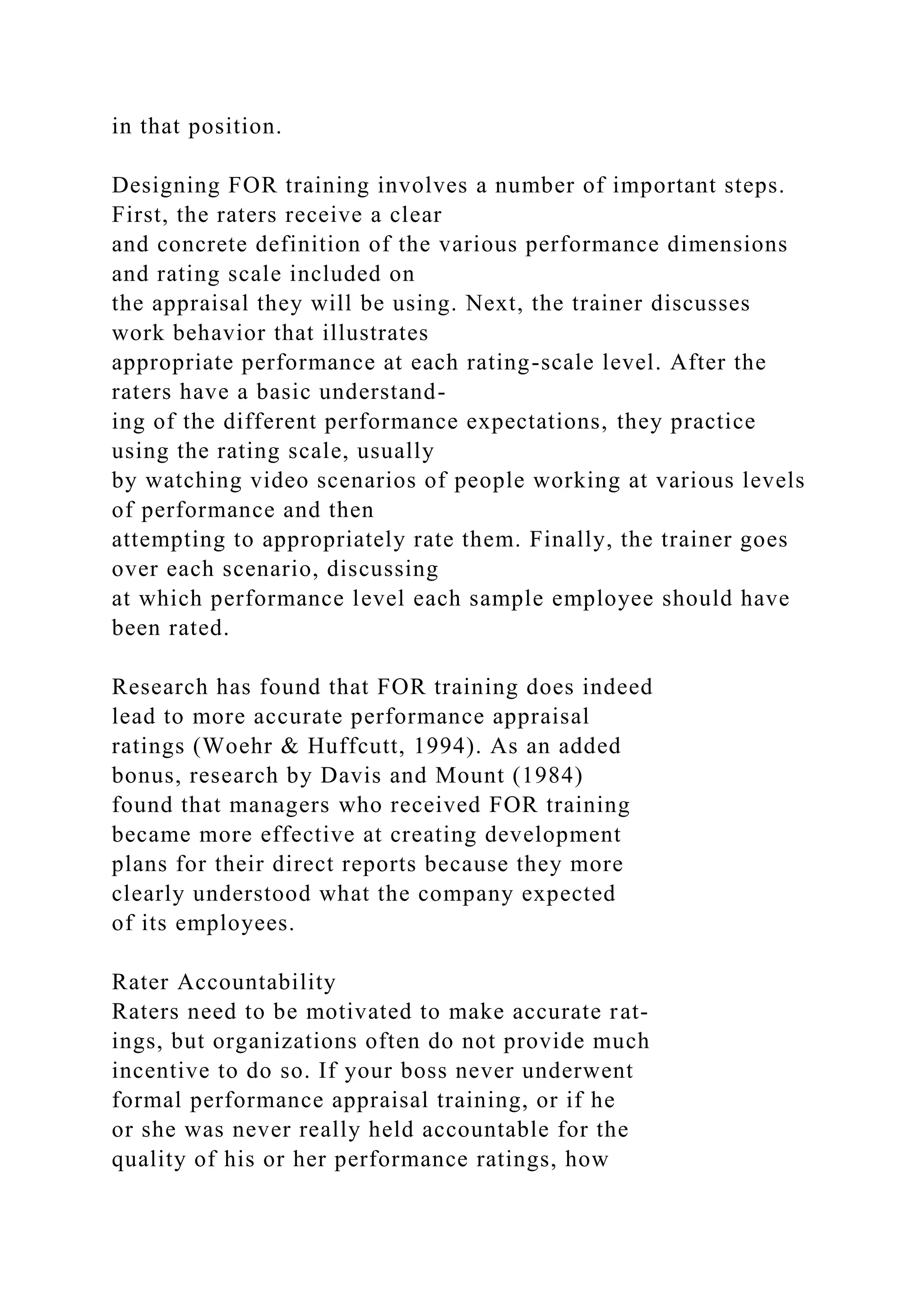
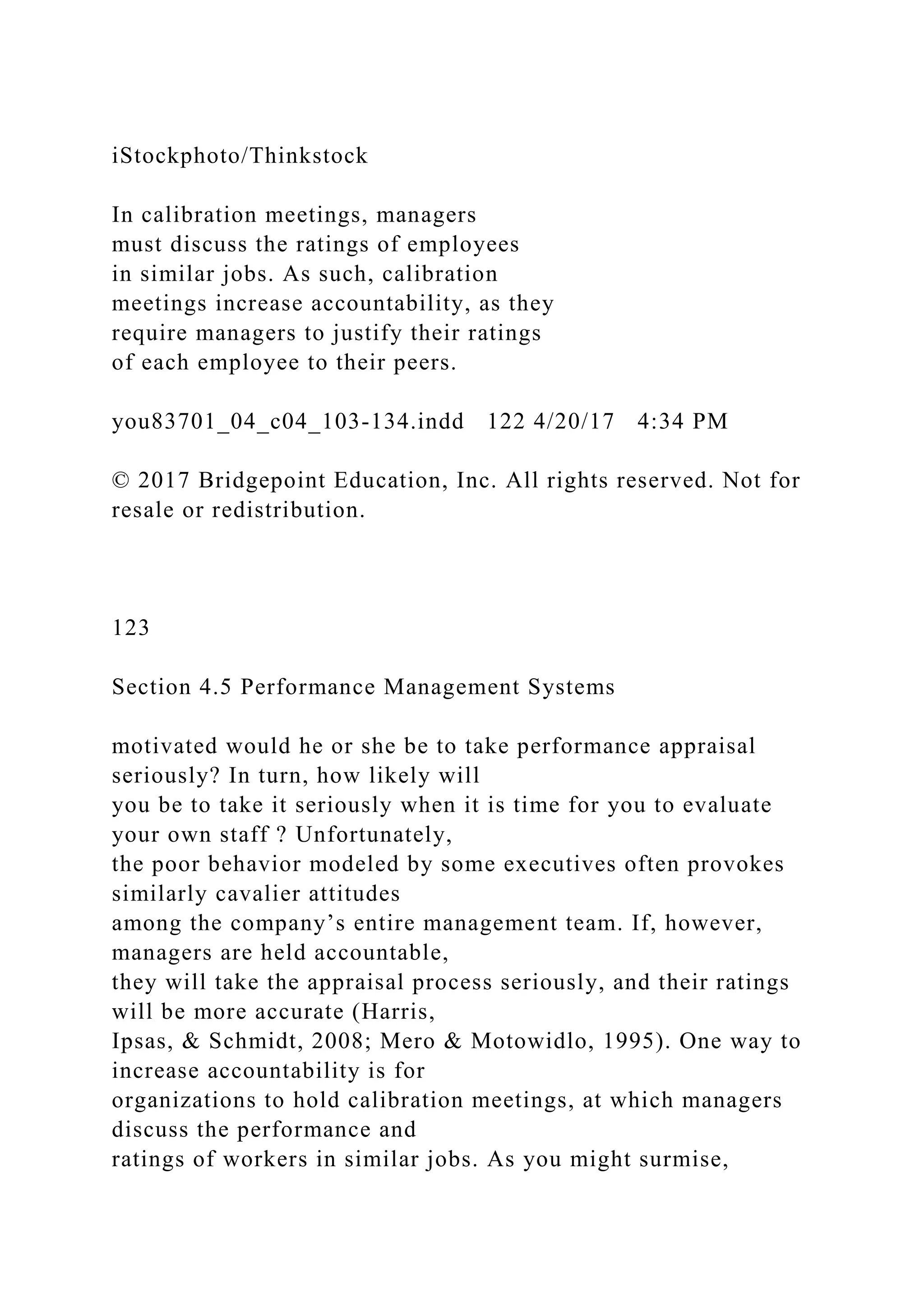

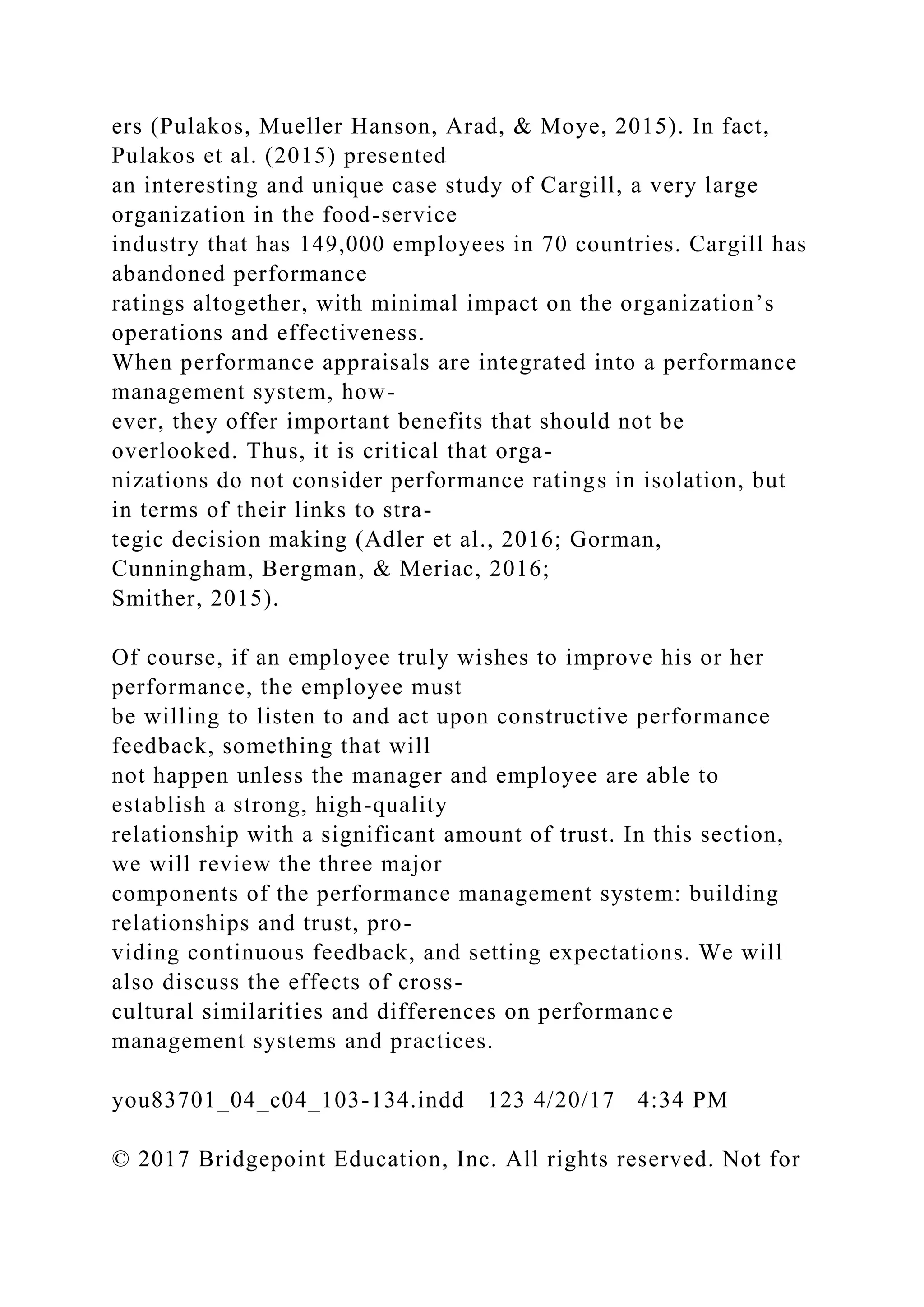
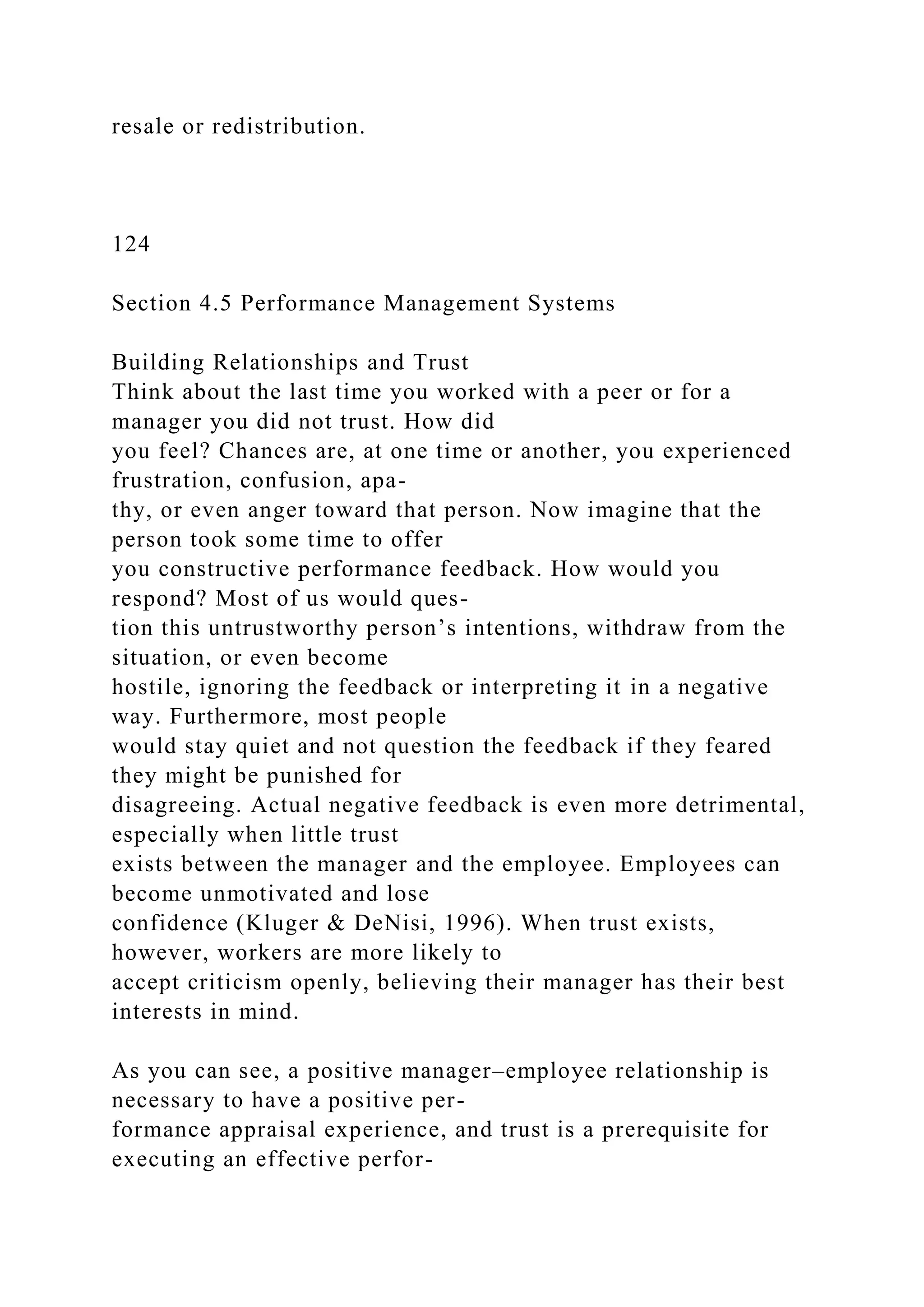
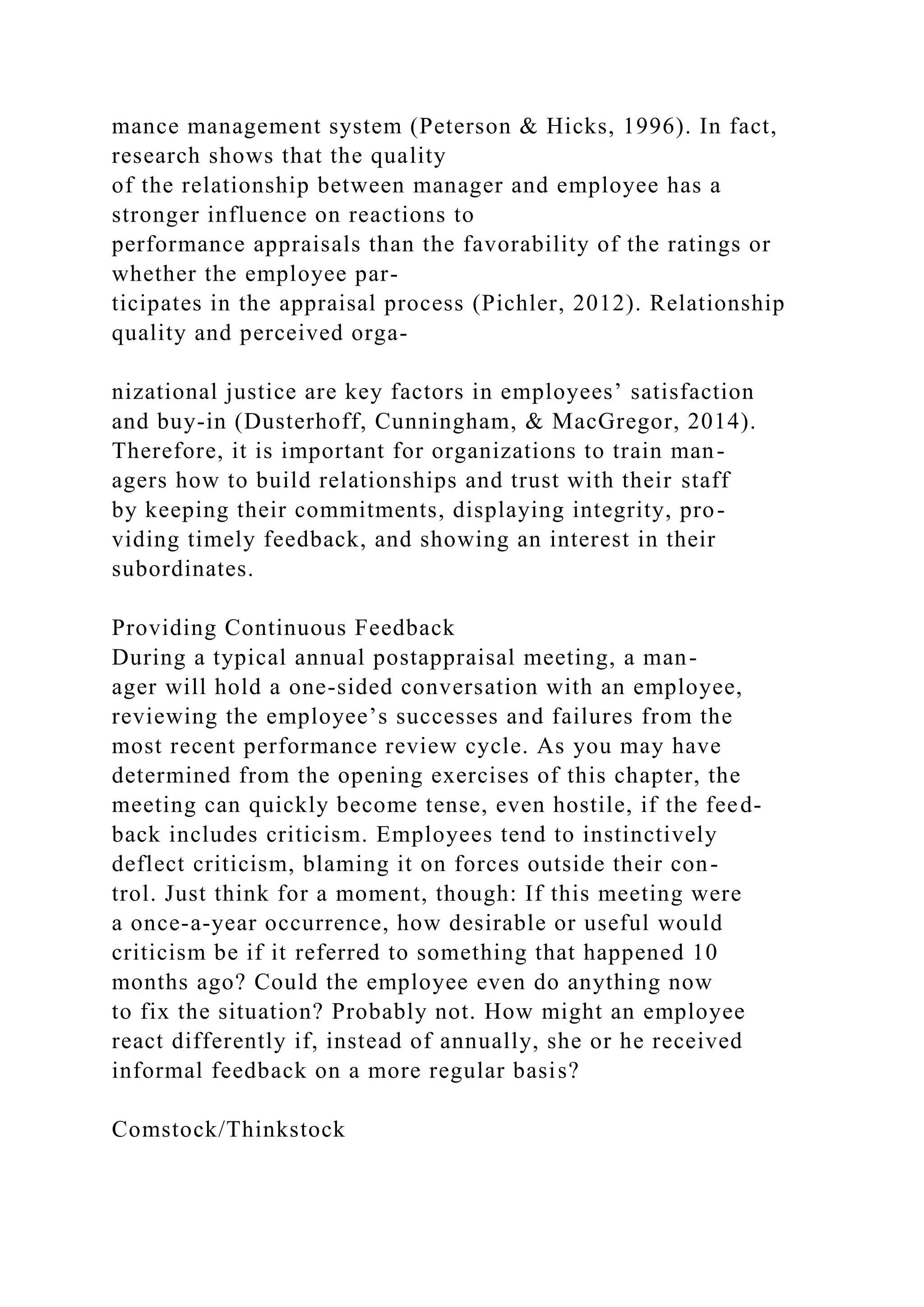
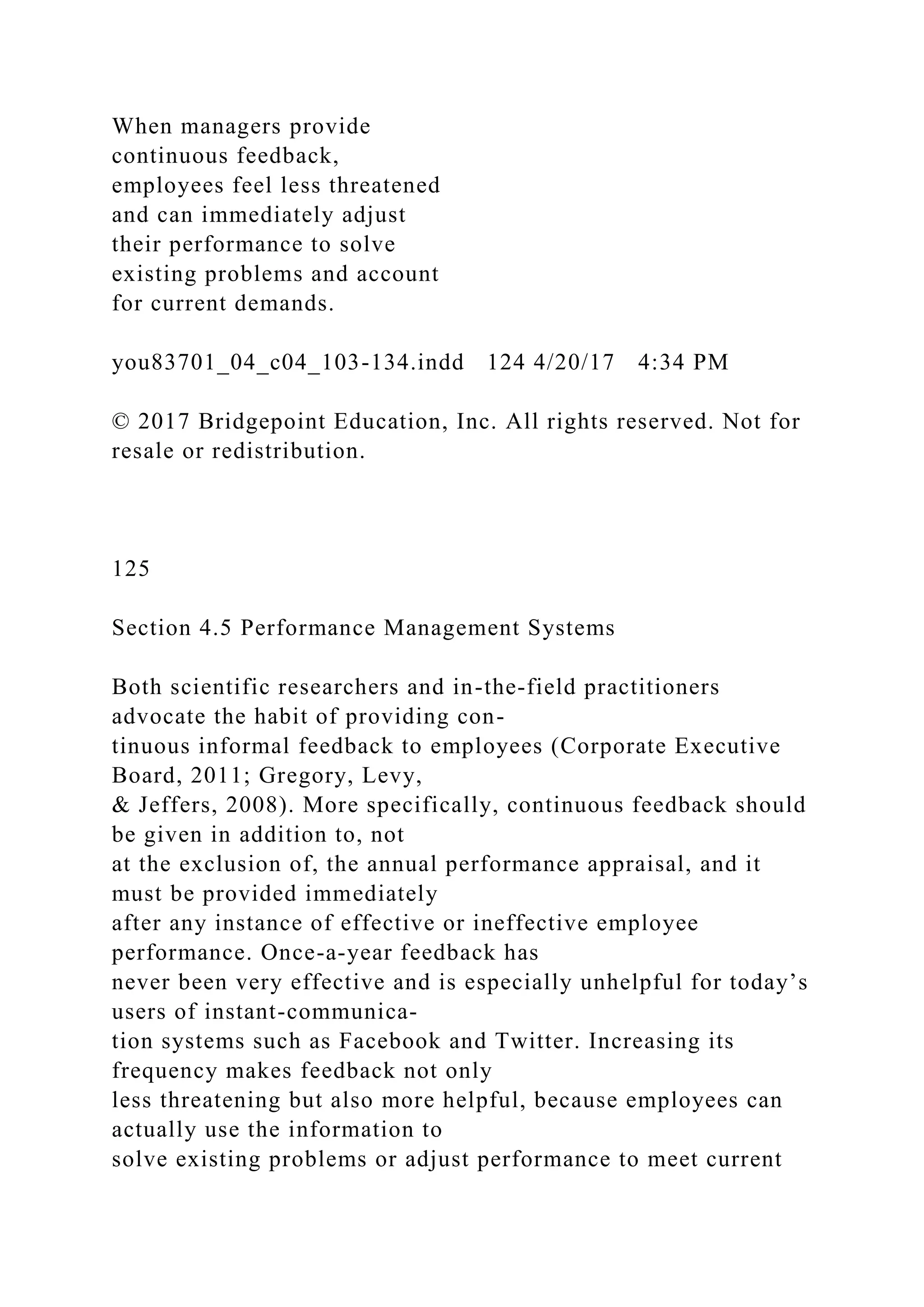
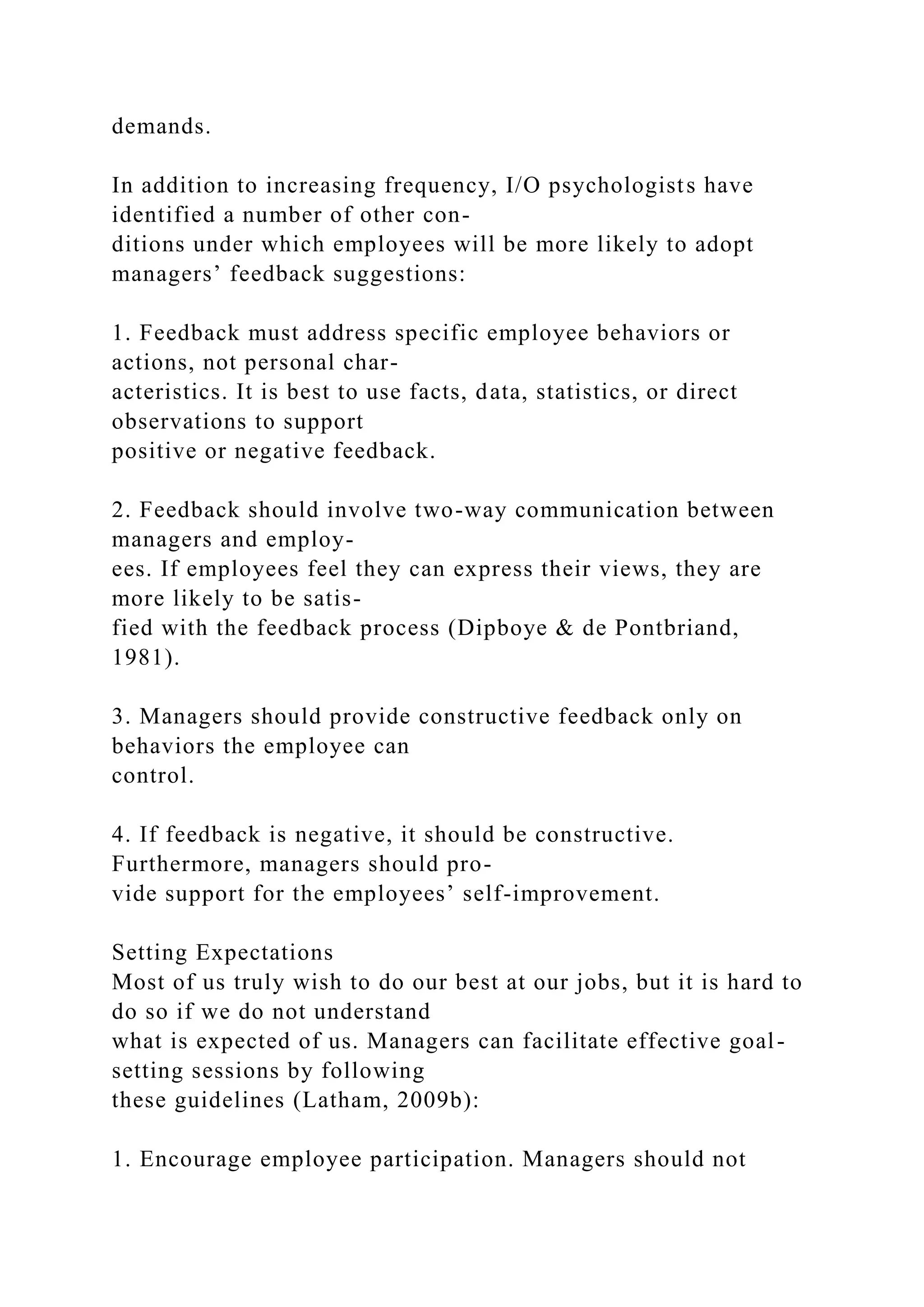
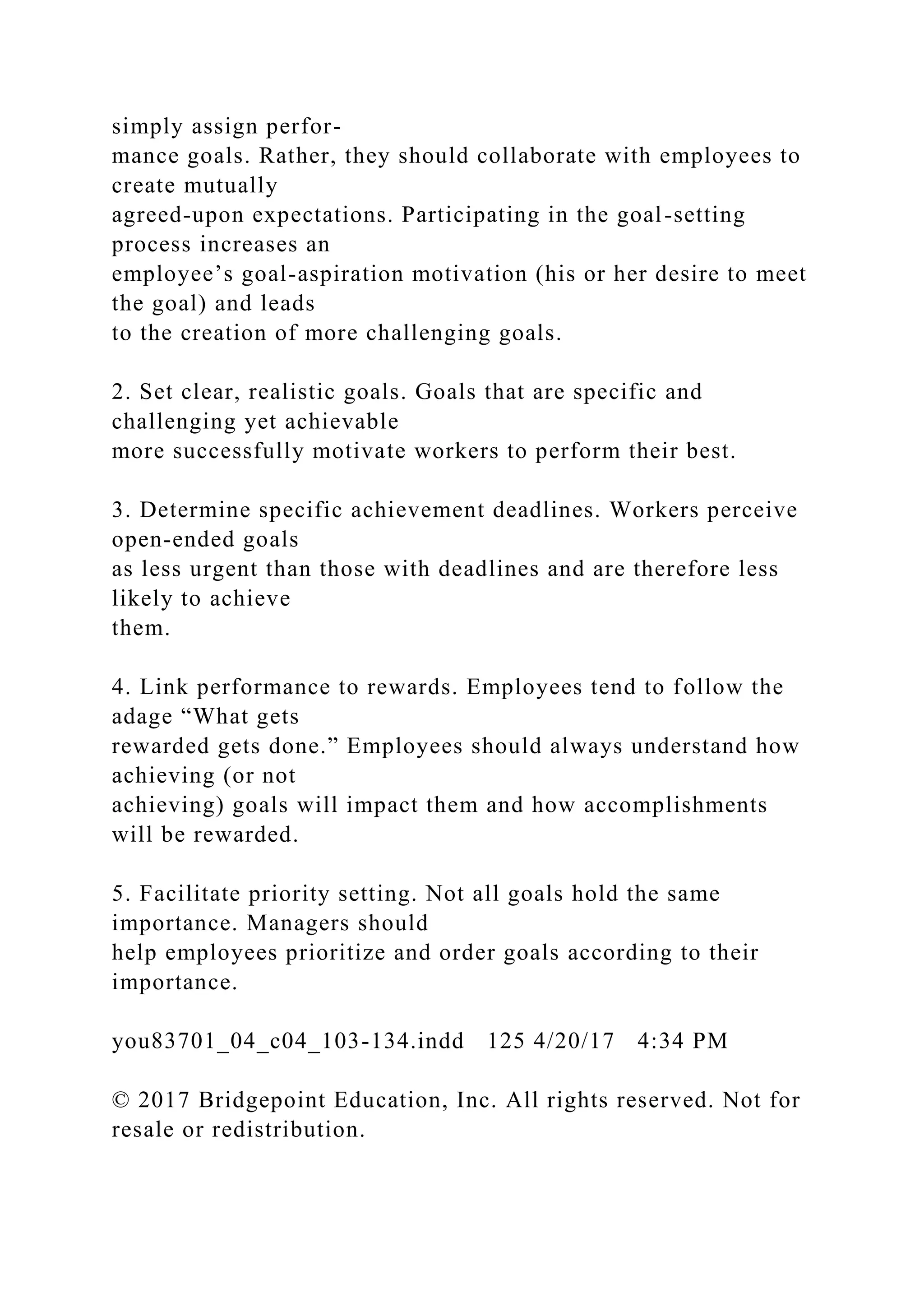
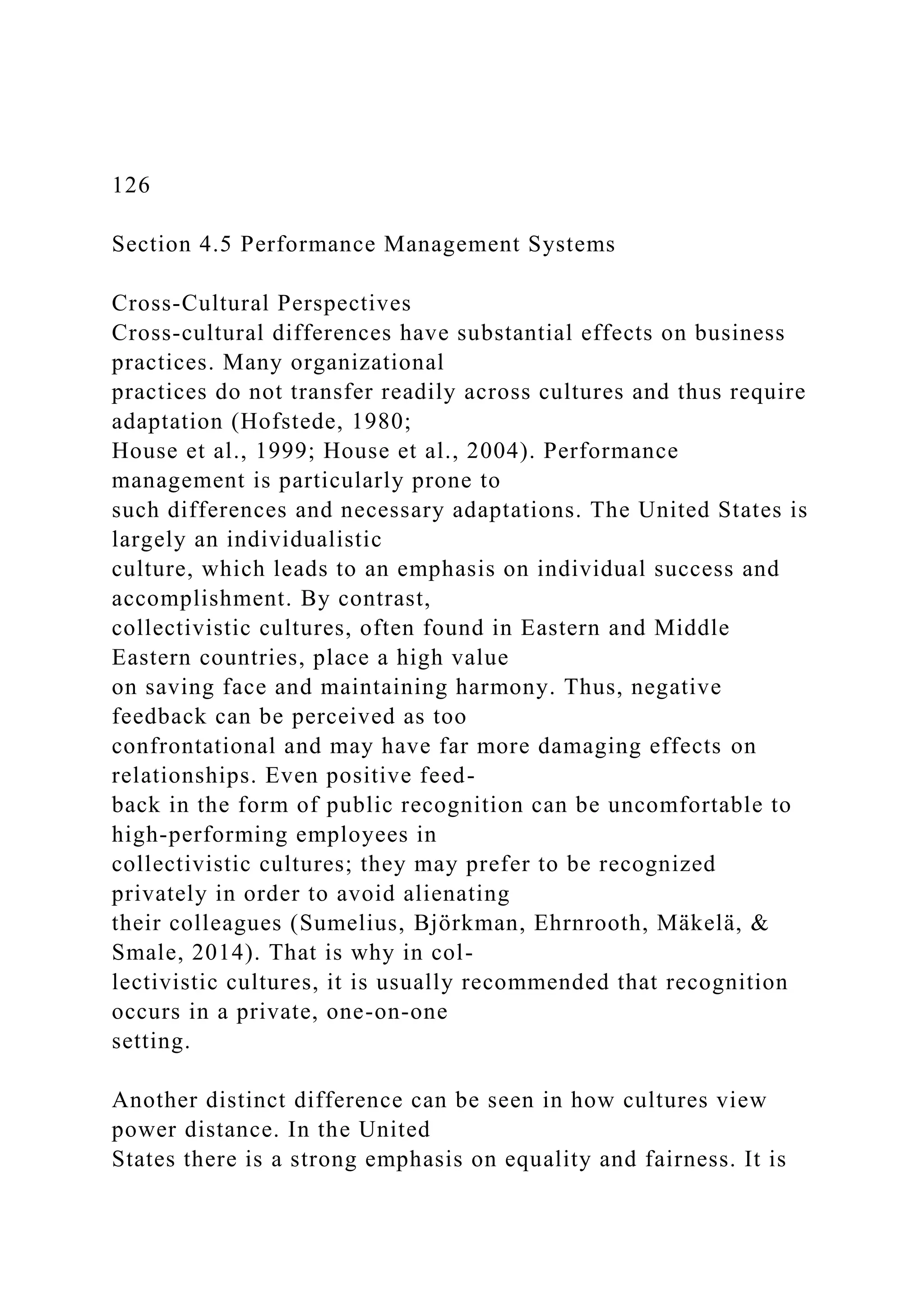

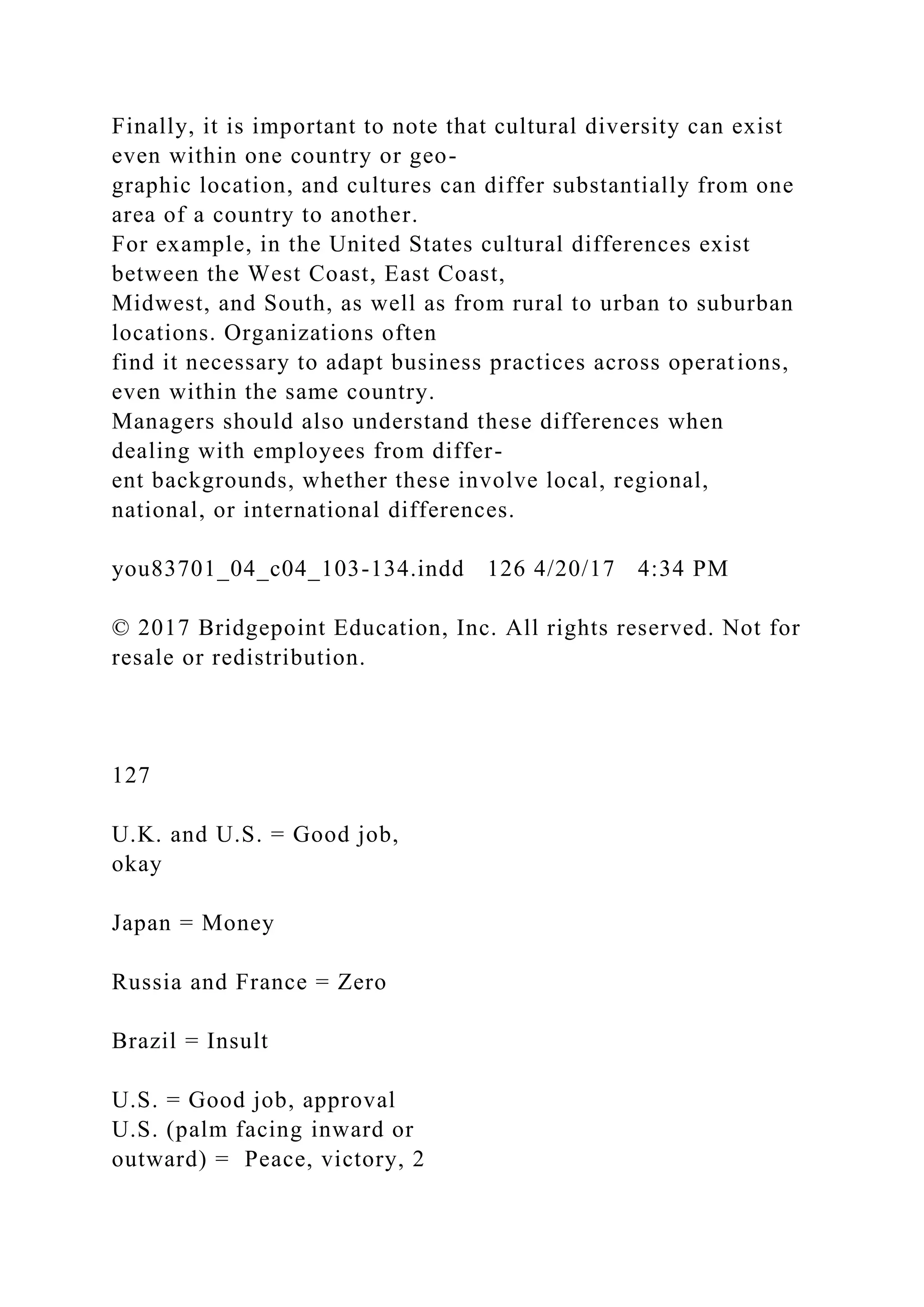
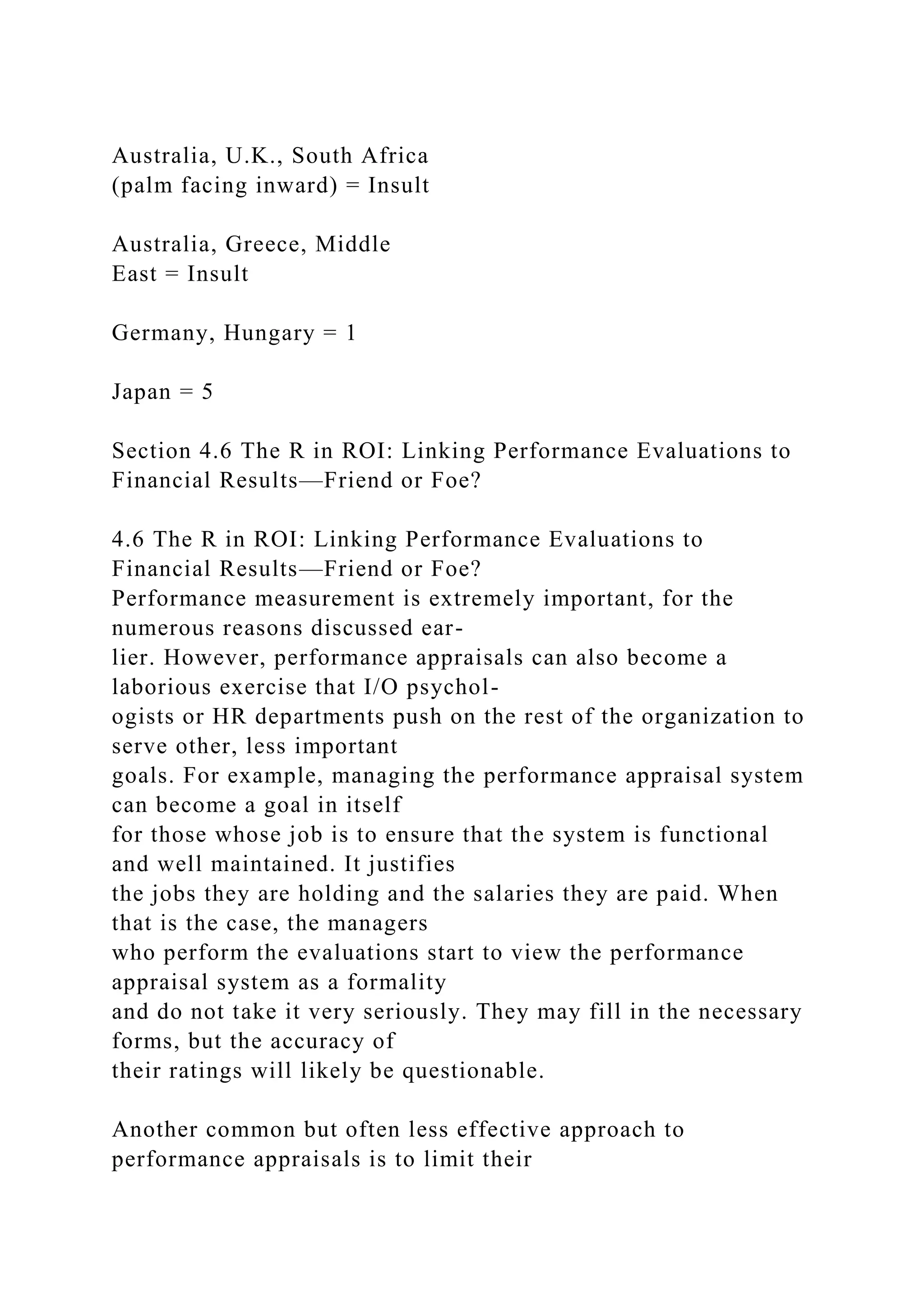
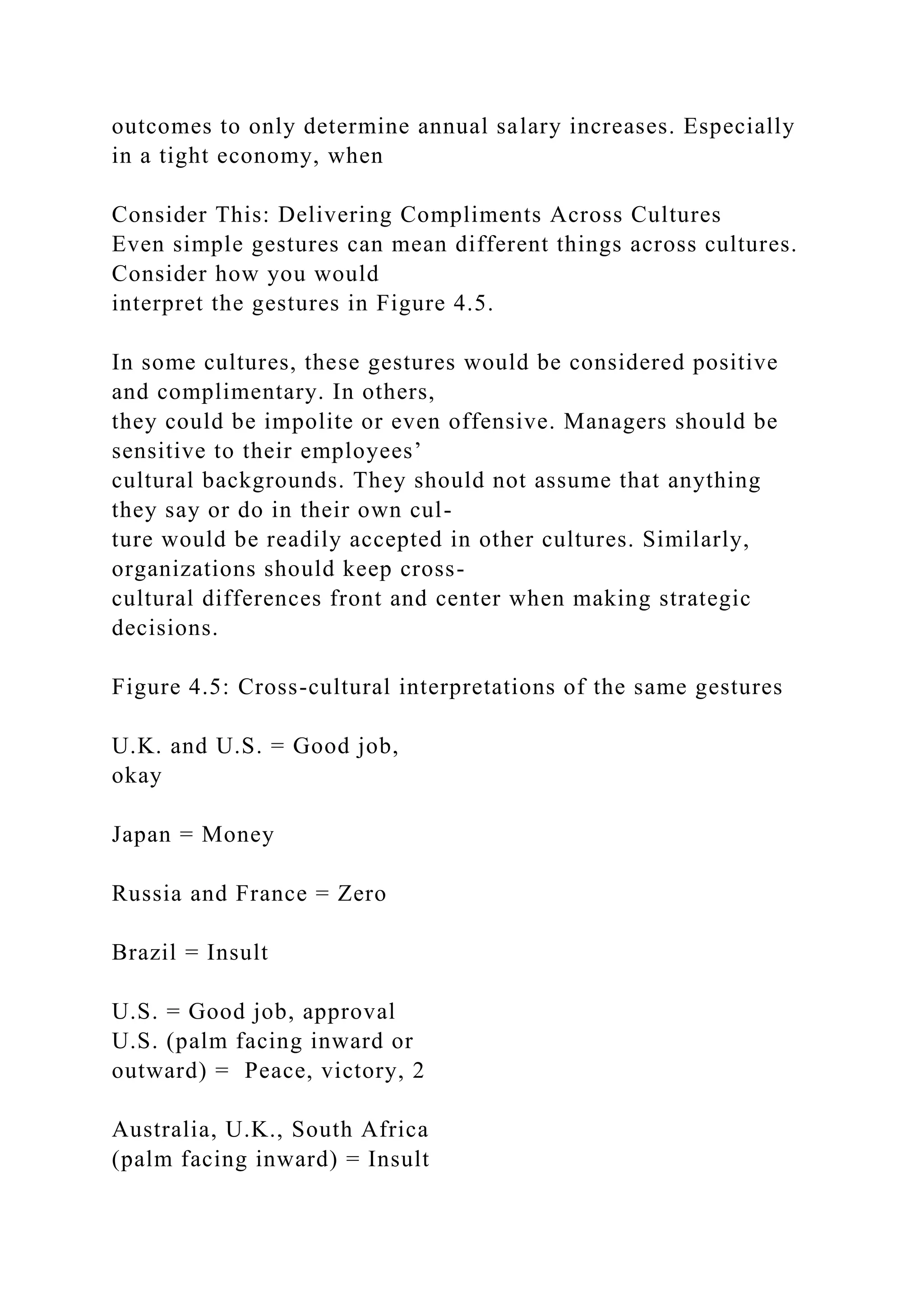
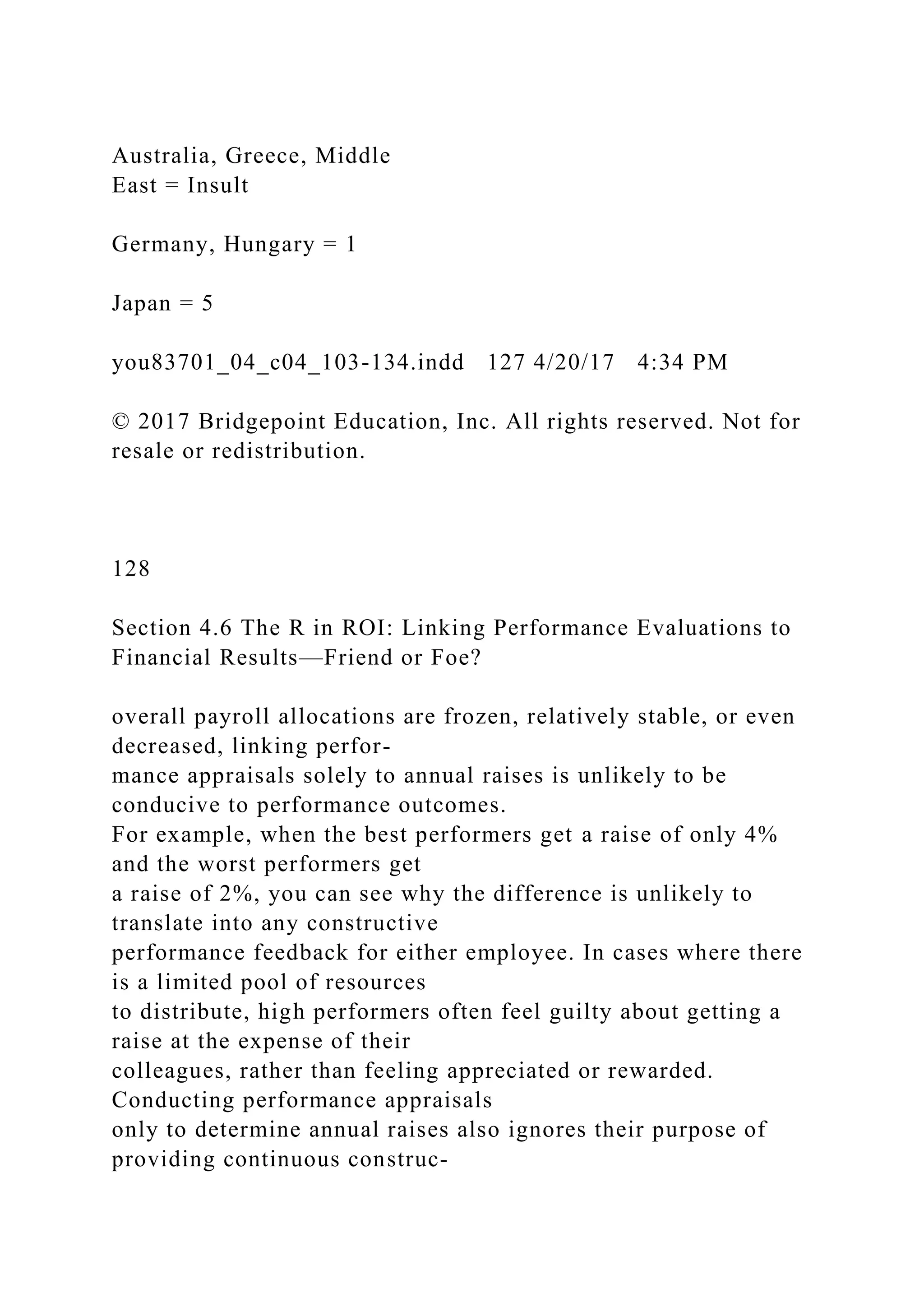
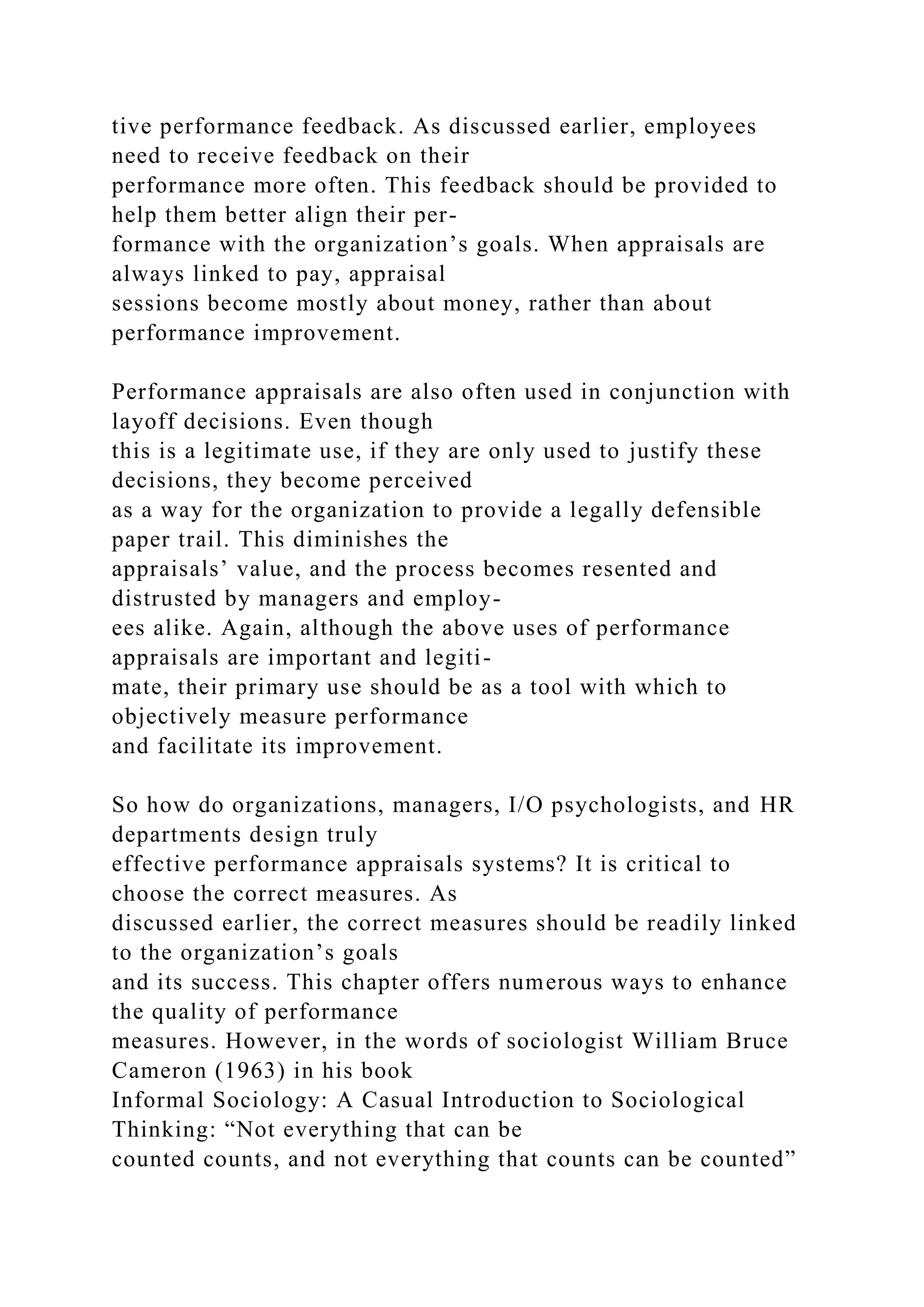
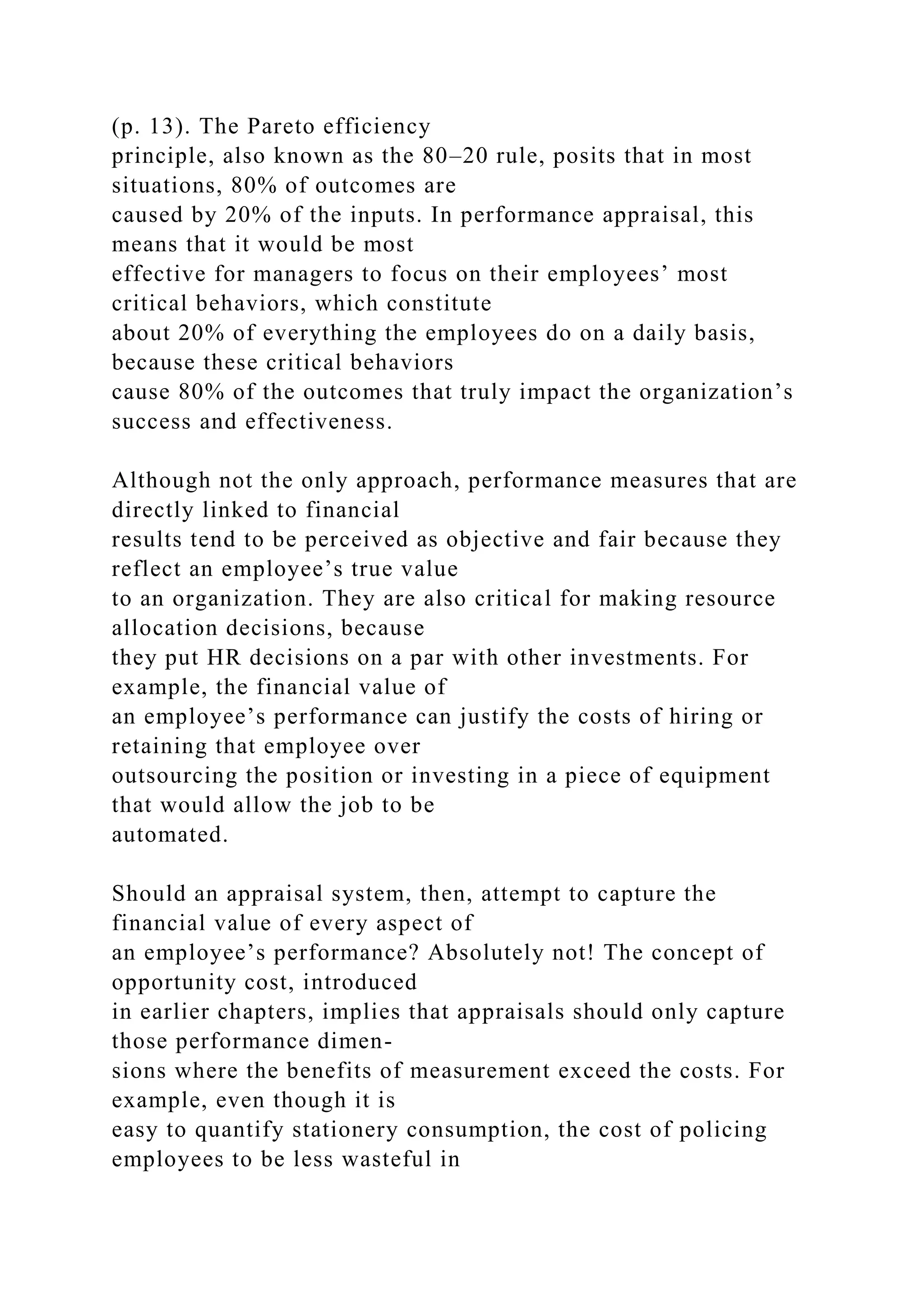
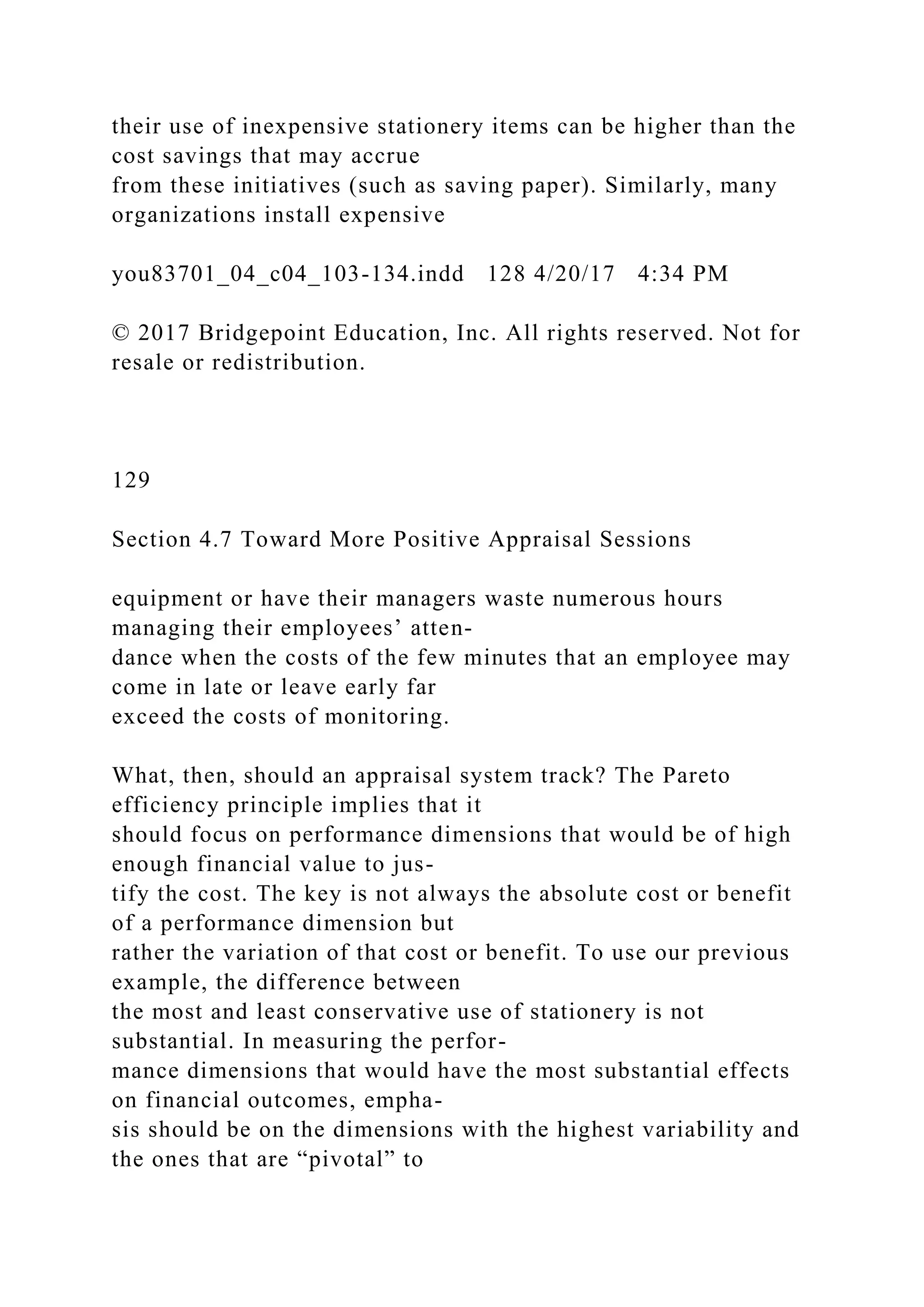
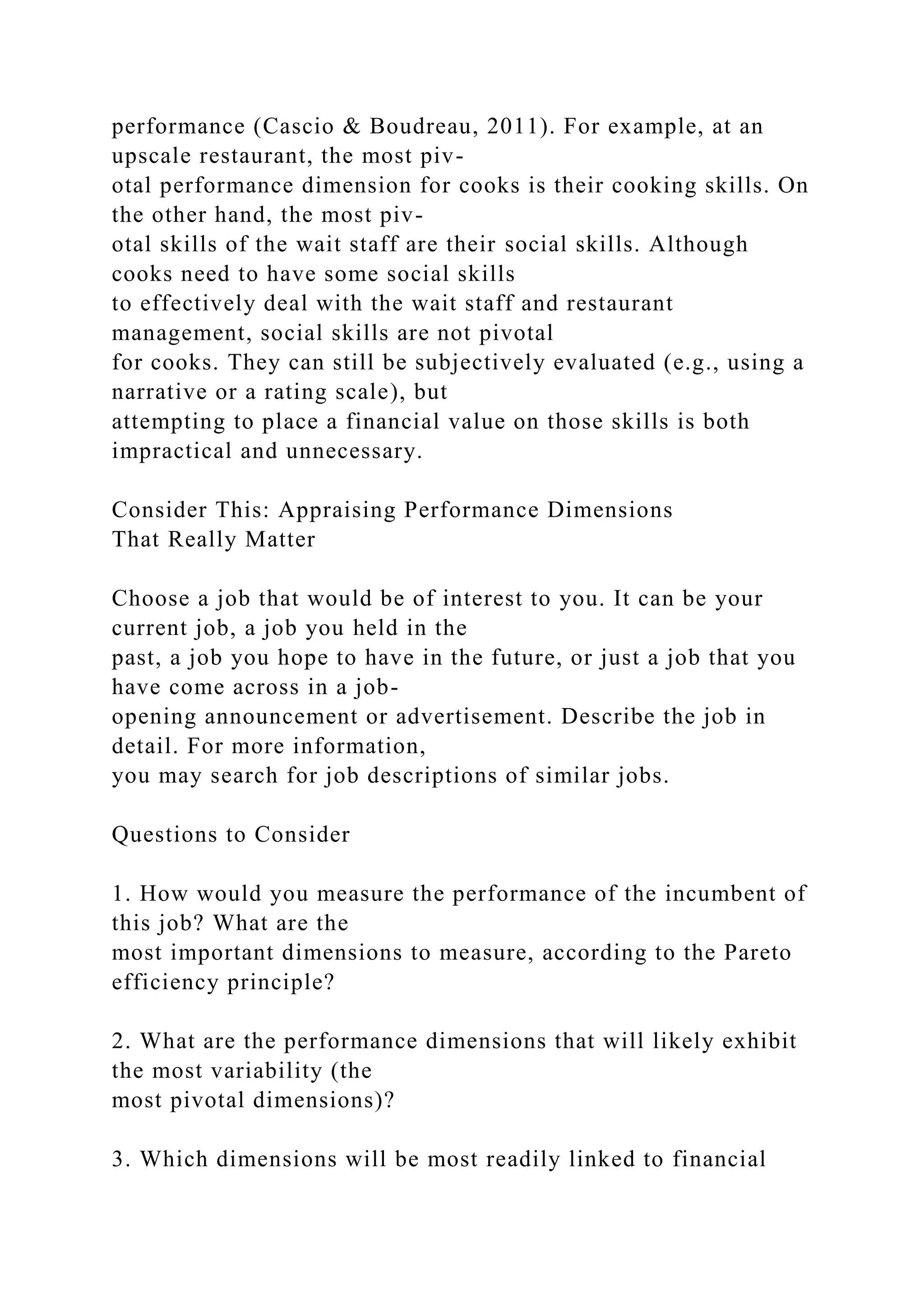
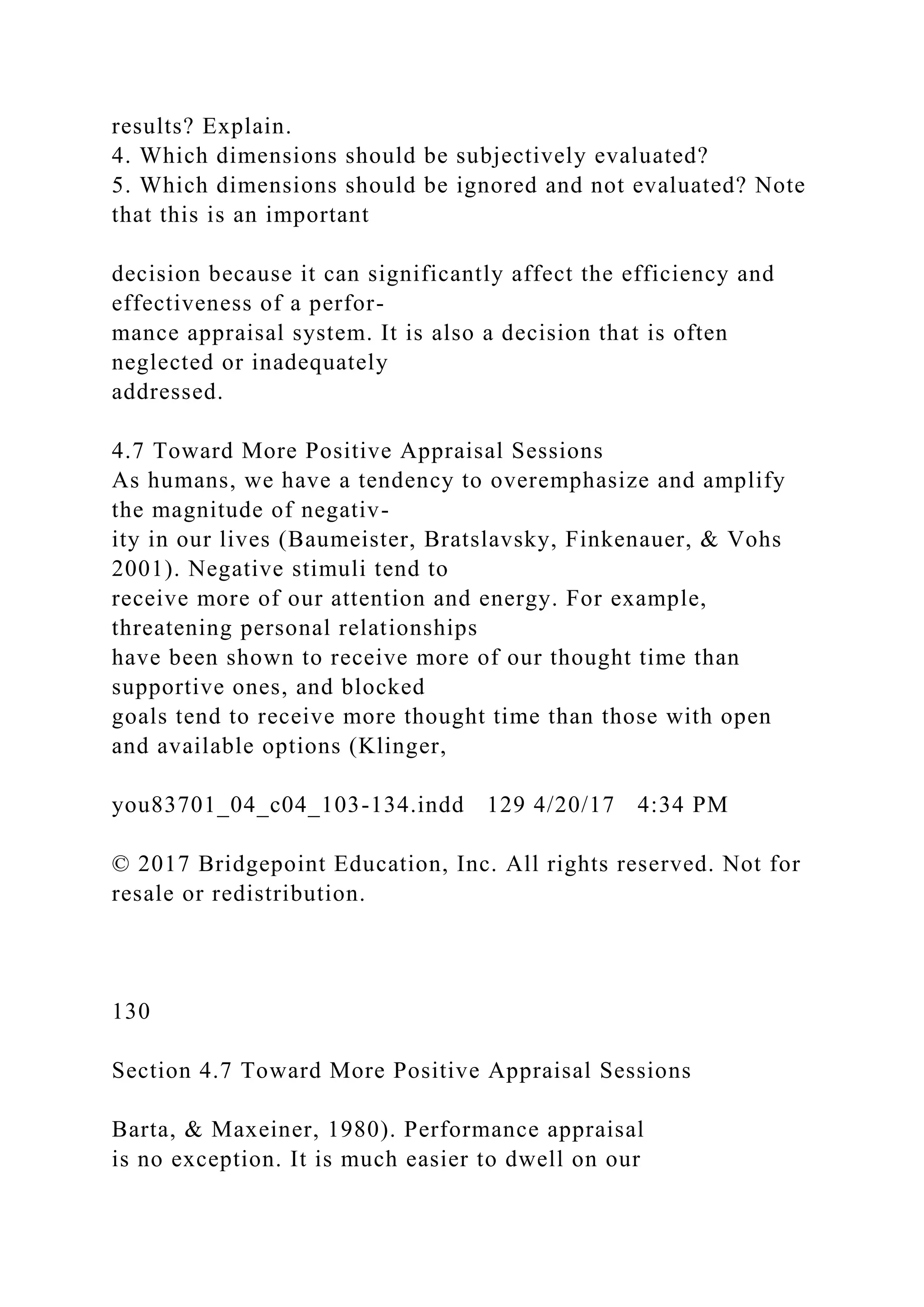
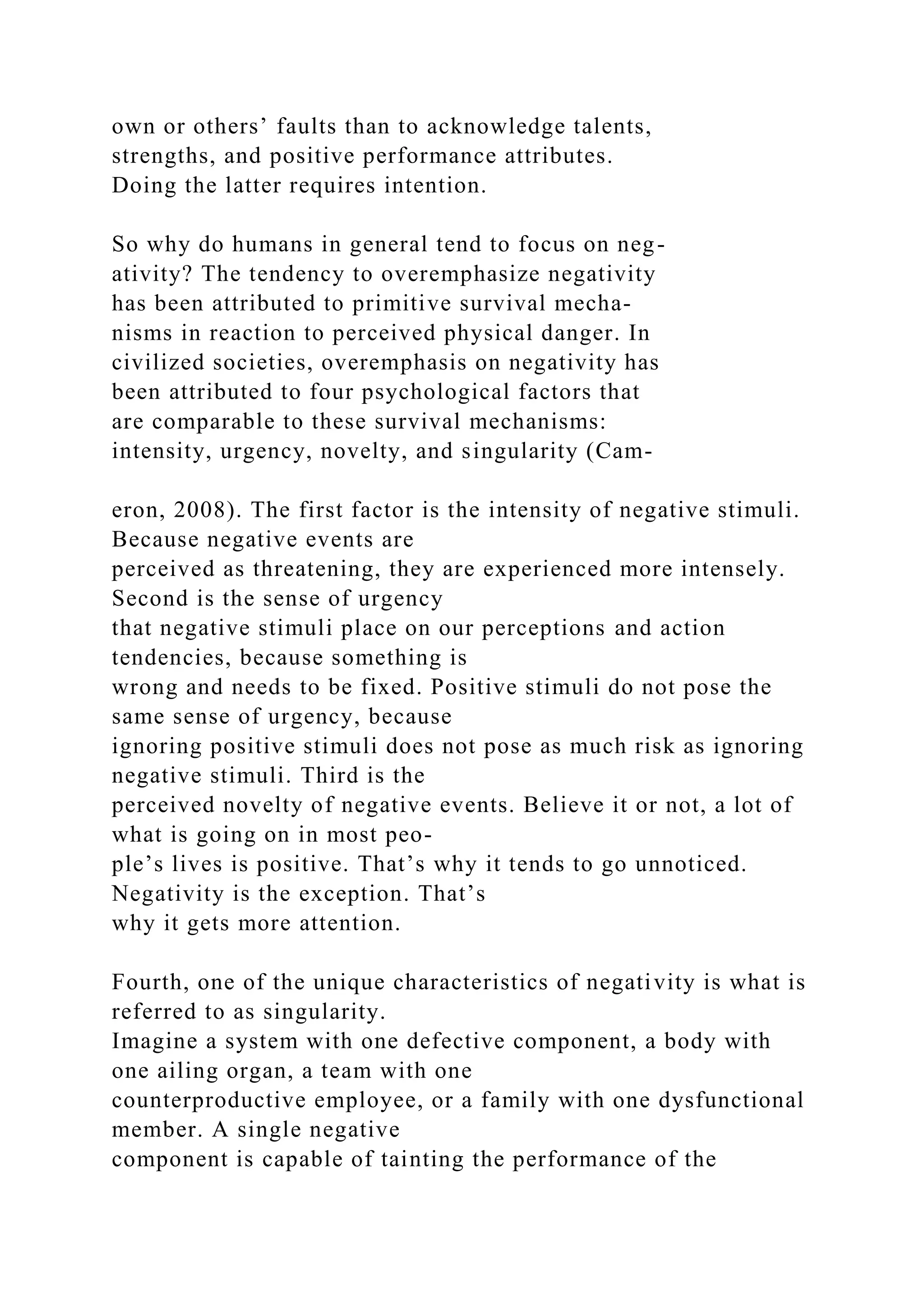
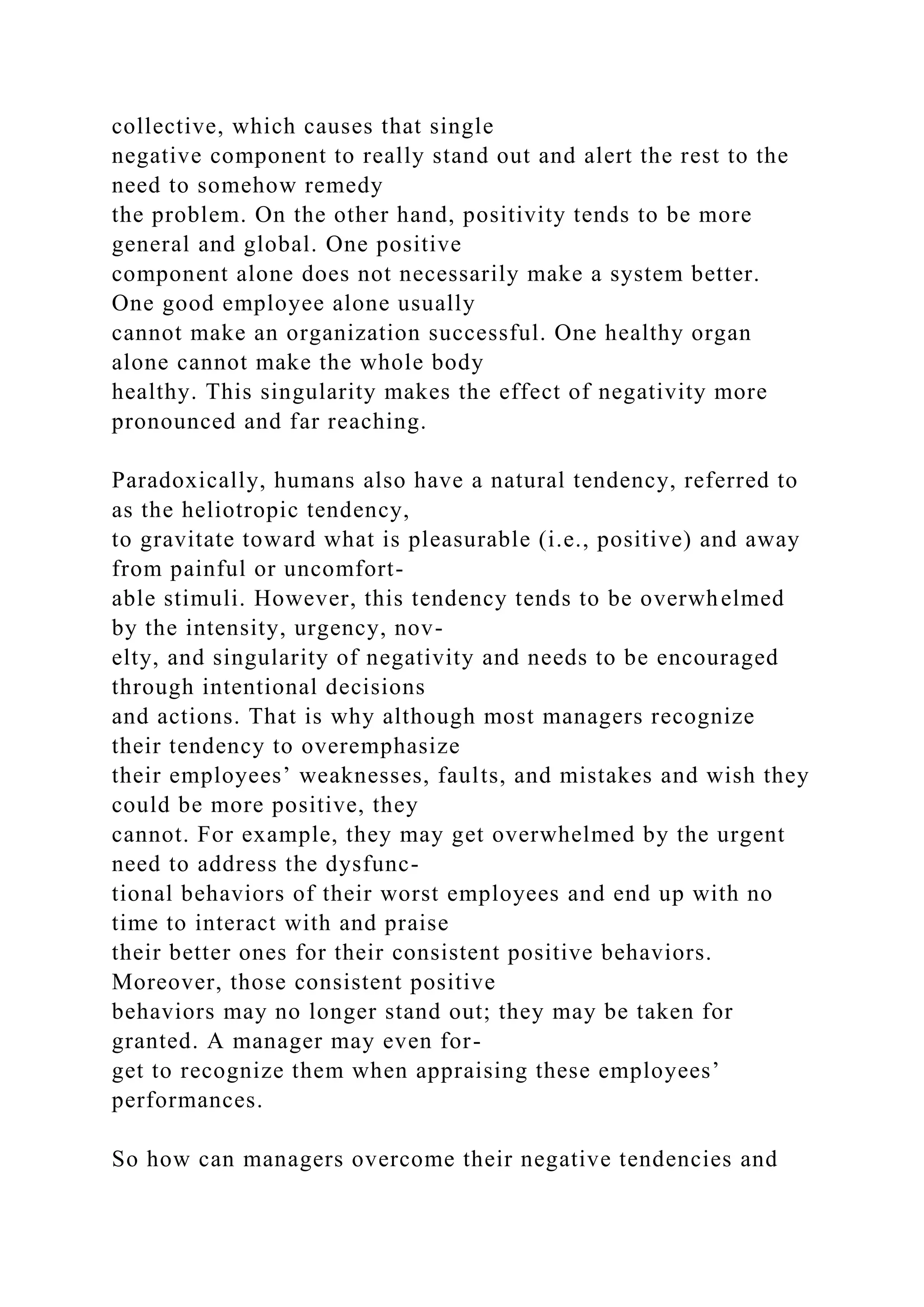
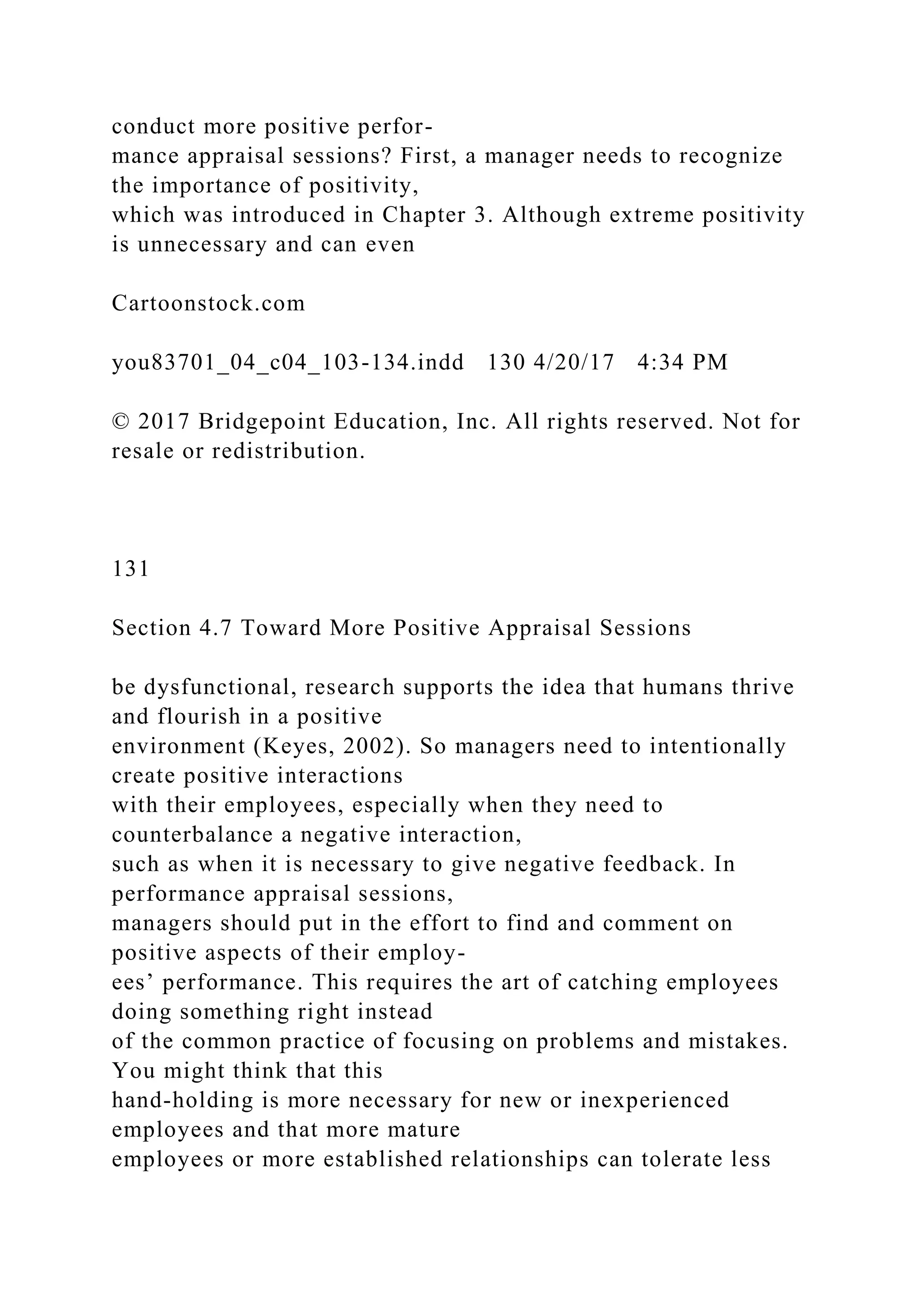
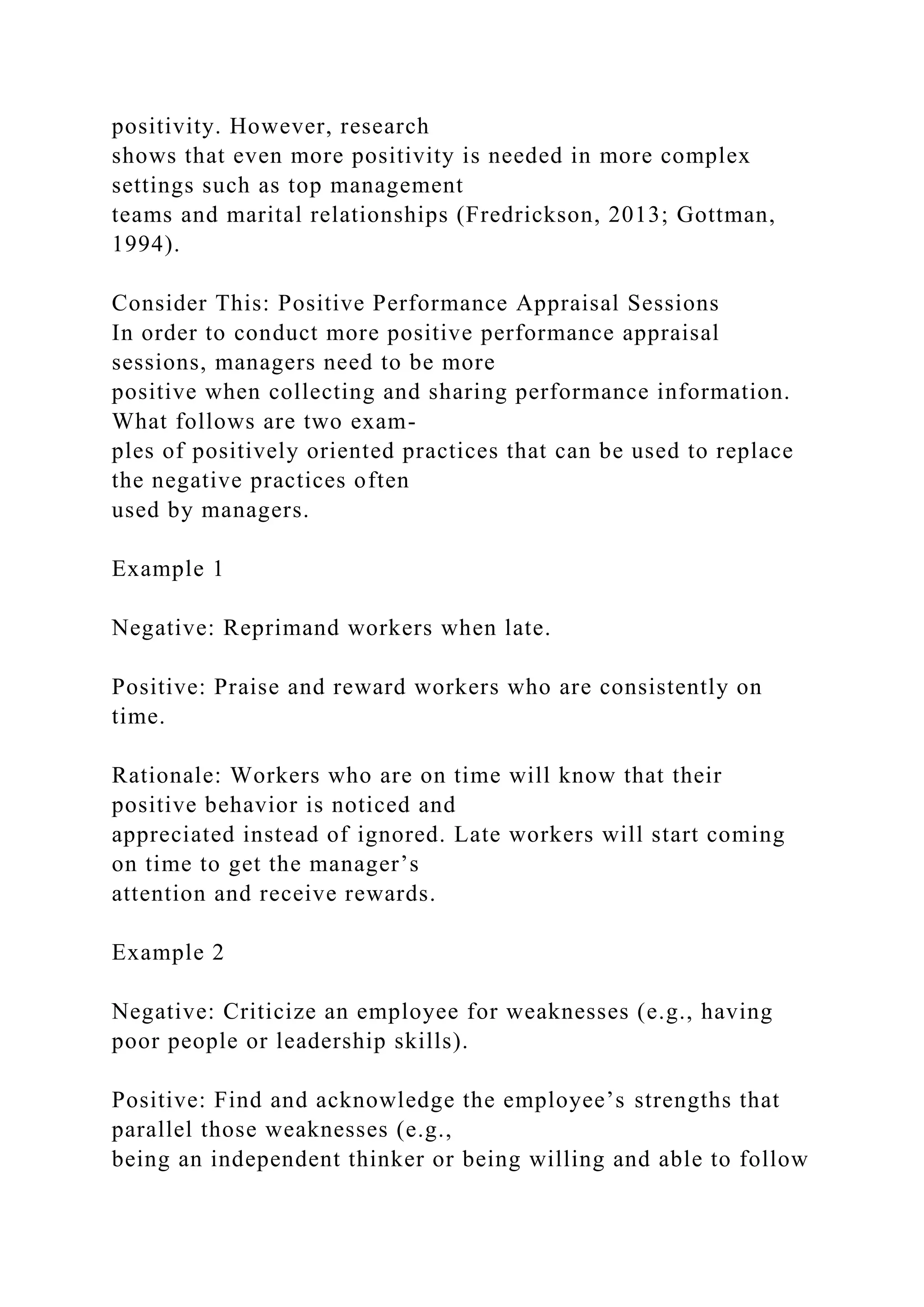



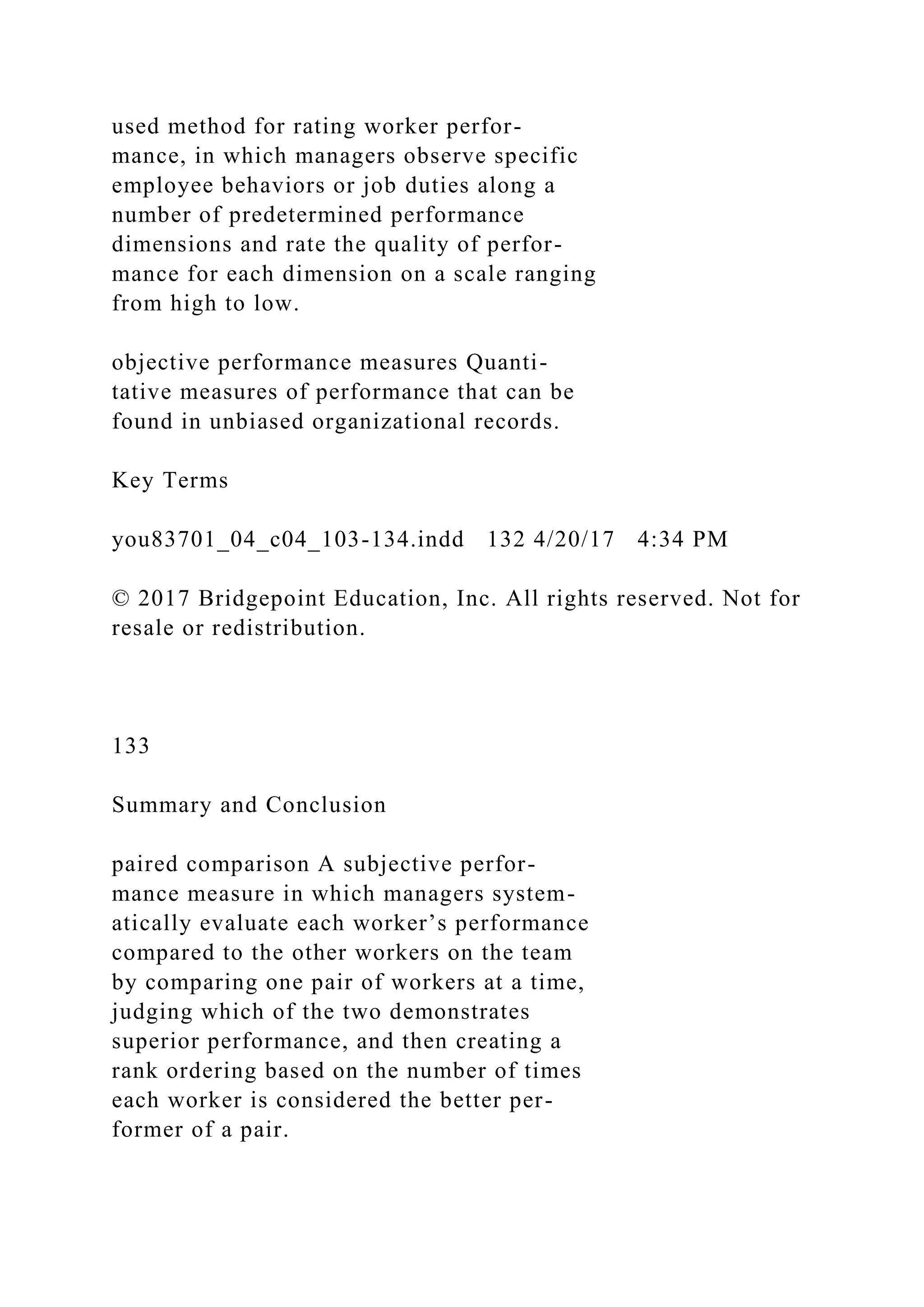
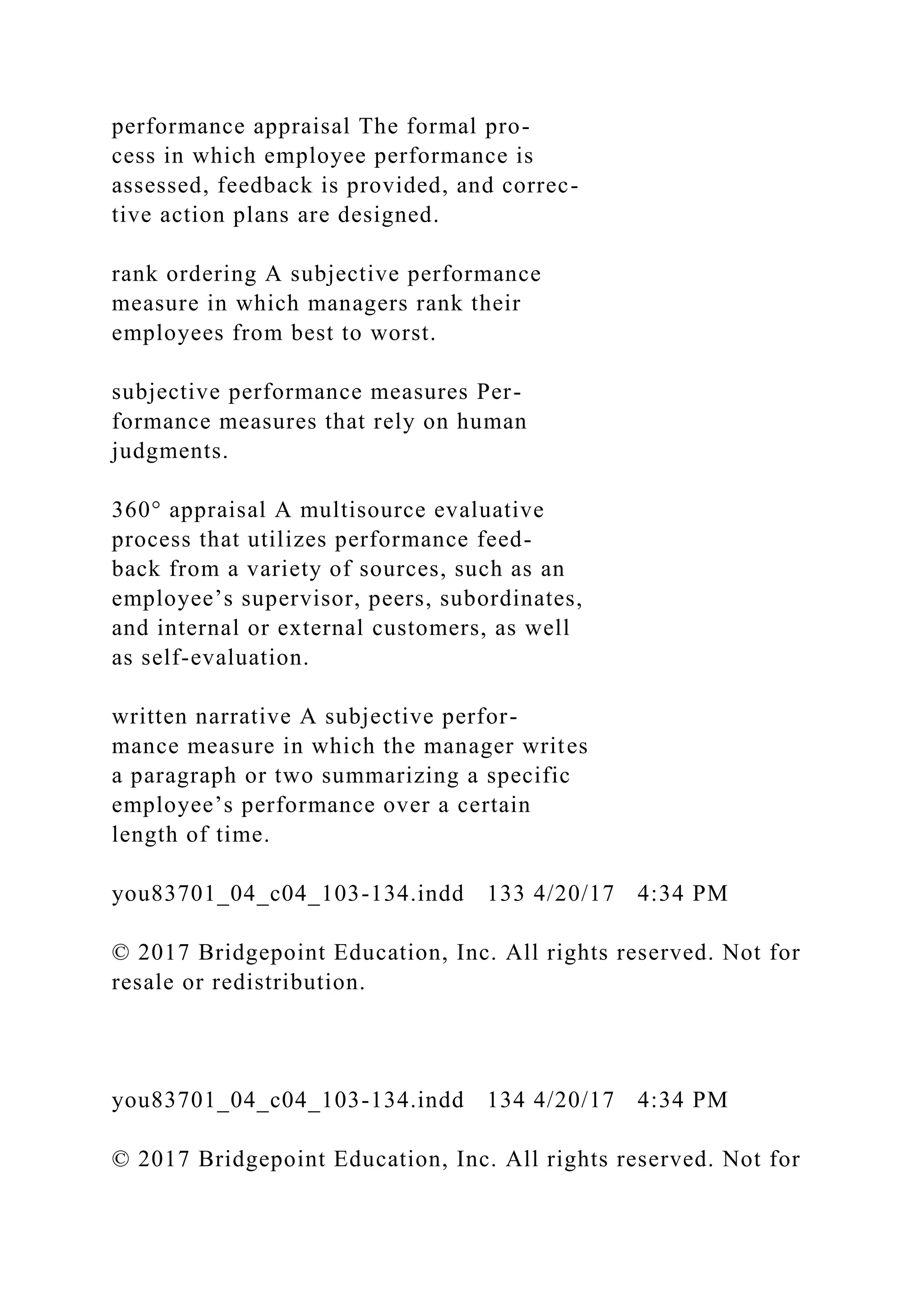
![resale or redistribution.
Multimedia
Dimoff, D. (Producer). (2011). Performance evaluation (Links
to an external site.)Links to an external site. [Video segment].
In D. S. Walko, & B. Kloza (Executive Producers), Managing
your business: Prices, finances, and staffing. Retrieved from
https://fod.infobase.com/OnDemandEmbed.aspx?token=42251&
wID=100753&loid=116118&plt=FOD&w=420&h=315
· The full version of this video is available through the Films
On Demand database in the Ashford University Library. This
video discusses the role of performance reviews, and provides
guidance. This video has closed captioning. It may assist you in
your discussions, Assessment in the Workplace Diversity and
the Organizational Process, this week.
Accessibility Statement (Links to an external site.)Links to an
external site.
Privacy Policy
Marofsky, M., Grote, K. (Writers), Christiansen, L., Dean, W.
(Directors), Christiansen, L., & Hommeyer, T (Producers).
(1991). Understanding our biases and assumptions (Links to an
external site.)Links to an external site. [Video file]. Retrieved
from
https://fod.infobase.com/OnDemandEmbed.aspx?token=2574&w
ID=100753&plt=FOD&loid=0&w=640&h=480&fWidth=660&f
Height=530
· The full version of this video is available through the Films
On Demand database in the Ashford University Library. This
video discusses the nature of biases and preconceptions, and it
stresses the need to examine one’s own thinking about “us” and
“them.” This video has closed captioning. It may assist you in
your discussions, Assessment in the Workplace Diversity and
the Organizational Process, this week.
Accessibility Statement (Links to an external site.)Links to an](https://image.slidesharecdn.com/673foundationsofpsychologicaltestingnoelhendrick-221108012202-58ccfef5/75/673Foundations-of-Psychological-TestingNoel-Hendrick-docx-166-2048.jpg)
![external site.
Privacy Policy (Links to an external site.)Links to an external
site.
Preparing for my appraisal: Cutting edge communication
comedy series (Links to an external site.)Links to an external
site. [Video file]. (2016). Retrieved from
https://fod.infobase.com/OnDemandEmbed.aspx?token=111702
&wID=100753&plt=FOD&loid=0&w=640&h=360&fWidth=660
&fHeight=410
· The full version of this video is available through the Films
On Demand database in the Ashford University Library. This
video shows several examples of different work appraisals,
showing the “dos” and “don’ts” and providing helpful tips. This
video has closed captioning. It may assist you in your
discussions, Assessment in the Workplace Diversity and the
Organizational Process, this week.
Accessibility Statement (Links to an external site.)Links to an
external site.
Privacy Policy (Links to an external site.)Links to an external
site.
Twitter: Login (Links to an external site.)Links to an external
site. (2017). Retrieved from https://twitter.com/login
Accessibility Statement (Links to an external site.)Links to an
external site.
Privacy Policy (Links to an external site.)Links to an external
site.
Twitter Support (Links to an external site.)Links to an external
site.(2017). Retrieved from
https://support.twitter.com/articles/215585#
Accessibility Statement (Links to an external site.)Links to an
external site.
Privacy Policy (Links to an external site.)Links to an external
site.
What your boss wants: Business (Links to an external
site.)Links to an external site. [Video file]. (2013). Retrieved
from](https://image.slidesharecdn.com/673foundationsofpsychologicaltestingnoelhendrick-221108012202-58ccfef5/75/673Foundations-of-Psychological-TestingNoel-Hendrick-docx-167-2048.jpg)
![https://fod.infobase.com/OnDemandEmbed.aspx?token=94142&
wID=100753&plt=FOD&loid=0&w=640&h=360&fWidth=660&
fHeight=410
· The full version of this video is available through the Films
On Demand database in the Ashford University Library. This
video gives an insider’s perspective on what makes a good job
application, a successful interview, what to expect in the
induction process, and the types of assessments at the end of the
probationary period. This video has closed captioning. It may
assist you in your discussions, Assessment in the Workplace
Diversity and the Organizational Process, this week.
Accessibility Statement (Links to an external site.)Links to an
external site.
Privacy Policy (Links to an external site.)Links to an external
site.
Supplemental Material
Rosser-Majors, M. (2017). Week Two Study Guide. Ashford
University.
Recommended Resource
Multimedia
Bandura, A., Jordan, D. S. (Writers), & Davidson, F. W.
(Producer). (2003). Modeling and observational learning – 4
processes [Video segment]. In Bandura’s social cognitive
theory: An introduction. Retrieved from
https://fod.infobase.com/OnDemandEmbed.aspx?token=44898&
wID=100753&loid=114202&plt=FOD&w=420&h=315&fWidth=
440&fHeight=365
· The full version of this video is available through the Films
On Demand database in the Ashford University Library. In this
video, Albert Bandura explains the four processes of
observational learning. He also describes the Bobo doll
experiment on the social modeling of aggression. This video has
closed captioning. It may assist you in your discussions,
Assessment in the Workplace Diversity and the Organizational
Process, this week.](https://image.slidesharecdn.com/673foundationsofpsychologicaltestingnoelhendrick-221108012202-58ccfef5/75/673Foundations-of-Psychological-TestingNoel-Hendrick-docx-168-2048.jpg)
